
Noam Chomsky: A Life of Dissent
by
Robert F. Barsky
Published 2 Feb 1997
This book is therefore filled with names of organizations, publications, and individual thinkers that have not been adequately discussed in relation to Chomsky's political work: the organizations include the left wing of Avukah, Black Power, the Council Communists, Freie Arbeiter Stimme, Hashomer Hatzair, the Independent Labor Party, the International Confederation for Disarmament and Peace (ICDP), the League for ArabJewish Cooperation, the League for Arab-Jewish Rapprochement, the Marlenites, Resist, workers' control; among the journals I mention are International Council Correspondence, Living Marxism, Avukah Student Action, and Politics; and some of the individuals I look at are Chomsky contemporaries Yehoshua Bar-Hillel, Ken Coates, David Dellinger, Peggy Duff, Mitchell Goodman, Zellig Harris, Edward file:///D|/export1/www.netlibrary.com/nlreader/nlreader.dll@bookid=9296&filename=page_6.html [4/16/2007 2:28:52 PM] Document Page 7 S. Herman, Jim Kelman, Denise Levertov, Robert Lowell, Norman Mailer, Paul Mattick, Raymond Williams, and Howard Zinn, to name but a few. While the work of another set of Chomsky contemporariesSam Abramovitch, Norman Epstein (whom Chomsky met fifteen years ago for the first time), Karl Korsch, Christopher Lasch, Dwight Macdonald (with whom Chomsky had contact in the 1960s), Seymour Melman (with whom Chomsky had casual contact early on, and who became a close friend), Karl Polanyi, and Arthur Rosenberghad no direct impact upon Chomsky's endeavors, it does provide some important insight into his thinking, and is therefore explored here.
…
This was one factor leading to the formation of Resist, which, Chomsky remembers, "very quickly became involved in other forms of resistance to illegitimate authority" (31 Mar. 1995). One of the activities in which Resist became involved was the March on the Pentagon. The march is described by Norman Mailer in his book The Armies of the Night: History as a Novel, The Novel as History. According to Mailer, it all began in September of 1967, when he received a phone call from Mitchell Goodman, a novelist who was married to poet and fellow activist Denise Levertov. Goodman had led antiwar protests in the past, and was on this day calling to urge Mailer to participate in Resist.
…
We will, in a clear, simple ceremony, make concrete our affirmation of support for these young men who are the spearhead of direct resistance to the war and all of its machinery.... [Signed] Mitchell Goodman, Henry Braun, Denise Levertov, Noam Chomsky, William Sloane Coffin, Dwight Macdonald. NOTE: Among the hundreds already committed to this action are Robert Lowell, Norman Mailer, Ashley Montagu, Arthur Waskow, and professors from most of the major colleges and universities in the East. (qtd. in Mailer 59-60) The resistance-group representatives were to turn in the draft cards, and then Mitchell Goodman, Reverend William Sloane Coffin, Dr. Benjamin Spock, and seven others would give speeches; the marchers would next make their way to the Office of the Attorney in the Department of Justice Building, where they would inform the attorney general that they were planning to assist draft dodgers.

Test Gods: Virgin Galactic and the Making of a Modern Astronaut
by
Nicholas Schmidle
Published 3 May 2021
You may not make this e-book publicly available in any way. Copyright infringement is against the law. If you believe the copy of this e-book you are reading infringes on the author’s copyright, please notify the publisher at: us.macmillanusa.com/piracy. To Oscar and Bohan “They were either the end of the old or the first of the new.” –NORMAN MAILER, OF A FIRE ON THE MOON “All men live enveloped in whale lines.” –HERMAN MELVILLE, MOBY-DICK PROLOGUE BLUE ZEBRA A SPLIT SECOND INTO THE MISSION Mark Stucky knew something was horribly wrong. Pushing the stick forward, he had expected to enter an aggressive dive, like a kamikaze bomber racing at its target—in this case the bleak California desert.
…
He’d done stints in the Marines, the Air Force, and NASA, and he now worked for an experimental aviation firm, Scaled Composites, which Branson, a showboating British mogul, had hired to build and test a spaceship for commercial use. It was beyond zany, Branson’s dream of sending passengers into space aboard this handmade craft they called SpaceShipTwo. But the zany ones were often the ones who made history. When Norman Mailer first embarked on his book about the Apollo program, he couldn’t make up his mind whether Apollo was “the noblest expression of the Twentieth Century or the quintessential statement of our fundamental insanity.” Branson was not the only one with such ambitions. He had rivals, like Amazon founder Jeff Bezos, with his space company Blue Origin, and Tesla founder Elon Musk, with his company SpaceX.
…
Maybe that’s what irked him about that poem, with its line about touching the face of God. Because when you started conjuring and relying on God, you stopped relying on science and that’s when things got dangerous. He was religious about the weather. Pilots sort of had to be. “The love of flying demands the attention of a lover to the moods of weather,” said Norman Mailer. Stucky’s attention bordered on fetish. He curated forecasts, scoffing at simpletons who relied on any one single model. He preferred to consult them all—the ICON, the NAM, the GEM, and so on. He got excited about solar density data, lapse rates, and discussions about “arcane micrometeorological matters.”
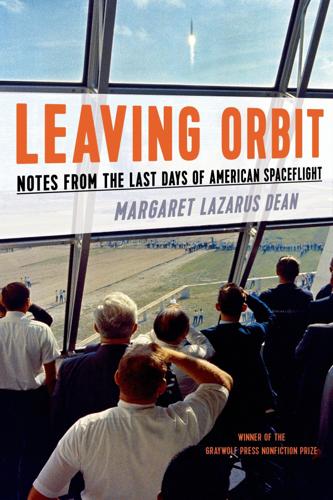
Leaving Orbit: Notes From the Last Days of American Spaceflight
by
Margaret Lazarus Dean
Published 18 May 2015
We find the Space area within the Science section, and as with the Visitor Center gift shop book section, Omar seems to have read every book in the place. He points books out to me, I point books out to him. I show him Norman Mailer’s Of a Fire on the Moon, recently reprinted in a coffee-table version with huge glossy photos. As Omar pages through the book, I try to tell him about Norman Mailer, about how the book came to be written. I tell him that I find Norman Mailer unbearable, but also quite brilliant. I tell him about the things Norman Mailer saw and described that no one else did, like Wernher von Braun’s speech at a Titusville country club the night before the launch of Apollo 11 or the cold drink machine at the Press Site whose malfunction became an extended metaphor for American technology and arrogance.
…
I feel it too, and that envy is at the heart of a kinship between Norman Mailer and me that transcends forty-two years, a change in space vehicle, and even gender—a difference not insignificant to Norman Mailer, who once remarked to Orson Welles in a television interview that all women should be kept in cages. But I understand him, I feel him, just the same. I’ve read accounts of the launch of Apollo 11 by each of the three men on board, by the flight director and dozens of other people closely tied to the mission, and I’ve clung to every word; yet it’s Norman Mailer’s wrestling with his own detachment, his own desire to feel something for that gray stick, that stays with me, that makes me feel I’ve been let in on what it was like to be there.
…
When he came back from covering the moon landing and finished writing his space book, Norman Mailer embarked on an experiment. He rented a house in Maine and spent part of the summer there with five of his six children to demonstrate that he could care for them and run a household himself. He had something to prove, because his fourth wife, Beverly Bentley, had just left him, claiming that her career as an actress had been buried under the domestic work necessary to let Norman Mailer go out into the world and be Norman Mailer. Though the original challenge was to show he could do everything himself, Mailer almost immediately hired a local woman to do cleaning and laundry.

I Hate the Internet: A Novel
by
Jarett Kobek
Published 3 Nov 2016
New Englanders complained about the snow, but it wasn’t much compared with Baby’s childhood. Sometimes, Baby liked looking at Norman Mailer’s house. Norman Mailer was a writer who didn’t have eumelanin in the basale stratum of his epidermis. Back in the early 1990s, Baby and his friend Regina, who had some eumelanin in her epidermis, were at a party. So was Norman Mailer. Norman Mailer made a leering advance at Regina and called Baby sweetheart. Baby threatened to beat Norman Mailer like a dusty broom. This incident raised Baby’s profile with New York’s literati. A few years later, Baby and Adeline crashed a party at Norman Mailer’s apartment in Brooklyn. There was another confrontation.
…
There was another confrontation. Baby was asked to leave the premises. When Norman Mailer died in 2007, Baby stopped looking at the house. “I can’t get over that you know Kevin Killian,” said Baby. “What’s peculiar about that?” asked Adeline. “Every one in this demimonde of ours has made the acquaintance of Kevin Killian. Not only is he a great writer, he’s also a social butterfly.” “I’ve known Kevin for years. He’s very supportive. He’s such a nice person and such a good writer.” “Why do you think I talked to his bothersome students?” asked Adeline. “It isn’t for everyone that yours truly wanders around spouting objectionable opinions.
…
A child was like a life sentence of Nash Mac. She’d considered an abortion but didn’t do it. This was not due to ideology. Adeline had been the person in high school who helped other girls get abortions. She’d driven them to clinics and held their hands in reception areas painted the color of Norman Mailer’s living room in Brooklyn. Adeline believed that abortions were a social good. Which, of course, they were. She still brought Emil to term. Adeline’s older sister Dahlia flew out from Los Angeles to help with the pregnancy. Dahlia had a husband named Charles. She’d had two children with Charles.
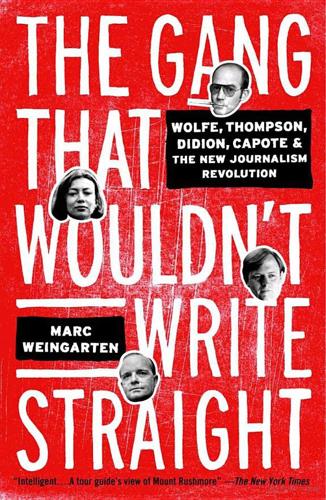
The Gang That Wouldn't Write Straight: Wolfe, Thompson, Didion, Capote, and the New Journalism Revolution
by
Marc Weingarten
Published 12 Dec 2006
“Three cheers, lads”: Ibid. “A Communist bureaucrat”: Mailer, The Time of Our Time, 553. “under the yoke”: Ibid., 540. “hit the longest ball in American letters”: Seymour Krim, “Norman Mailer, Get Out of My Head!”New York, April 21, 1969. “Moving from one activity to another”: Paul Carroll, “The Playboy Interview: Norman Mailer,”Playboy, January 1968. “transmute myself”: Norman Mailer, Pontifications (Boston: Little, Brown, 1982), 176. “Mailer received such news”: Mailer, Armies, 9. “Mitch, I’ll be there”: Ibid. “kind of up in the air”: Manso, Mailer, 45. “I pissed on the floor”: Mailer, Armies, 50.
…
“embattled aging enfant terrible”: Willie Morris, New York Days (Boston: Little, Brown, 1993), 211. “Mailer has grown”: Manso, Mailer, 454. Page 178 “There had been all too many years”: Norman Mailer, The Armies of the Night: History as a Novel, The Novel as History (New York: Plume, 1994), 8. “helps you to think better”: Richard Copans and Stan Neumann, Mailer on Mailer, American Masters documentary (New York: Thirteen/WNET, Reciprocal Films, Films d’lci & France 2, 2000). “[L]isten, Lyndon Johnson”: Norman Mailer, The Time of Our Time (New York: Modern Library, 1999), 551. “He knew that by telling everyone”: Manso, Mailer, 408. “Three cheers, lads”: Ibid.
…
why Mailer was on the top of the ticket: Jimmy Breslin, “I Run to Win,” New York, May 5, 1969. “I wanted to make actions”: Steven Marcus, “Norman Mailer,” Writers at Work: The Paris Review Interviews, 3rd Series (New York: Penguin, 1979), 278. Background of the Mailer-Breslin campaign: Manso, Mailer; Peter Manso, ed., Running Against the Machine: The Mailer-Breslin Campaign (Garden City, N.Y: Doubleday, 1969). Page 210 “[T]he condition of the city of New York at this time”: Breslin, “I Run to Win.” “I’d piss on it”: Jimmy Breslin, I Want to Thank My Brain for Remembering Me (Boston: Little, Brown, 1996), 121. “After Norman Mailer and I finished”: Jimmy Breslin, “And Furthermore, I Promise,”New York, June 16, 1969.

Digital Apollo: Human and Machine in Spaceflight
by
David A. Mindell
Published 3 Apr 2008
Early studies based on terrestrial models suggested crew structures in which technical experts would chauffeur a scientist-observer on a lunar expedition. 5 ‘‘Braincase on the tip of a firecracker’’: Apollo Guidance It was a curious ship, a braincase on the tip of a firecracker. . . . Without fire it could not move; without electricity it could not think. —Norman Mailer, Of a Fire on the Moon In this guidance and navigation business, we’re kind of one down in the dramatic art. We have to compete with people who build engines and make lots of smoke and flame . . . in the computer area, we don’t even have any moving parts. We have some small flashing lights . . . and that’s about as dramatic as we get.
…
Real landings, with skilled but fallible people flying magnificent but imperfect machines in less than ideal circumstances, would begin to answer these questions. 9 ‘‘Pregnant with alarm’’: Apollo 11 Armstrong, sitting in the commander’s seat . . . is a man who is not only a machine himself in the links of these networks . . . a man somewhat more than a pilot, somewhat more indeed than a superpilot, is in fact a veritable high priest of the forces of society and scientific history concentrated in that mini-cathedral, a general of the forces of technology . . . of the vast multibillion dollar technological bands which belted the very economy of the nation . . . the methods of the hospital mixed with the methods of the football team. —Norman Mailer, Of a Fire on the Moon Apollo 11 was a test flight whose major goal was simply to prove the feasibility of lunar landing with the Apollo system. Most aspects of the flight to the moon had been tried before. Apollo 10 had gone right down to 50,000 feet and then returned home, only a PDI burn remaining between it and the lunar surface.
…
At the IL, engineers were following the flights in real-time, sitting in an MIT classroom in Cambridge listening to the flight controllers and the LM on a ‘‘squawk box.’’ The 1202 reading told the IL engineers it was an ‘‘executive overload.’’ The computer was falling behind in its tasks; something was stealing processing cycles. (‘‘Executive Overload!’’ Norman Mailer observed. ‘‘What a name! One thinks of seepage on the corporation president’s bathroom floor.’’6) But the engineers were too far away to be of any help. ‘‘I had never seen or heard one [a 1202 alarm] in all of our pre-flight testing,’’ Fred Martin of IL recalled. In Houston, flight controller Steve Bales asked his back room team for some help.
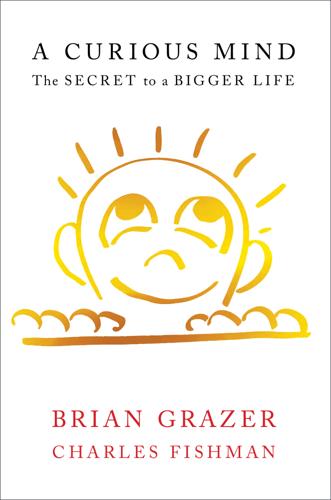
A Curious Mind: The Secret to a Bigger Life
by
Brian Grazer
and
Charles Fishman
Published 6 Apr 2014
And the drawing he did for the cover captures what we were talking about—a seemingly simple line drawing of a face that conveys exactly the joy, openheartedness, and excitement that being curious brings. Writer Puts Producer in a Headlock Perhaps the greatest boxing writer in modern America was Norman Mailer. He was a great writer about many things—Mailer won the National Book Award and two Pulitzers—and also a huge force in America’s cultural landscape starting in the 1950s, when he cofounded The Village Voice. When we started working on Cinderella Man, the boxing movie that we ultimately got to show to President Bush at the White House, I decided it would be fun and valuable to talk to Mailer about the boxer Jim Braddock and the role of boxing in Depression-era America.
…
He had a big, tough face. And he had a very interesting voice. He enunciated every word. Every word had drama to it. You leaned into his voice. It was about three in the afternoon, but Mailer ordered a drink. I remember thinking it was a little early to start drinking—but probably not in the world Norman Mailer lived and wrote in. He was a bridge to the era of Hemingway. He had something you’d expect from a guy like Mailer—something old-fashioned, like a sidecar. A whiskey drink. Mailer liked the idea of a movie about Jim Braddock. He was crabby—he was crabby about most things that afternoon. But he liked the idea of the movie.
…
He talked about the physiognomy of the boxers, how they study each other’s bodies and faces, looking for the places where the punches will really hurt. He was demonstrating an exchange of punches in a particular fight, and he said, “And then he threw him out of the ring.” I was surprised. I asked, “How’d that go? How did he throw him out of the ring?” He just reached over, said “It went like this,” and then all of a sudden Norman Mailer had me in a headlock. Right in the lobby of the Royalton Hotel. The famous writer put the Hollywood producer in a headlock. I wasn’t quite sure what to do. With his arms wrapped around my head, it was clear how strong he was. It was slightly embarrassing. I didn’t want to struggle. But I also wasn’t quite sure what would happen next.
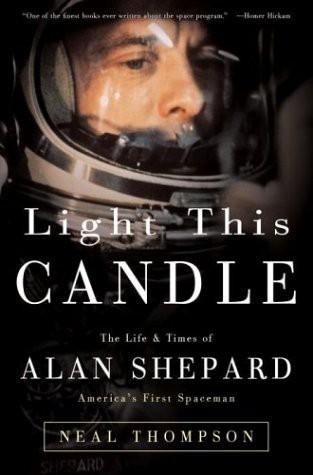
Light This Candle: The Life & Times of Alan Shepard--America's First Spaceman
by
Neal Thompson
Published 2 Jan 2004
That hunger for supermen could be seen in the astromania to come: the astronaut dolls, the rock songs (one California surf band called itself the Astronauts), and television shows and novels about astronauts and space. But there was more than just a cold war need for personified symbols of America’s superiority. The nation also sought a new type of male role model. Not the Father Knows Best brand, but the Elvis Presley brand. And the astronauts were perfect specimens of what Norman Mailer called “the white Negro.” In a 1959 essay of the same name, Mailer praised this new kind of male hipster, the guy who knew how to “follow the rebellious imperative of the self” and, instead of “the single mate, the solid family, and the respectable love life,” pursued a life of “Saturday night kicks.”
…
But she was intensely curious about the man who’d led America into space. What traits distinguished him from the others? Shepard greeted her with a warm smile—a smile that made her wary from the start. A petite, chain-smoking, mischievous blonde, Fallaci had a reputation for antagonizing interviewees. She once called Norman Mailer “an apologist for violence” and asked Hugh Hefner if he actually liked women, “beyond the sex, I mean.” As she sat in Shepard’s office, assessing his warm but wary smile, she thought he vaguely resembled a carnivorous plant she once saw in a London botanical garden. He was attractive without being overtly handsome, she thought, but his features were all oversized— protruding lips, large teeth, round eyes that seemed “hungry, and so large.”
…
Far more than a story of the space race, The Right Stuff was viewed by many as the first book to deeply explore the rich brotherhood of the jet jockey and the only-in-America culture of the celebrity astronaut. Wolfe’s unique voice brought to life an era that no previous writer had managed to capture so fully. Maybe it required distance and perspective, and maybe that’s why previous attempts to scratch deeper than the sanitized Life magazine version of the space race—by such notable writers as Norman Mailer, no less— had failed. But The Right Stuff’s huge success was due in part to its telling of the dark and sexy side of the astronaut story—the less-than-heroic stuff that all other journalists and authors of the 1960s obediently stayed away from, or never got near. Freed from the limits of being an obligatory hagiographer, Wolfe let loose with sensual references to “young juicy girls with stand-up jugs and full-sprung thighs” lurking around the astronauts.

Why the Jews?: The Reason for Antisemitism
by
Dennis Prager
and
Joseph Telushkin
Published 1 Nov 2007
And echoing Tucholsky’s descriptions of Weimar’s respected groups, Stein observes that “the sum of it is that groups that have leadership or power roles—businessmen, bankers, government leaders, military men, religious figures—are treated as bad or irrelevant.” 31 No hater of Weimar Germany described that society in more destructive terms than those used by Norman Mailer to describe America: “We kill the spirit here [in America]…. We use psychic bullets and kill each other cell by cell…. We have a tyranny here…. We have been fighting with sick dead hearts against the cold insidious cancer of the power that governs us … our police, our secret police, our corporations, our empty politicians, our clergymen, our editors and cold frightened bullies who govern a machine made out of people they no longer understand.” 32 There are innumerable other examples of radical non-Jewish Jews in America, particularly among journalists, writers, and professors whose basic attitude toward American society is one of hostility. * We are surely not the first observers to comment on the problem of the small but destructive number of non-Jewish Jews undermining the national and religious identities of Jews and non-Jews.
…
See also Nadine Fresco, “The Denial of the Dead: The Faurisson Affair—and Noam Chomsky,” Dissent (Fall 1981): 467-83. Commentary, October 1968. Quoted in Philip Nobile, Intellectual Skywriting, p. 96. Ibid., p. 98. In conversation with Philip Nobile, ibid., p. 145. New York Review of Books, August 2, 1967. Commentary, September 1967. Ben Stein, The View from Sunset Boulevard, pp. 39, 126-27. Norman Mailer, The Presidential Papers, pp. 69-70. The essay is contained in Laqueur’s book Out of the Ruins of Europe. Commentary, December 1981. Werner Cohn, Partners in Hate, p. 125. Six: Other Theories of Antisemitism A recent example of an attempt to dejudaize the Jewish experience, though the subject was not antisemitism, was supplied by a Jewish academic, Stephen Steinberg, professor of sociology at Queens College, New York.
…
Resolution on Zionism.” In American Jewish Yearbook 1977, edited by Morris Fine and Milton Himmelfarb. Philadelphia; Jewish Publication Society, 1976. Maccoby, Hyam. Revolution in Judaea. New York: Taplinger, 1980. McLellan, David. Karl Marx: His Life and Thought. New York: Harper and Row, 1973. Mailer, Norman. The Presidential Papers. New York: Putnam, 1963. Maimonides, Moses. The Commandments. Translated by Charles B. Chavel. London: Soncino Press, 1967. Ma’oz, Moshe. “The Image of the Jew in Official Arab Literature and Communications Media.” In World Jewry and the State of Israel, edited by Moshe Davis.
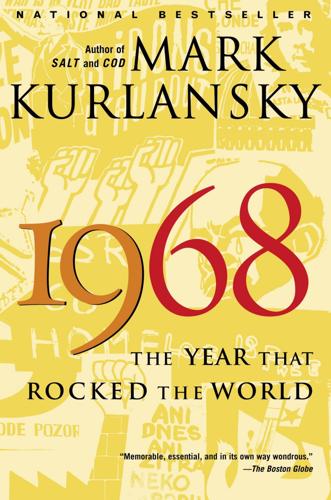
1968: The Year That Rocked the World
by
Mark Kurlansky
Published 30 Dec 2003
An antiwar activist from Berkeley, Jerry Rubin, was there with a New York City friend from the civil rights movement, Abbie Hoffman. Hoffman managed to grab media attention during the Washington march by promising to levitate the Pentagon and exorcize it by spinning it around. He did not deliver on his promise. Norman Mailer was there and wrote about it in Armies of the Night, which was to become one of the most read and praised books of 1968. The poet Robert Lowell, linguist and philosopher Noam Chomsky, and editor Dwight MacDonald were among the marchers. These were more than just spoiled and privileged draft-dodging kids, which had been the popular way to characterize the antiwar movement or, as Mailer put it more sympathetically in his book, “the drug illumined and revolutionary young of the American middle class.”
…
The shifting mood, already labeled “white backlash,” was in part a reaction to rising crime and to the fact that young people and their counterculture stars openly used forbidden drugs, but it was mostly a reaction to black riots in northern cities. In one of his both bizarre and typical moments of self-discovery, Norman Mailer in his 1968 book Miami and the Siege of Chicago—one of three Mailer books published that year—described waiting for a Ralph Abernathy press conference for which the civil rights leader was forty minutes late. “The reporter became aware of a peculiar emotion in himself, for he had not ever felt it consciously before”—only slightly more modest than Charles de Gaulle, Mailer often referred to himself in third person singular—“It was a simple emotion and very unpleasant to him—he was getting tired of Negroes and their rights.”
…
McNamara, who appeared yesterday on ‘Meet the Press,’ could be incomplete.” The print media was also giving more attention to the war than they ever had before. Harper’s magazine and the Atlantic Monthly put out special Vietnam War issues. Harper’s entire March issue, on sale in February, was devoted to a Norman Mailer article about the antiwar movement that powerfully criticized U.S. policy. Atlantic Monthly’s entire March issue was devoted to a piece by Dan Wakefield also about antiwar sentiment. Though both magazines were more than a century old and neither had ever done single-article issues, both said it was a coincidence that they were producing such issues at the same time on the same subject.
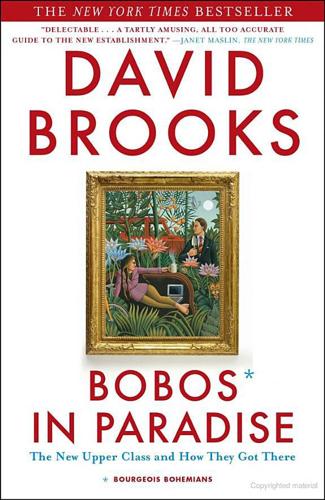
Bobos in Paradise: The New Upper Class and How They Got There
by
David Brooks
Published 1 Jan 2000
But briefly, and leaving aside the civil rights movement and Vietnam and all the complex and substantive political turmoils of that decade, here are a few of the countercultural straws in the wind: In the realm of public theater, Abbie Hoffman threw dollar bills down on the traders of the New York Stock Exchange. The Diggers, a group of San Francisco performance artists, declared “The Death of Money and the Birth of the Free.” In the literary realm, Norman Mailer explored what it meant to be a hipster. In his collection of essays, Advertisements for Myself, Mailer published, glossy-magazine style, a list of what was hip and what was square, and his list corresponds to the traditional split between the bohemian and the bourgeois. Night, he wrote, is hip, whereas day is square.
…
“The hostility of the common man toward the intellectual is of all times and places,” wrote Jacques Barzun in The House of Intellect. Richard Hofstadter’s Anti-Intellectualism in American Life was a salvo in the war between mind and matter. The biggest threat to the independent intellectual was money and its temptations. Commerce was the enemy of art. Norman Mailer got into a lot of trouble with his intellectual friends when his novel The Naked and the Dead became a bestseller. Its commercial success was taken as prima facie evidence that there was something wrong with it. And commercial culture didn’t just attack intellect head-on with crass financial offers.
…
He recalled that the literary giants he admired during his student days at Harvard drank and caroused with abandon. “My gurus were the famously hard-drinking literati of an earlier epoch: a shaky hung-over Robert Lowell chain-smoking mentholated Trues at a seminar table in the Quincy House basement; a drunken Norman Mailer brandishing a bottle of whiskey and baiting the crows in Sanders Theatre; Allen Ginsberg toking up at a Signet Society dinner and chanting his poems to the hypnotic accompaniment of a harmonium. Postwar poetry was a hymn of excess.” These were artists living the bohemian way. Atlas described the booze-filled gatherings of the old literati, the smoky parties, the embarrassing scenes, the bitter feuds, and the ensuing divorces.

On Writing Well (30th Anniversary Edition)
by
William Zinsser
Published 1 Jan 1976
Later you can bevel the edges or add elegant finials, if that’s your taste. But you can never forget that you are practicing a craft that’s based on certain principles. If the nails are weak, your house will collapse. If your verbs are weak and your syntax is rickety, your sentences will fall apart. I’ll admit that certain nonfiction writers, like Tom Wolfe and Norman Mailer, have built some remarkable houses. But these are writers who spent years learning their craft, and when at last they raised their fanciful turrets and hanging gardens, to the surprise of all of us who never dreamed of such ornamentation, they knew what they were doing. Nobody becomes Tom Wolfe overnight, not even Tom Wolfe.
…
If you find yourself hopelessly mired in a long sentence, it’s probably because you’re trying to make the sentence do more than it can reasonably do—perhaps express two dissimilar thoughts. The quickest way out is to break the long sentence into two short sentences, or even three. There is no minimum length for a sentence that’s acceptable in the eyes of God. Among good writers it is the short sentence that predominates, and don’t tell me about Norman Mailer—he’s a genius. If you want to write long sentences, be a genius. Or at least make sure that the sentence is under control from beginning to end, in syntax and punctuation, so that the reader knows where he is at every step of the winding trail. The Exclamation Point. Don’t use it unless you must to achieve a certain effect.
…
It was the beginning of a golden era of nonfiction, especially in Life, which ran finely crafted articles every week; in The New Yorker, which elevated the form by originating such landmarks of modern American writing as Rachel Carson’s Silent Spring and Truman Capote’s In Cold Blood; and in Harper’s, which commissioned such remarkable pieces as Norman Mailer’s Armies of the Night. Nonfiction became the new American literature. Today there’s no area of life—present or past—that isn’t being made accessible to ordinary readers by men and women writing with high seriousness and grace. Add to this literature of fact all the disciplines that were once regarded as academic, like anthropology and economics and social history, that have become the domain of nonfiction writers and of broadly curious readers.

The Age of Illusions: How America Squandered Its Cold War Victory
by
Andrew J. Bacevich
Published 7 Jan 2020
By the time the Abu Ghraib scandal broke in April 2004, exposing the torture and abuse to which Iraqi detainees were being subjected by U.S. troops, it lost all remaining credibility.19 In the absence of crusades, what remains? Nearly unanimous disdain for Congress, vaguely patriotic rituals like singing the national anthem prior to sporting events, and lifestyle-related crazes like Black Friday and Cyber Monday cannot conceal what has become an ongoing process of fragmentation.20 “Our tragedy,” novelist Norman Mailer once wrote, “is that we diverge as countrymen further and further away from one another, like a space ship broken apart in flight which now drifts mournfully in isolated orbits, satellites to each other, planets none, communications faint.”21 If a half century premature, Mailer’s diagnosis now turns out to be devastatingly accurate.
…
Abraham Lincoln, “First Inaugural Address” (March 4, 1861). 18. George W. Bush, “State of the Union Address” (January 29, 2002). 19. For a near-contemporaneous assessment, see Seymour M. Hersh, “Torture at Abu Ghraib,” New Yorker (May 10, 2004). 20. Sarah Anderson, “The Postal Worker’s Christmas,” New York Times (December 18, 2018). 21. Norman Mailer, “An Evening with Jackie Kennedy,” Esquire (July 1962). 22. “I Am Part of the Resistance Inside the Trump Administration,” New York Times (September 5, 2018). 23. David Welna, “Trump Has Vowed to Fill Guantanamo with ‘Some Bad Dudes’—But Who?,” NPR (November 14, 2016). 24. Heather Long, “Under Trump’s Watch, the U.S.
…
See also North Korea Korean War Kosovo Kriner, Douglas Kristol, Irving Krugman, Paul Kuwait, Iraqi invasion of Lasch, Christopher Latin America Lee, Robert E. Lehman Brothers Lewinsky, Monica Liberty University Libya Life life expectancy Lincoln, Abraham Lippmann, Walter lobbyists Long, Huey Luce, Henry Macmillan, Harold Mahan, Alfred Thayer Mailer, Norman Maine, USS, sinking of Manifest Destiny “Manifesto for a Fast World” (Friedman) Manigault, Omarosa Manila Bay, Battle of manufacturing Mao Zedong markets marriage redefining same-sex traditional Marshall, George C. Marshall Plan McCain, John McGovern, George McGrory, Mary McKinley, William media Medicaid and Medicare Merrill Lynch #MeToo movement Mexican War Mexico Bill Clinton and NAFTA and wall and middle class militarized global leadership (hegemony).

You Can't Make This Stuff Up: The Complete Guide to Writing Creative Nonfiction--From Memoir to Literary Journalism and Everything in Between
by
Lee Gutkind
Published 13 Aug 2012
You will even find creative nonfiction stories featured on the front page of the New York Times and the Wall Street Journal. We will look at some examples of that later in this book. If you leaf through magazines published in the 1960s and 1970s (you may have to use microfiche), you’ll see that creative nonfiction was dominant then as well. Gay Talese, Truman Capote, Lillian Ross, and Norman Mailer regularly contributed what we now call creative nonfiction to the magazines noted above as well as to magazines that no longer exist, like Collier’s and the Saturday Review. The big difference between then and now is that this artful nonfiction is rapidly growing, while readership and sales of literary and popular (paperback) fiction have remained stagnant or decreased—and that the genre now has a name most everyone accepts.
…
Combining research and story creates connective tissue and forges the universal chord that we are all seeking in order to reach out to the reader on all levels and maximize our audience. The Creative Nonfiction Way of Life Once I thought I was going to become a great American novelist. My heroes were Ernest Hemingway, Philip Roth, Joseph Heller, and Norman Mailer, among others, typical and predictable for a Jewish boy growing up in the 1950s and 1960s at a time when, as Tom Wolfe has pointed out, the novel was “king” of American literature. But the more I read these terrific authors and their books I so admired, the more ignorant I felt—naive about the world.
…
- Smith online magazine begins soliciting six-word memoirs, eventually publishing a best-selling collection “from writers famous and obscure.” - Creative Nonfiction launches PodLit, a literary podcast focusing on nonfiction and literary trends. - Elizabeth Gilbert’s Eat, Pray, Love: Millions of readers buy, read, envy. (And take up yoga.) 2007 Norman Mailer—novelist, New Journalist, cofounder of the Village Voice, Pulitzer Prize winner—dies at 84. - Scandal! Sort of. Maybe. Alex Heard fact-checks four David Sedaris books and concludes in the New Republic that the best-selling humorist often goes too far for his work to count as nonfiction, “even if you allow for an extra-wiggly definition of ‘exaggerate.’”
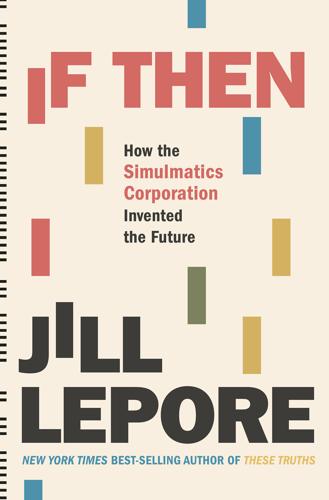
If Then: How Simulmatics Corporation Invented the Future
by
Jill Lepore
Published 14 Sep 2020
Beginning with the lunch-counter sit-ins in Greensboro in 1960, students had become, for the first time in American history, the leaders of national political movements, movements that reached from campus to campus, from the Student Nonviolent Coordinating Committee to the Free Speech Movement to the SDS. But the biggest antiwar gathering of that year was a teach-in held in May at the University of California, Berkeley. Thirty thousand people gathered for thirty-six hours. “If we wish to take a strange country away from strangers,” Norman Mailer told the crowd at Berkeley, “let us at least be strong enough and brave enough to defeat them on the ground.” Mario Savio spoke at the Berkeley teach-in, indicting the war, and so did baby doctor Benjamin Spock. Folksinger Phil Ochs sang “I heard many men lying / I saw many more dying” from his song “I Ain’t Marchin’ Anymore.”
…
It read, “You won in 1965.” Chapter 11 The Things They Carried Liberal academics had no root of a real war with technology land itself, no, in all likelihood, they were the natural managers of that future air-conditioned vault where the last of human life would still exist. —Norman Mailer, The Armies of the Night, 1968 Thomas Morgan and his daughter at an antiwar march in New York, 1967. It was raining in New York on the morning of April 15, 1967, a Saturday in springtime, when the first antiwar protesters began gathering at the Sheep Meadow in Central Park. They were students, they were children, they were businessmen and housewives and old people and new people, even newborns, and strangers and friends and veterans and draftees, and amputees.
…
Organizers had shipped in some two hundred pounds of flowers.93 The rally began at eleven o’clock in the morning. Peter, Paul and Mary sang wailing, mournful ballads; Phil Ochs sang antiwar anthems. Then came the speeches—from celebrities, mainly. Baby doctor Benjamin Spock and bad boy novelist Norman Mailer, who wrote a book about the protest, called The Armies of the Night. “We consider the war Lyndon Johnson is waging as disastrous in every way,” Spock said. The crowd roared, “Hell no! We won’t go!” Ella Collins, Malcolm X’s sister, rose to the stage and said, “This is the first time I have witnessed white people and black people rocking in the same boat.”

The History and Uncertain Future of Handwriting
by
Anne Trubek
Published 5 Sep 2016
But it is their post-1950 literary collection that they are most concerned with building today.1 Creating an archive of contemporary authors’ papers presents challenges: Many authors, of course, have been word processing since the 1980s, and their manuscripts—that of Dreiser’s Sister Carrie—are overwritten as they are revised, the first drafts lost to posterity. The authors included in the Ransom collection are those who have been wedded to handwriting. Although the center bought the platen Norman Mailer used to type The Naked and the Dead, it was no doubt the rest of Mailer’s ten-ton, $2.5 million archive that prompted them to close the deal. “His mother saved everything!” said the guide looking at row after row of Mailer boxes filled with handwritten notes, letters, and drafts. The Ransom Center also has the longhand first drafts of novels by J.
…
See also typewriting and typewriters advantages of, here democratizing effect of, here, here handwriting compared to, here, here, here, here, here, here prisoners’ lack of access to, here standards for learning, here, here Klages, Ludwig, here Koran, here Latin alphabet, here, here Latin language, here, here, here, here, here, here Latin script, here, here, here left-handed writing, here, here lettered chalkboards, here letterers and lettering artistic aspects of, here calligraphy distinguished from, here calligraphy training of, here, here, here scripts created by, here, here liber, here libraries handwritten manuscript collections of, here, here, here, here of Romans, here Library of Alexandria, here limners, here Linear A, here Linear B, here linguistic patterns, here linguistic principles, here linguistic repurposing, here, here literacy effect of handwriting on, here increased access to, here in medieval era, here in New World, here restrictions on, here, here, here, here, here, here, here U.S. rates of, here, here literate cultures, here logograms, here Lombardic script, here London, Jack, here, here Longcamp, Marieke, here lowercase letters, here, here, here Luther, Martin, here McEwan, Ian, here McGurrin, Frank, here McNichol, Andrea, here Mailer, Norman, here majuscule letters, here, here marginalia, here, here Martial (Roman poet), here Matlack, Timothy, here Mayflower Century Style of American Writing, here Medici, Cosimo de’, here medieval era and non-Christian content of Greek and Roman works, here, here, here, here, here professional scribes of, here, here scribal monks of, here, here, here, here, here scripts in, here, here, here, here, here, here survival of writing from, here Melville, Herman, here memory effect of handwriting on, here memorization of Homer’s poems, here memory systems in oral cultures, here and value of oral communication, here memory boards, here memory palaces, here Merovingian script, here Michon, Jean-Hippolyte, here, here Middle East, here Millican, Peter, here minuscule letters, here, here, here mnemonic devices, here monks individuality of, here, here in Ireland, here labor involved in copying, here, here, here, here, here parchment prepared by, here on printed books, here as scribes, here, here, here, here, here, here silence required of, here workplace of, here, here, here, here morality, here, here, here Morgan Library & Museum, New York, here Morison, Stanley, here Morris, William, here Moses, here Mount Vesuvius, here, here Muslims, here, here, here Napoleon, here National Archives, here, here national hands, here National Handwriting Day, here nature, here, here Nero (Roman emperor), here New World, literacy in, here New York Public Library, here Northern Italy, here Oberlin College, here Old Persian language, here, here Olivetti typewriters, here orality and oral communication alphabets representing spoken sounds, here, here chat rooms based on patterns of, here of Greeks, here, here, here, here, here in medieval era, here and mnemonic devices, here oral cultures, here of Romans, here, here spoken reading, here value of conversation, here, here, here writing compared to, here, here, here, here, here, here, here, here, here, here, here, here, here ostraca, here, here paleography, here, here, here Palmer, A.

Animal Spirits: The American Pursuit of Vitality From Camp Meeting to Wall Street
by
Jackson Lears
In Winesburg, Ohio (1919), he focused on the people he called “grotesques,” outliers who were failures in the eyes of the smart and up-to-date—withered Victorian maidens disappointed in love, country doctors with pockets full of paper pills. This was the Anderson who inspired several generations of American writers, including William Faulkner, Thomas Wolfe, and Norman Mailer. But the one work that truly resonated with a popular audience was Dark Laughter (1924), his only bestseller. The novel told the story of a man in flight from a pointless job and a loveless marriage who ends up in the arms of another restless seeker, the sex-starved wife of a boring factory owner.
…
As early as 1952, much of this appreciation was on display in a Partisan Review symposium, “Our Country and Our Culture,” which asked twenty-five intellectuals (including Trilling, David Riesman, and Margaret Mead) to comment on the new and positive relationship between American intellectuals and mass democratic culture. With Trilling, they celebrated the emergence of new alliances between wealth and intellect in the world of universities and foundations. Only a very few participants registered any dissent from the roseate views of the majority. One of them was Norman Mailer, who declared that he was “in almost total disagreement with the assumptions of this symposium,” and insisted on the value of an oppositional stance, rather than “a strapping participation in the vigors of American life.” There were plenty of reasons, he believed, to continue to cultivate alienation.
…
Like other intellectuals, he was blinded by Kennedy’s charismatic style, and his revulsion from “technology land” was rooted in a familiar melodrama of beleaguered masculinity. But as the Vietnam War provoked new varieties of countercultural protest, his perspective broadened and deepened. MANHOOD AT MID-CENTURY: NORMAN MAILER Mailer had first won notice in 1946, with his great war novel The Naked and the Dead. It captured the futility, stupidity, and brutality of war with elegant precision. Mailer evoked a male world of competition, careerism, and fitful camaraderie, detailing an infantry platoon on a grim slog through the jungles of a South Pacific island in obedience to confused, contradictory, and constantly changing orders.

The Idea of Decline in Western History
by
Arthur Herman
Published 8 Jan 1997
For every Western intellectual who dreads the collapse of his own society (like Henry Adams or Arnold Toynbee or Paul Kennedy or Charles Murray), there is another who has looked forward to that event with glee. For the better part of three decades, America’s preeminent thinkers and critics—from Norman Mailer, Gore Vidal, Thomas Pynchon, Christopher Lasch, Jonathan Kozol, and Garry Wills to Joseph Campbell, Joan Didion, Susan Sontag, Jonathan Schell, Robert Heilbroner, Richard Sennett, Noam Chomsky, Paul Goodman, Michael Harrington, E.L. Doctorow, and Kirkpatrick Sale, not to mention Cornel West, Albert Gore, and the Unabomber—have advanced a picture of American society far more frightening than anything pessimists like Charles Murray or Kevin Phillips could come up with.
…
Castro’s revolution had, Sartre announced, “rolled back the limits of the possible.” As another visitor remarked, “You come away with your faith in the human race restored.”15 The Third World personality, “the person of color,” turned out to have the vitality needed to bring renewal not only to his own, postcolonial culture but to that of exhausted whites as well. Norman Mailer said after his Cuban visit in 1963, “We were a league of silent defeated men. You [Castro] were aiding us, giving us psychic ammunition … in that desperate silent struggle … against the cold insidious cancer of the power that governs us.”16 Still later, Hollywood films such as Dances With Wolves and The Old Gringo would extend that same redemptive theme, with whites immersing themselves in the primitive virtues of a Native American or Latino Arcadia and finding spiritual enlightenment and release.
…
Assimilating its blacks, he charged, gave American society its last chance “to transfuse into itself a stream of people whose moral vision has been … preserved and sharpened by exclusion from [the] opportunities for self-betrayal and self-advancement” that capitalism had forced upon everyone else.30 To racial pessimists at the turn of the century, the presence of the Negro had threatened national degeneration through race suicide. To cultural pessimists in the sixties and seventies, his presence seemed the last hope for preventing national degeneration through capitalist civilization. In 1959, Norman Mailer penned a prophetic essay for Esquire magazine entitled “The White Negro.” It was a paean of praise to the Beat Generation and Greenwich Village hipsters, the precursors of what would later be termed, “the counterculture.” Mailer pronounced them rebels against civilization’s “Faustian urge to dominate nature.”

Fallout: The Hiroshima Cover-Up and the Reporter Who Revealed It to the World
by
Lesley M. M. Blume
Published 3 Aug 2020
Unlike many of the hotshot journalists who followed in his footsteps, such as Norman Mailer and Tom Wolfe, who were often prominent in their own stories and reveled in their celebrity, Hersey had continued to shun publicity, writing over two dozen novels and nonfiction books from his homes in suburban Connecticut, Martha’s Vineyard, Key West, and New Haven, where he was master of Yale’s Pierson College for half a decade. “He was a member of the generation that developed the cult of the author—people like Norman Mailer were doing The Dick Cavett Show—but he didn’t want any part of that,” recalled his son, Baird Hersey.
…
Japanese occupation, 8, 53–69 Japanese distribution of Hiroshima approved by, 167 in meeting with Emperor Hirohito, 66 Men on Bataan and, 16, 51, 141 press suppressed by, 31–32, 49–51, 53, 102, 121, 139 right to reprint “Hiroshima” for military use requested by, 145, 165 Tokyo headquarters of, 61, 65 see also SCAP McCarthy, Joseph, 164 McCarthy, Mary, 135 McCrary, John Reagan “Tex”: press junket to post-bomb Japan led by, 28–33, 44, 138–40, 205 radio show of, 138–39 McGovern, Daniel A., 62 Hersey’s meeting with, 63–64, 75, 217 Mailer, Norman, 176 Manchuria, China, 54, 57 Manhattan Project, 4, 21, 110, 115, 139 Conant and, 149 Groves as head of, 11, 26, 29, 44–47 Laurence as historian of, 56, 99, 131 pre-deployment demonstration of atomic bomb urged by scientists of, 146–47 Marshall Islands, 55 Martin, Charles E., 122 mass cremations, 180 media, see press medical workers, casualty rate of, 89 Men on Bataan (Hersey), 16, 51, 141 “mishkids,” 18, 36 Missouri, USS, 49 Molotov, Vyacheslav M., 160–61 Monterey Peninsula Herald, 129 Morrison, Philip, 115 Moscow, Hersey as Time reporter in, 18, 51, 66, 161, 162, 164, 168 mushroom cloud photos, 3–4, 22, 58 Nagasaki, atomic bombing of, 2, 7, 8, 9–10, 12, 21–22, 62, 143, 147–48 Hersey’s dismay at, 22 mushroom cloud photos of, 22 press coverage of, see atomic bombing, of Japan as war crime, 129 Nagasaki, post-bombing, New Year’s Day “Atom Bowl” football game in, 74–75 Nakamura, Mrs.
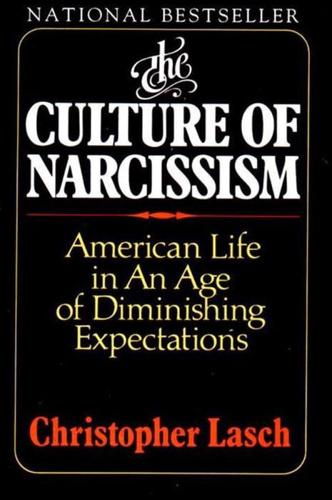
The Culture of Narcissism: American Life in an Age of Diminishing Expectations
by
Christopher Lasch
Published 1 Jan 1978
The emergence in the sixties of a new literary form, combining cultural criticism, political reportage, and reminiscence, represented an attempt to explore these issues-to illuminate the intersection of personal life and politics, history and private and more difficult to achieve the detachment indispensable to art , experience. Books like Norman Mailer s Armies of the Night, by ' . disposing of the convention of journalistic objectivity, often penetrated more deeply into events than accounts written by al legedly impartial observers. The fiction of the period, in which , keep the reader interested - the writer made no effort to conceal his presence or point of view, demonstrated how the act of writing could become a subject for fiction in its own right.
…
To the performing self, the only reality is the identity he can construct out of materials furnished by advertising and mass culture, themes of popular film and fiction, and fragments torn from a vast range of cultural traditions, all of them equally contemporaneous to the contemporary mind.* In order to polish and perfect the part he has devised for himself, the new Narcissus gazes at his own reflection, not so much in admiration as in unremitting search of flaws, signs of fatigue, decay. Life becomes a work of art while "the first art work in an artist, in Norman Mailer's pronouncement, "is the shaping of his own personality. The second of these principles has now been adopted not only by those who write "advertise" " " acter with well-structured conflicts centering around forbidden sex, authority, or dependence and independence within a family setting, we see characters filled with uncertainty about what is real.
…
Viking, 1976), especially p. 297, for Nixon's talk with Haldeman, 20 March " 1973. 82 , , , " , 91 new left street theater Sale, SDS (New York: Random House, 1973). , his own personality." The Presidential Papers (London: Andre Deutsch 1964), p. .. , 284. " 1 May 1967 ("guerrilla force"). On the rise and fall of SDS, see Kirkpatrick "the first art work . Norman Mailer Dotson Rader, "Princeton Weekend with the SDS," New Republic, 9 December 1967, pp. 15-16 ( blood"); Greg Calvert quoted in New York Times, 92 "the women in ads . Your Masterpiece-Yourself." Ewen, Captains cf Consciousness pp. 177, 179 0. . . , 262 : Notes Notes : 263 " 93 "Every painter . . . aware of them. 104 recent criticism of sports Harry Edwards The Sociology ofSport (Homewood III.: Dorsey Press 1973) and The Revolt of the Black Athlete (New York Free Press 1969); Dorcas Susan Butt Prychology ofSport (New York: Van Nostrand Reinhold 1976); Dave Meggyesy Out cf Their League (Berkeley: Ramparts Press 1970); Chip Oliver W ifor the Game (New York: Morrow 1971); Paul Hoch Rip Off the Edgar Wind, Art and Anarchy (New York: Knopf, 1963), p. 40. 93 , obliteration of the idea of deuil in modern art Richard Wollheim, "What Is Art?
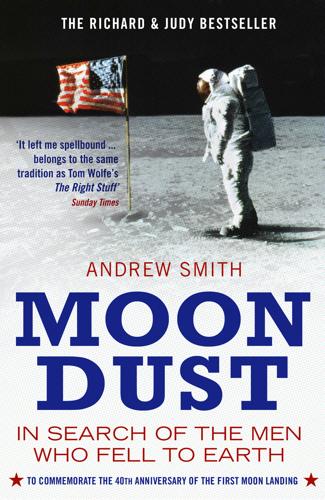
Moondust: In Search of the Men Who Fell to Earth
by
Andrew Smith
Published 3 Apr 2006
He also admits that when he heard Aldrin tersely announcing the 1202 alarm during the Eagle’s final descent, his one and only thought was, “That’s it. They’re going to crash.” In fact, the more you talk to Reg Turnill, the more extraordinary the whole thing starts to seem. He remembers being detailed to show the interloping Norman Mailer around the launch site as the countdown for Apollo 11 proceeded (“You didn’t care much for him, did you, dear?” notes Reg’s wife, Maggie, as she sets a lunch of trout and new potatoes before us). He also describes 2001author Arthur C. Clarke stopping by his table as the rocket roared through the clouds to gasp that this was the first time he’d cried in twenty years and the first time he’d prayed in forty.
…
From what I’ve heard and read, trying to describe Armstrong is like driving through a night mist: there are outlines and hints of something solid behind it, but any light you throw at him comes straight back at you, until, in the end, you see just what you imagine you see: the reflected glare of your own expectations. And I wonder what I’ll see – if anything at all? The hard-bitten Reg Turnill saw something arrogant and “taciturn,” and when he’d finished showing Norman Mailer around the Cape, Mailer wrote a book called Of a Fire on the Moon in which he got no nearer to Armstrong than anyone else, but offered some interesting observations of his bearing at press conferences. As per the longings in his soul, the novelist saw something mystical. “He spoke in long pauses, he searched for words,” Mailer said.
…
Once past the security building off Saturn Lane, a maze of covered corridors is paced by people in jeans and casual shirts. How different it must have been in the days when Buzz Aldrin could speak of these same paths churning with “earnest young engineers, their holstered slide rules slapping against their belts.” Holstered slide rules! But that’s right, this was the new ocean then, the frontier. Quirkily, Norman Mailer found a connection between these people and the hippies when he visited here, because “both had no atmosphere surrounding them … their envelope was gone,” by which he meant that they’d lost their connection to the Earth, had become ethereal and sexless, but it doesn’t sound like that when flight director Gene Kranz talks about what they did.

What’s Your Type?
by
Merve Emre
Published 16 Aug 2018
He was a man short of stature and slight of build, with thinning hair and horn-rimmed glasses; a man with a slightly puckered mouth and, as the staff would note in his case file, “a most thorough-going baby talk.” This man was Truman Capote, an EIFP, the staff would deduce. At thirty-three years old, he was already one of the most virtuosic writers in America—“the most perfect writer of my generation,” proclaimed Norman Mailer, another of Barron’s test subjects—and thus a perfect specimen for Barron’s study of creative types. Capote was also openly gay and famous for his soft falsetto voice, his large and busy hands. At first, many members of the staff were disturbed by what they referred to as his “peculiarities.” “The impression of both child and woman is so striking in his manner, that one senses in oneself and in his other listeners at first an embarrassed surprise, and then a protective feeling that urges one to seek quickly for the things one can respect behind this façade,” wrote John W.
…
He had struggled in the many ways a person could struggle, and these struggles had provided him with the raw material he needed to transform his private experiences into a luminous world of make-believe. “Relentless, restless, and flighty.” “Doubtful and distrustful of love.” “Actuated by a sense of destiny.” Barron’s conclusions about the creative type would echo through his assessments of Kenneth Burke, Kenneth Rexroth, Norman Mailer, and MacKinlay Kantor, sanctifying the idea of the male artist as a romantic, tortured, and fatalistic soul. The Carnegie Corporation was quick to point out that his study was plagued by problems of experimental design. The sample was too small. There existed no control group of “noncreative” writers against which to compare the creative writers’ assessments, a flaw Barron tried to correct by inviting advertising copywriters and staff writers for Reader’s Digest to 2240 for a weekend of assessments.
…
“The creative person”: Frank Barron, “Proposal for Research on the Creative Personality,” September 1954, Folder 18, Box 3, TRF. He—and Barron’s creative person: Ibid. “Better Testing”: “Better Testing Sought for Creative Students,” Long Beach Independent, November 24, 1961. “Can we teach”: Gardner, Self-Renewal, 192. He was a man short of stature: Capote, “Personal Interview.” At thirty-three years old: Norman Mailer, Advertisements for Myself (Cambridge: Harvard University Press, 1992), 465. “Since the colors were basic”: “Mosaic Key,” January 24, 1958, IPAR. “One felt that this world of literati”: Capote, “Personal Interview.” The next day, all the writers: “Storytelling,” January 24, 1958, IPAR. Burke, diagnosed by his staff psychologist: Kenneth Burke, “Personal Interview,” January 24, 1958, IPAR.

Stealth
by
Peter Westwick
Published 22 Nov 2019
The images seem orthogonal: the hippie a free spirit, flipping the bird to authority and denouncing the military-industrial complex; the aerospace engineer dedicated, conservative, and patriotic. On one side, romantic hedonism, turning on and dropping out; on the other, rocket-science rationality and can-do discipline. Norman Mailer saw it that way; after the moon landing, he mocked the hippies: “You’ve been drunk all summer… and they have taken the moon.”12 But the realms of the hippie and the engineer were not completely opposed. Some of the “Sixties” infiltrated aerospace—and the Stealth program.13 Now, no one would ever mistake Kelly Johnson for Timothy Leary, or aerospace industry offices for Haight-Ashbury.
…
Leslie, “Spaces for the Space Age: William Pereira’s Aerospace Modernism,” in Westwick, Blue Sky Metropolis, 127–58, and Leslie, “Aerospaces: Southern California Architecture in a Cold War World,” History and Technology 29:4 (2013), 331–68. 11 Starr, Golden Dreams, 414; Matt Warshaw, The History of Surfing (San Francisco: Chronicle Books, 2010), 48; Jesse Birnbaum and Tim Tyler, “California: A State of Excitement,” Time, November 7, 1969, 60–66; Wallace Stegner, “California: The Experimental Society,” Saturday Review, September 23, 1967, 28. Stegner’s actual quote: “Like the rest of America, California is unformed, innovative, ahistorical, hedonistic, acquisitive, and energetic—only more so.” 12 Norman Mailer, Of a Fire on the Moon (New York: Little, Brown, 1970), 430. 13 On intersections of the counterculture with science and technology in the late 1960s and 1970s, see David Kaiser and W. Patrick McCray, Groovy Science: Knowledge, Innovation, and American Counterculture (Chicago: University of Chicago Press, 2016). 14 Tom Morgenfeld interview, July 26, 2011. 15 Leslie, “Aerospaces” and “Spaces for the Space Age.” 16 Stephanie Young, “‘Would Your Questions Spoil My Answers?’
…
See also Skunk Works A-12 model from, 38f ADP of, 34 aerodynamics used by, 133 aircraft design by, ix–xi arguments of, xii computers used by, xii–xiii, 48, 70 contest entered by, 28 in design competition, xi, 29, 53 design proposal of, 29 engine builders for, 152 financial acumen of, 32 flat facets from, 54, 134f flying wing of, 134–136, 134f full-scale models tested of, 76–81 internal discretionary funds used by, 197–198 Johnson hired by, 32–33 military contracts flowing to, 31 Northrop bailed out by protest of, 156 P-38 Lightning of, 31 production manager of, 107–108 prototype airplanes of, 83 radar focus of, 192 radar signature reduction and, 37–39, 76–77 Scherrer’s job for, 19–20, 45, 146 Sea Shadow built by, 184 Stealth aircraft of, 39, 185, 189 Stealth bomber design of, 146 wing’s leading edge of, 80–81 XST contest with, 70–72, 81 Lockheed Martin, 185 Locus, Stan, 44, 63, 65, 69 lofting, 137–138, 171 logarithmic decibel scale, 78 long-range R&D study (LRRD), 23–24, 118, 123 Los Alamos, CA, 70 Los Angeles, CA, 21 Loschke, Robert, 50, 70–72, 86–87, 105f, 140 Loughead, Allan, 31 Loughead, Malcolm, 31 Loughead Aircraft, 55 Lovick, Ed, 38–39, 47 low-altitude flight, 165–166 low-frequency threat, 138 low-probability-of-intercept radar, 125–126 low-radar-cross-section aircraft design, 29, 211n.17 LRRD. See long-range R&D LRRD II study, 120 Luckiesh, Matthew, 1–2 Macbeth (Shakespeare), 1 machine shops, close-tolerance, 14 “The Machine-Tooled Happyland” (Bradbury), 18 MAD. See mutual assured destruction Mailer, Norman, 16 make-work projects, 111–112 Manhattan Project, 3, 112–113 Marconi, Guglielmo, 2–3 Mark, Hans, 99 Martin, Albert, Jr., 16–17 Martin, Ed, 44–45, 49–51 Martin Marietta, 186–187 Massachusetts Institute of Technology (MIT), 4 materials. See also radar-absorbing materials for B-2 bomber, 171–172 composite, 172 Northrop requiring R&D on, 172 shortage of, 102–104 McDonnell Douglas, 25, 211n.17, 29 McWilliams, Carey, 14–15 mergers, in aerospace industry, 186–187 metallic chaff, 8 “Method of Edge Waves in the Physical Theory of Diffraction,” 42 microwave region, 3 military aircraft, 60, 75 contracts, 31 -industrial complex, xv, 196–197 technologies, xi, 23 Military Reform Caucus, 121 military-technical revolution (MTR), 116–118, 194 miniature remotely piloted vehicle (Mini-RPV), 24–26 Ministry of International Trade and Industry (MITI), 197 Minuteman missiles, 143, 152 missiles ballistic, 63–64, 116 cruise, 127, 138, 144 defense, 64–66, 193 Minuteman, 143, 152 MX, 174 Polaris submarine, 32 projects, 23 SA-1 and SA-2, 5 Snark, 62–64, 62f submarine-launched, 144 surface-to-air, 5 Trident, 174 TSSAM, 184 Mitchell, Sam, 93–94 MITI.

Learn Descriptive Cataloging Second North American Edition
by
Mary Mortimer
Published 1 Jan 1999
Josephine Blanche D’Alpuget, born 1944, never uses her first name - Rule 22.1A g. Maurice Pascal Alers Hankey, the Baron Hankey, 1877-1963 - Rule 22.6A h. Philip the Second the King of Spain, born 1527, died 1598 - Rule 22.16A i. Henry Handel Richardson (whose real name was Henrietta) - Rule 22.5C6 j. Carson McCullers, lived 1917 to 1967 k. Norman Mailer l. Tomie de Paola is an American writer of Italian descent 150 LEARN DESCRIPTIVE CATALOGING E XERCISE 12.2 Using an authority file, give the correct form of the following personal names. Indicate any references needed. a. Samuel Langhorne Clemens wrote under the pseudonym Mark Twain; he lived from 1835 to 1910 b.
…
Escrivá de Balaguer, José María, 1902-1975 e. Vita-Finzi, Claudio f. D’Alpuget, Blanche, 1944- g. Hankey, Maurice Pascal Alers Hankey, Baron, 1877-1963 h. Philip II, King of Spain, 1527-1598 i. Richardson, Henry Handel j. McCullers, Carson, 1917-1967 247 248 LEARN DESCRIPTIVE CATALOGING k. Mailer, Norman l. De Paola, Tomie E XERCISE 12.2 a. Twain, Mark, 1835-1910 Refer from: Clemens, Samuel Langhorne, 1835-1910 b. Henríquez Ureña, Pedro, 1884-1946 Refer from: Ureña, Pedro Henríquez, 1884-1946 c. Rawlings, Marjorie Kinnan, 1896-1953 Refer from: Baskin, Marjorie Kinnan, 1896-1953 d. John XXIII, Pope, 1881-1963 Refer from: Roncalli, Angelo Giuseppi, Cardinal, 1881-1963 e.

Of a Fire on the Moon
by
Norman Mailer
Published 2 Jun 2014
Praise for Norman Mailer “Norman Mailer loomed over American letters longer and larger than any other writer of his generation.” —The New York Times “A writer of the greatest and most reckless talents.” —The New Yorker “Mailer is indispensable, an American treasure.” —The Washington Post “A devastatingly alive and original creative mind.” —Life “Mailer is fierce, courageous, and reckless and nearly everything he writes has sections of headlong brilliance.” —The New York Review of Books “Unlike just about every American writer since Henry James, Mailer has managed to grow and become richer in wisdom with each new book.… There can no longer be any doubt that he possesses the largest mind and imagination at work in American literature today.”
…
.… All writing benefits from economy and restraint: Mailer has the confidence, the talent and the enthusiasm to break the rules, to pile on the words and imagery, and get away with it.” —The Guardian “An immense story worthy of Mailer’s famed prose … Cold technology would not always prevail, but it did for a while, and Mailer’s book charts it breathlessly, dramatically.” —Spike Magazine 2014 Random House Trade Paperbacks Edition Copyright © 1969, 1970 by Norman Mailer All rights reserved. Published in the United States by Random House Trade Paperbacks, an imprint of Random House, a division of Random House LLC, a Penguin Random House Company, New York. RANDOM HOUSE and the HOUSE colophon are registered trademarks of Random House LLC. Originally published in hardcover in the United States by Little, Brown and Company in 1969.
…
It was bound to work its way through two panes of glass before three and a half billion more years were lost and gone. For Susan, for Dandy, for Betsey and Kate, for Michael and Stephen Mailer The author wishes to acknowledge his indebtedness to First on the Moon by Neil Armstrong, Michael Collins and Edwin E. Aldrin, Jr., for the field of quotation it offered. By Norman Mailer The Naked and the Dead Barbary Shore The Deer Park Advertisements for Myself Deaths for the Ladies (and Other Disasters) The Presidential Papers An American Dream Cannibals and Christians Why Are We in Vietnam? The Deer Park—A Play The Armies of the Night Miami and the Siege of Chicago Of a Fire on the Moon The Prisoner of Sex Maidstone Existential Errands St.

The Bookshop: A History of the American Bookstore
by
Evan Friss
Published 5 Aug 2024
She, along with the writers and readers who congregated there, turned Gotham into a powerhouse. According to the editors of one academic journal without a habit of exaggeration, “No other American bookstore has done more to encourage experimentation in modern literature.” Even as the shop became one of the most famous, the Gotham Book Mart remained “one of the last bookstores,” Norman Mailer wrote, “where you can pick up literature, not commerce.” It was also a home, literally. Steloff lived in a third-floor apartment above the shop, often slept outside on the balcony, and came bouncing down the stairs with a pencil tucked somewhere in her hair, which she never seemed to fuss over.
…
And before he left, Britton would tell him to draw a self-portrait. Remarkably, he did that, too. Britton had been collecting portraits since before his time at the Strand. It all started at a Village jazz club. At the time a maître d’ and wannabe actor, Britton was shooing out patrons at 4:00 a.m. on a Tuesday when Norman Mailer refused to leave. Britton said he could stay—so long as he drew a picture of himself. Britton started amassing a collection of drawings. He didn’t think to publish them until a Random House editor told him someone else would inevitably do something similar. He couldn’t stand the idea of being called a copycat, so Self-Portrait: Book People Picture Themselves appeared in 1976 with 739 drawings, including from Saul Bellow, David Markson, Philip Roth, James Baldwin, Truman Capote (who signed his name backward), Joan Didion (who, instead of drawing, scrawled a few lines of text: “Too thin.
…
He couldn’t stand the idea of being called a copycat, so Self-Portrait: Book People Picture Themselves appeared in 1976 with 739 drawings, including from Saul Bellow, David Markson, Philip Roth, James Baldwin, Truman Capote (who signed his name backward), Joan Didion (who, instead of drawing, scrawled a few lines of text: “Too thin. Astigmatic. Has no visual sense of self.”), Toni Morrison (who sketched wildflowers), and the one who started it all, Norman Mailer (with a cubistic portrait). There were also a few privileged, bookish nonauthors: the Basses, of course, and Frances Steloff, who drew herself as a simple, robot-ish head. Her successor, Andy Brown, also had a portrait. His was of a person in a sailboat christened the Edward Gorey. He never could stop promoting.
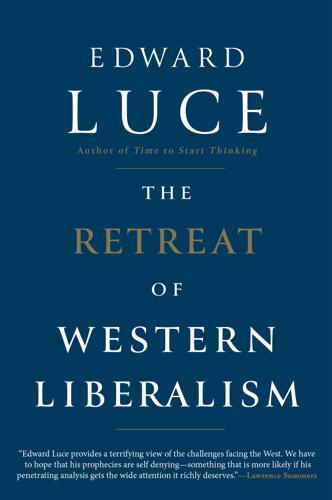
The Retreat of Western Liberalism
by
Edward Luce
Published 20 Apr 2017
More seriously, many in France would date the switchover to the mass student protests that paralysed Paris in 1968. Though somewhat arbitrary, my preferred American moment was the battle between student anti-war protesters and the Chicago police at the 1968 Democratic Convention.2 In Miami and the Siege of Chicago, Norman Mailer described what happens when a party’s base severs from its leadership. Inside the besieged hall, party brokers fixed the nomination of Hubert Humphrey, the unpopular vice-president who backed the Vietnam War. Outside, mayor Richard Daley’s cops beat up the protesting hippies. ‘[The] Democratic Party had here broken in two before the eyes of a nation like Melville’s whale charging right out of the sea,’ wrote Mailer.
…
(essay), 5, 14, 181 Garten, Jeffrey, From Silk to Silicon, 25 Gates, Bob, 177–8 gay marriage issue, 187, 188 gender, 57 General Agreement on Tariffs and Trade (GATT), 72 Genghis Khan, 25 gentrification, creeping, 46, 48, 50–1 Georgia, Rose Revolution (2003), 79 Germany, 15, 42, 43, 57, 78, 115; far-right resurgence in, 139–40; and future of EU, 180; Nazi, 116, 117, 155, 171; post-war constitution, 116; rise of from late nineteenth century, 156–7; Trump’s attitude towards, 179–80; vocational skills education, 197 gig economy, 62–5 Gladiator (film), 128–9 Glass, Ruth, 46 global economy: centre of gravity shifting eastwards, 21–2, 141; change of guard (January 2017), 19–20, 26–7; emerging middle classes, 21, 31, 39, 159; end of Washington Consensus, 29–30; fast-growing non-Western economies, 20–2; Great Convergence, 12, 13, 24, 25–33; Great Divergence, 13, 22–5; Great Recession, 63–4, 83–4, 192, 193; new protectionism, 19–20, 73, 149; ‘precariat’ (‘left-behinds’), 12, 13, 43–8, 50, 91, 98–9, 110, 111, 131; rapid expansion of China, 20–2, 25–8, 157, 159; spread of market economics, 8, 29; West’s middle-income problem, 13, 31–2, 34–41; see also globalisation, economic; growth, economic globalisation, economic: China as new guardian of, 19–20, 26–7; Bill Clinton on, 26; in decades preceding WW1, 155; Elephant Chart, 31–3; Friedman’s Golden Straitjacket, 74; Jeffrey Garten’s history of, 25; and global trilemma, 72–3; and multinational companies, 26–7; need to abandon deep globalisation, 73–4; next wave of, 32; radical impact of, 12–13; and stateless elites, 51, 71; and Summers’ responsible nationalism, 71–2; and technology, 55–6, 73, 174 Gongos (government-organised non-governmental organisations), 85 Google, 54, 67 Gordon, Robert, The Rise and Fall of American Growth, 57–8, 59–61 Graham, Lindsey, 134 Greece: classical, 4, 10, 25, 137–8, 156, 200; overthrow of military junta, 77 Greenspan, Alan, 71 growth, economic: and bad forecasting, 27; as Bell’s ‘secular religion’, 37; and digital economy, 54–5, 59, 60; Elephant Chart, 31–3; emerging economies as engine of, 21, 30, 31, 32; Golden Age for Western middle class, 33–4, 43; Robert Gordon’s thesis, 57–8, 59–61; and levels of trust, 38–9; as liberal democracy’s strongest glue, 13, 37, 103, 201–2; out-dated measurement models, 30–1; technological leap forward (from 1870), 58–9; West’s middle-income problem, 13, 31–2, 34–41 Hamilton, Alexander, 78 Harvard University, 44–5 healthcare and medicine, 35, 36, 42, 58, 59, 60, 62, 102, 103, 198 Hedges, Chris, Empire of Illusion, 125 Hegel, Friedrich, 161–2 Heilbroner, Robert, 10 Hispanics in USA, 94–5 history: 1930s extremism, 116–17; Chinese economy to 1840s, 22–3; Fukuyama’s ‘end of history’, 5, 14, 181; Great Divergence, 13, 22–5; Hobson’s prescience over China, 20–1; and inequality, 41–3; and journalists, 15; Keynes’ view, 153–5; Magna Carta, 9–10; of modern democracy, 112–17; nineteenth-century protectionism, 78; nineteenth-century European diplomacy, 7–8, 155–6, 171–2; non-Western versions of, 11; Obama on, 190; Peace of Westphalia (1648), 171; populist surge in late-nineteenth-century USA, 110–11; post-war golden era, 33–4, 43; post-war US foreign policy, 183–4; technological leap forward (from 1870), 58–9; theories of, 10–11, 14, 190; Thucydides trap, 156–7; utopian faith in technology, 127–8; Western thought on China, 158–9, 161–2; ‘wrong side of history’ language, 187–8, 190, 191–2; Zheng He’s naval fleet, 165–6; see also Cold War; Industrial Revolution Hitler, Adolf, 116, 128, 171 Hobbes, Thomas, 104 Hobsbawm, Eric, 5 Hobson, John, 20, 22–3 Hofer, Norbert, 15–16 homosexuality, 106, 107, 109–10 Hong Kong, 163–4 Hourly Nerd, 63 Hu Jintao, 159 Humphrey, Hubert, 189 Hungary, 12, 82, 138–9, 181 Huntington, Samuel, The Clash of Civilizations, 181 Huxley, Aldous, Brave New World, 128, 129 illiberal democracy concept, 119, 120, 136–7, 138–9, 204 India: caste system, 202; circular view of history, 11; colonial exploitation of, 22, 23, 55–6; democracy in, 201; future importance of, 167, 200–1; and Industrial Revolution, 23–4; internal migration in, 41; as nuclear power, 175; and offshoring, 61–2; pre-Industrial Revolution economy, 22; rapid expansion of, 21, 25, 28, 30, 58, 200, 201–2; Sino-Indian war (1962), 166; as ‘young’ society, 39, 200 Indonesia, 21 Industrial Revolution, 13, 22, 23–4, 46, 53; non-Western influences on, 24–5; and steam power, 24, 55–6 inequality: decline in post-war golden era, 43; and demophobia, 122–3; forces of equalisation, 41–3; global top 1 per cent, 32–3, 50–1; growth of in modern era, 13, 41, 43–51; in India, 202; in liberal cities, 49–51; in nineteenth century, 41; and physical segregation, 46–8; urban–hinterland split, 46–51 infant mortality, 58, 59 inflation, 36 Instagram, 54 intelligence agencies, 133–4 intolerance and incivility, 38 Iran, 175, 193, 194 Iraq War (2003), 8, 81, 85, 156 Isis (Islamic State), 178, 181, 182–3 Islam, 24–5; Trump’s targeting of Muslims, 135, 181–3, 195–6 Israel, 175 Jackson, Andrew, 113–14, 126, 134 Jacobi, Derek, 128–9 Japan, 78, 167, 175 Jefferson, Thomas, 56, 112, 163 Jobs, Steve, 25 Johnson, Boris, 48, 118–19 Jones, Dan, 9 Jospin, Lionel, 90 journalists, 15, 65 judiciary, US, 134–5 Kant, Immanuel, 126 Kaplan, Fred, Dark Territory: The Secret History of Cyber War, 176–8 Kennedy, John F., 146, 165 Kerry, John, 8 Keynes, John Maynard, 153–5, 156 Khan, A.Q., 175 Khan, Sadiq, 49–50 Kissinger, Henry, 14, 162, 166 knowledge economy, 47, 61 Kreider, Tim, 111 Krugman, Paul, 162 Ku Klux Klan, 98, 111 labour markets: and digital revolution, 52–5, 56, 61–8; and disappearing growth, 37; driving jobs, 56–7, 63, 191; gig economy, 62–5; offshoring, 61–2; pressure to postpone retirement, 64; revolution in nature of work, 60–6, 191–3; security industry, 50; status of technical and service jobs, 197–8; and suburban crisis, 46; wage theft, 192; zero hours contracts, 191 Lanier, Jaron, 66, 67 Larkin, Philip, 188 Le Pen, Marine, 15, 102, 108–10 League of Nations, 155 Lee, Spike, 46 Lee Teng-hui, 158 left-wing politics: and automation, 67; decline in salience of class, 89–92, 107, 108–10; elite’s divorce from working classes, 87–8, 89–95, 99, 109, 110, 119; in France, 105–10; Hillaryland in USA, 87–8; and ‘identity liberalism’, 14, 96–8; McGovern–Fraser Commission (1972), 189; move to personal liberation (1960s), 188–9; populist right steals clothes of, 101–3; Third Way, 89–92; urban liberal elites, 47, 49–51, 71, 87–9, 91–5, 110, 204 Lehman Brothers, 30 Li, Eric, 86, 163–4 liberalism, Western: Chinese hostility to, 84–6, 159–60, 162; crisis as real and structural, 15–16; declining belief in ‘meritocracy’, 44–6; declining hegemony of, 14, 21–2, 26–8, 140–1, 200–1; elites as out of touch, 14, 68–71, 73, 87–8, 91–5, 110, 111, 119, 204; and ‘identity liberalism’, 14, 96–8; linear view of history, 10–11; Magna Carta as founding myth of, 9–10; majority-white backlash concept, 12, 14, 96, 102, 104; psychology of dashed expectations, 34–41; scepticism as basis of, 10; and Trump’s victory, 11–12, 28, 79, 81, 111; ‘wrong side of history’ language, 187–8, 190, 191–2; see also democracy, liberal Lilla, Mark, 96, 98 Lincoln, Abraham, 146 Lindbergh, Charles, 117 literacy, mass, 43, 59 Lloyd George, David, 42 Locke, John, 104 London, 46, 47, 48, 49–50, 140 Los Angeles, 50 Machiavelli, Niccolò, 133 Magna Carta, 9–10 Mahbubani, Kishore, 162 Mailer, Norman, Miami and the Siege of Chicago, 189 Mair, Peter, 88, 89, 118 Mann, Thomas, 203 Mao Zedong, 163, 165 Marconi, Guglielmo, 128 Marcos, Ferdinand, 136 Marshall, John, 134 Marshall Plan, 29 Marxism, 10, 11, 51, 68, 106, 110, 162 Mattis, Jim, 150–1 May, Theresa, 100, 152, 153 McAfee, Andrew, 60 McCain, John, 134 McMahon, Vince and Linda, 124, 125 McMaster, H.

At the Existentialist Café: Freedom, Being, and Apricot Cocktails With Jean-Paul Sartre, Simone De Beauvoir, Albert Camus, Martin Heidegger, Maurice Merleau-Ponty and Others
by
Sarah Bakewell
Published 1 Mar 2016
This will be a twentieth-century story, which is why there is very little more on the proto-existentialists Nietzsche and Kierkegaard. I’m also brief on theological existentialists and existentialist psychotherapists: they are fascinating but really need separate books to do them justice. On the other hand, people such as Iris Murdoch, the English ‘new existentialist’ Colin Wilson, the pugnacious Norman Mailer with his ‘Existentialist Party’, and the existentialist-influenced novelist Richard Wright have all found their way in, for various reasons. Some people are only here because they had an interesting role to play in the lives of the others: people like the ethical philosopher Emmanuel Levinas, the daring rescuer of manuscripts Herman Leo Van Breda, and the Czech phenomenologist Jan Patočka, who defied his country’s regime and died for it.
…
Partly in response to Arendt’s work, researchers such as Stanley Milgram and Phillip Zimbardo perfected experiments exploring just how far people would go in obeying orders. The results were alarming: almost everyone, it seemed, was willing to inflict torture if a sufficiently authoritative figure commanded it. Not all polemics against inauthenticity were so carefully thought out. The novelist Norman Mailer — the only major American author to identify explicitly as an existentialist — devoted his 1957 essay ‘The White Negro’ to a figure whom he lauded as: the American existentialist — the hipster, the man who knows that if our collective condition is to live with instant death by atomic war, relatively quick death by the State as l’univers concentrationnaire, or with a slow death by conformity with every creative and rebellious instinct stifled … if the fate of twentieth century man is to live with death from adolescence to premature senescence, why then the only life-giving answer is to accept the terms of death, to live with death as immediate danger, to divorce oneself from society, to exist without roots, to set out on that uncharted journey into the rebellious imperatives of the self.
…
Benny Lévy (1945–2003): Philosopher and activist; Sartre’s assistant and co-author of the controversial series of interviews, Hope Now (1980). Karl Löwith (1897–1973): German philosopher and historian of ideas who studied with Heidegger, and wrote memoirs of the experience. György Lukács (1885–1971): Hungarian Marxist, often critical of existentialism. Norman Mailer (1923–2007): American novelist and polemicist who intended to run for New York mayor as the ‘Existentialist Party’ candidate, but had to delay the campaign after stabbing his wife. Gabriel Marcel (1889–1973): French Christian existentialist philosopher and playwright. Herbert Marcuse (1898–1979): Philosopher and social theorist associated with the Frankfurt School; former student of Martin Heidegger who criticised him severely after the Second World War.
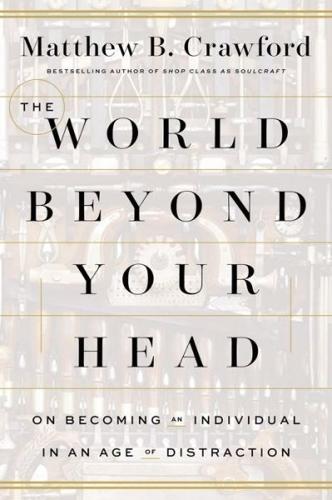
The World Beyond Your Head: On Becoming an Individual in an Age of Distraction
by
Matthew B. Crawford
Published 29 Mar 2015
“Society everywhere is in conspiracy against the manhood of every one of its members,” Emerson wrote in his essay “Self-Reliance.”4 Walt Whitman’s democratic hero “walks at his ease through and out of that custom or precedent or authority that suits him not.” Whitman goes on: “You shall no longer take things at second or third hand, nor look through the eyes of the dead … nor feed on the specters in books.” To live authentically, Norman Mailer would write a century later, one has to “divorce oneself from society, to exist without roots, to set out on that uncharted journey into the rebellious imperatives of the self.”5 In his masterful book The Masterless, Wilfred McClay writes that after the experience of totalitarianism (largely as conveyed by émigré scholars), American intellectuals in the 1950s were alert to any threat against the individual, and found plenty such at home.
…
The last bit of this sketch sounds like today’s Tea Party. Emerson as quoted by Wilfred M. McClay, The Masterless: Self and Society in Modern America (Chapel Hill: University of North Carolina Press, 1994), 55. 5. The quotes from Walt Whitman are from Leaves of Grass as quoted by McClay, The Masterless, 61. The quote from Norman Mailer is from “The White Negro,” as quoted by McClay, 271. 6. McClay, The Masterless, 271–72. 7. Michael Polanyi, Personal Knowledge: Towards a Post-Critical Philosophy (Chicago: University of Chicago Press, 1974), 53. 8. Michael Polanyi, The Tacit Dimension (Chicago: University of Chicago Press, 1966), 20. 9.
…
Lawson, Robbie Leap Frog Learning Table learning by infants by robots see also education Lears, Jackson Leary, Timothy leather, in organ making left wing, dismantling of cultural jigs by liberal arts liberal education liberalism, origins of liberal tradition liberation in 1960s libertarianism Lincoln Financial Group Listening to Prozac (Kramer) local ecology Locke, John epistemology of on freedom on primary vs. secondary qualities rationality formula of locomotion L’Oréal love Luckmann, Thomas machine gambling apparent odds in business model of children’s games vs. death instinct in design intention in duration of Leap Frog Learning Table and libertarians and loyalty clubs for motorcycling compared with pathological in Pennsylvania productivity of regulation of renamed “gaming” speed of as tax on low-income people magic Mailer, Norman Manhattan Project manufactured certainties manufacturing Maoism Maria (gambler) marketplace Márquez, Marc marriage marshmallow test martial arts massification Massive Open Online Courses (MOOCs) Masterless, The (McClay) McClay, Wilfred McCulloch, Warren McDonald’s McDowell, John mechanization, of instruction Mediated (de Zengotita) Meditations on First Philosophy (Descartes) memory attention vs.

Whole Earth: The Many Lives of Stewart Brand
by
John Markoff
Published 22 Mar 2022
She would be remembered for the phrases “Practice random kindness and senseless acts of beauty” and “Libraries will get you through times of no money better than money will get you through times of no libraries.” Brand also failed on occasion to reel in the big fish he invited to write for the Quarterly. An entreaty to Woody Allen went unanswered. However, Norman Mailer had the courtesy of responding: “Dear Stewart Brand,” he wrote in 1975. “I’m IRSed to the tune of 100 times 10 times 100, and so writing for the metaphysical essence of turds, once known as cabbage. Alas, I can’t afford your rates. Wish I could. Cheers, Norman Mailer.” It would be Gerard K. O’Neill’s twenty-five-page cover story in the Quarterly’s Fall 1975 issue that established the publication, its voice, and its unique identity.
…
Officer training had taken just a month. He was given a brief respite, a trip home for Christmas that underscored the fact that his fervor for the military life was fading. Training was fine for what it was, and he still enjoyed it. But without a war it seemed increasingly pointless. Fantasies that he might become the next Norman Mailer and write great fiction were fleeting without real battle, and this was still peacetime. “With no war,” he wrote in his journal, “it wouldn’t do for a book. For that I dismiss it. Not book-worthy, not noteworthy. I am a character in search of an author, situation, plot, and other characters. . . .
…
Bean catalog, 154, 167, 219 Loeffler, Jack and Jean, 51, 76, 97, 98–100, 101–2, 108–9, 110, 112, 114, 116–17, 119, 133, 144, 200, 205 logging, SB’s summer job in, 29–30 Loma Prieta earthquake, 303 London, Ann, 93 Long Bets, 335 Long Now Clock, 313–14, 316–17, 323, 325–26, 327, 328–29 location search for, 329–33, 335–36 Texas site of, 363 working prototype of, 333 see also Clock Library Long Now Foundation, 33, 328, 332, 334–35, 342–43, 360, 362, 363 Lovelock, James, 230, 349, 350 Lovins, Amory, 341, 350, 352 Lovins, Hunter, 335 LSD, 41–42, 50, 72–73, 84, 88, 103, 156, 160, 212 academic experiments with, 42, 72, 76–82, 273 creativity and, 72, 76–77 criminalization of, 140–41, 143 SB’s use of, 1, 79–80, 101, 117, 134, 162–63, 181 SB’s warnings about cultural impact of, 85 Trips Festival and, 127, 129 Lynas, Mark, 354 Lynda (SB’s girlfriend), 70–71 M McCarthy, John, 83–84, 169, 211, 272 McCarthy, Joseph, 17, 31 McClanahan, Ed, 24, 146, 160, 183 McClure, Matthew “Cappy,” 182, 257–58, 264 McClure, Michael, 33–34, 205, 228 McCord, William, 47–49 McCulloch, Warren, 46, 273 McGovern, George, 225 McIntyre, Joan, 206, 207 MacKay, David, 350 McKim, Robert, 78 McLuhan, Marshall, 93, 94, 106, 110, 112, 124, 132–34 Mailer, Norman, 231 Malone, Michael, 261 Malone, Tom, 315 Mandelbrot, Benoit, 262 Mander, Jerry, 123–24, 133–34, 142, 162, 182, 203 Margulis, Lynn, 230 Markham, Beryl, 271–72, 275 Marshall, Andy, 315, 338, 339 Marty (SB’s girlfriend), 49–50, 52 Masai Mara game reserve, 271, 275 Mason, Ben, 21 Mathematics: A World of Numbers...and Beyond (museum exhibition), 91 Matrix (San Francisco nightclub), 123, 129 Matson, Katinka, 253 Matthiessen, Peter, 272 Media Lab, 290, 291, 306–7 long-term impact of, 278–79 Negroponte as founder of, 262, 272 SB’s lectures and research at, 273, 277, 278–79 Media Lab, The: Inventing the Future at MIT (Brand), 278, 280–81, 283, 286, 289, 292, 318 Megatrends (Naisbitt), 262 Meilstrup, Ann, 24–25 Merry Pranksters, 2, 24, 88–89, 97–98, 120, 121, 123, 124, 125, 126, 129, 131, 141, 143, 160, 181 Metric Conversation Council, 230 Metzner, Ralph, 177 Me-Wuk Acorn Festival, 120 Michigan, timber boom in, 8–9 Microsoft Office, 151 Microsoft Windows, 268 Midpeninsula Free University, 158 Millbrook, N.Y., 78–79, 106 Miller, Henry, 35, 50, 71 Mills, Stephanie, 182, 222 SB’s affair with, 203–4, 209, 210, 213–14 Mind and Nature (Bateson), 277 Minsky, Marvin, 277, 278, 289, 324 Mirene (SB’s houseboat), 46–47, 249, 256, 271, 282, 302, 307, 334, 338, 343 MIT, 135 Artificial Intelligence Lab of, 266–67, 272 Building 20 at, 290–91, 307 Media Lab at, see Media Lab Mogar, Robert, 78, 103 Monbiot, George, 354 Monitor, 296 “monkey wrenching” (sabotage), 181 Moore, Fred, 196–97, 198 Moore, Gordon, 152 Moore’s law, 152 Morley, AJ, 8–9 Morley, Ed, 29 Morley, Ralph Chase (grandfather), 8–9, 16 Morley Brothers wholesalers, 8, 157 Morley family, 7–9 Mornell, Pierre, 194, 202, 213 Morningstar commune, 140 Morris, Robert Tappan, 293 Morrison, Philip, 172, 281 Moss Tents, 175 Mountain Girl (Carolyn Adams), 125, 128, 131 Mount Analogue (Daumal), 186 Move Fast and Break Things (Taplin), 5–6, 10, 348 Muir, John, 340 multimedia, 106, 137, 306 see also specific events and exhibitions Mumford, Lewis, 162 Murphy, Dennis, 35 Murphy, Michael, 40, 71, 76, 83, 84–85, 97, 101, 211 Mutiny on the Bounty (film), 233 Myhrvold, Nathan, 328, 331 N Naisbitt, John, 262 NASA, 135, 191 National Book Awards Ceremony, SB at, 200–201 National Congress of American Indians, 1964 convention of, 107, 110–11 National Park Service, 237 Native American Church, 100, 112 “Native American Church Meeting, The” (Brand), 109 Native Americans, see American Indians nature: humans as morally responsible for care of, 42, 347, 349, 360, 361 SB’s childhood immersion in, 10–11 Navajo Mountain, 117 Negroponte, Nicholas, 262, 272, 279, 281, 287, 289, 290, 292 Nelson, Ted, 230, 292, 293, 294 Network Technologies International (NETI), 263 Neuwirth, Robert, 341 New Age Journal, 255 New Age movements, 35, 41, 225 New Games, 210, 211, 217, 220, 221, 236–37 New Jersey Institute of Technology, 240 New Left, 143, 225 SB’s antipathy for, 4, 142, 145, 341, 347 Newton, Huey, 229 New Urbanism, 129, 246, 307 New Yorker, 190, 219, 311 New York Times, 259, 265, 280, 314, 341–42 SB profile in, 344–45 New York Times Magazine, 45, 46 Next Whole Earth Catalog, The, 240, 241–42 Nin, Anaïs, 50 nitrous oxide, 163 Nixon, Cynthia, 142, 144, 145, 152 Nixon, James, 142–45, 150, 151–52 Nixon, Richard, 225 “No Frames, No Boundaries” (Schweickart talk), 224–25 No More Secondhand God (Fuller), 162 Nordhaus, Ted, 340 Norman, Gurney, 146, 183, 193, 223 North Beach (San Francisco neighborhood), 50, 99 Beat culture of, 3, 34, 35, 37, 47–49 SB’s apartment in, 1, 74–75, 83, 89–90, 98, 134 Nuclear Energy Institute, 342 nuclear power, 2 SB’s defense of, 2, 5, 337, 338, 339, 341–42, 344, 351, 353–54, 356 Schwartz’s endorsement of, 339–40 nuclear war-gaming, 273 nuclear waste storage, 335–36 nuclear weapons, US-Soviet standoff over, 31 O Office of Naval Research, 111 Ogilvy, Jay, 295 “Ohio” (song), 190 Oliveros, Pauline, 94 Omidyar, Pierre, 336 One Flew Over the Cuckoo’s Nest (Kesey), 87–88 O’Neill, Gerard K., 231–32 oNLine System (NLS), 151, 156, 197, 212 On the Road (Kerouac), 69, 126 Onslow Ford, Gordon, 50 Oppenheimer, Frank, 194 Oppenheimer, Robert, 17–18 Oraibi, Ariz., 116 Oregon State University, 355 Orlovsky, Peter, 237 Osborn, Fairfield, 28 Osborne, Dan, 114, 117 Osborne I computer, 251, 267 Ostwind, Dorothy, 88, 97, 98 Other One, The (film), 126 Our Mr.
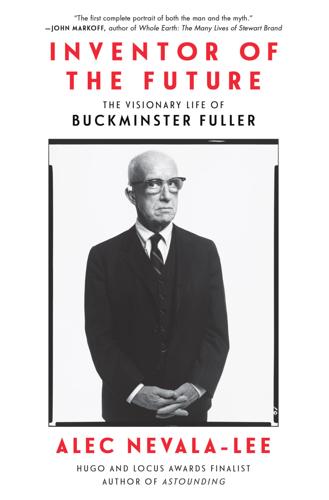
Inventor of the Future: The Visionary Life of Buckminster Fuller
by
Alec Nevala-Lee
Published 1 Aug 2022
Luce, Clare Boothe. The Women. New York: Dramatists Play Service, 1966. MacCarthy, Fiona. Gropius: The Man Who Built the Bauhaus. Cambridge, MA: The Belknap Press of Harvard University Press, 2019. Madsen, Axel. John Huston. Garden City, NY: Doubleday, 1978. Mailer, Norman. Genius and Lust: A Journey Through the Major Writings of Henry Miller. Compiled by Norman Mailer. New York: Grove Press, 1976. Mannheim, Steve. Walt Disney and the Quest for Community. Aldershot, UK: Ashgate, 2002. Markoff, John. What the Dormouse Said. New York: Penguin, 2006. ———. Whole Earth: The Many Lives of Stewart Brand. New York: Penguin, 2022.
…
Another older rebel adopted by the counterculture was Henry Miller, whom Robert Snyder videotaped for two days with RBF in California (Itinerary, June 15–16, 1970). This unlikely pairing may have inspired Norman Mailer to lament the comparative lack of mainstream interest in Miller: “On any given night in any lecture hall of America, Buckminster Fuller—another genius—would draw an audience five to, would it be, ten times the size, and Fuller cannot write a sentence which does not curdle the sap of English at its root” (Norman Mailer, Genius and Lust: A Journey Through the Major Writings of Henry Miller, comp. Mailer [New York: Grove Press, 1976], 9). “his contribution to mankind’s environment”: Francis Warner to Calvin Tomkins, June 19, 1970, Calvin Tomkins Papers, Museum of Modern Art, folder I.7.
…
See Brokaw, Clare Boothe (later Luce) Luce, Henry, 167, 168, 169, 172, 173, 185–186, 322 Ludin, Mohammed Kabir, 282 Lupu, Aurel, 147 Lusitania, 52 MacBride, Robert, 425 “Machine Tools” (Fuller), 173 Mack, Benjamin, 596n432 Mack Trucks company, 74 Mackinder, Halford, 282 MacLeish, Archibald, 133, 443 Macmillan, 393, 401–402 MacNaughton, Leslie M., 65, 76, 398–399 Macneil, Marie and Robert, 174 Madarasz, George, 7 Mailer, Norman, 577n374 Malisoff, William Marias, 166 Malthus, Thomas, 29, 315 Man, Alrick, H., Jr., 85, 203 man, Fuller’s definition of, 164 Mango, Roberto, 271 Manhattan, dome for, 300, 300fig, 306 Manhattan Project, 191, 248 Manock, Jerry, 5–6 Marchand, Marie “Romany Marie,” 70, 77, 118–119, 120, 123, 129 Marcos, Ferdinand, 413–414 Marcos, Imelda, 413–414 Mardas, Yannis “Magic Alex,” 572n359 Marimekko textiles, 348 marine shelter program, 269–271, 275–276 Markkula, Mike, 2 Marks, Robert W., 134, 140, 304, 311, 391, 461 Marquand, John P., 43, 110 Mars, Roman, 469 Mars Science City, 470 Marshall, Herbert, 364 Marshall Field’s, 115–116 Martinez, Ysidore, 247 Marvel, Lucilla Fuller, 295 Marvel, Tom, 295 Marx, Karl, 475 Masey, Jack, 281–282, 283, 298, 326–327 Mason, Dixie, 60–61 Massachusetts Constitutional Convention, 36 Massachusetts Volunteer Militia, 48 Matrix Structures, 286 Matter, Herbert, 359, 361 Matter, Mercedes, 359, 362 Mayne, Thom, 469 McCamy, James L., 180, 192, 193 McCartney, Paul, 359 McDonnell, Edward, 63, 72–73, 75 McDonough, William, 469 McHale, John, 274, 293, 301, 320, 322, 328, 335, 358 McHale, Magda, 358 McIntosh, Arthur T., 87 McKibben, Bill, 469 McKim, Mead & White, 80 McKim, Robert, 5, 338 McLuhan, Marshall, 321–322, 328, 352, 374, 387, 389, 404, 485n6 McNamara, Robert, 366 Mead, Margaret, 321, 382, 424 Mechanical Wing, 173, 235 Medium Is the Massage, The (McLuhan), 374 Meeker, Arthur, 52, 70–71 Meeks, Everett V., 122 Mehta, Praveena, 540n238 Meller, Gillian, 559n316 Meller, James, 364, 370, 559n316 Melnikov, Konstantin, 299 Menotti, Gian Carlo, 348 Mensa, 398 Mercury space capsule, 320 Merrimac Chemical Company, 46 Merry Pranksters, 351 Metropolitan Life Insurance Company, 125 Meyer, Hans, 381, 389 Meyerson, Martin, 383, 422, 427 Mezes, John, Sr., 520n153 Mezes, Theodore E., 520n153 Michigan lecture, 253–254 Mid-America Jubilee, 280 Mies van der Rohe, Ludwig, 234, 244, 305, 332 Milan Triennale, 271–272, 272fig, 283 Miller, Alvin, 286, 309 Miller, Christian William, 212–213 Miller, Donald C., 203, 205 Miller, Henry, 577n374 Miller, Marilyn, 44 Miller, Osborn Maitland, 185 Millett, Kate, 387 Milton Academy, 25, 31–32, 34 Milunić, Vlado, 469 Minnesota Experimental City, 340, 379 Minni-Earth, 272, 280 Mintz, Ann, 443 Miss Expanding Universe (Noguchi), 133 Missouri Botanical Garden, 295 Mister God, This Is Anna, 447 Mitchell, George P., 469–470 mobile inventory control, 200 Moehlman, John, 249 Moholy-Nagy, László, 163, 220, 244, 540n22 monohex dome, 317 425 Monsanto Chemical Company, 313 Montreal Biosphere, 410, 471.

Realizing Tomorrow: The Path to Private Spaceflight
by
Chris Dubbs
,
Emeline Paat-dahlstrom
and
Charles D. Walker
Published 1 Jun 2011
Asimov had written about an asteroid belt inhabited by pirates in his 1953 juvenile novel, Lucky Starr and the Pirates oftheAsteroids. But now he spoke about mining and colonizing asteroids as though this possibility waited just over the horizon. This was the sort of grand idea that the audience wanted to hear, the sort of bold project that could top a moon landing. Next came Norman Mailer, who had a literary connection to the Apollo program. Life magazine had sent him to chronicle the history-making Apollo zz launch, which resulted in the book Of a Fire on the Moon. He had been impressed by the buttoned-down, corporate efficiency of NASA, but troubled by it as well. He had come to that project looking for romantics and bold adventurers, pioneering the new frontier of space.
…
He had witnessed the daytime launches of Apollo -Ti and Apollo z3, but this was an altogether different experience. After the launch, the ship's many bars filled with celebration and discussion. Ehricke estimated to a gathered crowd that the brightness of the night launch was about that of five hundred full moons. "Incomparably beautiful," Robert Heinlein termed it. For Norman Mailer, "It was the one time when I wanted instant replay." Eighty-two-year-old novelist Katherine Anne Porter, on assignment to cover the launch for Playboy magazine, never expected to witness anything like it in her life. "I came out of a world so primitive you can scarcely imagine it," she said. "We barely had gaslight in New Orleans when I was a girl.
…
Lascarides, Effie. Apollo's Legacy: The Hellenic Torch in America at the Dawn of the New Millennium. Brookline NY: Hellenic College Press, 2000. Lindbergh, Charles A. The Spirit ofSt. Louis. New York: Scribner, 1953. Linehan, Dan. SpaceShipOne: An Illustrated History. Minneapolis: Zenith Press, 2008. Mailer, Norman. Ofa Fire on the Moon. Boston: Little, Brown, 1970. Maryniak, Gregg. "When Will We See a Golden Age of Space Flight?" In Space: The Free Market Frontier, ed. Edward Hudgins. Washington DC: Cato Institute, 2002. Matson, Wayne R., ed. Cosmonautics: A Colorful History. Washington Dc: Cosmos Books, 1994.
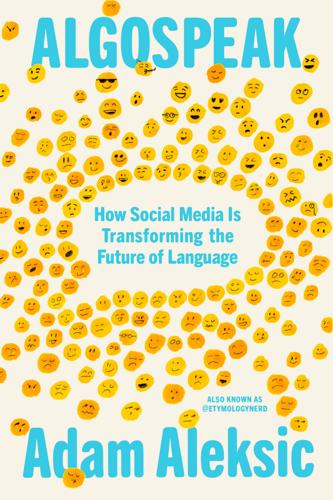
Algospeak: How Social Media Is Transforming the Future of Language
by
Adam Aleksic
Published 15 Jul 2025
Both allude to more serious phrases through phonetic similarity, both became popular through their PG silliness, and both spread beyond meme status: I recently caught my Harvard linguistics friend ironically saying “sewerslide” in real life, which is exactly how these words start to enter the mainstream lexicon. Upon finishing his 1948 book, The Naked and the Dead, the American novelist Norman Mailer was famously told by his publishers that he used the word “fuck” too many times for the book to be published. In response, Norman went through and replaced every “fuck” with the minced oath “fug,” and the publication process went forward. I love explaining “seggs” through this anecdote, because creators using it instead of “sex” are doing exactly the same thing.
…
See also microlabels Lady Bountiful (Carr), 18, 18 laggards, 53–55, 54 Language and the Internet (Crystal), 10n large language models, 209 late majority, 53, 54 Latin, 5, 7, 69n Latino dance circles, 147 laughing-crying emoji , 53–54, 188 laughing emoji, 53 LDAR (lay down and rot), 136 “le dollar bean,” 30 leetspeak, 14–15, 17, 34–35 “left this world,” 5 “leg booty,” 30 Legendary (TV show), 148 lesbian, substitutions for, 30 le$bian, 30 “Let’s Go Brandon,” 23 LGBTQ+/LGBTQIA+, 6, 29–30, 147–48, 204 lies, 66 lifestyle influencer accent, 82–89, 93–97, 167, 203 light academia, 166, 179 Lil Meatball, 39 linguistic appropriation, 146 linguistic contexts, multiple, 51 linguistic diversity, 213–16 linguistic experimentation, 72–73 linguistic founder effect, 95–96 linguistic landscape, new, 13 linguistic resonance, 61 linguistic tricks, 78 linguistic videos, 104 linguistic Whac-A-Mole, 12, 14–16, 30, 36, 108–9, 109, 209–10 “List of Generation Z Slang,” 190 literacy rates, 10 Little Women (Alcott), 167 Liverpool dialects, 216 lol, 38 LOLcats, 188 lolspeak, 35 long-tail model, 171–74, 171 lookism, 124–25, 129–30, 132, 134–35, 137–38 looksmaxxing, 125–26, 128–29, 132–33, 137, 190 lore, 200–202, 204 Lorenz, Taylor, 8 Lost Generation, 186 lowkey, 72 “low-key ate,” 206 M machine learning algorithms, 59 Mad Libs, 48 Madonna, 148 MAGA, 23 Maher, Olivia, 71 Mai, Anthony, 52–53 Mailer, Norman, 23 main characters, 202, 205 majority adopters, 140 makeup videos, 203 male supremacy, 130 Mandal, Shriya, 59–61, 76 manuscripts, 201 marginalized groups, 114–15, 154 marital probation, 72 marketing, 60, 69, 170–85, 189, 204–5, 213 mass-report videos, 29 Matthew effect, 77–78, 133 maxxing, 128, 133, 137 McCulloch, Gretchen, 10n McDonald, Glenn, 166–67, 173–74, 181–82 McDonald’s restaurants, 81 Mean Girls (film), 56 meaning making, 200–201 medical educational content, 20 Megan Thee Stallion, 175 Melcher, Louisa, 66–67 memes, 4–6, 48–50, 53–55, 73, 198, 219, 220 algorithms and, 9 attention hacking and, 141 context and, 199 culture and, 57 4chan and Reddit and, 140–41 history of, 188 marketing and, 141 metadata and, 9, 57 obtrusive, 56 spread of, 9, 12, 48–52, 56, 137, 191 men, substitutions for, 19, 25, m*n, 19, 25 men’s rights trolls, 135 mental health, 4, 9 mentally disabled, 30 Merriam-Webster, 197 Meta, 41, 172 metadata, 9, 43, 45–46, 50, 57, 101, 107–8, 164, 173, 183 metonymy, 24–25, 27 mewing, 126, 132, 138, 141, 190, 206–7 “Michael Jackson Eating Popcorn,” 155 microhooks, 69, 83 microinfluencers, 96 microlabels, 165–84, 189, 203–4 Middle East, 29 middle-schoolers, 3–5, 7–8, 46–47, 73n, 151, 161, 191–93 millennial pause, 85–86, 188 millennial pink, 187, 189 millennials, 141, 187–90, 193, 196, 204 millennial socks, 187 Minaj, Nicki, 41, 43, 157 minced oaths, 22–23 minorities, 28, 150 minority language, 218 misinformation, 116–18, 142, 212 misogyny, 127, 130, 135 mog, 125, 132, 134, 210 mogging, 128–29, 132 Mogwarts, 126 monkeycore, 164 Montell, Amanda, 136 moron, 30 mors, 5, 7 “most interesting thing about X,” 68 “Mother” (song), 148–49 “mothers,” 147, 149 MrBeast, 86–89, 91–92, 97 Museum of Pop Culture (Seattle), 3, 5, 7, 10 Musical.ly app, 40–41 music industry, 41–42, 166, 184, 212 “My favorite thing about X is,” 62 N nail polish emoji , 29 Naked and the Dead, The (Mailer), 23 Narayanan, Arvind, 106, 117–18 narrative language, 203 National Association of the Deaf, 218 National Council on Severe Autism, 116 naturecore, 165 negativity, 118–21, 135–36, 139, 219 neologisms, 175 Netflix, 68 netspeak, 34 neurodivergent community, 115, 116 neurospicy, 115, 117 “neutral” American dialect, 93–94 Newgen, 137 Newman, Kayla, 157–59 news broadcasts, 93–94 News Daddy of TikTok, 211–12 newspaper comics, 18, 188 newspapers, 38, 49, 68, 108, 113 news sources, 211–12 New Yorker, 218 New York Times, 62, 175, 192–93, 211–12, 216–17 New York University (NYU), 62–63 nia, 152 niche communities, 99–123, 140, 171–73, 181–82 ninja emoji , 21 “nip nops,” 22, 50 Nirvana, 3 “no because,” 73–77 noguing, 149 non-Deaf ASL creators, 217 noob, 35, 38 normies, 128 “Not you,” 146 “not you doing ____,” 73 NPCs, 202 NPR, 82 number 13, 100 n-word, substitutions for, 21, 28, 152 O Oberlin College, 126 obtrusiveness, 55, 56, 192 offensive words, 17–18, 30 offline, online words moving, 10, 35, 42, 73, 77, 108, 110–12, 116, 122, 203, 211, 216 ohio, 44 O.K., 38, 108, 113 okay, 38, 49 “OK boomer,” 188, 196 Old English, 5 “old money,” 179 Old Norse, 5 “Old Town Road” (song), 42 oligopoly, 181 “One thing people don’t tell you about X is Y,” 65 “on fleek,” 39, 55, 158–59 “on god,” 47n “on gyat,” 47 online disinhibition effect, 135 online intertextuality, 199 online sociolects, 34, 35 “on sigma,” 47, 50 “on skibidi,” 47 “on X,” 47 opening lines, 62–68, 76 opp, 152, 154, 162, 210 optimal distinctiveness, 183 Orange Is the New Black, 48 “orange man,” 25 “orange peel theory,” 72 originators, crediting, 158–60 out-groups, 103, 115–16, 148, 155, 189, 193, 201, 221 Oxford English Dictionary, 47 “Oxford study,” 135, 138–39 Oxford University Press, 191n P Page, Dylan, 211–12 Palestine, 26 Palestine flag emoji , 27 palm (of hand), 27, 34 parasocial interactions, 64, 84 Paris Is Burning (documentary), 148 Parker, Charlie, 145 party, substitution for, 49, 57 “passed away,” 5, 9 pastel goth, 168–70, 181, 201, 203 pattern recognition, 201 Payman, Fatima, 210–11 pay-to-play models, 181 PBS Origins (TV show), 156 peach emoji , 20–21 peen, 22 pee-pee, 22 pen, pencil, 19–20 penis, respellings of, 19–22 p3nis, 20 pen*s, 20 people, 64–65 “People are finally doing X,” 65 Pepe the Frog meme, 134 performance art, 66 period, 155, 160 “periodt,” 155 permanent wave music, 166 personalized recommendations, 12, 40–41, 43, 61, 99–123, 189, 204 PewDiePie, 173 Pew Research Center, 187 pHashing technique, 140–41 phrasal templates, 47–48, 50–51, 56, 73, 110–11, 121, 133 phrases, coining, 158 phrenological theories, 133, 135 pictography, 20–21, 35 pilled, 126, 133, 137 Pinker, Steven, 30 plaguecore, 164 plausible deniability, 25, 159 plot, 202 Poe’s law, 138–39 Pokémon discussion board, 140 polarization, 110, 119, 218–19 political discourse, 6, 19, 24–25, 110, 119 pop culture, 12 pornography, 6, 20–21, 34 portmanteaus, 100 Portuguese language, 206–7 positive feedback loops, 42, 55, 77, 104–5, 190 posting time, 61 post-ironic nods, 199 postmodern aesthetics, 169 post titles, 59–60 post-Vine, 47 pr0n, 34 prawn, 34 preferences, stated vs. revealed, 119–21, 123 preferential attachment, 215 preppy, 176–79, 181–83, 189, 195 presentation styles, 69–70 Presley, Elvis, 156 prestige dialect, 92–94, 215 “pretty on fleek,” 157 preverb music, 166 priming, 75 print media, 10, 38, 51, 52 pro-Palestine creators, 27 psychology, 58, 69, 75 punk music, 164 punks, 145, 168, 201 pwned, 35 Q QAnon, 134 queens, 147–48, 157, 161 queer community, 29–30, 52, 147, 149, 204.

Active Measures: The Secret History of Disinformation and Political Warfare
by
Thomas Rid
Fellwock announced CARIC for the first time over Thanksgiving 1972 in Chicago, on a flyer that he distributed at a conference of the People’s Coalition for Peace and Justice, an outfit with links to the Communist Party. Four months later, in March 1973, CARIC published its first—soon to be notorious—bulletin, Counterspy. Around the same time, the novelist Norman Mailer had also founded a New York–based organization to investigate American intelligence agencies, and his had a better name: the Fifth Estate. In January 1974, CARIC and the Fifth Estate joined forces and formed the Organizing Committee for a Fifth Estate. The Fifth Estate was a volunteer organization, with new headquarters established at 2000 P Street NW, just off Dupont Circle in Washington, D.C.
…
Computers, in early 1975, were large and prohibitively expensive machines that served powerful corporate, military, and intelligence interests—yet the beginnings of the age of personal computing were already anticipated by the counterculture avant-garde. “Technology,” the Fifth Estate activists wrote, must not be used “to fill dossiers on our friends, families, and neighbors. As long as advanced technology is controlled by an elite few, technofascism is being advanced and promoted.”20 The activists, with Norman Mailer’s support, decided to take some of the tools they acquired working for intelligence agencies and turn them against those very intelligence agencies. As they explained to their readers, “Information gathered by the Fifth Estate goes through a traditional intelligence cycle consisting of: collection, production, analysis, dissemination, and operations.”21 America’s alternative intelligence community had thus openly announced that it was planning to run operations against the CIA.
…
“Subversion of Law Enforcement Intelligence Gathering Operations,” Hearings, Part 1: Organizing Committee for a Fifth Estate, Committee on the Judiciary (Washington, DC: Government Printing Office, March 26, 1976), p. 14. 32. Agee, quoted ibid. 33. Andrew and Mitrokhin, The Sword and Shield, p. 617. 34. CIA, “Request by Senator Lloyd Bentsen (D., Texas) for Unclassified Information on Philip Agee,” Memorandum, OCL 78-2991/2, September 7, 1978, pp. 3–4. 35. Ibid. 36. Philip Agee, Norman Mailer, and Victor Marchetti, “Fifth Estate,” undated, “Subversion of Law Enforcement Intelligence Gathering Operations,” Hearings, Part 1: Organizing Committee for a Fifth Estate, Committee on the Judiciary, Washington, DC: Government Printing Office, March 26, 1976, pp. 43–44. 37. Counterspy 2, no. 2, p. 20. 38.

If Mayors Ruled the World: Dysfunctional Nations, Rising Cities
by
Benjamin R. Barber
Published 5 Nov 2013
If, as Saskia Sassen has suggested, “what contributes to growth in the network of global cities may well not contribute to growth in nations,”12 and if the growth of global cities is correlated with deficits for national governments, governments are unlikely to sit back and do nothing while their suzerainty is eroded. In the 1970s, in a funny and futile campaign to become mayor of New York, the author Norman Mailer floated the nutty idea of detaching the city from New York State and perhaps the United States of America, endowing it with independence.13 Some will see the notion of cities becoming sufficiently independent from states to rule the world as equally nutty. Surely states will fight to regain control of globalizing cities that contemplate cross-border actions, demonstrating forcefully that however collaborative and trans-territorial cities may regard themselves, they remain creatures of state power and subsidiaries of national sovereignty.
…
Instead, as an independent global mayor, he has become a leading advocate of best practices among cities, using his foundation to catalyze urban innovation and reform both in New York and throughout the United States. He has handed out awards to four hundred American cities and has enticed his City Council into legislating climate change initiatives that are likely to survive his departure from office. Back in the 1970s, in a nutty campaign for New York mayor he never stood a chance of winning, novelist Norman Mailer floated the idea of severing the Big Apple from the state and maybe the country too, letting it float off like a rogue iceberg, glistening with an alluring autonomy as a world metropolis just offshore from the powerful but parochial nation that did not understand it. Today, under the guidance of mayors like Ed Koch and Michael Bloomberg (who got a dispensation to allow Koch to be the last man buried in Manhattan), and with some help from the likes of Mayors John Lindsay, David Dinkins, and Rudy Giuliani, without becoming an iceberg at sea, the city has truly become a free-floating world metropolis with global influence.
…
little more than a cover-up for the stark police-blotter truths of Wisconsin Death Trip, Michael Lesy’s lurid evocation of small-town crime in rural America a hundred years ago.23 At sunrise, Oklahomans may croon “Oh, what a beautiful morning!” but by nightfall they face darker thoughts of the kind Norman Mailer explored in his Executioner’s Song. The Kansas imagined by such cynics is not the dreamy Oz of Dorothy’s Over the Rainbow, but the hardscrabble land of Truman Capote’s In Cold Blood and its dead-souled killers, or nowadays perhaps the wrecked towns strewn along Oklahoma’s real life tornado alley, where funnel clouds produce only wastelands, not emerald cities.
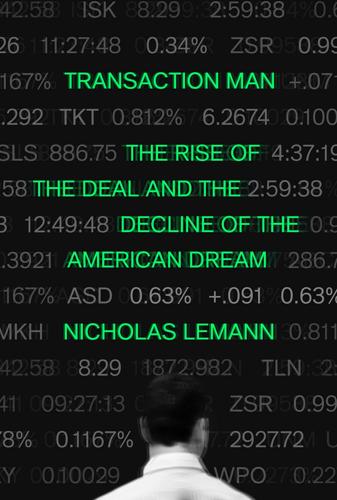
Transaction Man: The Rise of the Deal and the Decline of the American Dream
by
Nicholas Lemann
Published 9 Sep 2019
The Port Huron Statement (1962), the founding document of the student radical movement of the 1960s, reads as a kind of thirty-years-later sequel to The Modern Corporation and Private Property, sounding again and again the alarm about the dominance a few dozen corporations had established over American society. Norman Mailer, in his 1965 novel An American Dream, had his hero, Stephen Rojack, interrupt a lovemaking session to pluck out and fling away his partner’s diaphragm because it was a “corporate rubbery obstruction.” By 1970 Charles Reich, a Yale law professor who was another popular social critic of the day, took the argument to its logical conclusion by declaring, in The Greening of America, that by now the United States “can be thought of as a single vast corporation, with every person as an involuntary member and employee.”
…
“I find it very difficult”: Adolf Berle, Lecture in the Graduate School of Journalism, November 4, 1960, Oral History Research Office, Columbia University, 27. “You are the cog and the beltline”: C. Wright Mills, White Collar: The American Middle Classes, Oxford University Press, 2002, 80. “corporate rubbery obstruction”: Norman Mailer, An American Dream, Dial Press, 1965, 127. “can be thought of as a single vast”: Charles Reich, The Greening of America, Random House, 1970, 79. Probably the most important economics publication: Arrow-Debreu paper: Kenneth J. Arrow and Gerard Debreu, “Existence of an Equilibrium for a Competitive Economy,” Econometrica, Volume 22, Number 3 (July 1954), 265–90.
…
.; IPO of Lippmann, Walter Lithuanian Americans Lloyd, Henry Demarest London Lonely Crowd, The (Riesman) Long-Term Capital Management Lost City, The (Ehrenhalt) Luce, Henry Lugar, Richard Macalester College Mack, John macroeconomics; see also free-market purism Madigan, Lisa Madigan, Michael Madison, James Mailer, Norman Main Street and Wall Street (Ripley) Makers Users and Masters (Bentley) management, see bureaucrats; executives Managerial Revolution, The (Burnham) Mann, Thomas Manne, Henry Manyika, James Maples, Mike, Jr. Maria High School markets, see free-market purism; investment banking; specific financial instruments Markowitz, Harry Marx, Karl Marzullo, Vito Maslow, Abraham Mason, Edward McCain, John McDonald, Colleen McDonald, Laquan McKinsey & Company Means, Gardiner Meckling, William Medina, Harold Meeker, Mary Mellon Bank mergers and acquisitions; by banks; in Chicago Lawn; globalization of; at Morgan Stanley Merrill Lynch Merton, Robert C.
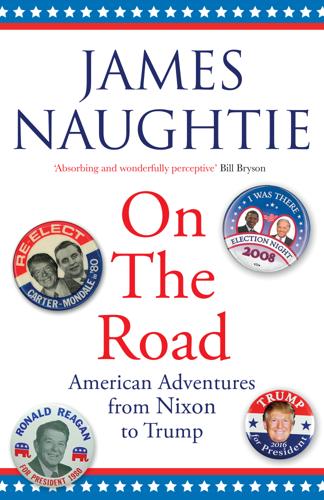
On the Road: Adventures From Nixon to Trump
by
James Naughtie
Published 1 Apr 2020
Whether at sea on the Pequod with Ishmael and Captain Ahab, following the historian James McPherson on the Civil War trail all the way from Fort Sumter to Appomattox, letting James Lee Burke open up the underworld of New Orleans, walking with Ed McBain through the 87th precinct of New York, or with Robert Frost and Robert Lowell in the poetry that captures the New England spirit at its best, at a political convention with Norman Mailer or following LBJ from Texas with Robert A. Caro as biographer, all of it is part of the same kaleidoscope, ever changing and never losing its sparkle. Of course, there is among the jumble of books on those shelves one called On the Road. But it is important to say that Jack Kerouac’s hedonistic insights from the 1950s, which, obviously, I could never match for their originality, were not the inspiration for this book.
…
In some cases, I was wholly wrong in my doubts. For example, a class run by the veteran magazine journalist Leonard Robinson – who’d worked on the New Yorker with a galère of its finest writers – was an exploration into some of the best writing in America, much of which I still had to discover. Norman Mailer I’d been gobbling up for years, but Gay Talese and Tom Wolfe now became constant companions, one of their battered volumes always in my bag, and I discovered Gore Vidal properly for the first time. However, a bunch of us was also anxious to get to Washington, so we hatched our research project and began to phone journalists who were deep in Watergate.
…
(‘RFK’), 32, 38, 65, 71, 72, 76 Kennedy, Rose, 76–7 Kerouac, Jack, 6 Kerry, John, 152–3, 154, 163 KGB, 93 Khatami, Mohammad, 131 Khomeini, Ayatollah, 71 Kim Jong-un, 195 King, Carole, 154 King, Martin Luther, 24, 65, 122, 155, 169, 176, 202 Kirkpatrick, Jeane, 85 Kissinger, Henry, 57, 59, 64 Klein, Joe, 162 Koch brothers, 120 Kohl, Helmut, 95–6, 97 Kopechne, Mary Jo, 71–2 Kornblum, John, 96 Krauthammer, Charles, 182 Ku Klux Klan, 216 Lavrov, Sergey, 150 Lee, Christopher, 110 Lee, Robert E., 172, 216 Lenin, Vladimir, 279 Leubsdorf, Carl, 34–6, 51 Levinson, Sanford, 283–4 Lewinsky, Monica, 119, 120, 121, 123, 261 Lewis, Jerry, 12, 15 Lieberman, Joe, 170 Life, 73 Lincoln, Abraham, 2–3, 41, 66, 120, 134, 194, 256, 260 Lincoln Memorial, 78, 169 Loeb, William, 180 Los Angeles Times, 55, 76 Louisiana Purchase, 240 Lowell, Robert, 6 McBain, Ed, 6 McCain, John, 167, 169–74, 181, 200–1 McCarthy, Eugene, 259 McCarthy, Joe, 38 McGovern, George, 54, 64, 180, 212 McHutchon, Graham, 116–17 Macintyre, Ben, 93 McPherson, James, 6 McQuaid, Joe, 180–1 Mailer, Norman, 6, 42, 293 Major, John, 117, 121 Making of the President (White), 74 Manafort, Paul, 183 Manchester Union-Leader, 180, 195 Marcia (cousin), 46–7 M*A*S*H, 45 Mason, Jackie, 15 Meadows, Chris, 209 Medina Ridge, Battle of, 111 Meese, Ed, 83 Melville, Herman, 297 mental health, 124, 269 Meyer, Christopher, 132 Milosevic, Slobodan, 130, 203–4 Miranda, Lin-Manuel, 293 MI6, 93 Mitchell, John, 52 Mitchell, Joseph, 29–31 Mondale, Walter, 67, 68, 88–9, 90–1 Mosey, Roger, 109 Mudd, Roger, 72, 73 Mueller, Robert, 184, 188, 195, 205, 221, 284, 289–90 Murdoch, Rupert, 100 Muskie, Ed, 180 Muti, Riccardo, 251 Nagin, Ray, 236 National Enquirer, 179, 198 National Governors Association, 87 National Press Building, 55 National Review, 98, 150 Naughtie, Andrew (son), 251, 300 Naughtie, Ellie (wife), 110–11, 300 Naughtie, Flora (daughter), 111 Naughtie, James: in Chicago, 80, 155, 158, 220, 221–52, 222 education of, 36–8 first arrives in US, 7, 9–33 first Thanksgiving of, 47 Greyhound travel of, 6–7, 11, 23, 34, 50 indentures of, 63 Leadership series of, see America’s Crisis of Leadership literary nature of, 6, 37, 52 in New Orleans, 23, 25, 222, 222–42 as Stern Fellow, 78–80 taco incident involving, 68–9 NBC, 74, 177 Negroponte, John, 151 neoconservatism, 129–31, 144, 149, 182 New York Post, 32 New York Times (NYT), 38, 54, 55, 76, 94, 104, 107, 176, 211 New Yorker, 29, 42, 120 Newhouse School of Communications, 42, 45 Newsday, 55 Newsome, Hawk, 216, 217 Newsweek, 162 Nichopoulos, George (‘Dr Nick’), 244, 245 Nightline, 102 Nixon, Richard, 5, 34, 35, 38–41, 43–4, 49–58, 65, 69, 79, 103, 124–5, 164, 183, 200, 294, 295 Ford pardons, 61 impeachment trial of, 265–6 resigns as US president, 59, 218 Watergate scandal, see main entry Norquist, Grover, 145–6 Novak, Phil, 45 Nunes, Devin, 291 Obama, Barack, 154–6, 160, 162–76, 183, 190–1, 193, 196, 199, 217, 231, 255, 287 becomes POTUS, 157–8, 168, 256–8 Obama, Michelle, 166, 193 Obamacare, 175, 178, 201, 205, 241 Observer, The, 76 ‘October Surprise’, 86 oil crises, 50, 69–70 Oklahoma bombing, 185 O’Neill, Terry, 183, 184 O’Neill, Tip, 94 optimism, 3, 4, 33, 60–1, 67, 154, 159, 168, 172, 251, 293 O’Rourke, Beto, 267–70, 272, 274 Oslo Accords, 114–15 Osnos, Peter, 82 Oswald, Lee Harvey, 179, 219 Palestine, 80, 114–15, 146 Palin, Sarah, 170–1, 175 Parker, Dorothy, 29 Parnas, Lev, 291 PBS, 38 Peel, John, 155 Perle, Richard, 144–5 Perot, Ross, 114 Pew Research Center, 237 philanthropy, 36, 183, 194, 236, 238, 259 Pick, Hella, 57 Pilgrim Fathers, 27, 133–4, 280 Plain Dealer, 55 Poirier, Dan, 135, 136 populism, 4, 118, 119, 152, 175, 180, 185, 193, 211–12, 260, 263, 266, 283, 296 Posner, Richard, 135 Powell, Gen.
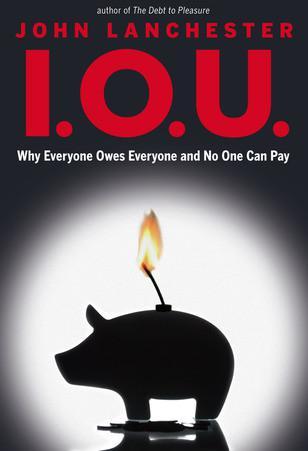
I.O.U.: Why Everyone Owes Everyone and No One Can Pay
by
John Lanchester
Published 14 Dec 2009
To adopt a metaphor I heard used by the chancellor of the Exchequer, Alistair Darling, it’s a bit like putting flowers in the hallway as a solution to the problem of dry rot. There are people whose job it is to sniff out funny smells, to think about them and what they mean, and to make plans about them on our behalf. They are the central bankers. There is a passage in Norman Mailer’s novel Harlot’s Ghost in which the narrator rhapsodizes about the CIA being “the mind of America.” Central bankers are a little like that. Their job is to notice everything and think about everything—everything economic—and then to act on it via one tool and one tool only: the interest rate.* This determines, or anyway influences, the level of borrowing, the level of credit, the level of economic activity, the level of inflation, the level of unemployment, the speed of growth, the exchange rate, the whole kaboodle, but it is also a fairly crude tool: it’s as if the central banker were sitting at a desk console with thousands of flashing lights and digital readouts and heads-up visual displays, all pouring in overwhelming quantities of data, and in response to it the banker can move only one lever, in a straight line backward or forward, and preferably only a very little at a time.
…
Morgan, 152 derivatives and, 64–71, 116, 120–21, 183 Exxon deal and, 67–68, 70, 121 Glass-Steagall Act and, 64–65 JPMorgan Chase, 190, 227 Julian, Harriette, 130–31 Kahneman, Daniel, 136–42, 193 Kerviel, Jérôme, 51 Keynes, John Maynard, 49n, 136 predictions of, 213–15 risk and, 55, 145 Kindleberger, Charles P., 104 King, Mervyn, 167, 178, 206 King’s Cross station, 88–90 Kreuger, Ivar, 105 Kynaston, David, 21, 23 leaderless group challenge, 139–40 Leeson, Nick, 51–52, 54 Lehman Brothers, 190, 204, 225 collapse of, 39, 75, 78 Leland, Hayne, 151 leverage: of banks, 35–36, 41–42, 70, 190 debt and, 60–61, 181, 190 deleveraging and, 41–42, 83 derivatives and, 51, 54–55 housing and, 60–61, 83, 95, 97 regulation and, 181, 186, 188, 190 risk and, 35–36 Li, David X., 115–17, 157–58 liabilities, 31–35 in balance sheets, 25–28, 31–34, 37 of banks, 25, 32–35, 37, 41, 204 of individuals, 27–28, 35 leverage and, 35, 41, 60 libel law, 93 life expectancies, 17, 213 liquidity, 212 housing and, 28–29, 90, 96–97 investments and, 60–61 Lloyds TSB, 36, 38–40 loans, lending, 74–76, 108–9 in balance sheets, 27, 30, 34 of banks, 22, 24, 27, 33–36, 41–42, 58–60, 67, 69–70, 74, 83–84, 91–94, 102, 117, 127, 129–30, 143, 146, 165, 187, 216–17, 229 credit and, 209, 216–17 derivatives and, 50–51, 55, 66–75, 80, 121–22 Exxon deal and, 67–68 interest rates and, 59–60, 66, 74, 102, 108, 145, 172–73 paying the bill and, 220–21 predatory, 122, 127–32 risk and, 66–67, 69–72, 74–75, 80, 95, 117, 145, 174 securitization in, 69, 74 see also mortgages London, 53, 84 housing in, 88–90 see also City of London Long-Term Capital Management (LTCM): collapse of, 142, 162, 164–65, 230–31 derivatives and, 54–56, 80 loss aversion, 137 Lovelock, James, 231 Lowenstein, Roger, 161 Macmillan, Harold, 216 Madoff, Bernard, 105, 171, 191–92, 195 Mailer, Norman, 172 Manias, Panics, and Crashes (Kindleberger), 104 manufacturing, 4, 13, 58, 109, 229 and financial vs. industrial interests, 197, 199 Marxist analysis of, 15–16 stocks and, 148–49 market discipline, 183–84 Markopolos, Harry, 192 Markowitz, Harry, 147–49, 158 mark to market, 42, 105–6 Marx, Karl, 15–16 Maryland, housing in, 125–31 Masters, Blythe, 68, 121 mathematics, 5, 231 derivatives and, 47–48, 52–54, 115–17, 166 risk and, 46, 55–56, 74, 133, 136, 146–50, 154, 158, 160–67, 202 of share pricing, 147–48 Meriwether, John, 54 Merrill Lynch, 39, 77, 120, 190, 227 Merton, Robert, 54–55 microeconomics, 137 Minsky, Hyman, 104 Monetary Policy Committee, 178–79 money: assumptions based on primacy of, 202–4 cost of, 102–3 flows of, 7–9, 26 inconceivable amounts of, 8 Money Machine, The (Coggan), 25 Moody’s Investors Service, 62, 70, 114, 119, 208, 210 Morgan, John Pierpont, 20, 64 Morgan Stanley, 40, 64, 227 Morris, Charles, 42 mortgages, 38–40, 83–87, 89–95, 97–102, 110–32 in balance sheets, 27–28 balloon payments on, 100 and buy-to-let properties, 177 conforming, 112, 124 credit ratings and, 123–24, 126 of Cutter family, 126–27 defaults on, 159–60, 163, 165, 229 derivatives and, 38, 57–58, 75–76, 112–22, 132, 157–60, 172, 210–12 discriminatory practices and, 99–101, 127 durations of, 95 endowment, 86–87, 89–90, 146 Iceland’s economic crisis and, 10–11 interest and, 8, 58, 86, 89, 91–92, 95, 100, 102, 108, 110, 112–14, 122, 128, 145–46, 174, 176, 212 “liar,” 126, 132 “no doc,” 132 No Income, No Job or Assets (NINJA), 126 piggyback, 132 predatory lending and, 122, 127–32 regulation and, 99–100, 185 risk and, 145, 158–60, 163–65 sizes of, 92–94 subprime, 38, 75, 83, 100, 113–19, 122–25, 127, 132, 157–59, 165, 202, 210 see also houses, housing, home ownership Nasdaq, 104 nationalization, 24, 39–40, 228–30 New York Times, The, 77, 98, 208 “Night in Tunisia, A,” 45 Nikkei 225, 51–52, 54 9/11 terrorist attacks, 2, 107 Northern Rock, 5, 39, 94, 194, 206 Obama, Barack, 77, 205 regulation and, 188, 190, 223–24 Objectivism, 142–43, 173 oil, 3–4, 107–8, 148–49 “On Default Correlation” (Li), 116 options, 50–52, 151, 174, 184 how they work, 46–47, 50–51 Osaka exchange, 54 Pacioli, Luca, 26 panic of 1893, 64 panic of 1907, 20, 64 Parker, Charlie, 45 Paulos, John Allen, 8 pensions, 76–77, 165, 204 in balance sheets, 27–28, 31 Phillips, Julia, 199 politics, politicians, 5–6, 19–21, 23–25, 81, 118–19, 169–70, 176–78, 217–26, 228–32 AIG bailout and, 76–78 banks and, 25, 33, 43, 182, 186, 195, 202, 207, 211, 217, 228–31 bonds and, 29–30, 61–62, 103, 109, 118, 144, 176–77, 208–9 derivatives and, 57, 183–86 financial industry’s ascent and, 19–20 free-market capitalism and, 14–15, 19, 21, 23–24 housing and, 87–89, 91, 96–101, 177–78 Iceland’s economic crisis and, 9–10, 12, 24, 223 interest rates and, 102–3, 107–8, 172–80, 221 paying the bill and, 219–23 regulation and, 15, 19–21, 24, 169, 180–92, 195, 199, 201, 223–26 risk and, 142–43, 164–66, 174, 184 Ponzi, Charles, 105 Ponzi schemes, 191–92 poor, poverty, 3–4, 13, 21, 82, 179, 196 housing and, 100, 113, 118, 121–23, 126–27, 130–31, 163 pork bellies, 48–49 portfolio insurance, 151–52, 162 “Portfolio Selection” (Markowitz), 147 Posner, Richard A., 120, 174, 182, 193 Powell, Anthony, 62 price, prices, 105–11, 203 and banking-and-credit crisis, 216–18, 220 bonds and, 61, 63, 102–3, 108–10, 144 derivatives and, 38, 46–52, 54, 56, 75, 158–59, 166 of houses, 5, 28–29, 37–38, 61, 71, 86–91, 101, 109–11, 113, 115, 125, 157, 160, 164–66, 173–76, 194, 208 of oil, 3–4, 107–8, 148–49 risk and, 145–50, 158–59, 164–66 of stocks, 102, 105–6, 109–10, 147–51, 158, 174 of toxic assets, 37–38, 42 volatility of, 47–48, 148–50 “Pricing of Options and Corporate Liabilities, The” (Black and Scholes), 45, 47–48, 147 probabilities, 46, 55, 74, 115, 141, 145, 153–55, 160–63 profits, 20, 28, 104–6, 110, 192, 226–28, 230 banks and, 33, 35, 67, 78, 227–28 and benefits of debt, 59–60 derivatives and, 50, 54, 57, 63, 65, 106, 114, 121–22 Enron and, 105–6 regulation and, 204, 226 risk and, 150, 226 Protection of Homeowners in Foreclosure Act, 131 “Quiet Coup, The” (Johnson), 19–20, 185–86 Ragtime (Doctorow), 64 Rand, Ayn, 142–43, 173 Reagan, Ronald, 14, 19–20, 24, 142, 185 recessions, 42, 89, 94, 142, 171, 175, 219 regulation, deregulation, 15, 19–22, 24, 169, 180–202 banking and, 21, 33, 180–91, 194–96, 199–200, 202, 204–5, 208, 211, 223–27 bond ratings and, 208–9 derivatives and, 68, 70, 73, 153, 183–86, 200–201 framework and regime of, 189–92 market discipline and, 183–84 mortgages and, 99–100, 185 proposals for, 223–26 risk and, 143, 153, 164, 187–88, 191, 195, 202, 204–5, 212, 224, 226 in U.K., 21–22, 105n, 180–82, 194–96, 199–201, 218 in U.S., 181, 184–92, 195, 199–200, 223–24, 227 Reykjavík, 10, 12, 170 risk, risks, 49–58, 66–76, 133–36, 141–67, 211–12, 219 AIG and, 75–76 assessment of, 46, 55–56, 74, 133, 135–36, 141–43, 145–67, 187–88, 191, 202, 205, 212, 216, 226 banks and, 19, 34–37, 41, 133, 135–36, 143, 150–54, 156–57, 160, 165–66, 174, 187–88, 191–95, 202, 204–7, 216, 224, 226, 228, 230 bonds and, 61–63, 103, 118, 144, 154, 208 derivatives and, 46–47, 49–52, 54–55, 57–58, 66–75, 78–80, 114–15, 117–22, 151, 153, 158–60, 163, 166–67, 184–85, 205, 212 desirability of, 144, 146, 150, 206–7 diversification and, 146–48 Greenspan and, 142–43, 164–66, 174, 184 hedging of, 49–50, 52, 58, 115, 205 historical data and, 163, 166 housing and, 88, 94–97, 112–13, 125, 129, 145, 158–60, 163–65 investing and, 5, 68, 70, 88, 103, 144, 146–53, 158, 165, 184, 190 leverage and, 35–36 LTCM and, 55–56 overconcentration of, 72–73 regulation and, 143, 153, 164, 187–88, 191, 195, 202, 204–5, 212, 224, 226 securitization and, 69–70, 163, 165 of stairs, 134–35 VAR and, 151–57, 162–63 risk-adjusted return on capital (RAROC), 150–51 Ritholtz, Barry, 219–20 Robinson, Phillip, 128–31 Rogers, Jim, 221 Royal Bank of Scotland (RBS), 34–36, 120, 227 bailout of, 32, 40, 204 Russia, 3, 15–16, 18, 53 bond default of, 55–56, 162, 164–65 Salomon Brothers, 63 Sanford, Charles, 150 Santander, 40 savings, 28, 86, 107, 177, 179, 187 savings and loan crisis, 73, 185, 220 Scholes, Myron, 45, 47–48, 54–55, 147 Securities and Exchange Commission (SEC), 195 credit ratings and, 209–10 regulation and, 153, 186, 189–92 securitization, 20, 22, 200 derivatives and, 69–70, 74, 113–14, 117–19, 122, 212 risk and, 69–70, 125, 163, 165, 212, 224 selling, sales, 34, 42, 104, 174, 203 of bonds, 59, 61–63, 144 derivatives and, 46–50, 52, 56, 65, 67–68, 73–74, 120 of equity, 58–59 of houses, 28–29, 71, 89–90 risk and, 151–52, 165, 224 Shiller, Robert, 106, 145n, 194 Simon, David, 83–84 Singapore exchange, 54 Skilling, Jeffrey, 106 small numbers, law of, 137 Sociét Générale, 51, 77 solvency, insolvency, 28–29 of banks, 36–38, 40–43, 64, 74–75, 120 Spain, 15, 40, 177, 214 contracting economy of, 222–23 housing in, 92, 110 special purpose vehicles (SPVs), 70, 120 stairs, deaths caused by, 134–35 Standard & Poor’s (S&P), 62, 114, 151, 209 statistics, 160–62 Stefánsdóttir, Rakel, 9–10, 12 stock market, stocks, 22, 54–55, 61, 76, 80, 101–11, 115, 226 bubbles and implosions in, 3, 42, 103–9, 142, 175–76 derivatives and, 50–52, 54 investing in, 59, 73, 101–7, 111, 146–52, 158, 175, 192 new-economy, 103 1929 crash of, 152, 199, 213 October 1987 crash of, 142, 151–52, 161–62, 164–65 prices of, 102, 105–6, 109–10, 147–51, 158, 174 structured investment vehicles (SIVs), 120 Summa de Arithmetica (Pacioli), 26 Summers, Lawrence, 43, 74, 188 Taleb, Nassim, 53, 155–56 Tax Reform Act of 1986 (TRA), 100 technology, 42, 104, 149, 155, 166 terrorism, 2, 12, 18, 107 Tett, Gillian, 121, 193 Thatcher, Margaret, 199, 217, 222 free-market capitalism and, 14, 21, 24 on housing, 87, 91, 98 regulation and, 21, 195–96 torture, end of ban on, 18 tranching, 117–18, 122 Treasury, British, 181–82 Treasury, U.S., 43, 54, 64, 74, 76–78 AIG bailout and, 76, 78 regulation and, 188–90 Treasury bills (T-bills), 29–30, 62, 103, 118, 144, 208 China’s investment in, 109, 176–77 Trichet, Jean-Claude, 92 Trillion Dollar Meltdown, The (Morris), 42 Troubled Assets Relief Program (TARP), 37, 189 Turner, Adair, 181 Tversky, Amos, 136–38, 141 UBS, 36, 120 uncertainty, 96 fair value theory and, 147–48 risk and, 55–56, 153, 163 United Kingdom, 9, 11–12, 18, 28–29, 61, 122–24, 134, 139, 194–202, 216–18 banking in, 5, 11, 32–36, 38–40, 51–54, 76–77, 89, 94, 120, 146, 180, 194–96, 199, 202, 204–6, 211–12, 217, 227–28 bill of, 220–22, 224 and City of London, 21–22, 32, 195–97, 200, 217–18 credit ratings and, 123–24, 209 derivatives and, 72, 200–201 financial vs. industrial interests in, 196–99 free-market capitalism in, 14–15, 21, 230 GDP of, 32, 214, 220 Goodwin’s pension and, 76–77 housing in, 38, 87–98, 110, 122, 177–78 interest rates in, 102, 177–80 personal debt in, 221–22 prosperity of, 214, 216 regulation in, 21–22, 105n, 180–82, 194–96, 199–201, 218 United Nations, 4 United States, 17–22, 34, 62–71, 120–31, 134n, 165, 199–201 AIG bailout and, 76–78 banks of, 36–37, 39–40, 43, 63–71, 73, 75, 77–78, 84, 116, 120–21, 127, 150, 152, 163, 183, 185, 190, 195, 204, 211–12, 219–20, 225, 227–28 bill of, 219–20 China’s investment in, 109, 176–77 credit and, 109, 123–24, 195, 208–9, 211 free-market capitalism in, 14–15, 230 housing in, 37, 82–86, 95, 97–101, 109–10, 114–15, 122, 125–31, 157–58, 163 interest rates in, 102, 107–8, 173–77 regulation in, 181, 184–92, 195, 199–200, 223–24, 227 urban desolation in, 81–86 value, values, 42, 74–75, 78–80, 103–4, 179, 181, 217–18, 220, 227 bonds and, 61, 103 derivatives and, 38, 48–49, 185, 201 housing and, 28–29, 71, 90, 92–95, 111, 176 investing and, 60–61, 104, 198 LTCM and, 55–56 notional, 38, 48–49, 80 value at risk (VAR), 151–57, 162–63 Vietnam War, 18, 220 Viniar, David, 163 volatility, 20, 158 risk and, 47–48, 148–50, 161 Volcker, Paul, 20 Waldrow, Mary, 127 Wall Street, 22, 53, 64, 129, 188 Washington Post, The, 18 wealth, 4, 10, 19–21, 64, 204, 206 financial industry’s ascent and, 20–21 in free-market capitalism, 15, 19, 230 housing and, 87, 90, 121 Keynes’s predictions on, 214–15 in West, 218–19 Weatherstone, Dennis, 152 Wells Fargo, 84, 127 Wessex Water, 105n West, 14–18, 43, 213, 231 conflict between Communist bloc and, 16–18 free-market capitalism in, 14–15, 17, 21, 23 wealth in, 218–19 wheat, 49n, 52 When Genius Failed (Lowenstein), 161 Williams, John Burr, 147 Wilson, Lashawn, 130–31 Wire, The, 83–84 World Bank, 58, 65, 69 * GDP, which will be mentioned quite a few times in this story, sounds complicated but isn’t: it’s nothing more than the value of all the goods and services produced in an economy.
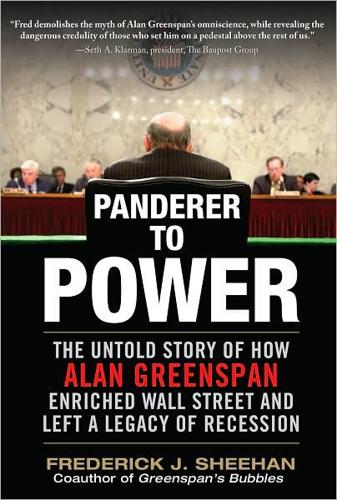
Panderer to Power
by
Frederick Sheehan
Published 21 Oct 2009
Greenspan joined “some 60 chums” of Malcolm Forbes on Forbes’s yacht to celebrate the publisher’s birthday. Others who sailed included Happy Rockefeller, Gloria Vanderbilt, Arthur Ochs Sulzberger (publisher of the Times), Dina Merrill, and New York City Mayor Ed Koch.8 On another occasion, Greenspan joined Norman Mailer and United Nations delegates from the Netherlands, New Zealand, and Spain to ponder why Carl Bernstein was “wearing a white scarf with his black-tie ensemble at table?”9 Greenspan attended Barbara and Allen Thomas’s annual dessert party: “Among the 65 guests [was]Alan Greenspan, the economist.
…
In a long Times magazine feature, “Living Well Is Still the Best Revenge,” “the economist Alan Greenspan” is discussed as being among “the very rich, very powerful and very gifted,” even though Barbara Walters was unable to attend this rendezvous at the home of Oscar and Françoise de la Renta. Others mentioned in this tribute to the anointed include Ahmet and Mica Ertegun, French director Louis Malle (escorting Candice Bergen), Norman Mailer, Diana Vreeland, Jerzy Kozinski (author of Being There), and Giovanni Agnelli (who asked Mailer on Greenspan’s arrival if that “was indeed Alan Greenspan ‘the famous economist’”).13 He was even quoted in a cooking column, as a gourmet judge of chocolate desserts.14 The inflation in prices during the 1980s was at least matched by the inflation of words, but it does appear that the economist Alan Greenspan was indeed “famous.”
…
(KKR), 79–80, 116–117, 317, 321, 322 Kohn, Donald L., 189 Kosinski, Jerzy, 75, 119 Kraft, Joseph, 55, 56 Kravis, Henry, 317, 321, 357 Kroszner, Randall, 334 L LaWare, John, 136 LBOs (see Leveraged buyouts) Leasco, 35, 351 Le Figaro (France), 341 Lehman Brothers, 272, 274, 275, 301, 310, 315, 317, 321, 347n.48, 354 Leland, Hayne, 110 Leland O’Brien Rubinstein Associates (LOR), 110–112 Leuthold, Steve, 150 Leverage: in 2006, 313 in 2007, 303 in housing market, 272–273 and LTCM failure, 185–186 and recovery from 1990s recession, 124–126 Leveraged buyouts (LBOs, leveragedbuyout firms), (see also privateequity firms), 80, 116–117, 317–319 Levitt, Arthur, 223 Lewis, Ken, 333 “Liar’s loans,” 330 Lidsky, Betti, 295 Lidsky, Carlos, 295 Liman, Arthur, 90 Lincoln Savings and Loan Association (Irvine, California), 6–7, 85–93, 100, 165, 274 Lindley, David, 109 Lindner, Carl, 80, 87–90, Lindsey, Lawrence “Larry,” 128–129, 161–162, 166, 238–240, 251–257, 259, 266, 365 warns Greenspan about ’irrational exuberance’, 240 warns Greenspan about consumer debt and longterm social cost, 258 warns Greenspan about actions not matching words, 162 Ling, James Joseph, 35, 351 Ling-Temco-Vought, 35 Liquidity, 116–117, 302, 325, 331, 363 Lockhart, James, 270 LongTerm Capital Management (LTCM), 181–187, 190 Longterm investment, 350–351 LOR (Leland O’Brien Rubinstein Associates), 110–112 LTCM (see LongTerm Capital Management) Los Angeles, California, 36, 117, 291, 319, 320 Los Angeles Times: “L.A. Land blog,” 347 Lucent, 207 Luckman, Charles, 23 M Madrick, Jeff, 59–60 Maestro (Bob Woodward), 171, 236 Mahar, Maggie, 210 Mailer, Norman, 74 Maisel, Sherman, 40 Malle, Louis, 75 Major, John, 323 Mankiw, Greg, 147–148 Manufacturing: 1980s decline in, 78 from 1998 to 2003, 291 from 2000 to 2004, 307–308 in mid-century, 23 overseas plants for, 44 profits from, 2–3 Margin calls, 128 Margin requirements, 104, 105, 161, 175, 219–220, 223, 230 Maricopa, Arizona, 357 Markey, Ed, 223 Martin, Justin, 17, 195–196 Martin, Steve, 353 Martin, William McChesney, Jr., 4, 20–21, 23–24, 26, 27, 32 n.6, 33–34, 39–41, 44, 65, 66, 115, 126, 201, 287, 300, 305, 350, 351, 362 Mayer, Martin, 4, 21, 88, 90 McCabe, Thomas B., 20n.5 McCain, John, 85, 215 McCulley, Paul, 245 McDonough, William, 186, 187, 247 McNamara, Robert, 29, 75 McTeer, Robert, 206, 247 Meany, George, 43–44 Measuring Business Cycles (Arthur Burns), 12 Media, stock market and, 248–249 Meeker, Mary, 233, 244 Mercury Finance Corporation, 165 Meriwether, John, 183, 187 Merrill, Dina, 74 Merrill Lynch, 116, 131, 144, 232–233, 272, 332, 333, 347n.48, 358 Merton, Robert, 183, 187 Mexico, bailout of, 135–136 Meyer, Laurence, 138, 139 Miami, Florida, 89, 295 Michaelcheck, William, 125 Micron Technology, 207 Microsoft Corporation, 177, 207, 216 Middle class, 252–253, 355 Milken, Michael, 7, 80, 81, 86, 87, 89, 90, 117 Miller, G.

The Birth of the Pill: How Four Crusaders Reinvented Sex and Launched a Revolution
by
Jonathan Eig
Published 12 Oct 2014
It would take nothing less than a sexual revolution—a term of Reich’s creation—to create a truly free society. Reich was the prophet of the orgasm. He even devised a special box—the Orgone Energy Accumulator—to help harness orgasmic energy, which he believed circulated in the atmosphere and in the human bloodstream. Norman Mailer, Saul Bellow, William Steig, and many other intellectuals later sat in the box (Albert Einstein considered it but politely declined). Eventually the federal government labeled Reich a fraud, but by then it didn’t matter. He had already inspired a generation of believers who would become central players in the sexual revolution.
…
Richardson-Merrell was confident it would win FDA approval and thalidomide would soon be as popular in the United States as it was in Europe. While Sanger and Pincus waited, Hugh Hefner opened the first Playboy Club, a so-called Disneyland for adults, where the famous Bunnies strolled in their electric-blue and kelly-green costumes, each breast looking to Norman Mailer “like the big bullet on the front bumper of a Cadillac,” with little white tails bouncing on the ends of their bottoms. Within two years, the clubs would have three hundred thousand members. In February 1960, while the FDA continued to review the application for Enovid, results of a Gallup poll showed nearly three out of four people believed birth control should be made available to anyone who wanted it.
…
A., 137 Liberace, 126 libido (sexual desire), 4, 5–6, 25, 32, 34, 39, 51, 52–54, 109–10, 172, 179–80, 184–85, 215, 223–24, 296, 317–18 Lieberman, Seymour, 89 life-tables, 253 Lifschitz, Leon, 69 Lippmann, Walter, 34 “little Comstock laws,” 295 lobotomies, 175, 177 Loeb, Jacques, 70–71 logarithms, 78 Lollobrigida, Gina, 188 London, 296 Longfellow, Henry Wadsworth, 67 Los Angeles, 292–94, 319 Love’s Coming of Age (Carpenter), 33 Lowell, Mass., 174 Lower East Side, 34–35, 53, 63, 150 Loy, Myrna, 197 Loyola University, 109 Lutheran Church, 297 Lysol, 37–38 MacArthur, Douglas, 210 machorras (barren women), 165–66 Mailer, Norman, 16, 294 Maisel, Albert Q., 259, 331n Makepeace, A. W., 9 malaria, 4, 61, 164 Malthus, T. R., 47–48 “Malthusian belts,” 71 mammals, 2, 70, 71, 217 Mantle, Mickey, 145 March of Dimes, 162 Margaret Sanger Research Bureau, 56, 103, 171–72, 279 Marker, Russell, 135–39 Marot, Helen, 45 marriage, 6, 17, 18, 19, 36–37, 42, 43, 105–14, 125, 156, 165–66, 174–75, 185, 186, 187–88, 223, 245, 247, 272–73, 310, 320 Marriage Manual, A (Stone), 272 Marsh, Ngaio, 85 Maryland, University of, 136 masculine characteristics, 191 Masonic Building, 214–15 Massachusetts, 95, 113, 130, 276, 295–96 Massachusetts, University of, Medical School, 322 Massachusetts Institute of Technology (MIT), 91, 94, 101, 194, 304, 316–17 Masters, William, 12 masturbation, 5, 17, 42, 43, 107, 180 McCarthy, Joseph, 18, 186 McCormick, Katharine Dexter: background of, 91 as birth control advocate, 90, 94–95, 98, 100–101, 140–45, 155, 156, 179–82, 199–200, 229, 235, 236, 258, 260, 280, 293, 304–5, 308, 309, 321–22 birth control pill supported by, 258, 260, 280, 293, 308 in Boston, 190–91, 199–200 correspondence of, 90, 100–101, 149, 158, 192, 199–200, 204, 206, 241, 304–5, 315 death of, 317 diaphragms imported by, 94–95 elitism of, 149, 158–59 as feminist, 93–96, 156, 193–94, 304, 316–17 Geneva chateau of, 90–91, 95 marriage of, 90–93, 95, 175 MIT degree of, 91, 94, 101, 194, 304, 316–17 personality of, 91–93 physical appearance of, 91 Pincus’s relationship with, 90, 140–42, 156–58, 190–91, 199–200, 206, 207, 241, 315 Pincus’s research funded by, 90, 99, 100–101, 140–45, 154, 155–57, 161, 172, 179–80, 189, 190–95, 199–200, 204, 206, 207, 241, 260, 296, 304–5, 309, 312, 315, 317, 321 Planned Parenthood funded by, 95, 98, 99, 193–95, 199 population control supported by, 193–95, 304–5 press coverage of, 95, 96 Puerto Rican trials as viewed by, 158–59, 161 racial views of, 158–59 Riven Rock estate of, 92–93, 96 Rock’s research supported by, 181–82, 193–94, 207, 304 Sanger’s relationship with, 90, 94, 95, 98, 99, 100–101, 140–45, 149, 199–200, 204, 235, 304–5 in Santa Barbara, Calif., 280 wealth of, 90, 95, 96, 97, 140–42, 175, 194, 309, 316–17 as widow, 90, 96, 97, 309 women’s suffrage supported by, 93–94 Worcester Foundation visited by, 99, 140–42, 157–58 McCormick, Mary Virginia, 92 McCormick, Stanley Robert, 90–91, 95, 96 McDougall, William, 53 McKenzie, Mrs.
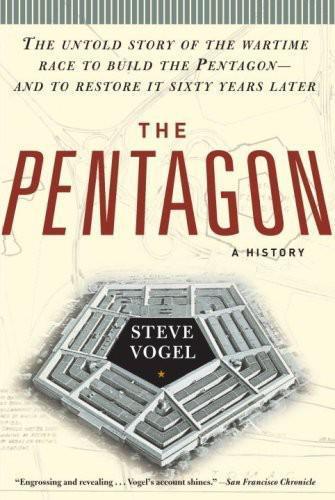
The Pentagon: A History
by
Steve Vogel
Published 26 May 2008
Johnson, Army chief of staff, 1964–1968 David McGiffert, under secretary of the Army, 1966–69 Lieutenant Colonel Ernest Graves Jr., son of Ernest Graves and aide to the secretary of the Army, 1967–68 Captain Phil Entrekin, commander of C Troop, 1st Squadron, 6th Cavalry Regiment at the Pentagon, 1967 Abbie Hoffman, marcher at the Pentagon, cofounder of Youth International Party (Yippies) Norman Mailer, marcher at the Pentagon, author of The Armies of the Night Bill Ayers, marcher at the Pentagon, later member of Weather Underground Rita Campbell, custodial foreman for Pentagon’s fourth floor cleaning crew The Post-Vietnam Years Donald Rumsfeld, secretary of defense, 1975–77, 2001–2006 Colin Powell, military assistant to secretary of defense Caspar Weinberger, 1983–86; chairman of the Joint Chiefs, 1989–93; secretary of state, 2001–05 John Hamre, Department of Defense comptroller, 1993–97; deputy secretary of defense, 1997–99 Paul Wolfowitz, deputy secretary of defense, 2001–2005 Pentagon Management David O.
…
The targeting of the Pentagon by antiwar demonstrators reflected the sinister image that it had assumed in the minds of many Americans. The building had come to personify the “military-industrial complex” that President Dwight D. Eisenhower had warned of six years earlier. The building’s very size and shape made it the perfect outlet for hostility. Norman Mailer, who would march with the demonstrators and win the Pulitzer Prize for his account of the event, The Armies of the Night, wrote that the protesters “…were going to face the symbol, the embodiment, no, call it the true and high church of the military-industrial complex, the Pentagon, blind five-sided eye of a subtle oppression which had come to America out of the very air of the century…” There had been previous demonstrations at the Pentagon, the most shocking two years earlier, in the twilight of a November evening in 1965.
…
Army intelligence concluded after the march that there had been “probably fewer than 500 violent demonstrators; however these violent types were backed by from 2,000 to 2,500 ardent sympathizers.” The actions of this hardcore minority would dominate the day and form the lasting impressions of the march. Marching at the front, arms linked, were prominent antiwar demonstrators including Dave Dellinger, Jerry Rubin, Norman Mailer, the poet Robert Lowell, and Benjamin Spock, the beloved pediatrician and author of books on raising babies (an Army report noted with suspicion that he advocated “permissive child rearing”). Great cheers greeted a contingent of veterans of the Lincoln Brigade, who had fought the fascists in Spain and now marched carrying a sign reading “No More Guernicas.”
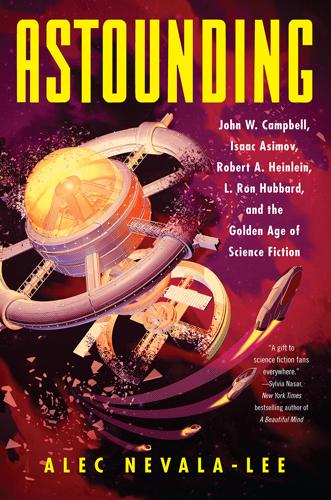
Astounding: John W. Campbell, Isaac Asimov, Robert A. Heinlein, L. Ron Hubbard, and the Golden Age of Science Fiction
by
Alec Nevala-Lee
Published 22 Oct 2018
Best to do that for any child. —OCTAVIA E. BUTLER On December 4, 1972, the ocean liner SS Statendam sailed from New York to Florida, where its passengers would witness the launch of the final manned mission to the moon. The guests included Asimov, Heinlein, Pohl, Sturgeon, Harry Stine, Ben Bova, Marvin Minsky, Norman Mailer, Katherine Anne Porter, and the newscaster Hugh Downs, who served as the master of ceremonies. Also present were members of the press, many of whom, on account of the title of Porter’s most famous book, felt obliged to refer to the cruise as “a ship of fools.” The enterprise was the brainchild of a science lecturer named Richard C.
…
On the second night, during a screening of 2001, a rough sea sent people vomiting over the railing, and events were so disorganized that the guests openly wondered what they were supposed to be doing. But there were memorable moments. One panel featured Mailer and Asimov, two Jewish writers from Brooklyn who had crossed paths before. Asimov had been riding an elevator in New York when his eye was caught by the man beside him: “Did anyone ever tell you, sir, that you resemble Norman Mailer in appearance?” The most famous author in America had offered a deadpan response. “Yes, I get told that now and then.” Now they faced off on the subject of space. Mailer complained that NASA had turned the greatest achievement in human history into a “monumentally boring” spectacle. Like Campbell, he was intrigued by the possibility of communication that didn’t involve the electromagnetic spectrum, and he said that the astronauts should have conducted experiments in telepathy on the moon.
…
One Giant Leap. New York: Tom Doherty, 2005. Warner, Harry, Jr. All Our Yesterdays. Chicago: Advent, 1969. Weiner, Rex. “A Stowaway to the Thanatosphere.” The Paris Review, December 31, 2012. https://www.theparisreview.org/blog/2012/12/31/a-stowaway-to-the-thanatosphere-my-voyage-beyond-apollo-with-norman-mailer. Accessed December 2017. Weller, Sam. The Bradbury Chronicles. New York: Harper Perennial, 2006. Westfahl, Gary. The Mechanics of Wonder. Liverpool: Liverpool University Press, 1998. White, Michael. Isaac Asimov: A Life of the Grand Master of Science Fiction. New York: Carroll & Graf, 2005.
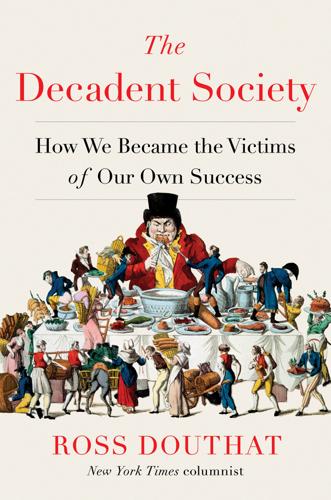
The Decadent Society: How We Became the Victims of Our Own Success
by
Ross Douthat
Published 25 Feb 2020
Progress is a comfortable disease… —e. e. cummings INTRODUCTION The Closing of the Frontier The peak of human accomplishment and daring, the greatest single triumph of modern science and government and industry, the most extraordinary endeavor of the American age in modern history, occurred in late July in the year 1969, when a trio of human beings were catapulted up from the earth’s surface, where their fragile, sinful species had spent all its long millennia of conscious history, to stand and walk and leap upon the moon. “Four assassinations later,” wrote Norman Mailer of the march from JFK’s lunar promise to its Nixon-era fulfillment, “a war in Vietnam later; a burning of Black ghettos later; hippies, drugs and many student uprisings later; one Democratic Convention in Chicago seven years later; one New York school strike later; one sexual revolution later; yes, eight years of a dramatic, near-catastrophic, outright spooky decade later, we were ready to make the moon.”
…
S., 240 liberal democracy, liberal order, 48, 86, 112–15 collapse of, 199–202 illiberalism as alternative to, 163–64 Islamism as alternative to, 159–62 populism as threat to, 171–73 possible overthrow of, 112, 114–15, 158, 159–75 liberals, liberalism, 227 in academia, 97 birthrates and, 53 nostalgia of, 100 spiritual emptiness of, 206, 218 virtuous communities as alternative to, 215–17 see also left libertarians, 29–30, 31, 73, 76, 216 Libya, 199 US intervention in, 70–71 life expectancy, stagnation of, 44 Lilla, Mark, 114 Limbaugh, Rush, 67 Lind, Michael, 173, 182 Lindsey, Brink, 30, 31 literacy rates, 35 Loeb, Avi, 233 Lucas, George, 111 McArdle, Megan, 56–57, 65 McConnell, Mitch, 78 McDougall, Walter, 2 McFarland, Billy, 17–18, 22 McKibben, Bill, 196 MacKinnon, Catherine, 120, 122 Macron, Emmanuel, 207 Mad Men (TV show), 95, 109 Mailer, Norman, 1 Manson, Marilyn, 140–41 marijuana, 126, 127 marriage, declining rate of, 51 Mars, human missions to, 2, 38, 211, 213 Martin, George R. R., 96 Martinique, 208–9 Marx, Karl, 200, 219, 221 Marxists, Marxism, 113, 114, 160, 161, 194, 209 political renaissance scenarios of, 219–21 mass incarceration, 149, 150 mass migration, 200, 202, 208 from Africa, 196, 197–99 from Central Asia, 199 climate change and, 196–97 from Middle East, 199 as solution to economic problems of declining birthrate, 62–65 mass shootings, 123–24 Meadowcroft, Micah, 239 meaningfulness, 221 “ ‘Me’ Decade and the Third Great Awakening, The” (Wolfe), 96–97 median income, US, stagnation of, 22–23 Medicaid, 74 Medicare, 73, 74, 76 medicine, progress in, 44, 211 MEL, 105 meritocracy, 164, 169–73 brain drain and, 171 Merkel, Angela, 64, 84, 85 Messiah, decadence and need for, 237–39 Mexico, 164 immigration to US from, 198, 199 Middle Ages, impact of plagues in, 190 Middle East, 223 falling birthrates in, 161 migration from, 199 political turbulence in, 194 Miller, Perry, 36 Millman, Noah, 198 Mines, Keith, 133–34 Ming dynasty, abandonment of sea voyages by, 5 modernity, 51, 135, 197–98, 202, 226 Islam and, 227 spirit of discovery in, 4, 6 Modi, Narendra, 167 Mody, Ashoka, 84 monetary policy, 24 Mormonism, 216 movies, decline of originality in, 91, 93–95, 105 Moyn, Samuel, 151 MSNBC, 77 Musk, Elon, 37, 213, 236 Muslims, see Islam, Islamic world Mussolini, Benito, 172 Nagel, Thomas, 223 Naipaul, V.
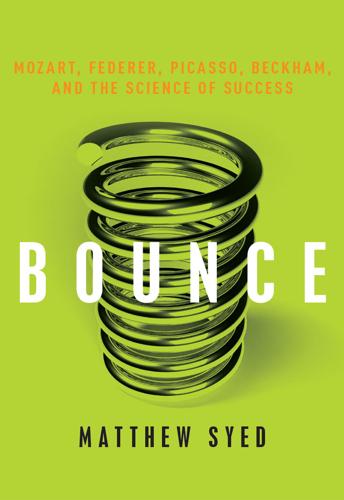
Bounce: Mozart, Federer, Picasso, Beckham, and the Science of Success
by
Matthew Syed
Published 19 Apr 2010
The idea that the Creator is on your side, guiding your footsteps, taking a personal interest in your troubles, deriving pleasure from your victories, providing solace in your defeats, orchestrating the world such that, in the words of Saint Paul’s Epistle to the Romans, “all things work together for good to those who love God”—all this must have a dramatic impact on the efficacy of an athlete, or indeed anyone else. As Muhammad Ali put it: “How can I lose when I have Allah on my side?” Ali was talking in the buildup to his showdown with George Foreman in 1974, a bout that few, even in his own camp, believed he could win. Norman Mailer, Ali’s most eloquent chronicler, feared that the boxer might lose his confidence and vitality in the buildup to the contest, such was the apparent gulf in ability between the aging former champ and his formidable young opponent. But Mailer failed to factor in the divine: How could Ali fall victim to self-doubt when his strength flowed, not from within, but from the Almighty?
…
Open (2008), 169–71, 177 Gordon, Alison, 7 gorilla test, 226–28 Graff, Steffi, 194 Gray, Robert, 192 Gregory, Richard, 219 Gretzky, Wayne, 49–50, 53, 224 Hamm, Mia, 91, 114–15 hand-eye coordination, 36 Hansen, Steen, 145 Hardy, Fred, 260 Hargrove, Mike, 203 Harpending, Henry, 264–65 Harrington, Anne, 160, 161, 165 Harris, John, 247, 249 Harvard, John, 205 Hayes, John, The Complete Problem Solver, 16 Heaps, Simon, 121–22 Henman, Tim, 174–75 high jump, 97 Hines, Jim, 256 Hingis, Martina, 134 Hoch, Scott, 193–94 Hodder, Keith, 7 Honecker, Erich, 238 Höppner, Manfred, 237, 238, 239, 251 Howe, Michael, Genius Explained, 57 Hsu, Feng-Hsuing, 37–39 human limitations, 96–100 Humphrey, Nicholas, 173–74 Hussain, Nasser, 206 IBM, and Deep Blue, 37–39, 52–53 iceberg illusion, 22 ice hockey: birthdays of players, 17–18, 20 combinatorial explosion in, 49, 50 Gretzky’s genius in, 49–50, 224 Immelt, Jeff, 44, 53 innovation, 96–100 instinct, for sports, 27–28, 31 intelligence: and praise, 130–32, 138 and talent myth, 123–29 intuition, 47 irrational optimism, 168–74 Ivanisevic, Goran, 202 Jackson, Nathan (fict.), 117–18 James (table tennis), 190–91, 192 Jankovic, Jelena, 134 Jeffries, Jim, 280 Johnson, Ben, 238 Johnson, Jack, 280 Johnson, Zach, 172–73 Jordan, Michael, 128 Juninho (soccer), 86 Kark, Jeremy, 159n Karpov, Anatoly, 38, 69, 70 Kashino, Makio, 219 Kasparov, Garry, 37–39, 46–47, 50, 52–53, 69, 70, 224 Keen, Peter, 63, 136–37 Keen, Trinko, 167 Keino, Kip, 273, 282 Kenny G, 97 Kenya, runners from, 257, 258–60, 267–74 Kimble, Charles, 196–97 kinesiology, 31–32 Kirsty (figure skater), 83–84 Klein, Gary: on chess decisions, 47–48 on decision making, 39–43 Sources of Power, 40–41, 53 Knight, Darius, 143–46 knowledge: building, 94 in complex tasks, 94 in decision making, 43, 51 development of, 46 and memory retrieval, 47 and perception, 221 power of, 37–39, 53 top-down, 219–21, 225–26 Kocher, Theodor, 156 Korea, golfers from, 119–21 Kosashvili, Yona, 69 Kournikova, Anna, 120, 134 Krause, Ute, 251–53 Krieger, Heidi/Andreas, 233–39, 251–53 Kroen, Bill, 95 Kuper, Simon, 89n language: learning, 48–49 and perception, 219, 221 Lauren (table tennis player), 188–89, 190–91 Lewontin, Richard, 263–64 Lindsay, Sarah, 197–99 Linnaeus, Carolus, 278 Liszt, Franz, “Feux Follets,” 14–15 long-distance runners, 93 Louis, Joe, 277, 280 MacArthur, Daniel, 275 Macci, Rick, 61 Mailer, Norman, 151 Maiyo, Cherono, 268 Manners, John, 266–67 Maradona, Diego, 11 Marks, Jonathan, 262 Martin, Todd, 188 Martinez, Dennis, 203, 204 Marx, Karl, 160 mathematics: mastery of, 15, 100 prodigies of, 71–75 McKinsey consultants, The War for Talent, 140–41 McNabb, Donovan, 282 Mediate, Rocco, 169, 171 memory: episodic, 94 iceberg illusion of, 22 of letters, 20–21, 23–24 of numbers, 21–22, 23, 24, 31, 73 of patterns, 24 and practice, 23 and retrieval, 46–47 mental exercises: alphabet, 20–21 anagrams, 79–80 gorilla test, 226–28 optical illusion, 224–25 perception, 217–18 mental representations, acquired, 37 mental toughness, 128 mental vs. physical success, 36 meritocracy, myth of, 8–11, 19 Michelangelo, 100 Miller, George A., The Magical Number Seven, 21 mind-set, fixed vs. growth, 123–29, 134–35, 137, 141–42 mnemonics, 24 motivation: by association, 117–23 internal, 63–64, 67, 115–16 and mind-sets, 130–32 mysterious sparks, 113–17, 129 research into, 117–23 sustained, 122–23 motor chunking, 191 motor system, control of, 35 Mozart, Wolfgang Amadeus, 55–58, 63, 99 Mullainathan, Sendhil, 276 Murray, Andy, 164 Murray, Jim, 282 muscle memory, 36 music: circular breathing in, 97 finger dexterity in, 93 practicing, 11–13, 16, 80–81 rising standards in, 14–15 myelin, 93 Nadal, Rafael, 164, 173 Nandi distance runners, 269–71, 272, 273 Navratilova, Martina, 210 Newton, Isaac, 98 Nick Bollettieri Tennis Academy, 133–36 Nicklaus, Jack, 14, 105, 173 Norman, Greg, 185–88, 193, 194 Norwood, Scott, 188 Novotna, Jana, 194–95 nurses, decisions made by, 41, 43, 78 Obama, Barack, 154, 277 O’Brien, Parry, 97 obsessive-compulsive disorder, 207–8 O’Driscoll, Michael, 8 Ohms, Jim, 203 Olympic Games: (1896), 15 1900), 15 (1924), 15 (1936), 279–80 (1968), 256, 282 (2000), 149–51, 181–84 (2002), 197–99 (2004), 208–9 (2008), 63, 136–37, 208, 255–56 (2014), 83 Omega Club, 6–8, 10, 19 O’Neal, Shaquille, 113–14, 122 one thousand hour rule, 16 Oosterom, Joop van, 75 optical illusion, 224–25 Orwell, George, 1984, 176–77 Osovnikar, Matic, 256 Owens, Jesse, 279–80 Pak, Se Ri, 119–21, 122 paradigm shifts, 97–100 Park, Inbee, 120 Park, Jeong-Keun, 162–63 pattern recognition, 24, 35, 48, 50 Paul, Saint, 151, 152 Peale, Norman Vincent, The Power of Positive Thinking, 161–62, 163–65 Pelé (soccer), 86, 88 Pendleton, Victoria, 208–9 perception: and the brain, 218–21 Chaplin mask, 217–18, 219 of experts vs. nonexperts, 222–26 inattentional blindness, 226–32 optical illusion, 224–25 and vision, 33, 218–21, 222–26 perceptual cues, 43 performance: dignity of, 244 and practice, 12–17, 80–81 psychology of, 154 and religious belief, 162 research in, 11–14, 16, 23, 36–37 transformation of, 111 world-class, 82–83 performance placebo, 165, 177–79 performance psychology, 168 peripheral nervous system, 35 perseverance, 17, 122, 213 Peters, Steve, 209, 210 Phillips, Ken, 188–90 Picasso, Pablo, 98–99 Pickens, Morris, 172 Pierce, Mary, 61 pigeons, conditioning of, 203–4 pilots: decisions made by, 43 inattentional blindness of, 228–32 Pitsiladis, Yannis, 267–72, 273, 275 placebo effect: and colors of pills, 156–57 and doublethink, 172–77 doubt vs., 164–66, 168–69 and irrational optimism, 168–74 mind over matter, 153–58 packaging and price, 157–58 positive thinking, 161–62 and a quiet place, 166–68 and religion, 151–53, 158–60, 162–64, 173–74 sardines, 149–51 self-belief, 172–73 in sports, 161–68 of superstitions, 206 in World War II, 155–56 poetry, studies of, 99 Poldrack, Russell, 191 Polgar, Judit, 67, 69–70 Polgar, Laszlo, 64–71, 75, 103, 111 Polgar, Sofia, 67, 68–69 Polgar, Susan, 66–68, 70, 75 positive affirmations, 168 positive thinking, 161–62, 163–65 irrational optimism, 168–74 research study of, 178–79 Pound, Dick, 243–44 practice: acquired mental representations in, 37 on autopilot (mindless), 78–79 and child prodigies, 57 and creative innovation, 98 deliberate, 80 easy vs. challenging, 80 end product of, 22 and excellence, 15, 17, 45–46, 65–71, 77 and experience, 46 one thousand hours per year, 16 opportunities for, 19 and performance, 12–17, 80–81 potential for change via, 23 and professionalism, 15 purposeful, 80–81, 85–86, 91, 92, 94, 96, 98, 110–11, 171–72 quantity vs. quality of, 80 ten-thousand-hour rule, 16, 22, 50, 57, 92, 121, 129 transformative, 96 praise, and mind-set, 130–32, 135, 137–38 prayer, 163 President’s Council on Bioethics, 244, 248 Primorac, Zoran, 166 productivity, improving, 110 progress, practice toward, 80–83, 85 Ramanujan, Srinivasa, 73, 74 Ramprakash, Mark, 202 Reid, John, 51 Reisman, Marty, 95, 210 relaxation technique, 167–68 relentlessness, 213 religion, as placebo, 151–53, 158–60, 162–64, 173–74 response times, 32, 33 retrieval structure, 24 Revlon, Charles, 223 Rivaldo (soccer), 86 Rivelino (soccer), 86 Robinson, Jackie, 277, 280 robots, 50 robot soccer, 49 Roe, Anne, 99 Ronaldinho (soccer), 88 Ronaldo (soccer), 86, 88 Rousell, Michael, 115 Rumelhart, David, 51 Russell, Jack, 205–6 Saltin, Bengt, 273 Sang, Joe, 259 Savins, Paul, 7 Savulescu, Julian, 241, 253 Schwarzenegger, Arnold, 218 Schwarzenegger mice, 245–49 Seirawan, Yasser, 37 Seles, Monica, 63 self-doubt, 164–66, 184 self-help movement, 163 SF, memory feats of, 21–22, 23, 24, 25, 31 Sharapova, Maria, 134 Shearer, Alan, 164 Sheen, Martin, 114 Shwarzer, Mark, 202 sickle cell anemia, 261–62 Simon, Carly, 114, 122 Simon, Herbert, 15–16, 25, 49 skill building, plateaus in, 95 Skilling, Jeffrey, 138–41 skills, circumstantial, 20 Skinner, B.
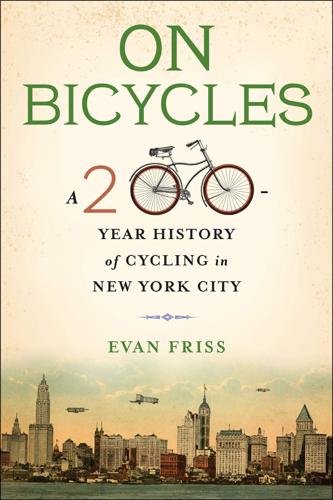
On Bicycles: A 200-Year History of Cycling in New York City
by
Evan Friss
Published 6 May 2019
When the mayor signed a bill requiring that all substantial city parks include designated bike paths, the purpose was to provide safe spaces for children to enjoy this “wholesome” activity. Endorsing recreational cycling in the parks was one thing. Promoting utilitarian cycling with infrastructure on the streets was far more controversial. But Lindsay seemed every bit the bike advocate, especially after winning a second term. (In the mayoral primaries that year, writer Norman Mailer unsuccessfully ran on a wide-ranging platform that included banning private cars from Manhattan.)6 On April 22, 1970, New Yorkers celebrated the very first Earth Day. There were rallies, teach-ins, concerts, come clean up the park campaigns, and a giant carbon monoxide detector parked on the streets.
…
See also Midtown Bike Ban Komanoff, Charles, 138, 139, 142 La Guardia, Fiorello, 78, 82–83, 85, 89, 100 Langley, Neil, 92 LAW Bulletin and Good Roads Journal, 46 League of American Wheelmen (LAW), 27–28, 46, 52, 62, 63, 79, 114, 142 Lee, Spike: Do the Right Thing, 129 Lehner, Edward, 143 Lincoln, Abraham, 58 Lincoln Tunnel, 102 Lindsay, John, 109–11, 112, 113, 116 Longhurst, James, 102 Long Island City Wheelmen, 60 Long Island Expressway, 98 Long Island Motor Parkway, 83 Long Island State Parks Commission, 82 Long Island Wheelmen, 25, 45, 45 Long Island Wheelmen’s Association, 79 Lyft, 186 Lyon, 171 Macomb’s Dam Bridge, 29–30 Madison Square Garden, 3, 51, 58, 60, 61, 63, 71, 78, 152 Mailer, Norman, 110 Manhattan: and bicycle lanes, 158; and bicycle paths, 86, 90, 111; and bike shops, 4, 63, 113; and congestion, 22, 174; and the grid, 1, 12, 125; and growth, 12; and messengers, 124–25, 140; and number of bicycle clubs, 36, 43; and preponderance of infrastructure/cyclists, 170, 176, 181; and transit strike, 118.

The Devil's Chessboard: Allen Dulles, the CIA, and the Rise of America's Secret Government
by
David Talbot
Published 5 Sep 2016
Morris proved a good companion, a son of Mississippi who knew how to keep up his end when the bourbon and conversation began flowing. And he was the most touted magazine editor of his generation, on his way to becoming the youngest editor of the venerable Harper’s at age thirty-two. Under his leadership in the late ’60s, Harper’s would glow with the vibrant writing of Norman Mailer, William Styron, and David Halberstam. But, in the end, even with Morris’s expert hand, Dulles could not wrestle his manuscript into shape, and the old spook withdrew it from publication. By the time Dulles finally gave up, after months of toil, the article had gone through multiple drafts, adding up to several hundred coffee-stained pages.
…
In April 1960, Robert Taber—the first African American reporter for CBS News, who had scored an exclusive interview with Castro when he was still fighting in the mountains—stirred liberal circles by purchasing a full-page ad in The New York Times that passionately endorsed the Cuban revolution. The appeal was signed by an impressive list of literary names—including Jean-Paul Sartre, Simone de Beauvoir, Norman Mailer, James Baldwin, and Truman Capote—and sparked a wave of popular interest in the Cuban cause that led to the formation of the Fair Play for Cuba Committee (FPCC). Within six months, the committee had enrolled seven thousand members in twenty-seven “adult chapters” across the country and had struck a chord on college campuses, where forty student councils were formed.
…
In 1949, Schlesinger endorsed a crude effort by Luce’s Life magazine—which the young, Pulitzer Prize–winning historian sometimes wrote for—to develop a blacklist of celebrities that the magazine described as “Dupes and Fellow Travelers” of the Communist Party. Along with the predictable stalwarts of the Far Left, Life listed such liberal luminaries as Albert Einstein, Arthur Miller, Norman Mailer, Aaron Copeland, and Leonard Bernstein. Schlesinger gave the Life magazine blacklist his stamp of approval, calling it “a convenient way of checking the more obvious Communist-controlled groups.” Though Schlesinger was an avid New Dealer, he was also a pampered product of the American elite—the son of esteemed Harvard historian Arthur M.

Track Changes
by
Matthew G. Kirschenbaum
Published 1 May 2016
The list of notables includes Lucille Clifton (Emory University), the British poet Wendy Cope (at the British Library), William Dickey (Reed College), Stanley Elkin (Washington University), Jonathan Larson (composer of the musical RENT; Library of Congress), Timothy Leary (the New York Public Library), Norman Mailer, Gabriel García Márquez, and Terrence McNally (all at the Ransom Center), Toni Morrison (Princeton), Susan Sontag (UCLA), Natasha Trethewey (Emory), John Updike (the Houghton), Alice Walker (Emory), and David Foster Wallace (the Ransom Center again, though only a handful of diskettes), among others.
…
(As John von Neumann himself was wont to put it, it was all the same “organ.”)42 As early as 2001 the State Library of Victoria in Melbourne purchased the Macintosh laptop—reportedly missing its “o” key—that the Australian novelist Peter Carey used to write The True History of the Kelly Gang (2000); it is currently on display there under glass, alongside samples from his literary papers.43 Similar to the work at Emory, archivists there contemplate making a “clone” of the machine available so visitors can explore its electronic innards. The Ransom Center, meanwhile, has computers owned by Norman Mailer (in fact used exclusively by his typist and personal assistant, Judith McNally—the keyboard is covered with nicotine stains), hypertext pioneer Michael Joyce, and now Gabriel García Márquez.44 Márquez had had a computer at least as early as 1986, when he was working on The General in His Labyrinth;45 after he died, in 2014, the Ransom Center acquired his literary papers—they included two Smith Corona typewriters and five Apple computers.46 Other computers have become objects of collectors’ desire: Stieg Larsson’s widow has been widely reported as being in possession of a laptop housing a mostly finished draft of a fourth book that is a sequel to his Millennium Trilogy.47 Whatever the manuscript’s fate—if it indeed exists—the fact that the claim can be made at all demonstrates the difference between owning somebody’s computer (with the organ of its internal storage) and owning their typewriter.
…
R., 297n11 Licko, Zuzana, 202 Light (writing), 45, 47, 50, 70, 73, 119, 198, 199, 200 Lin, Tan, 203 Lin, Tao, 186, 308n12 Lindgren, Nilo, 127, 129 LINTRN, 136–137, 138 Lipe, Kevin, 325n25 Lisberger, Steven, 128, 129 LISP, 30–31, 265n90 Liu, Alan, 148, 300n59 Longyear, Barry B., 108–109, 116, 141, 142, 159, 216 Losh, Elizabeth, 298n33 Lotus Ami Pro, 90, 223 Love, Harold, 196, 312n51 Luddite, 1, 31, 88, 209 Ludlum, Robert, 282n2 Luey, Beth, 269n49 MacBird, Bonnie, 127–129, 130–131 MacDonald, Ross, 75 Macintosh (Mac). See Apple Magnavox VideoWRITER 250, 11, 213 Mailer, Norman, 214, 215 Malling-Hansen Writing Ball, 10, 243 Mamet, David, 18 Markdown (program), 239 Martin, George R. R., 1–2, 6–8, 9–11, 13, 29–30, 234, 242, 254n2 Materiality, 6, 13, 45, 234, 324n2 McMillan, Terry, 154 McCaffrey, Anne, 111 McCarthy, Cormac, 21 McCarthy, Tom, 7, 13 McGann, Jerome, 8, 9, 11, 310n32 McGurl, Mark, 26 McIntyre, Vonda N., 118 McLuhan, Marshall, 28, 29, 151 McNally, Judith, 216 McNally, Terrence, 89, 214 McPhee, John, 12 McWilliams, Peter, 36 Media archaeology, xv, 206 Memex, 162, 172, 242, 302n87 Mendelson, Edward, 236 Mergenthaler Super-Quick, 133, 136, 137, 295n65 Messer, Sam, 9, 21 Messud, Claire, 6 Metadata, 205, 209 Mialet, Helene, 302n86 MicroPro, 2, 4 Microsoft, 51, 110, 123, 235, 242; AutoSummary, 204–205; Office, 237; Windows, 2, 3, 236; Word, 96, 123, 184, 203, 205, 228–229, 235–237.

Nixonland: The Rise of a President and the Fracturing of America
by
Rick Perlstein
Published 1 Jan 2008
Thus it was that, at the crack of dawn, with Wallace as witness, inmates at the state mental hospital in Mount Vernon, and the mental ward of Bryce Hospital in Tuscaloosa, were roused from their beds and shipped to the opposite institution, 140 miles away—a show of resegregating Alabama’s madmen for the delectation of his political base. Wallace wasn’t Dixie’s most effective segregationist. He was just the most theatrical. “If every politician is an actor, only a few are consummately talented,” Norman Mailer once wrote. “Wallace is talented.” Wallace pledged to sign on as Lurleen’s “adviser” at $1 a year: “I’m gonna draw the water, tote in the wood, wind the clock, and put out the cat.” For anyone who dared critique the ruse, he affected disgust at the attack on the honor of Southern womanhood. Lurleen’s candidacy was announced mere days after she underwent surgery for the cancer that would kill her two years later.
…
Cleaver announced his surrender, tossed out his shotgun, and, so they couldn’t claim a concealed weapon, walked out naked. “Li’l Bobby” was too shy to follow suit. Gagging and retching from the tear gas, dropping his arms for balance after a stumble, he was turned into a block of Swiss cheese. Left-wing writers including Norman Mailer and Susan Sontag released a statement on his martyrdom: “We find little fundamental difference between the assassin’s bullet which killed Dr. King and the police barrage which killed Bobby Hutton two days later…both were attacks aimed at destroying this nation’s black leadership.” Oakland’s police chief saw things differently.
…
Theodore White, who’d worn his Kennedy button on the Nixon train in 1960, would later inscribe a copy of The Making of the President 1968 to the man he called its “hero”: “My previous reporting of Richard Nixon must I know have hurt. If I feel differently now it is not that there is a new Richard Nixon or a new Teddy White but that slowly truths force their way on all of us…. This book tries to describe the campaign of a man with courage and conscience.” Even Norman Mailer called Nixon “less phony.” A Nixon campaign commercial called “Convention”: A brass band, like the brass band that played over the McCarthy delegates standing on their chairs singing peace songs, blares “A Hot Time in the Old Town Tonight.” The familiar, old-fashioned convention scenes: standards, balloons, placards, Hubert at the podium, exuberant delegates.
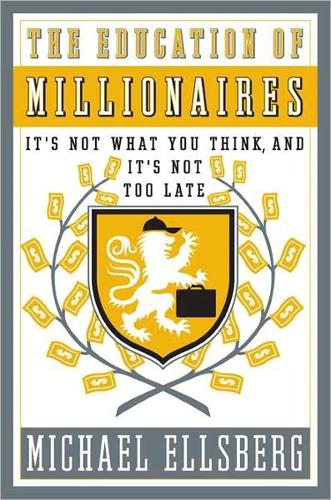
The Education of Millionaires: It's Not What You Think and It's Not Too Late
by
Michael Ellsberg
Published 15 Jan 2011
Many of these other people I’ve mentioned are die-hard marketing trainers; with Jena, you’ll see the results of someone with a real-world off-line business, who taught herself marketing from the ground up in a short amount of time. She writes her own copy, and it rocks. Step 3. When my father once asked the legendary Norman Mailer for writing advice, Mailer said the main secret was: “Apply Ass to Chair.” Meaning, in this case, sit down at your desk, in front of your computer, and start putting this stuff into action. Don’t wait for the time to be right. (It never will be.) Don’t wait for everything to be perfect. (It won’t be.)
…
See Meaningful work, creating Ilovemarketing.com Institute for Integrative Nutrition Intelligence, practical versus academic Internet marketing guru online presence, building and self-created business and self-education YourName.com, importance of Investments, bootstrapper’s method IQ, and success IronPort Iteration velocity John Paul Mitchell Systems Johnson, Cameron as college non-graduate success, evolution of Jong, Erica Kaufman, Josh Kawasaki, Guy Keillor, Garrison Kennedy, Dan as college non-graduate direct-response marketing Kerkorkian, Kirk Kern, Frank as college non-graduate direct-response marketing on power of selling success, evolution of Kiyosaki, Robert mentor of on power of selling Kleiner Perkins Caufield & Byers Knowledge workers, digital Marxism Komisar, Randy on safety versus risk La Flamme, Jena Cheng sales coaching as college non-graduate Deida relationship training direct-response marketing, use of success, evolution of Lalla, Annie and Eben Pagan Langan, Chris LaPorte, Danielle, success, evolution of Laugh-O-Gram Leadership definitions of and impact on many as new marketing as skill of success Lean Startup Machine Lerer, Ben Levchin, Max Leve, Brett Lifelong learning Linchpin concept Listening, importance of Loucks, Vernon Louis Marx and Company Luck, and success Lupton, Amber Lynda Limited McDermid, Hitch Mailer, Norman Maister, David Making a difference. See Meaningful work, creating Manhattan Project Marc Ecko Enterprises Marianlibrarian.com Marketing advice, giving to mentors brand marketing business, creating and Eben Pagan essence of high integrity, newsletters on leadership as learning about, value of as skill of success third tribe marketing traditional, ineffectiveness of See also Direct-response marketing Marmer, Max, success, evolution of Marx, David Marx, Karl Marx, Louis, success, evolution of Marxism, digital Mason, Nick, success, evolution of Meaningful work, creating Art of Earning a Living and entrepreneurship and experimentation failure, learning from and financial stability and impact on many opportunities in workplace, seeking “options open” myth versus predictable life and risk success, case examples Mendelson, Sandi Mentors attracting becoming trusted advisor to finding with connection capital giving feedback to importance of success, case examples Millennials Mitchell, Paul Montoya, Peter, on branding Moritz, Mark Moskovitz, Dustin as college non-graduate success, evolution of Mullenweg, Matt, success, evolution of Munna, Cathryn Munna, Cortney, education debt of Murray, Charles Mycoskie, Blake Needs, versus requests Negroni, Christine Networking with connection capital to find teachers.

The End of Men: And the Rise of Women
by
Hanna Rosin
Published 31 Aug 2012
In a 1971 forum captured in the documentary Town Bloody Hall, Germaine Greer and her feminist acolytes mocked a culture that believed a woman should “get an orgasm from a shiny floor.” The forum ended with three women falling all over one another and making out onstage. This might have been an act designed to annoy and titillate Norman Mailer, who was also onstage, or it might have been a genuine gay rights moment. Either way, the message was that conventional bourgeois marriage was for the dogs. America’s divorce rate began going up in the late 1960s and then took a steep climb during the seventies and early eighties, as virtually every state adopted no-fault divorce laws.
…
See Lawyers Lewis, Michael, 202, 218–19 Lewis, Sinclair, 120–21 Li, Tianle, 172 Liberated Man, The (Farrell), 69 Liberia, 259 Lightdale, Jenifer, 186 Lonely Crowd, The (Riesman), 64 Longitudinal Survey of Young Women, 153 Los Angeles Times, 218 Louisville College of Pharmacy for Women, 129 Maasai, 188 Macho culture, 4, 55, 57, 69, 87, 160, 236, 259 female aggression and, 181 in workplace, accidents due to, 268 Madame Bovary (Flaubert), 118 Mad Men (television show), 197, 206, 234 Mailer, Norman, 66 Males, Mike, 19–20, 183 Manson, Charles, 178 Manufacturing, 108, 110, 262, 282n decline of, impact on men of, 2–4, 81, 85 jobs for African-Americans in, 88 pharmaceutical, 130, 155 steel, 155 Marriage, 18, 23, 40, 92, 96, 98, 142, 237, 254 age for, 25, 238 in Asia, 6, 238–39, 256–57 attitudes toward, 32, 36, 101 births outside, 93, 96 commuting, 122 ending, 94–95 declining rates of, 81–82, 87, 91, 94 delaying, 151, 154, 220, 237–38 expectations about, 7, 95 “seesaw,” 7, 47–77, 265 sexuality and, 20 See also Divorce Maryland, University of, 200 Masculinity, 63, 266–69 ornamental, 9 post-feminist, 73 Massachusetts, 92 Massachusetts Institute of Technology (MIT), 86, 87, 125, 201 Mass Career Customization, 141 Masturbation, 41 Match.com, 52 Max, Tucker, 28 Mayer, Marissa, 193–94, 196–97, 229 McDonald’s, 179 McDowell County (West Virginia), 87 McGowen, Meghan, 108 McKinsey & Company, 229, 246, 248, 251 Median income, 87, 107, 125, 155 Medical professions, 140.
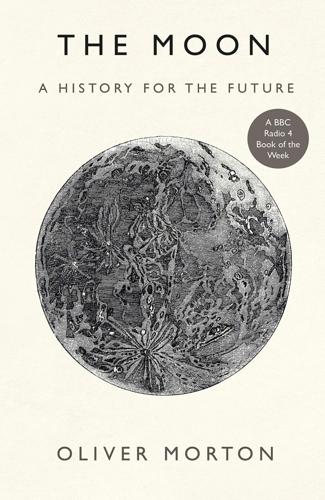
The Moon: A History for the Future
by
Oliver Morton
Published 1 May 2019
There were no uncharted oceans in which to locate that archipelago of deep thought and high jinks where tales of the fantastic used to live, less and less terra incognita in continental interiors for lost worlds to be lost in. The poles themselves were about to be conquered; soon men would fly through the air in powered machines, not just balloons. In 1969 Norman Mailer would tellingly describe the way in which landing on the Moon changed the world as feeling like a sort of geometrical inversion, a pocket being turned inside out. The same is true for time and space at the beginning of that century. Space closed down; time opened up: what could no longer be contained in the former was pocketed in the latter.
…
Exploring the Moon in the 21st Century: Themes, Goals, Objectives, Investigations, and Priorities. https://www.lpi.usra.edu/leag/ MacDonald, Alexander. (2017). The Long Space Age: The Economic Origins of Space Exploration from Colonial America to the Cold War. Yale University Press. MacKay, Angus. (1971). Super Nova and the Frozen Man. Knight Books. Maher, Neil M. (2015). Apollo in the Age of Aquarius. Harvard University Press. Mailer, Norman. (1971). Of a Fire on the Moon. Pan Books. Marvin, Ursula B. (1986). “Meteorites, the Moon and the history of geology.” Journal of Geological Education 34:140–165. McCray, W. Patrick. (2012). The Visioneers: How a Group of Elite Scientists Pursued Space Colonies, Nanotechnologies, and a Limitless Future.

Utopia Is Creepy: And Other Provocations
by
Nicholas Carr
Published 5 Sep 2016
But as memory shifts from the individual mind to the machine’s shared database, what happens to that unique “cohesion” that gives rise to personal knowledge, selfhood’s core? THE MEDIUM IS McLUHAN July 18, 2011 ONE OF MY FAVORITE YouTube videos is a clip from a 1968 Canadian TV show featuring a debate between Norman Mailer and Marshall McLuhan. The two men, both icons of the sixties, could hardly be more different. Leaning forward in his chair, Mailer is pugnacious, animated, engaged. McLuhan, abstracted and smiling wanly, seems to be on autopilot. He speaks in canned riddles. “The planet is no longer nature,” he announces, to Mailer’s uncomprehending stare; “it’s now the content of an art work.”
…
R., 306–7 lightbulbs, 183 lighting, advancements in, 229–30 Lim, Kevin, 26 Lindbergh, Charles, 306 Linden, Robin, 26 Linden Lab, 26 LinkedIn, xvi, 166, 186 Listen.com, 122 “Literary Allusion in the Age of Google” (Kirsch), 86 literature, allusion and, 86–89 Literature and the Brain (Holland), 251 “Little Gidding” (Eliot), 144 Liu, Jenny, 98 long-playing (LP) record albums, 41–44, 121 Lord, Albert, 103 Lorraine, Claude, 131 Losse, Kate, 178 Louth, Andrew, 253 love, 225 unified theory of, 210, 213 Lowrey, Annie, 174 Ludd, Ned, 77, 178 Luddites, 76–78, 106, 202, 241, 312 Lynch, David, 108 Macfarlane, Robert, 201–2 machine intelligence, 136–37 language of, 214–15 Machine in the Garden, The (L. Marx), 131 machine zone, addiction to, 218–19 Macrowikinomics (Tapscott and Williams), 84 magazines, online vs. printed, 288–89, 291 Mailer, Norman, 102 mainstream media, blogging vs., 7–8 Malick, Terrence, 155 “Man-Computer Symbiosis” (Licklider), 306–7 Manjoo, Farhad, 195 Mann, Horace, 12 Man of the Year, “you” as, 28–29 Man Who Could Fly, The (film), 341 maps, digital, 56–57 Mar, Raymond, 250 Marcus, Gary, 333 marketing: for Facebook Home, 156–59 through social media, 53–54 on YouTube, 108–9 Marr, David, 212 Marshall McLuhan: You Know Nothing of My Work!

The Einstein of Money: The Life and Timeless Financial Wisdom of Benjamin Graham
by
Joe Carlen
Published 14 Apr 2012
However, Graham came to realize that Boys High had its advantages as well. As Graham recalls, the school “had long enjoyed one of the highest reputations in the country for scholastic excellence, and I was fortunate indeed in being able to go there.”30 In its early twentieth-century heyday, the school produced such distinguished graduates as Isaac Asimov, Norman Mailer, and Abraham Maslow. Indeed, considering that Graham, who had become accustomed to topping his class, was “only” ranked third at Boys High, it was probably the most rigorous academic environment that he had yet encountered. Aside from an unfortunate scheduling conflict that prevented him from continuing his Greek studies, Graham reflects that he had “two fruitful years at Boys High.”31 His continued scholastic excellence won him election to Arista (the honor society for New York high schools), and his literary endeavors took another step forward with the publication of one of his short stories in Boys High's annual bound volume of the school's best literary works.
…
See Graham, Marjorie Jazz Age, 155 Jevons, William, 207 Jewish Encyclopedia, 19 Jewish Guild for the Blind, 235 Johns Hopkins University, 185 Johnson, Alvin, 206 Kahn, Irving, 53, 109, 244, 254 Kahn, Judd, 242 Kahn, Thomas, 81, 244 Kahn Brothers, 81, 254 Keppel, Frederick F., 70, 73, 76, 109 Keynes, John Maynard, 185, 204, 216, 293–94 Kidder Peabody, 248 Kilpatrick, Andrew, 227 Knapp, Tom, 244, 249 Kreeger, David, 285 Krugman, Paul, 216 Lehman Brothers, 290 leverage, and the market, 52, 141 Levy, Gus, 156 Levy, Guy, 181–82 Lewine, Jerome, 148 Li Lu/Himalaya Capital Partners, 257 liquidity, defined, 209 Longleaf Partners, 257 losses, avoidance and minimization of, 50 Lowe, Janet, 198, 230 Lowenstein, Roger, 159, 267 Lynch, Peter, 138 Madoff, Bernard “Bernie,” 290 Mailer, Norman, 65 management integrity, 54 margin call, 114 margin of safety, 34–56 Marie Louise “Malou” Amigues, 237, 270–79, 301 marketable securities, 131 market analysts, 40 “market basket” or “commodity-unit” currency, 203–19 market corrections, 56, 156 market fluctuations, 167 buffer against, 39 market index, 94 market price, 40 “market psychology,” 174 market timing, 45 market volatility, 45, 174 Marks, Howard, 52, 54, 167–68 Marony, Bob, 143 Martin, William McChesney, 184, 207 Marx, Harpo, 131, 138 Maslow, Abraham, 65 Maxwell examinations, 59 Mead, Joseph, 207 mean reversion, 130 Menger, Carl, 210 Merck & Company, Ltd., 44 Meredith, Spencer B., 82, 96, 189 Messing, Estelle “Etsey” (Graham), 196 Michael Price/Franklin Templeton/MFP Investors, 257 micromovement of stock quotes, 128 microprofit trades, 128 Miki, Junkichi, 113 Miller, Alda, 75 Millman, Gregory, 127–28 Milne, Robert, 53, 109 minority stockholder, 131 “Mr.
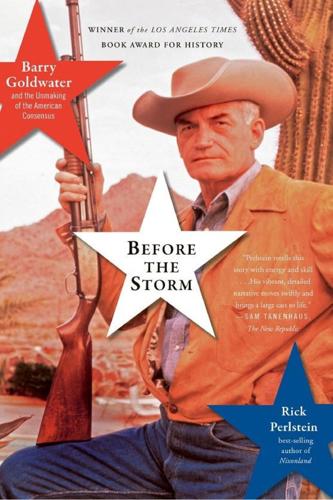
Before the Storm: Barry Goldwater and the Unmaking of the American Consensus
by
Rick Perlstein
Published 17 Mar 2009
Goldwaterites had been amusing themselves all the while with a ritual that had begun in Texas Republican circles: one side of a hall would raise the ear-splitting cry “Viva!” The other side, challenged to scream louder, pronounced: “Olé!” In a rented gymnasium in Houston it sounded impressive. Over the yawning expanse of the Cow Palace, it was overwhelming—energizing to those privy to the rite, harrowing to those who were not. Norman Mailer, covering the convention for Esquire, heard in it “a mystical communion in the sound even as Sieg Heil used to offer its mystical communion.” The debate had been moved squarely out of prime time. But what followed assured it would be repeated in future prime times over and over again. Bored delegates were milling about.
…
Playboy had an interview with George Wallace, who, asked if his campaign would soon be forgotten, replied, “That may be the case as far as I’m concerned. But the attitude of millions of people toward the trends in the country will not be forgotten.” Esquire, meanwhile, had two articles on the Republicans: Norman Mailer on Barry Goldwater and the July convention (“The iron power of the iron people who had pushed him forth—as echoed in the iron of the Pinkertons on the 14th and 15th Floor—now pushed forth over the nation an iron regime with totalitarianism seizing the TV in every frozen dinner”), and Rowland Evans and Robert Novak on the journey that had brought Richard Nixon to the pitiable irrelevancy in which he now found himself.
…
Without, Life was fooled: “Goldwater’s Foreign Policy,” Life, November 1, 1963. The Washington Post had just reported: “Goldwater Aides Admit Momentum Has Changed,” WP, February 8, 1964. 314 For White’s mounting frustrations with the Arizona Mafia, see White with Gill, Suite 35o5, 275-77, 293. Joe Alsop is quoted in Norman Mailer, “In a Blue Light: A History of the 1964 Republican Convention,” Esquire, November 1964. Kitchel’s mood is in White with Gill, Suite 3505, 301. 314 For Goldwater being kept from White memo, see White with Gill, 287. For fund-raising, see CT, January 4, 1964, 1; Bill Middendorf, “Balance Sheet per December 31, 1963,” WAR, Box 155/8; and Finance Highlights Report No. 10, April 4, 1964, FCW, Box 8/G.

How to Write Like Tolstoy: A Journey Into the Minds of Our Greatest Writers
by
Richard Cohen
Published 16 May 2016
The Wylie Agency LLC: Excerpt from “A Tale of Two Novels” by Martin Amis, originally published in The Observer, copyright © 1980 by Martin Amis; excerpt from “New Novelist Is Called a Plagiarist” by Martin Amis, originally published in The New York Times, copyright © 1980 by Martin Amis; excerpt from “Martin Amis Fears Age Will Rob Him of His Literary Bite” by Martin Amis, originally published in The Sunday Times, copyright © 2009 by Martin Amis; “Amis: Sex Is Impossible for Writers and Embarrassing for Readers” by Martin Amis, originally published in The Sunday Times, copyright © 2010 by Martin Amis; excerpt from The War Against Cliché by Martin Amis (New York: Talk Miramax Books, 2001), copyright © 2001 by Martin Amis; excerpt from The Spooky Art by Norman Mailer (New York: Random House, an imprint and division of Penguin Random House LLC, 2003), copyright © 2003 by Norman Mailer; excerpt from “Vladimir Nabokov, The Art of Fiction No. 40” interview by Herbert Gold, originally published in The Paris Review, Issue 41, Summer-Fall 1967, copyright © 1967 by The Paris Review; excerpt from “Peter Carey, The Art of Fiction No. 188” interview by Radhika Jones, originally published in The Paris Review, Issue 177, Summer 2006, copyright © 2006 by The Paris Review; excerpt from Letters by Saul Bellow, ed.
…
Then there is the question of how close to the action the author stands, and not for the first time Tolstoy is a prime example of an author who orchestrates narrative distance as well as narrative voice. Some of the greatest novelists loved to experiment; from Jane Austen and Wilkie Collins through Faulkner and Kafka to Norman Mailer and Salman Rushdie (who has admitted that in Midnight’s Children he deliberately made mistakes of fact and judgment, only later to discover there were some unintended mistakes too—which served his overall purpose in making his narrator unreliable). Every great writer also has a particular voice, one different from those of his characters.
…
Begin on the second page,” Chekhov advised his brother, who longed to be a writer too. Yet while revision most often involves cutting, pruning, cleaning up, at its best it is a re-vision. One needs to look with fresh eyes, not just do carpentry (although it sometimes is just carpentry). Balzac revised heavily, as did Norman Mailer. P. G. Wodehouse hated second drafts, while Jack Kerouac, William Golding, and John Cheever over the years had to deal with editors good, interfering, and bad. The final chapter is about—well, final chapters. How to bring a story of any length to a conclusion. Dickens and Eliot both had trouble with their endings, while Hemingway often found the whole business impossible.

The Naked and the Dead
by
Norman Mailer
Published 20 Jul 2010
Copyright, 1925, by Harms, Inc., and used with the permission of Music Publishers Holding Corporation. “These Foolish Things Remind Me of You,” by Jack Strachey, Hold Marvel and Harry Link. Copyright, 1935, by Bourne, Inc., and used with their permission. THE NAKED AND THE DEAD. Copyright © 1948, renewed in 1976, by Norman Mailer. Introduction copyright © 1998 by Norman Mailer. All rights reserved. No part of this book may be used or reproduced in any manner whatsoever without written permission except in the case of brief quotations embodied in critical articles or reviews. For information, address Picador, 175 Fifth Avenue, New York, N.Y. 10010.
…
For information on Picador Reading Group Guides, as well as ordering, please contact the Trade Marketing department at St. Martin’s Press. Phone: 1-800-221-7945 extension 763 Fax: 212-677-7456 E-mail: trademarketing@stmartins.com Library of Congress Cataloging-in-Publication Data Mailer, Norman The naked and the dead / Norman Mailer.—50th anniversary ed. p. cm. ISBN 0-312-26505-0 I. Title. PS3525.A4152N34 1998 813'.54—dc21 98-6700 CIP First published in hardcover in 1948 by Rinehart and Company The Fiftieth Anniversary Edition first published in 1998 by Owl Books, Henry Holt and Company, Inc.
…
It has virtues, it has faults, but it also has a redeeming, even stimulating touch of Tolstoyan compassion, and thereby enables me to feel hope for all of us when very occasionally I go back and read a few pages. Allow me then to suppose that there is a good deal of hope to be found if one reads all of its pages. Norman Mailer PART ONE Wave 1 NOBODY COULD sleep. When morning came, assault craft would be lowered and a first wave of troops would ride through the surf and charge ashore on the beach at Anopopei. All over the ship, all through the convoy, there was a knowledge that in a few hours some of them were going to be dead
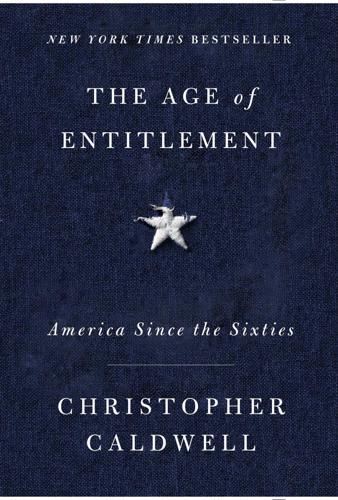
The Age of Entitlement: America Since the Sixties
by
Christopher Caldwell
Published 21 Jan 2020
For blacks it was close to 1 to 2. However inevitable the sexual disruption of the 1960s and 1970s might have been, a variety of sexually enthusiastic and culturally influential men sought to promote it as a “sexual revolution,” as if it had been somebody’s brilliant idea, probably theirs. John Updike, Gore Vidal, Norman Mailer—for such novelists, the trend to more open sexual relations offered new opportunities in culture, art, and society. Hugh Hefner felt the same way. In 1953, he had founded the monthly Playboy, a magazine that included ample political and cultural coverage but was known best for its color photo centerfolds of pneumatic nudes.
…
Nichols (1974), 171 Laura and John Arnold Foundation, 209 Leadership Conference on Civil Rights, 123 Leary, Timothy, 80 Lee, Robert E., 149 LePage, Paul, 246–247 Lesbian and Gay Teachers Association, 168 lesbianism, 59 (see also gay rights, homosexuality, sexuality) Lessig, Lawrence Code, 199 Letter from Birmingham City Jail, 1963 (King), 120–121 leveraged buyouts, 128–129 Levy, Ariel, 225 Lexus (corporation), 224 liberalism, 96, 100, 163, 164 Life magazine, 84 Lilla, Mark, 93 Limbaugh, Rush, 190 Lincoln, Abraham, 5, 149–150, 269 Lockheed, 133, 134 Lombardi, Vince, 94 Long, Gavin, 266 Los Angeles, California, 28, 29, 31, 178, 241, 259 Los Angeles Dodgers, 153–156 Los Angeles Times, 117, 154, 219, 245, 257 Louisville Courier-Journal, 236 LSD (lysergic acid diethylamide), 80 Luxemburg, Rosa, 225 Lyotard, Jean-François, 140 MacArthur, Douglas, 70 Macy’s, 224 Maddow, Rachel, 222, 236 Maher, Bill, 279 Mahler, Gustav, 130 Mailer, Norman, 48 Malcolm X, 26–28, 148, 151 Mandabach, Paul, 151 Manhattan (film), 130 Mann, Barry, 46 Mansfield, Harvey C., 258 Marbury v. Madison (1801), 268 March on Washington (1963), 4, 17, 19, 21, 82 Marcus, Greil, 81 marijuana, 243 Marley, Bob, 247 Marsden, George, 41 Marshall, Alfred, 212 Marshall, John, 268 Marshall, Margaret, 220–221, 225 Marshall Plan, 40 Martin, Trayvon, 264 Martin du Gard, Roger, 167 Marxism, 163 Massachusetts Institute of Technology (MIT), 181 “Master Teacher” (song), 264 Matrix, The (film), 264 Mattus, Reuben, 142 Maugham, Somerset, 136 Mayer-Schönberger, Viktor, 192 Mayfield, Curtis, 242 Mazzoli, Romano, 116 McCain, John, 184 McCall, C.

The Future Won't Be Long
by
Jarett Kobek
Published 15 Aug 2017
I’m a butterfly and a bee. —Baby, said Regina, what the hell are you talking about? —I’m talking about beating this old man like a dusty broom, I said. I yanked her away. Norman Mailer never said a word. I suspect that the scene existed beyond his critical capacity. A faggoty farm boy fussing over Nuyorican tail. The triumph of multiculturalism. Word traveled around the party that I was the guy who threatened to kill Norman Mailer. High school is inescapable. No matter how many miles from home. This gossip attracted a contingent of younger people. Some pretended to have read Trapped, but I knew that they hadn’t.
…
Goes Gold OCTOBER 1993: Adeline Receives a Postcard DECEMBER 1993: Dorian Corey JANUARY 1994: Baby Attends the Launch for Philip Levine’s The Bread of Time FEBRUARY 1994: Baby Sees Schindler’s List FEBRUARY 1994: Karen Spencer MARCH 1994: Baby Adopts the King of France APRIL 1994: Baby’s New Novel MAY 1994: Baby Sees a Ghost JUNE 1994: Baby Turns In His Manuscript AUGUST 1994: Reunion AUGUST 1994: Reunion, Part Two NEW YEAR’S EVE 1994: Baby and Adeline Watch Television APRIL 1995: Baby and Adeline Go to Norman Mailer’s House APRIL 1995: Trouble in Club Land MAY 1995: Adeline Has Lunch with Thomas Cromwell, Touches the Berlin Wall (Again) JUNE 1995: Dinner at Tom and Aubrey’s NOVEMBER 1995: Suzanne Comes to New York City MARCH 1996: Baby Explains How the World Works APRIL 1996: Peter Gatien Fires Michael Alig APRIL 1996: Baby and Adeline Go to the Mars Bar APRIL 1996: Michael Musto Breaks a Story MAY 1996: Baby and Parker Play Pool JUNE 1996: Baby Looks for Michael SEPTEMBER 1996: Baby and Adeline See Freaks SEPTEMBER 1996: Baby Does an Event at the Union Square Barnes & Noble OCTOBER 1996: Baby Goes on a Book Tour NOVEMBER 1996: Baby Goes to Honey Trap DECEMBER 1996: Michael Alig Is Arrested DECEMBER 1996: Adeline Breaks the News DECEMBER 1996: Baby Attempts a New Book CHRISTMAS DAY 1996 About the Author SEPTEMBER 1986 Baby’s Parents Murder Each Other So Baby Goes to New York I moved to New York not long after my mother killed my father, or was it my father who murdered my mother?
…
Back in Wisconsin, you’d drive for three solid hours to buy an album, or a book, or pants, or anything. And that would only bring you to what people back home call a city, a place of maybe ten thousand people. Oh people, oh the people, oh New York, oh your glorious people. Your Puerto Ricans, your Hebrews, your Muslims, your Chinese, your Eurotrash, that fat little fuck Norman Mailer, your uptown rich socialites, your downtown scum, your Black Americans, your Koreans, your Haitians, your Jamaicans, your Italians, your kitchen Irish, Julian Schnabel, your Far Rockaway and Staten Island white trash. Oh New York, I loved your people. They were all so beautiful! Many of them were hideous, really ugly with terrible teeth, but even the ugly ones were beautiful too!

Misogynies
by
Joan Smith
Published 10 Mar 1992
Ibid, p. 363 12. Op cit, p. 75 13. The Art of the Novel, Faber, 1988, p. 135 GENTLEMEN PREFER DEAD BLONDES 1 Norman Mailer, Marilyn: A Biography, Putnam Publishing Group, 1987, p. 15. 2 Ibid., p. 40. 3 Arthur Miller, Timebends: A Life, Methuen, 1987, p. 306 (Grove, 1987). 4 These events are described in detail in Fred Lawrence Guiles, Norma Jeane: The Life and Death of Marilyn Monroe, Grafton, 1986, pp. 251-2. 5 Marilyn Monroe, My Story, Stein and Day, 1986, pp. 237-8. 6 Norman Mailer, op. cit., p. 15. 7 Ibid., p. 15. 8 Ibid., p. 79. 9 Ibid., p. 91. HOLOCAUST GIRLS 1 David Caute, Sixty-Eight: The Year of the Barricades, Hamish Hamilton 1988, p. 139 (Harper & Row, 1988). 2 William Styron, Sophie’s Choice, Corgi, 1981, p. 197 (Random House, 1980). 3 Primo Levi, If This Is A Man and The Truce, introduction by Paul Bailey, Abacus, 1987, p. 11. 4 Styron, op. cit., p. 167. 5 Ibid., see pp. 163-76 and pp. 222-43. 6 Ibid., p. 163. 7 Ibid., p. 575. 8 Ibid., p. 576. 9 Ibid., p. 576. 10 Ibid., p. 241. 11 Ibid., p. 289. 12 Ibid., pp. 66-7. 13 Ibid., p. 657. 14 Ibid., p. 662. 15 Ibid., p. 64. 16 Ibid., p. 66. 17 Ibid., pp. 75-6. 18 Ibid., p. 73. 19 Ibid., p. 178. 20 Ibid., p. 461. 21 Ibid., p. 293. 22 Angela Carter, The Sadeian Woman, Virago, 1979, p. 39 (Pantheon, 1988). 23 Quoted in Susanne Kappeler, ‘The White Brothel: The Literary Exoneration of the Pornographic’, from Sexuality, A Reader, edited by Feminist Review, Virago, 1987, p. 330. 24 Ibid., Kappeler, p. 330.
…
GENTLEMEN PREFER DEAD BLONDES Here comes Marilyn, the misogynist’s monster mate: those wiggling hips, that imprisoned waist, the jutting, inescapable breasts. What is she other than a woman made for sex? Yet not even a woman; the simple, naïve mind of a child has been transplanted into the body of a full-grown woman. Sex with her would be like eating ice-cream, Norman Mailer wrote.1 He was wrong; more like taking sweets from a child in the park. Marilyn is the victim who will not, cannot, answer back, and sex with her is a paedophiliac dream; do what you like and she won’t tell. How could she run to Mummy when she knows, deep inside, that she led you on, she made you do it?
…
Power over men, yes; but not the vicious, dribbling lust that lay behind the awed glances, the respectful introductions, the admiring eyes. Sometimes not even, behind: in his autobiography, Timebends,3 Arthur Miller describes how, in a bookshop, he once saw a man watching Marilyn from the next aisle while masturbating in his trousers. No wonder she was reluctant to meet Norman Mailer, the man who most perfectly understood the desires and fantasies she aroused; and no wonder that the highlight of her life, as she later described it, was her morale-boosting trip to Korea in 1954. The episode4 took place during what was supposed to be a wedding trip to Japan with her second husband, Joe DiMaggio.

Chasing the Moon: The People, the Politics, and the Promise That Launched America Into the Space Age
by
Robert Stone
and
Alan Andres
Published 3 Jun 2019
Motivated by anger Bill Kaysing, interview with Nardwuar, aka John Ruskin (February 16, 1996), https://nardwuar.com/vs/bill_kaysing/. As early as 1968 Thirty-Minute Theatre, “The News Benders,” BBC Two (January 10, 1968). “In another couple of years”: Norman Mailer, interview with Studs Terkel (January 29, 1971). “Mass hoodwinking” Norman Mailer, “A Fire on the Moon,” Life (August 29, 1969). One went so far Bill Anders, interview with the authors (May 13, 2015). Marvelous achievement Freeman Dyson, interview with Robert Stone (March 19, 2015). APPENDIX: AFTER A FEW MORE REVOLUTIONS AROUND THE SUN Buzz Aldrin found it: Edwin E.
…
Three months after Apollo 11 returned, an opinion poll indicated that 56 percent wanted Nixon to spend less money on space; only 10 percent spoke in favor of increasing NASA’s budget. It was hardly the ideal moment for NASA to make the case for an all-out program to put humans on Mars by the early 1980s. A few weeks before the launch of Apollo 11, Time Life Inc. had given Norman Mailer a contract to write a book about the first moon landing. Selections would be excerpted in Life magazine and the entire book published by the venerable Boston firm of Little, Brown. But when he submitted his finished manuscript in mid-1970—ten months past the deadline and more than twice its contracted length—Mailer and his publisher took stock of how much had changed in the past year.
…
Ironically, this was one rumor the Soviet Union hadn’t tried to cultivate as part of their disinformation campaign against the United States. At the time of the moon landing, few voiced rumors of it being a hoax, although as early as 1968 just such a secret government conspiracy had served as part of the plot of a darkly satiric BBC television drama, The News-Benders. Author Norman Mailer may have sensed the growing paranoia when he joked a year after Apollo 11, “In another couple of years there will be people arguing in bars about whether anyone even went to the Moon.” He was quick to dismiss any such “mass hoodwinking” because, he argued, to pull it off would entail an effort and genius greater than the feat of launching the Saturn V and landing on the Moon.
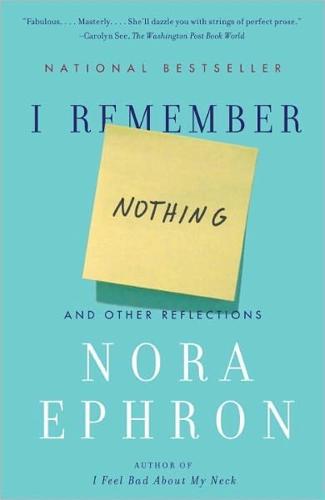
I Remember Nothing
by
Nora Ephron
Published 9 Nov 2010
I am not proud of this, but I mention it because it explains why I honestly cannot remember anything about the protest, including whether I ever even got to the Pentagon. I don’t think I did. I don’t think I’ve ever been to the Pentagon. But I wouldn’t bet a nickel on it one way or the other. Norman Mailer wrote an entire book about this march, called The Armies of the Night. It was 288 pages long. It won the Pulitzer Prize. And I can barely write two paragraphs about it. If you knew Norman Mailer and me and were asked to guess which of us cared more about sex, you would, of course, pick Norman Mailer. How wrong you would be. Here are some people I met that I remember nothing about: Justice Hugo Black Ethel Merman Jimmy Stewart Alger Hiss Senator Hubert Humphrey Cary Grant Benny Goodman Peter Ustinov Harry Kurnitz George Abbott Dorothy Parker I went to the Bobby Riggs–Billie Jean King tennis match and couldn’t really see anything from where I was sitting.
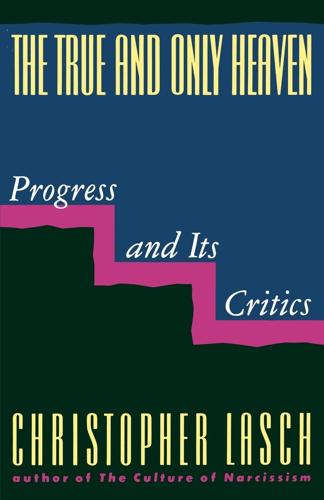
The True and Only Heaven: Progress and Its Critics
by
Christopher Lasch
Published 16 Sep 1991
Not to be outdone, White published an interview with Jacqueline Kennedy, two weeks after the assassination, that closed with the words from the Broadway musical, as quoted by Mrs. Kennedy: "For one brief shining moment there was Camelot." * ____________________ * Kennedy's admirers were not wrong to stress the need for a leader who would speak to and represent the "real subterranean life of America," as Norman Mailer put it in his account of the 1960 Democratic convention. There was much to be said for Mailer's contention that "the life of politics and the life of myth had diverged too far" in the postwar years and that the times demanded a leader who could "engage" once again the "myth of the nation" and thus bring a new "impetus ... to the arts, to the practices, to the lives and to the imaginations of the American."
…
The emergence of the "Camelot" legend can be traced in Arthur M. Schlesinger, Jr., "The Decline of Greatness" (1958) and "Heroic Leadership and the Dilemma of Strong Men and Weak Peoples" (1960), in The Politics of Hope (1962); in the same author's Kennedy or Nixon: Does It Make Any Difference? (1960); in Norman Mailer, The Presidential Papers (1963); and in the journalistic commentary on Kennedy's assassination and its social significance: Newsweek, 2 Dec. 1963, 36; Saturday Evening Post, 14 Dec. 1963, 22; Life, 29 Nov. 1963, 22; Time, 29 Nov. 1963, 84; U.S. News & World Report, 16 Dec. 1963, 84; Ben Bradlee, "He Had That Special Grace," Newsweek, 2 Dec. 1963, 38-48; Theodore H.
…
McCann, Willis: on nostalgia, 106 McCarthy, Joseph, 25, 37, 99, 217, 218, 456, 468 Macaulay, Thomas Babington: on progress, 57-58; on social history, 119 McClosky, Herbert: on democracy, 465 ; on psychology of conservatism, 463 Maccoby, Eleanor: on middle-class family, 46I McCown, Chester Carlton: on progress, 38I-82 Macdonald, Dwight, 26, 30 MacFarlane, Robert: on proprietorship, 205 McGill, Ralph: on Kennedy assassination, 470 McGovern, George, 217, 507, 525 Machiavelli, Niccolò, 49, 52, 173, 184, 187, 233, 235, 262, 264 ; and Burke, 131 -32; on Christianity, 174 ; on Fortune, 50, 263 MacIntyre, Alasdair, 172 McKinley, Donald: on working-class family, 462 McKinley, William, 470 Macpherson, C. B., 197, 199, 200, 203 Macune, C. W., 218 ; on money trust, 219 Macy, John: on Massachusetts, 419 Mailer, Norman: on JFK, 469 -70 n. Maine, Henry, 140, 159 ; on status and contract, 137, 138 Main Street (Lewis), 424 Making of the English Working Class, The (Thompson), 210 Malcolm X, 471 Malinowski, Bronislaw, 424 Malloy, Ione: on busing, 501 -4; on ethnic solidarity and racial justice, 502 -3 Malthus, Thomas, 272 managerial revolution, 437 ; see also professional-managerial class Managerial Revolution, The (Burnham), 510 Mandeville, Bernard, 52, 197 n., 253 n.; on luxury, 53 Mann, Horace: attacked by Brownson, I87-88; on "internal and moral restraints," 60 Mannheim, Karl, 107 ; on utopianism, 41 -42 n., 83 "Man the Reformer" (Emerson), 271, 277 -582- Mao Tse-Tung, 157 Marcuse, Herbert, 26, 28, 29 Marie Antoinette, 129, 130, 131, 227 -28 Marinetti, F.

Keep It Real: Everything You Need to Know About Researching and Writing Creative Nonfiction
by
Lee Gutkind
Published 1 Jan 2008
One of the major reasons for the sudden and growing popularity of the genre is that poets and fiction writers have also entered into it with great enthusiasm, experimenting with and pushing the parameters of the form. The long list of respected poets and novelists who have written landmark books and essays in creative nonfiction includes Norman Mailer, Diane Ackerman, William Styron, and W. S. Merwin, as a barest beginning. Without endorsement and experimentation by writers whose reputation was made in other genres, creative nonfiction could not have grown at the astounding rate it has. Since the early 1990s there has been an explosion of creative nonfiction.
…
They cultivated the subjective voice, believing that the writer’s point of view had become an integral part of any story. Novelists also turned their hand to writing nonfiction and incorporated the narrative techniques that had served them so well in fiction. In 1966 Truman Capote examined the murder of a family in Kansas in his seminal work In Cold Blood. A few years later Norman Mailer’s nonfiction meditation on an antiwar rally at the Pentagon became The Armies of the Night, a work that won a Pulitzer Prize. Its subtitle, History as a Novel, the Novel as History, spoke to the crossing of two great currents as journalism met creative writing. A new genre, often referred to as New Journalism, began to emerge in American letters.
…
Keneally describes the exhaustive research that undergirds his story: interviews with fifty Schindler rescuees; on-site visits with one of these survivors to the major locales of the tale; Schindler’s papers and private letters; and written testimonies deposited by Schindler Jews at Yad Vashem, the Holocaust Martyrs’ and Heroes’ Remembrance Authority. Keneally then explains some of the choices he made and introduces the reader to one of his book’s major themes, the complexity (and ambiguity) of heroism. The afterword to The Executioner’s Song, Norman Mailer’s 1979 Pulitzer Prize–winning volume, achieves similar goals. Mailer describes the interviews, court transcripts, and other documents that permitted him to re-create the unsettling saga of Utah mass murderer Gary Gilmore, who wanted only to die. Mailer expresses humility (and protects himself) in this afterword, for Gilmore’s firing squad death left the writer in the awkward plight of never having met his work’s central figure.

Gonzo: The Life of Hunter S. Thompson
by
Corey Seymour
,
Johnny Depp
and
Jann S. Wenner
Published 31 Oct 2007
PAUL SEMONIN I had a small room over on Charles Street right off West Fourth, which was only a block away from Hunter. We were practically roommates from April of ’59 right on through the summer and into the early fall, until the winter of ’60, when Hunter took off for Puerto Rico. We were getting more and more into the beatnik culture, reading Kerouac and Ginsberg. And of course Norman Mailer’s early stuff was really important. That was teething for us until we were starting to live those kinds of personas in a way. That whole period forms this kind of continuum when you might say there was a kind of brotherhood of dare, a brotherhood of rebellion. Hunter was starting to work on Prince Jellyfish, which is the first novel or manuscript that I remember him actually sitting down to try and write.
…
I’ve got all the drawings from the trip, and I never used them again because Hunter never filed a single word about the fight, or about Zaire, or about anything. I couldn’t even go to the fight—Hunter had sold our tickets on the day of the fight itself, maybe ten minutes before we were supposed to be there. I watched it on television. NORMAN MAILER, the novelist. Zaire was fascinating. There were a great many of us writers there who loved prizefights and were absolutely, completely attached to the idea of the fight. It was a very exciting fight, and we’d covered it for weeks. Then Hunter came in, and it was so typical of Hunter: Here was the convocation of experts, and his experience throughout most of his life was that convocations of experts were concentrations of bullshit.
…
On the night of the fight, Hunter had a big bag of marijuana, and he took a bottle of Glenfiddich I had bought him down to the pool with a bucket of ice and the bag, threw the marijuana into the pool—everyone else was off watching the fight, you know—and dived into the middle of the marijuana and then just hung by the side of the pool, smoking and drinking and loving the whole meaningless nature of it. I did a drawing of the eighth round when Foreman went down after Ali hit him. I drew the punch. I made it up almost as though I had seen it. I had to. NORMAN MAILER The bet he’d made was that the fight would be a bummer, and that he could still ace us even though he’d spent his time swimming when the fight was on. Instead it was one of the great fights of all time, and he was shut out entirely from it. I saw him on the plane home, and there he was, full of good spirit and knocking down a great many beers in a row.

America Right or Wrong: An Anatomy of American Nationalism
by
Anatol Lieven
Published 3 May 2010
Nation states have never come into existence peacefully and without injustices."87 Yet these writers did not follow up with the obvious corollary, which is that the Palestinians too "behaved like other peoples" in fighting to hold on to their ancestral land where they were a large majority. Even Norman Mailer, while strongly criticizing current Israeli policies, has suggested that the Palestinians are at fault for not having welcomed Jewish refugees in the 1940s. Instead, self-described liberals like Alan Dershowitz, professor of law at Harvard University, have explicitly used arguments of collective Arab and Palestinian guilt as a justification.
…
See also liberals Lehmann, Michael, 66 Le Pen, Jean-Marie, 37, 39 Lerner,Max,21,46, 137 Leslie, Warren, 102 liberals, U.S., 14-15, 76, 78, 84, 175, 191-92, 198; criticism of, 30, 155 Lieber, Francis, 83 Likud, 152, 177, 182-83 Limbaugh, Rush, 30, 121 Lincoln, Abraham, 42 Lind, Michael, 19, 62, 67, 68 Lindsay, Vachel, 88 Lindsey, Hal, 144,145, 147, 182 Lipset, Seymour Martin, 118, 126,204 London Financial Times, 16, 31 Lott, Trent, 43, 121, 166 Lustick, Ian, 181 McCain, John, 122 McCarthyism, 133-34, 135, 138 McClure's (magazine), 131 McFaul, Michael, 77-78 McNeill, William H., 58, 59 McVeigh, Timothy, 118 McWhiney, Grady, 101, 136 Maher, Bill, 24 Mailer, Norman, 195 Manfield, Stephen, 129 Mann, Thomas, 19, 24 Marshall, George, 156 Marshall, John, 97 Marty, Martin, 192 martyrdom and nationalism, 192-93. See also antiSemitism Marx, Karl, 10, 147 Maurras, Charles, 92 Mead, Walter Russell, 11, 3738, 44, 95, 120, 160 media, 21,29-30, 31-32, 44, 73 Meir, Golda, 197 Melville, Herman, 33, 56 messianism, U.S., 14, 18, 56, 63-71, 72, 75; and academia, 65-66; consequences of, 81-83; by example, 64, 75-76; foundation for, 52-53, 6670 middle classes, 9, 55, 219, 220-21 Middle East, 73, 74, 75; compared to Europe, 21112; dangers of involvement in, 190,218-19; rhetoric of democratizing, 208-10, 213, 214, 215; U.S. agenda/policies in, 82, 176-79, 189-90.
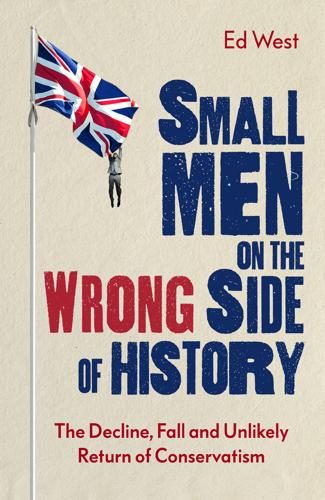
Small Men on the Wrong Side of History: The Decline, Fall and Unlikely Return of Conservatism
by
Ed West
Published 19 Mar 2020
But then plenty of high-profile people on the Left have had a soft spot for criminals. Jean-Paul Sartre took up the cause of one criminal, a thief called Jean Genet, and wrote a 700-page book about him which also doubled, according to Paul Johnson, as ‘a celebration of . . . anarchy and sexual incoherence’.22 Likewise Norman Mailer had an obsession with jailbirds, even to the point of getting a killer called Jack Abbott released early. Abbott became a darling of the literary scene in New York until one day in July 1981 when he stabbed to death a complete stranger. Then there was author William Styron, who got the death-row convict Benjamin Reid paroled and then in 1970, upon Reid’s release, arranged to have him live at his house and accepted into college.
…
S. 227 Liberal Democrats 8, 266, 269, 273, 355 liberal elites 5–6 Liberal Party 50, 75 formation 77 Liberal Party (Victorian) 65 Libertarian Party 207 libertarianism (Right-liberals) 203–8, 240 Library Lion (book, 2006) 257 Liddle, Rod 190–1 Lilla, Mark 125–6, 173, 184 Limbaugh, Rush 312, 313 Lincoln (2012) 228 Lincoln, Abraham 228 linear progress 227–8 Linehan, Graham 186 Lineker, Gary 195 Lipset, Seymour Martin 145, 146 Lisbon earthquake (1855) 90 literacy rates 175 Livingstone, Ken 20 ‘Lizardman’s Constant’ 302 Loaded (magazine) 169 Locke, John 51–3, 140, 288 Lollard heresy 326 Lomax, Alan 146 London 5, 18–20, 43–4, 49–53, 55, 119, 156, 163–4, 211, 245–6, 367 see also City of London London Olympics 2012 176, 230–1 Lord of the Rings, The trilogy 361 Louis XVI 55, 59 Lourdes 211 lower-middle classes 5 Loyalists 59 Lucas, Caroline 356 Luddites 91 Luther, Martin 48 Lyon 60 Lysenko, Trofim 144–5 MacBride, Séan 201 MacMillan, James 189 Mad Men (TV series) 185 Madonna 358 Magna Carta, Clause 39 205 Magorian, Michelle 106 Mahler, Gustav 337 Mailer, Norman 121 Major, John 86 Major government 85–6 Malaysia 351 Malcolm X 178 Malmesbury Abbey 125–6 Malthus, Thomas 239 Manchester 156, 173 Manchester Guardian (newspaper) 65, 83 Mandela, Nelson 11, 16, 24, 82, 89, 174, 201, 256 Mandelson, Peter 153, 159–60 mankind, nature of 31–3, 35, 36–8 Manning, Cardinal 213 Mao Zedong 99, 139, 226–7, 256, 263 Marat, Jean-Paul 59–60 Marcuse, Herbert 135, 325 Marie Antoinette 59, 178, 210 Marie Stopes International 241 marriage 127–8, 246, 282 mixed 301–2 same-sex 222–3, 228–9, 272–3, 292, 328 shotgun 128 marriage gap 247–55 Marx, Karl 41, 75, 93–4, 104, 105, 109, 135, 174, 224, 371 Marxism 82, 128, 145, 198, 202, 224, 227, 319 economic 127 see also Cultural Marxism Mary I 48 masculinity 114, 136, 140 masochists 105–6 Mass 60, 135, 291 Matrix, The (1999) 345 Matthew, Gospel of 229 Maurras, Charles 95 May, Theresa 6 McCain 28 McCarthy, Joseph 128 McCarthyism 128, 146, 148 McCourt, Frank, Angela’s Ashes 172 McIlroy, Will 104 Mead, Margaret 134 means of production 135 memes 344, 353 Menninger, Karl 121 Methodists 64, 255, 280 middle classes 9, 129, 191, 342, 357 see also lower-middle classes; upper-middle classes Middle East 236, 361 middle-aged conservatism 1, 2, 273–5 Migration Watch 250 Miliband, Ed 15, 237, 354 military 8–9 Mill, John Stuart 10, 289, 304, 325 Millar, Fiona 234–5 Millennials 2, 19, 84, 221 Miller, Arthur 128 Miller, Stephen 341 Milton, John 64 missionaries 92 Momentum 263 Momentum Kids 263 monarchy 66–7 Monbiot, George 278–9 Mondrian, Piet 98 Montesquieu 206, 288 Monty Python 191 Moon Man (2006) 257 Moore, Charles 282–3 Moore, Demi 311 Moore, Michael 268, 313 ‘moral panic’ 34 Moran, Layla 223 More, Thomas 92 Morocco 351 Morpurgo, Michael, The Pied Piper of Hamelin 258 Morrell, Frances 18–19 Möser, Justus 67, 85 mothers, unmarried 85 Mothers’ Union 197 Mount, Ferdinand 99 Mozilla 289 Mugabe, Robert 16 Muggeridge, Malcolm 46 Muller, Jerry Z. 50, 65, 66, 68, 74 multiculturalism 17, 177, 190, 238–9, 270, 292, 315, 317, 329, 341, 346, 355 multinationals 17–18 Mumsnet 198 Münster 92 Murray, Charles 152, 239, 246, 289 Murray, Douglas 307 Muslims 136, 173, 229, 264, 299, 317–18, 321, 351, 366–8 see also Islam Mussolini, Benito 94–5, 113, 126 mutation 72 My Naughty Little Sister (Edwards, 1952) 258 Myanmar 351 Nader, Ralph 313 Naked Gun, The series 22 nanny state 17 Napoleon Bonaparte 81, 190 narrative selection 299–300 nation-states 67 National Academy of Sciences 300 National Association of Scholars 320 National Blood Service 196–7 National Childbirth Trust (NCT) 296 National Health Service (NHS) 176, 195, 197, 204, 208, 230–1 National Review (magazine) 339 national socialism 96, 97 see also Nazis nationalism 94, 95, 126, 262, 345 nations 71 Native American culture 130–1 natural selection 147 Nature Genetics (journal) 349 Nature (journal) 350 nature-nurture debate 138–40 Nazis 20, 24, 87–9, 96–100, 105, 126, 139, 155, 157, 161, 172, 179, 196, 197–8, 205, 210–11, 237, 303, 312, 325, 329, 346 see also national socialism NCT see National Childbirth Trust neoconservatives 240 nepotism 70–1 Netflix 137 Netherlands 49, 52 neuroticism 108 New Atheism 215–16, 218, 224 New Atheism Internet Wars 214–15 New Deal 96 New England 49, 55, 57, 320 New Labour 153, 156–60, 163, 200, 265 New Left 146 New Model Army 49 ‘New Moral World’ 93 New Statesman, The (TV show) 89, 272 New Tories 267 New York 153–4 New York Times (newspaper) 99, 177, 178, 229, 236, 298–9, 313 News of the World (newspaper) 283 NHS see National Health Service Nicaraguan civil war 14–15 Niemietz, Kristian 197 Niemöllers, Martin 358 Nietzsche, Friedrich 229 Night to Remember, A (1958) 162 Nike 4–5 Niskanen Centre (think-tank) 295 Nixon, Richard 24, 148, 153, 154, 336 noble savage 130–1 non rapid eye movement (NREM) sleep 180 Non-Player Characters (NPCs) 344 non-whites 127 Nonconformism 65, 92 Norman, Jesse 54 norms Christian 79 cultural/moral 70 shifting 2–3 traditional gender 246 Norodom Sihanouk 17 Norris, Chuck 24 North America 362 North Korea 97, 226 Northern Ireland 5, 158, 214, 362 Norway 351 Norwich, John Julius 259 Notting Hill 42, 81, 266, 269–70 novelty seeking 137 Nowrasteh, Alex 177 NPR 313 nuclear families 246 Nugent, Ted 24 Nuts (magazine) 169, 212, 238–9 NWA 122 Oakeshott, Michael 72, 159, 358, 365 Oath of Supremacy 291 Obama, Barack 13, 24, 27, 30, 227, 249, 256, 265, 310–11, 319, 329, 335, 337 Obama, Michelle 11 Oberlin College 323 Obi-Wan Kenobi 365 O’Brien, James 186 Observer (newspaper) 245 OkCupid 302 Old Sarum 17 Oman 351 openness 108–9, 137 optimism 37–8 ‘Orchestra Pit Theory’ 313 Original Sin, doctrine of 28, 33, 129, 229 O’Rourke, P.J. 22 orthodoxy 65–6, 128, 240 Orwell, George 80, 179, 341 Animal Farm 143–4 Nineteen Eighty-Four 144 Osborne, George 250, 270 Oscars 4 Oswald, Lee Harvey 178 Owen, Robert 92–3, 97 Owenites 93 Oxfam 233 Oxford University 36, 37, 52, 80, 145, 151, 166, 326 paedophiles 18 paganism 6, 12, 173, 254, 255, 276, 291 Page Eight (play) 189 Paine, Thomas 56–9, 61, 63, 71–2, 366 Paisley, Revd Ian 296 Pakistan 292 Palestine 300, 362 Pandora’s box 29 Pantisocracy 91 Papua New Guinea 18 Paris 36, 38, 55–6, 90, 131–2, 190 Parliament 317 see also House of Commons; House of Lords Parliamentarians 36, 50, 51 Parliamentary majorities 1 partisanship 354 Partridge, Alan 24, 192 Party Politics (journal) 248 paternalism 79 Paterson, Isabel 206 Paterson, Owen 356 Patreon 290 Paul, Ron 207 Paul, St 222, 254 PBS 313 Peasants’ Revolt (1381) 46, 76 Peel, Robert 77 Peelites 77 Peep Show (TV show) 87, 88, 285 Pelagius 31–2, 349 Penn, Sean 24 Penn, William 57 Pennsylvania 57 Pentagon 339 People for the American Way 186 personality disorders 187 personality traits 139 Big Five 108–13, 137, 363 genetic 348–50 pessimism 30–3, 35, 36 Peterson, Jordan 152, 348 Pew Research 221, 238, 297, 310 Philadelphia 57 Philip, Prince, Duke of Edinburgh 18 Phillips, Kevin 338 Phillips, Melanie 46, 273 physical segregation 295–6 Picasso, Pablo 98, 179 Pierre d’Avrigny 254 pill, the 127, 155, 362 Pinker, Steven 140 Pinochet, Augusto 25, 159 Pinter, Harold 80 Pinter Prize 189 Pipes, Richard 303 Pirates Next Door, The (Duddle, 2012) 257 Platform 51 199 Plato 32, 92 pluralism 52, 290, 305–6 polarisation 295–306, 311 Politburo 21 Political Correctness Gone Mad 140, 141–52, 245, 289 political identity 8 political typing 137 polytechnics 133 Pope, Lauren 169 pornography 167–70, 212 Porter, Dame Shirley 79 Postlethwaite, Pete 24 postmodernism 136 Potter, Harry 42–3, 183 Poussin, Nicholas 227 poverty 72–3, 173–5, 199, 282 absolute 73 Powell, Enoch 131 Prague Spring 80 prejudice 58–9, 303, 350–1 Presbyterians 145 Presley, Elvis 24 Priam, King 29 Priestley, Joseph 56 Princeton 145 Profumo, John 156, 166 proletariat 127, 132 Proletariat (newspaper) 244 Prospect (magazine) 46 Protestantism 12, 13, 45, 48–9, 64, 155, 291, 294, 312, 329 Latin American 255 Low Church 50, 222 radical 48, 49, 50, 57, 64, 65 US 145 Prussia 303 Pryce, Revd Richard 56 Pryor, Margaret 299 Psychology Today (magazine) 106–7 Public Enemy 24 public morality 332 Public Religion Research Institute 238 Puritans 36, 49, 50, 53, 57, 64, 65, 70, 145, 164, 219, 292, 331 QED (TV show) 141–2 Quakers 299 quangos (quasi-government bodies) 202, 203 Question Time (TV show) 195 Quetelet, Adolphe 270 racial difference 142–3 racial inequality 178 racism 28, 94, 117, 146–7, 183, 193, 241, 280, 291, 301, 341 scientific 16–17 radical change, as negative 72 ‘radical privilege’ 10 radio 312, 314 Radio 3 371 Radio 4 4, 195, 196, 244, 245, 267, 283 Ramadan 229 Rand, Ayn 208 rapid eye movement (REM) sleep 180 Rationalism 215, 223–4 Reagan, Ronald 82, 148, 153, 155, 163, 225, 252, 313, 365 reality, as social construction 133–40 reason 69–70, 223–33 Red Dawn (1984) 185 Red Skull 237 Redmayne, Eddie 10 ‘redpilled’ 345 Rees-Mogg, Jacob 24 Reeves, Richard 111 reform 72–3 Reformation 13, 48, 51, 92, 291, 292–3, 294 ‘second’ 12 Reichstag 98 Reid, Benjamin 121 religion decline of 129 function 68–9 see also specific religions religious fundamentalism 65–6 religious liberty 52 Remain faction 173, 238, 243, 270, 275, 302, 322, 354, 355, 356–8 Republicans 7, 10, 27, 51, 82, 86, 109, 111–12, 114, 122–3, 127, 154, 224, 238, 247–8, 267–8, 270, 274, 279, 294, 297, 300–5, 307, 309, 313, 315, 319–21, 324, 326, 363, 366 Reservoir Dogs (1992) 123 Restoration 37 ‘Revolt of the Elites’ 132 Rhode Island 57 Rickman, Alan 235 rights 205 natural 70 trans-rights 328–9 US civil rights movement 84, 89, 105 see also Bill of Rights Rights of Man 58 Ritter, Carl 342 Roache, Rebecca 237 Roberts, Alderman 280 Robespierre, Maximilien 60, 230 ‘Robin Hood tax’ 200 Robinson, John 166 RoboCop (1987) 279, 361 Rokeach, Milton 107, 333 Roman Church 212 Roman Empire 276, 373 Romania 15, 46 Romans 173, 252–3 romanticism 76–9 Rome 11, 12, 187, 255, 276, 291 Henry’s split with 48 Romero, Oscar 24 Romney, Mitt 248–9, 319, 358 Ronald, Amy 353 Roosevelt, Franklin D. 96 rotten boroughs 17 Rousseau, Jean-Jacques 37–41, 60, 110, 130, 178 Rowling, J.
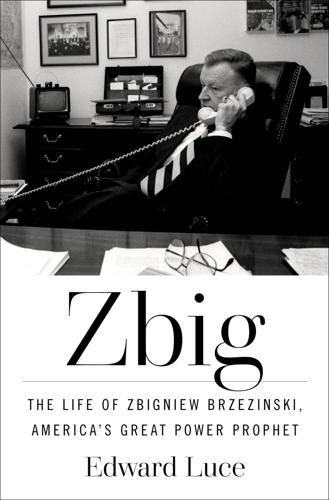
Zbig: The Life of Zbigniew Brzezinski, America's Great Power Prophet
by
Edward Luce
Published 13 May 2025
Humphrey, who was interrupted by catcalls and boos, was easy to depict as a dinosaur from a smoke-filled past. His “show of unity” at the closing of the convention turned into an even bigger nightmare; his main rival, Eugene McCarthy, refused to appear on the podium. Chicago had turned into “a catastrophe,” as Humphrey described it in his memoir.85 Apart from Nixon, the winner of Chicago 1968 was Norman Mailer, whose essays in Harper’s Magazine pierced the smoke to discern the meaning in the chaos. “The Democratic Party had here broken in two before the eyes of a nation like Melville’s whale charging right out of the sea,” he wrote. The Democratic leaders, he said, hovered “above a directionless void, there to loose the fearful nauseas of the century.”86 Presidential candidates nearly always derive a poll bump from their conventions.
…
Humphrey, Subject: Teddy Kennedy for Vice President: “Heads You Lose, Tails He Wins,” July 19, 1968, box I: 94.7, Brzezinski Papers, LoC. 84. Hubert H. Humphrey to Zbigniew Brzezinski, August 6, 1968, box I: 94.7, Brzezinski Papers, LoC. 85. Hubert Humphrey, The Education of a Public Man: My Life and Politics (New York: Doubleday, 1976), 276. 86. Norman Mailer, Miami and the Siege of Chicago: An Informal History of the Republican and Democratic Conventions of 1968 (New York: New York Review Books Classics, 2008, ebook, location 2612. 87. “Losers: Weepers or Walkers,” Newsweek, September 9, 1968. 88. Zbigniew Brzezinski to George Kennan, January 31, 1968, box I: 16.3, Brzezinski Papers, LoC. 89.
…
, 53 Lenin Shipyard strike (Gdańsk, Poland), 361 Leontief, Wassily, 101–2 Lewis, Ann, 444 Lewis, Anthony, 339 Lidia (Polish nursemaid), 24, 29 Likud Party (Israel), 217, 220 Lincoln, Abraham, 210 Lippmann, Walter, 107 Lipshutz, Bob, 219, 259 Lithuania, 40, 66 Lodge, Henry Cabot, 159 Loebl, Eugen, 150 London Review of Books, 440 Lopez, Jennifer, 436 Lovett, Robert, 5, 105–6 Loyola High School (Montreal), 43 Lublin Committee (Polish Committee of National Liberation), 39, 44–45 Luce, Claire Booth, 183 Luce, Edward Time to Start Thinking, 452–53 Luce, Henry, 63 Lugar, Richard, 268, 377, 434, 436 The Lure of the Forest (E. A. Benes), 454 Luther, Martin, 17 Lviv (Ukraine), 11, 21, 435 Lvov, Battle of (1919), 12 Machiavelli, Niccolò The Prince, 285 Madeira School, 378–79 Mahan, Alfred Thayer, 437 Mailer, Norman, 138 Malek, Fred, 396 Malenkov, Georgy, 71, 81, 398 Malley, Robert, 445 Mandelbaum, Michael, 402 Mann, James, 430 Manning, Bayless, 165–66 Mao Zedong, 77, 96, 175, 203, 250, 253, 408 Marcos, Imelda, 270 Marshall, George C., Jr., 52, 178 Marshall Plan, 52 Martin, Jurek, 174 Marxism, 3, 57 vs. nationalism, 53 Marxist-Leninism, 77, 127, 361, 398, 404, 408, 413 Masaryk, Jan, 52 Masaryk, Tomáš, 52 Matlock, Jack, Jr., 404 Mazowiecki, Tadeusz, 401 McCain, John, 429, 434, 436 McCarthy, Eugene, 132–33, 135, 137–38, 141, 144, 168 McCarthy, Joseph, 76, 389 McClellan, David, 117 McCloy, John, 105–6, 303–4, 478n12 McGill University Polish Club, 45 Progressive Conservative Party (Tory Club), 46–47 Soviet apologists at, 46 student activism at, 45–46 Student Labour Club, 47 see also Brzezinski, Zbigniew—MCGILL McGovern, George, 172, 314 foreign policy of, 169–70 presidential campaign of, 6, 168–71, 211, 484n66 on ZB, 257 McHenry, Donald F., 359 McNamara, Robert, 106, 128, 134 McPherson, Harry, 122, 124, 128 Mead, Walter Russell, 438 Mearsheimer, John “The Israel Lobby,” 440–42 Medvedev, Dmitry, 449 Meese, Edwin, III, 380 Meir, Golda, 176, 224 Menand, Louis, 82 Mengistu Haile Mariam, 243 Metternich, Klemens von, 98, 116, 150 Meyer, Cord, 169 Mickiewicz, Adam, 11 Miller, Leszek, 419 Ministry of the Interior (Poland), 153–54 Miracle on the Vistula, 9–10 Mitchell, George, 409 Mitchell, John, 142 Miyazawa Kiichi, 166 Mohr, Charles, 206 Molotov, Vyacheslav, 10, 87 Molotov-Ribbentrop Pact (Nazi-Soviet Pact), 10, 20, 33, 37 MoMA (Museum of Modern Art), 120 Mondale, Walter, 7, 192, 219 on the Carter years, 374 China trip, 283 as Humphrey’s campaign cochair, 137 as JC’s running mate, 186 nuclear freeze supported by, 393 presidential campaign of, 172, 174 size of staff, 424 as vice president, 195 and ZB, 220 ZB’s endorsement of, 392–93 in ZB’s memoir, 385 on ZB’s memoir, 393 Monnet, Jean, 166 Monroe Doctrine, 237–38 Monte Cassino, Battle of (1944), 41 Montreal beauty of, 28 as French speaking, 29, 34 George VI and Elizabeth’s visit to, 29–30 Polish immigrants in, 28 Montreal Gazette, 41, 47 moon landing, 156 Moore, Barrington, Jr., 62, 463 Terror and Progress USSR, 113 Morgenthau, Hans, 117–18, 120, 150 Morning Joe, 432 Mosley, Philip, 86 Mossadegh, Mohammed, 269 Mount Desert Island (Maine), 120 Moyers, Bill, 122, 138 Munich Agreement (1938), 24, 52, 140, 169, 250, 294, 300 Muskie, Ed, 186 on the AFL-CIO’s pro-Solidarity declaration, 362–63 and Gromyko, 338 as Humphrey’s running mate, 137, 167–68 on Iran, 354 on PD-59, 345 presidential campaign of, 168, 172, 174 as secretary of state, 337–38, 345–46 MX missiles, 293–94, 393, 395, 406 Mystical Body of Christ (E.

Good Prose: The Art of Nonfiction
by
Tracy Kidder
and
Richard Todd
Published 15 Jan 2013
Sometimes it is the “I” of personal participation in great events or dire social conditions: Mark Twain learning his way around the mining camps of the West, in Roughing It. More recently, it’s David Foster Wallace having adventures on a cruise ship or Barbara Ehrenreich describing her taste of life as a minimum-wage worker. Then there is the interesting case of the late Norman Mailer. He said that his book Armies of the Night, originally begun as a magazine article for Harper’s, was “history as novel” and “novel as history.” It seems like neither. It looks a lot like reportage, reportage that transforms the first person into the third. This is the book in which Mailer becomes “Mailer,” a character covering and participating in the March on the Pentagon in 1967.
…
At the level of moment-by-moment rendering of the past, the factual becomes all the more problematic. One can see the problem enacted, in a brilliant form, in Frank Conroy’s memoir, Stop-Time, a modern landmark in the genre. When the book appeared, in 1967, it became the literary equivalent of breaking news. The original dust jacket bore just two blurbs—one from William Styron and one from Norman Mailer, two of the most respected American novelists of the day. Stop-Time is an account of growing up rich and poor. (Conroy’s mother was divorced from her well-off husband and took up with a drifter.) It was far from the first memoir about childhood, but it had a freshness and immediacy that made it seem like something new.
…
Hyde’s sanctification of the writer’s role can cause discomfort, especially to a writer with some experience in journalism. The newsroom and the magazine office both offer quick lessons in avoiding preciousness. Journalists aren’t likely to talk about “art” and “creativity.” If they dare to boast at all, they’re apt to talk about being “pros.” Norman Mailer defined a pro as someone who can work on a bad day. He was an artist who loved the sense of himself as a pro. The motto on the pro’s coat of arms would be the timeless wisdom of Dr. Johnson: “No man but a blockhead ever wrote except for money.” A pro makes deadlines, and a pro makes compromises, too.

An Abbreviated Life: A Memoir
by
Ariel Leve
Published 17 Nov 2015
“Someone who cuts the crusts of my bread.” She would laugh at the banality of this. And remind me how fortunate I was to have her, an artist, as my mother. WHEN NORMAN MAILER ran for mayor of New York in 1969, my mother hosted a fund-raiser for him at the apartment. I was a baby and my father, recalling this evening, said, “It probably raised fifty dollars. But that wasn’t the point.” Growing up, my mother frequently encouraged me to tell people Norman Mailer was my “godfather.” I was reluctant to reveal this because it didn’t feel real. I had met Mailer once or twice, and he was cordial to me. We didn’t have an intimate connection, and telling people that he was my godfather felt unnatural and weird.
…
When my editor told me this, I felt I had been implicated in a version of my life that didn’t belong to me. ONLY IT DID. Because my mother would use her connections to help me, whether I wanted this help or not. She persuaded Mailer to write a college recommendation letter. I have no memory of the letter, no copy of it, and how much influence it wielded is unknown. “If it weren’t for me asking Norman Mailer to write your recommendation letter, you would never had gotten into college,” she said. I owed her. Although if I had said, “I want to go to college in Spain and be on my own,” I knew she would not have solicited a recommendation for that. I OFTEN WENT to Elaine’s with my mother and witnessed her in action.
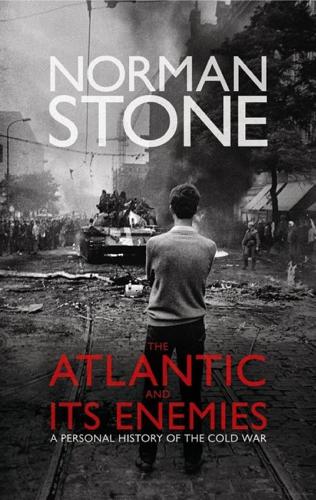
The Atlantic and Its Enemies: A History of the Cold War
by
Norman Stone
Published 15 Feb 2010
A visiting English grandee, Harold Nicolson, had gone on a coast-to-coast lecture tour in the USA to rescue his finances, had addressed Midwest ladies in cherried hats as to how the two democracies stood shoulder to shoulder facing the foe to the east, had taken yet another train to yet more ladies offering tea and cookies, and had gone back to London and told his friends that it had been ‘like a month at a servants’ ball’. The New York intelligentsia in their way agreed. They had not much cared for Eisenhower, who played the golfing Republican buffoon; and Norman Mailer set the tone for many writers to come when he dismissed the fifties as ‘the worst decade in the history of mankind’. Most writers really respond to conditions a generation before, did not feel at home in mass prosperity, and made fools of themselves when they pronounced on politics. But pronounce they did, and the sniggering or resentment of the intelligentsia had effect.
…
In fact the old general was now quite seriously minded to enter history as the man who had done most to stop nuclear destruction. True, Eisenhower played the golfing old buffer, and his wife was plain cooking. But he saw well enough what was going on, and produced a line, ‘the military-industrial complex’, that summed up the realities of warfare and militarized economics better than ever Norman Mailer did. Might he not decide that Berlin was not worth a fight? Oddly enough, it was the French who were most firmly in favour of defending Germany, their new associate in Europe. To exploit the differences, in May 1959 Khrushchev agreed to drop his ultimatum in return for a general conference at Geneva, scene of the earlier and quite satisfactory conference that had settled the French war in Indo-China.
…
Lunacharsky, Anatoly Luns, Joseph Luther, Martin Lutheran Church: East Germany Hungary Slovakia Sweden Luttwak, Edward Turbo-Capitalism Luxemburg coal and steel production see also Benelux Lvov (Lwów) Lyubimov, Yuri MacArthur, Douglas McCarthy, Joseph McDonald’s (fast food) Macedonia Macedonians McGovern, George MacGregor, Sir Ian McKenzie, D. N. Maclean, Donald Maclean, Sir Fitzroy Macmillan, Harold, 1st Earl of Stockton McNamara, Robert MacShane, Denis Madoff, Bernard Magloire, Paul Magnet, Myron Mailer, Norman Makarios, Archbishop malaria Malatya Malaya Malaysia Malenkov, Georgy Malraux, André Malta Malta summit (1989) Manaos Manchester Grammar School Manchester Guardian see Guardian Manchukuo Manchuria Chinesewar Japanese invasion (1931) Soviet claims to territory Mann, Klaus Mann, Thomas Mannerheim, Carl Gustaf Emil Mannesmann (corporation) Mansfield, Mike Mansfield Amendment (1973) Manuilsky, Dmitry Mao Tsetung: and atomic bomb background and character andwar death early career ‘hundred flowers’ campaign and Hungarian uprising of 1956 inauguration of People’s Republic Jiangxi soviet and Korean War and Long March and Marshall military genius and Nixon’s visit to China and Stalin tyranny and Vietnam and village politics Western intellectuals’ views of Maoism ‘Little Red Book’ Maraş Marchais, Georges Marcuse, Herbert Margolina, Sonja Marjolin, Robert Marshall, George.: background and character and Chinesewar development of Marshall Plan and Greekwar and Mao Moscow conference (1947) Paris Peace conference (1947) and Stalin Yalta conference (1945) Marshall Plan (European Recovery Program) costs of Economic Cooperation Administration (ECA) Organization for European Economic Cooperation (OEEC) and Soviet bloc Martí, José Marx, Karl The Eighteenth Brumaire of Louis Napoleon Marxism: in Chile in China defeat of in France and Frankfurt School Marxist economists mayhem caused by in Turkey Masaryk, Jan Maspéro, François mass-production methods Massoud, Ahmad Shah Massu, Jacques Émile Masur, Kurt Matsu islands Matthews, Herbert Matusow, Allen Mauthausen concentration camp Maxwell, James Clerk Maxwell, Robert Meese, Edwin Meinhof, Ulrike Meir, Golda Mekong Delta Melhuish, Sir Ramsay Menderes, Adnan Mendès France, Pierre Mengele, Josef mental illness Mersin Messina conference (1955) Metternich, Klemens Wenzel, Prince von Mexico: Castro in development of contraceptive Pill oil industry Mexico City Meyer, Herbert E.

Enlightenment Now: The Case for Reason, Science, Humanism, and Progress
by
Steven Pinker
Published 13 Feb 2018
Indeed, no autocrat of the 20th century lacked champions among the clerisy, including Mussolini (Ezra Pound, Shaw, Yeats, Lewis), Lenin (Shaw, H. G. Wells), Stalin (Shaw, Sartre, Beatrice and Sidney Webb, Brecht, W. E. B. Du Bois, Pablo Picasso, Lillian Hellman), Mao (Sartre, Foucault, Du Bois, Louis Althusser, Steven Rose, Richard Lewontin), the Ayatollah Khomeini (Foucault), and Castro (Sartre, Graham Greene, Günter Grass, Norman Mailer, Harold Pinter, and, as we saw in chapter 21, Susan Sontag). At various times Western intellectuals have also sung the praises of Ho Chi Minh, Muammar Gaddafi, Saddam Hussein, Kim Il-sung, Pol Pot, Julius Nyerere, Omar Torrijos, Slobodan Milošević, and Hugo Chávez. Why should intellectuals and artists, of all people, kiss up to murderous dictators?
…
Leavis flame: Leavis 1962/2013; see Collini 1998, 2013. 15. Leavis 1962/2013, p. 71. CHAPTER 4: PROGRESSOPHOBIA 1. Herman 1997, p. 7, also cites Joseph Campbell, Noam Chomsky, Joan Didion, E. L. Doctorow, Paul Goodman, Michael Harrington, Robert Heilbroner, Jonathan Kozol, Christopher Lasch, Norman Mailer, Thomas Pynchon, Kirkpatrick Sale, Jonathan Schell, Richard Sennett, Susan Sontag, Gore Vidal, and Garry Wills. 2. Nisbet 1980/2009, p. 317. 3. The Optimism Gap: McNaughton-Cassill & Smith 2002; Nagdy & Roser 2016b; Veenhoven 2010; Whitman 1998. 4. EU Eurobarometer survey results, reproduced in Nagdy & Roser 2016b. 5.
…
See emancipative values Libya, 193, 313 Liebenberg, Louis, 353–4 life and living things as anti-entropic, 18–19, 20 life expectancy, 53–61, 54, 58 child mortality, 55–7, 56 developed vs. developing countries, 54–5, 95–6 fallacious pessimism about, 53 immortality, 60–61 and quantifiable index of global well-being, 245–6, 246, 473n45 light, artificial, 253–4, 253–4 lightning strike deaths, 189, 189 Lilla, Mark, 447, 449 Lincoln, Abraham, 45–6 linguistics, 407 Linker, Damon, 390, 448 Lister, Joseph, 63 literacy, 235–6, 236 African Americans and, 219 of females, 239–40, 239, 473n27 literature and human knowledge, 433 scholarship in, as discipline, 407–8 See also arts and culture; humanities Lithuania, 278 living standards of the 1950s, 113–14 intellectual scorn for, 34, 446 Optimism Gap and, 115 sympathy and, 34 Locke, John, 230, 412 London, England, 63, 130, 135 London, Jack, 446 Long Peace, 43, 157–8, 451 and civil wars, 158–60, 466n11 and democracies, rise of, 162–3, 200 Kellogg-Briand pact and, 163–4 realpolitik and, 163 trade and commerce and, 162 See also international community Lord, Charles, 359–60 lottery, winning, 270 Louis C.K., 262–3, 264 Lovelock, James, 465n76 Loving, Richard and Mildred, 376 Lucas, Robert, 89 Lutheranism, 412 Macaulay, Thomas, 327–8 McCloskey, Deirdre, 84 McGinn, Colin, 427–8 McKibben, Bill, 465n76 McNally, Richard, 281 McNamara, Robert, 74, 319 Macron, Emmanuel, 339 Madfis, Erik, 198 Madison, James, 13, 407 Maduro, Nicolás, 91, 171 magical thinking, 5, 249 Mahbubani, K., 459n16 Maher, Bill, 374 Maher, Shiraz, 5, 443 Mahmood, Omar, 443 Mailer, Norman, 447, 456n1 Malamud, Bernard, 284 malaria, 66, 66 Malaysia, 57, 200, 203, 442, 457n8 Malthusian Era, 54 Malthus, Thomas, 73–4 Mandela, Nelson, 91 Mann, Thomas, 446 Mao Zedong death of, 90, 208 as leader, 78, 91, 143 and nuclear weapons, 313 repression under, 203, 208 Western intellectuals as admirers of, 447 Marcotte, Amanda, 358–9 Marcuse, Herbert, 39–40 Marcus, Gary, 477n20 marijuana, 175, 185 Maritain, Jacques, 418 Marxism Critical Theory as quasi-Marxist, 396–7 human costs of, 78, 90–91, 101, 107, 165, 200, 247–8, 271, 364, 430 intellectuals’ sympathy with, 31, 364, 372, 447 See also communism Marxist guerrillas and terrorists, 158, 195, 197, 198 Marx, Karl, 103, 165, 349, 405 Maslow, Abraham, 224 massive open online courses (MOOCs), 238 Mateen, Omar, 215, 216 maternal mortality, 57–68, 57 Maurras, Charles, 448 meaningful life, 3–4 contrasted with happy life, 267–8 Enlightenment ideals and, 3–4 freedom and, 265–6 humanistic caring and, 434–5 Humanist Manifesto III on, 411 measles, 66 Medellín, Colombia, 172 media about things that happen vs. don’t happen, 41 anxiety produced by, 286–7 Availability heuristic and, 42, 201 Betteridge’s Law of Headlines, 282 child labor exposed by, 230 climate change coverage, 151 dystopian rhetoric of, 50, 343 fact-checking and, 375–6, 380 gravitas market, 49, 293, 452 liberal tilt of journalism, 372–3, 484n54 mental health perceptions and, 282–3 “nuclear war” less mentioned, 310, 479n80 and pessimism, 40–41, 50, 343 political coverage, improvement of, 381, 383 populism and, 343–4 and shift from glorifying to exposing leaders, 50 terrorism coverage, recommendations for, 197–8 time scale of positive vs. negative events, 41 tone of the news (1945–2010), 50–51, 51 Trump’s election, role of, 50, 343, 376, 449 Trump’s threats to, 336 and violence, portrayal of, 42, 215–16 workplace safety coverage, 186 —NEGATIVE NEWS AS FOCUS OF, 42, 50 anxiety and depression and, 286–7 children and, 229 cumulative psychological effects of, 292 equal rights and, 215 incremental system change, loss of belief in, 50 upticks of problems and, 44 viewed as duty of journalists, 49 Medicare, 109 medicine blood groups, 64 evidence-based, 380 future gains not calculated in life expectancy, 60 and immortality, hope for, 60–61 new technologies for, 331 progress in, as incremental, 55, 61 sterilization of hands and equipment, 63, 67 See also drugs, pharmaceutical; health; health care; infectious disease; vaccines Medvedev, Dmitry, 316 Meehl, Paul, 403–4 Mellers, Barbara, 367–8, 370–71 memory, autobiographical, 3, 48, 407 Mencken, H.

Kissinger: A Biography
by
Walter Isaacson
Published 26 Sep 2005
“Henry feared the Weimar thing in which he and the Jews would be accused of a bugout in Southeast Asia,” said Roger Morris. According to Sonnenfeldt, “He felt the scapegoat might be the Jewish refugees in the government.” Kissinger discussed his fear of a right-wing, anti-Semitic reaction during a courtship of the author Norman Mailer over lunch at Sans Souci. “It was like that in the Weimar Republic—just the kind of wholesale debunking that may yet lead to totalitarianism,” Kissinger said. “I wonder if people recognize how much Nixon may be a bulwark against that totalitarianism.” Mailer was a rather pugnacious intellectual of the left with a tendency, as indicated by the title of his 1972 election book, St.
…
He became a masterly and rather indiscriminate charmer, one who knew how to appeal to people’s vanity, stroke their egos, play them off against rivals, and share confidential put-downs of mutual friends. Particularly striking was how wide he cast his net in his quest for approval: from Barry Goldwater to J. William Fulbright, Norman Mailer to William F. Buckley, H. R. Haldeman to Morton Halperin. “It takes an incredible combination of vanity and insecurity to cause someone to try to seduce everybody,” said Polly Kraft, who had watched Kissinger work on her husband, Joseph, over the years.4 This trait reflected, in Arthur Schlesinger’s words, “the soul of a refugee,” and Diane Sawyer similarly called it “a typical immigrant’s need to ingratiate himself.”
…
Kissinger: The Uses of Power. Boston: Houghton Mifflin, 1972. Lehman, John. Command of the Seas. New York: Scribner’s, 1988. Liska, George. Beyond Kissinger: Ways of Conservative Statecraft. Baltimore: Johns Hopkins, 1975. Lukas, J. Anthony. Nightmare: The Underside of the Nixon Years. New York: Viking, 1976. Mailer, Norman. St. George and the Godfather. New York: Arbor House, 1972. Marchetti, Victor, and John Marks. The CIA and the Cult of Intelligence. New York: Knopf, 1974. Marcum, John. The Angolan Revolution. Cambridge: MIT Press, 1980. Mazlish, Bruce. Kissinger: The European Mind in American Policy. New York: Basic Books, 1976.
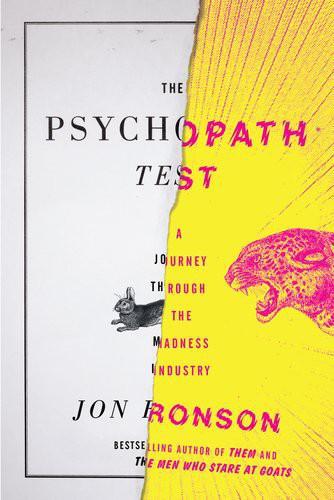
The Psychopath Test: A Journey Through the Madness Industry
by
Jon Ronson
Published 12 May 2011
I pieced together the Bob Hare chapter in part through my interviews with him, but also from reading his books Without Conscience: The Disturbing World of the Psychopaths Among Us (Guilford Press, 1999) and Snakes in Suits: When Psychopaths Go to Work (HarperBusiness, 2007), which he coauthored with Paul Babiak. The Nicole Kidman story Bob Hare tells comes from the article “Psychopaths Among Us,” by Robert Hercz, 2001. My information on the Jack Abbott/Norman Mailer story came from “The Strange Case of the Writer and the Criminal,” by Michiko Kakutani (The New York Times Book Review, September 20, 1981) and In the Belly of the Beast, by Jack Henry Abbott with an Introduction by Norman Mailer (Vintage, 1991). Background into the crimes of Emmanuel “Toto” Constant came from “Giving ‘The Devil’ His Due,” by David Grann (The Atlantic, June 2001). Thanks to Ben Blair and Alan Hayling for their help with the chapter “Night of the Living Dead,” and to John Byrne for his book Chainsaw: The Notorious Career of Al Dunlap in the Era of Profit-at-Any-Price (HarperBusiness, 1999) along with his research into Al Dunlap in the magazines BusinessWeek and Fast Company.
…
I felt like a different person, a hardliner, not confused or out of my depth as I had been when I’d been hanging around with Tony and the Scientologists. Instead I was contemptuous of those naive people who allowed themselves to be taken in by slick-tongued psychopaths, contemptuous of, for instance, Norman Mailer. In 1977, Mailer—who was working on The Executioner’s Song, about the recently executed convicted murderer Gary Gilmore—began corresponding with a tough Utah prisoner, a bank robber and murderer named Jack Henry Abbott. Mailer came to admire Abbott’s writing, and then to champion him when he was up for parole in 1981.

Geek Sublime: The Beauty of Code, the Code of Beauty
by
Vikram Chandra
Published 7 Nov 2013
I think, if I had enough money, I’d give up writing tomorrow.20 Here’s Abe Kobo on the subject: “The most enjoyable time is when I suddenly get the idea for my work. But when I start writing it is very, very painful … To write or commit suicide. Which will it be?”21 Joan Acocella: “Writing is a nerve-flaying job … Clichés come to mind much more than anything fresh or exact. To hack one’s way past them requires a huge, bleeding effort.”22 Norman Mailer: “I think nobody knows how much damage a book does to you except another writer. It’s hell writing a novel; you really poison your body doing it … it is self-destruction, it’s quiet self-destruction, civilized self-destruction.”23 Malcolm Cowley referred to the writing-is-hell whiners as “bleeders,” and thought that their suffering stemmed from their slow, overly self-critical method: “[They] write one sentence at a time, and can’t write it until the sentence before has been revised.”24 This is an attractive hypothesis, but it rather breaks down in the case of writers like Wolfe, who “habitually wrote for long hours, wrote rapidly, and turned huge manuscripts over to his publishers.”25 I’m a slow writer, but I’m quite content to leave sentences unrevised until the second or third draft, and I know quite well that my first draft will lack architectural coherence and shapeliness.
…
West, Conversations with William Styron, 9. 19. Review, The Paris Review Interviews, III, 22. 20. Ingersoll and Ingersoll, Conversations with Anthony Burgess, 73. 21. Fisher, The Writer’s Quotebook, 18. 22. Acocella, “Blocked: Why Do Writers Stop Writing?,” 129. 23. Leeds, The Enduring Vision of Norman Mailer, 132. 24. Cowley, And I Worked at the Writer’s Trade, 191. 25. Tedd, “Hours of Hell and Anguish,” 99. 26. Ingalls Sr., Masson, and Patwardhan, The Dhvanyaloka of Anandavardhana with the Locana of Abhinavagupta, 120. 27. Matilal, “Vakroti and Dhvani: Controversies about the Theory of Poetry in the Indian Tradition,” 381. 28.
…
PandoDaily (blog), July 2, 2013. http://pandodaily.com/2013/07/02/and-you-thought-sf-cabs-were-bad-bart-strike-is-crippling-fledgling-mid-market-tech-corridor/. Lampson, Butler W. “Guest Editorial.” Software: Practice and Experience 2, no. 3 (1972): 195–196. Lanier, Jaron. “The Suburb That Changed the World.” New Statesman, August 18, 2011. http://www.newstatesman.com/scitech/2011/08/silicon-valley-computer. Leeds, Barry H. The Enduring Vision of Norman Mailer. Bainbridge, WA: Pleasure Boat Studio, 2002. Leeming, David. The Oxford Companion to World Mythology. New York: Oxford University Press, 2005. Leonard, Andrew. “Let My Software Go!” Salon.com, March 30, 1998. http://www.salon.com/1998/03/30/feature947788266/. Lippert, Eric. “Cargo Cultists, Part Three: Is Mort a Cargo Cultist?”

To Show and to Tell: The Craft of Literary Nonfiction
by
Phillip Lopate
Published 12 Feb 2013
For me, the great adventure in reading nonfiction is to follow, as I say, a really interesting, unpredictable mind struggling to entangle and disentangle itself in a thorny problem, or even a frivolous problem that is made complex through engagement with a sophisticated mind. George Orwell reflecting on his ambivalence toward Gandhi, Robert Benchley meditating on his face, Seymour Krim on his failure, Susan Sontag on camp, Stendhal on love, Montaigne on experience, Norman Mailer on sex, Virginia Woolf on a room of one’s own, Loren Eiseley on brown wasps, Edmund Wilson on the development of socialist thought, Charles Lamb on married couples, Joan Didion on migraines, William Gass on the color blue. . . . None of these examples read like short stories or screenplays; they read like what they are: glorious thought excursions.
…
We also need to recognize that some of our best recent writers were arguably better at nonfiction than fiction. Though they usually preferred to think of themselves as novelists, none of them ever created a character as vibrant as his/her nonfiction narrator, be it Mary McCarthy, George Orwell, James Baldwin, Gore Vidal, Norman Mailer (“Aquarius”), Susan Sontag, or Joan Didion. So nonfiction has nothing to apologize for. It can hold its head up high. * * * * Elias Canetti, I suppose, though some would argue he got it for his novel Auto-da-Fé. On the Necessity of Turning Oneself into a Character In personal essays and memoir, nothing is more commonly met than the letter I.
…
vols. 1–2 Parker Tyler: Screening the Sexes, Magic and Myth in the Movies Pauline Kael: For Keeps Andrew Sarris: Confessions of a Cultist, Politics and Cinema Stanley Cavell: Pursuits of Happiness Music and Drama William Hazlitt: Hazlitt on Theatre George Bernard Shaw: Music in London, Our Theatres in the Nineties Hector Berlioz: Evenings with the Orchestra Max Beerbohm: Around Theatres Wayne Koestenbaum: The Queen’s Throat Margo Jefferson: On Michael Jackson John Jeremiah Johnson: Pulphead Charles Rosen: The Classical Style, The Romantic Generation Political and Social Writing Niccolò Macchiavelli: The Prince Mary Wollstonecraft: A Vindication of the Rights of Woman Edmund Burke: On Empire, Liberty, and Reform Alexis de Tocqueville: Democracy in America William Cobbett: Rural Rides Karl Marx: The Eighteenth Brumaire of Louis Bonaparte Rebecca West: Black Lamb and Grey Falcon Antonio Gramsci: Letters from Prison George Orwell: The Road to Wigan Pier, Homage to Catalonia James Agee: Let Us Now Praise Famous Men Edmund Wilson: To the Finland Station Hannah Arendt: The Origins of Totalitarianism, The Human Condition Simone de Beauvoir: The Second Sex Eldridge Cleaver: Soul on Ice Michael Herr: Dispatches Norman Mailer: Armies of the Night Philosophical, Moral, Religious, and Other Treatises Marcus Aurelius: The Meditations Erasmus: In Praise of Folly, The Adages Pascal: Pensées Stendhal: On Love Friedrich Nietzsche: The Genealogy of Morals, Beyond Good and Evil Simone Weil: The Need for Roots, Waiting for God E.

Stranger Than Fiction: Lives of the Twentieth-Century Novel
by
Edwin Frank
Published 19 Nov 2024
In its way, Bellow’s work caught the spirit of the new realism that America’s court theologian Reinhold Niebuhr, recommending that the nation’s business be conducted with the wisdom of the serpent as much as the innocence of the dove, enjoined upon the providentially appointed wielders of global power. That was one way forward, and it was one that other rising literary celebrities of the ’40s and ’50s, such as Norman Mailer and the slightly younger Jack Kerouac and John Updike, also followed. These writers were writers, each and all sporting a self-conscious and highly mannered literary style and flaunting a power not only to describe but to define the latest trends in contemporary American life. On the page, none of them sounded much like the, at this point, depressed panjandrum of American letters, Hemingway, though Mailer frequently invoked him and shared his obsession with boxing and bullfighting (Bellow, in Henderson the Rain King, turns a Hemingway African safari story into a goofy spiritual picaresque), but they are, for all that, cut from his cloth.
…
Lewisham (Wells) Lowell, James Russell Lowry, Malcolm Lucky Per (Pontoppidan), see A Fortunate Man Lucretius Lukács, George Machado de Assis, Maria Macunaíma (Andrade) Madame Bovary (Flaubert) Maeterlinck, Maurice Magic Mountain, The (Mann, T.): legacy of; themes in Mahfouz, Naguib Mailer, Norman de Maistre, Xavier Making of Americans, The (Stein) Makioka Sisters, The (Tanizaki) Malamud, Bernard Malina (Bachmann) Mallarmé, Stéphane Malraux, André Mann, Heinrich Mann, Klaus Mann, Thomas: Buddenbrooks; Death in Venice; influence of; life of; Reflections of a Nonpolitical Man; scholarship and; themes of; “Thoughts in Wartime”; see also Magic Mountain, The Man of Property, The (Galsworthy) Man of Straw (Mann), see The Underling Mansfield, Katherine Mantel, Hilary Man Who Disappeared, The (Kafka), see Amerika Man Who Watched the Trains Go By, The (Simenon) Man Without Qualities, The (Musil) Man with the Golden Arm, The (Algren) Manzoni, Alessandro Marcus, Greil Marcus Aurelius “Mark on the Wall, The” (Woolf, V.)

The Gods of New York: Egotists, Idealists, Opportunists, and the Birth of the Modern City: 1986-1990
by
Jonathan Mahler
Published 11 Aug 2025
Another soon-to-be-defunct paper, the New York Herald Tribune, hired him as a news columnist in 1963, and he quickly became one of the city’s most distinctive voices, a pioneer of the so-called New Journalism movement, which introduced novelistic techniques to newspaper and magazine writing. Since then, he had run for city council on a ticket that featured Norman Mailer as mayor, received a handwritten letter from the Son of Sam serial killer, and filed many hundreds of thousands of inches of copy. At the age of fifty-seven, Breslin was himself a bold-faced name who no longer needed to endure the stresses of the newspaper life. He could have quit years earlier to write books and movies, and in fact had tried.
…
“the Black Desk” dossier, 161 Brawley case, 224–26, 235–37, 239–42, 245, 257–60, 265–68, 290–92, 302–4, 393 Central Park Five case, 339 Griffith case, 115–22, 131–34, 161, 162, 175–76, 205–6 Sharpton and, 232 Sharpton embezzlement case, 359, 400 Madison Square Garden, 32 Mafia, 42–44, 54–55, 75, 101, 108, 178 Mahoney, Kieran, 316 Mailer, Norman, 39 Maimonides Medical Center, 371 A Man of Honor (Bonanno), 43 Manafort, Paul, 285 Manchild in the Promised Land (Brown), 103 Manes, Donald, 26–28, 35–36, 39, 44–45, 51–54, 60, 88–89 Manes, Marlene, 88 Manhattan, inc., 10 Manhattan College, 41 Maples, Marla, 196–97, 210, 253, 284–85, 324, 395, 400 Mar-a-Lago, 97 Marcos, Ferdinand, 278–79 Marcos, Imelda, 278–79 Margiotta, Joseph, 178 Mariotta, John, 279 Marsalis, Wynton, 214 Marshall, Thurgood, 342 Martinique SRO, 47–51, 134, 256, 294 Mason, C.

Kill All Normies: Online Culture Wars From 4Chan and Tumblr to Trump and the Alt-Right
by
Angela Nagle
Published 6 Jun 2017
The film tells the story of a narcissistic and sociopathic serial killer who watches pornography obsessively, is sexually violent to prostitutes, kills the homeless with relish and inflicts sexual torture on women in the novel so extreme it rivals de Sade in moral boundary pushing. Literary critic Daniel Fuchs has argued that the novel was part of a literary style, following on from Henry Miller and Norman Mailer, which used notions of transgression and sexual sovereignty from de Sade, and applied them as a form of rebellion and liberation through sexual aggression and violence. It is worth noting that one of the defenses made of American Psycho against its critics, during the debates sparked by its shocking sexual violence, was that the author had left some ambiguity at the end of the novel, suggesting that the events may have only been the crazed fantasies of the main character.
…
Just like the style of the rightist chan culture, interpretation and judgment are evaded through tricks and layers of metatextual self-awareness and irony. The cult of the moral transgressor as a heroic individual is rooted in Romanticism. But, as Simon Reynolds and Joy Press explore in their study of post-war rebel masculinity Sex Revolts, it was revived in twentieth-century countercultures. Norman Mailer posited the psychopath as a noble and transgressive figure in fiction. He saw the hipster (which had somewhat different connotations at the time to the beard oil-applying variety of today) as borrowing from the tradition of the noble psychopath of fiction in his disregard for social conventions and the mainstream, and perceived the fictional psychopath as a symbol of being freed from sexual, social and moral inhibitions.

The Death of Truth: Notes on Falsehood in the Age of Trump
by
Michiko Kakutani
Published 17 Jul 2018
In her 1996 book, Dedication to Hunger: The Anorexic Aesthetic in Modern Culture, the scholar Leslie Heywood used events from her own life (like her own anorexia and a humiliating relationship with a married man) to draw analogies between anorexia and modernism, an approach that had the effect of reducing great masterpieces like T. S. Eliot’s The Waste Land into case studies in an anti-women, anti-fat aesthetic. Personal stories or agendas started turning up in biographies, too. No longer were biographies simple chronicles of other people’s lives. Instead, they became platforms for philosophical manifestos (Norman Mailer’s Portrait of Picasso as a Young Man), feminist polemics (Francine du Plessix Gray’s Rage and Fire, a portrait of Flaubert’s mistress Louise Colet), and deconstructionist exercises (S. Paige Baty’s American Monroe: The Making of a Body Politic). Arguably the most preposterous exercise in biographical writing was Dutch: A Memoir of Ronald Reagan, a 1999 book by Reagan’s official biographer, Edmund Morris, which turned out to be a perplexing Ragtime-esque mashup of fact and fantasy, featuring a fictional narrator who is twenty-eight years older than the real Morris and who was supposedly saved from drowning in his youth by the future president.
…
And his observation that novelists were having difficulty dealing imaginatively with a world they felt to be confounding helps explain why journalism—particularly what Tom Wolfe called the New Journalism—began eclipsing fiction in capturing what life was like in the 1960s, as the Esquire anthology aptly titled Smiling Through the Apocalypse (featuring classic magazine pieces by such writers as Norman Mailer, Michael Herr, and Gay Talese) attested. * * * — Politicians had always spun reality, but television—and later the internet—gave them new platforms on which to prevaricate. When the Republican strategist Lee Atwater observed in the 1980s that “perception is reality,” he was bluntly articulating an insight about human psychology that Homer well knew when he immortalized Odysseus as a wily trickster, adept at deception and disguise.
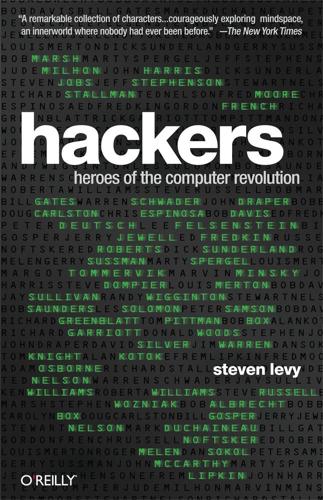
Hackers: Heroes of the Computer Revolution - 25th Anniversary Edition
by
Steven Levy
Published 18 May 2010
He was a passenger on a special cruise to the Caribbean, a “science cruise” timed for the launch, and the boat was loaded with sci-fi writers, futurists, scientists of varying stripes, cultural commentators, and, according to Gosper, “an unbelievable quantity of just completely empty-headed cruise-niks.” Gosper was there as part of Marvin Minsky’s party. He got to engage in discussion with the likes of Norman Mailer, Katherine Anne Porter, Isaac Asimov, and Carl Sagan, who impressed Gosper with his Ping-Pong playing. For real competition, Gosper snuck in some forbidden matches with the Indonesian crewmen, who were by far the best players on the boat. Apollo 17 was to be the first manned space shot initiated at night, and the cruise boat was sitting three miles off Cape Kennedy for an advantageous view of the launch.
…
Wizards LOGO computer language, Life Long-distance blue box calls, Woz, Secrets, Secrets Long-Range Computer Study Group, Spacewar Lord British, Applefest, Applefest Losers and winners, Winners and Losers Losing, The Tech Model Railroad Club Loving Grace Cybernetics, Revolt in 2100 Lubeek, Olaf, The Third Generation M M&R Electronics, Woz MacHack chess program, Greenblatt and Gosper Machine Aided Cognition, Spacewar Machine language, The Hacker Ethic MacLISP, Greenblatt and Gosper Mailer, Norman, Life Make magazine, Afterword: 2010 Maker Faire festivals, Afterword: 2010 Mariott, Pat, Applefest Mark 4, The Wizard and the Princess Marketing, Frogger Markkula, Mike, Woz, Secrets Marsh, Bob, Every Man a God, Every Man a God, The Homebrew Computer Club, The Homebrew Computer Club, Tiny BASIC, Tiny BASIC, Tiny BASIC, Woz, Secrets Marx, Karl, Every Man a God Massachusetts Institute of Technology (MIT), The Tech Model Railroad Club, The Hacker Ethic, The Midnight Computer Wiring Society, Life Master key, The Midnight Computer Wiring Society Mayan calendar hack, Spacewar McCarthy, John, The Tech Model Railroad Club, The Hacker Ethic, Spacewar, Spacewar, Greenblatt and Gosper, Life, Life, Revolt in 2100 McKenzie, John, The Tech Model Railroad Club, The Midnight Computer Wiring Society Melen, Roger, The Homebrew Computer Club, The Homebrew Computer Club Memorial Student Union (UM), Greenblatt and Gosper Memory boards, The Homebrew Computer Club, The Homebrew Computer Club design and production, The Homebrew Computer Club Merton, Louis, Life MICRO magazine, The Wizard and the Princess Micro-8 Newsletter, Tiny BASIC Microbooth, The Brotherhood Microprocessor, Every Man a God Microsoft, Frogger, Afterword: 2010 MIDAS assembler, The Midnight Computer Wiring Society, Winners and Losers Middle Earth trilogy, Life Midnight Computer Wiring Society, The Midnight Computer Wiring Society Midpeninsula Free University, Revolt in 2100 Milhon, Jude, Revolt in 2100, Revolt in 2100, The Homebrew Computer Club, Secrets, Secrets Minsky, Marvin, The Hacker Ethic, Spacewar, Spacewar, Greenblatt and Gosper, The Midnight Computer Wiring Society, Winners and Losers, Life, Life Minskytron, Spacewar, Spacewar Missile Command game, The Third Generation MIT hackers, Afterword: 2010 MITS Caravan, Tiny BASIC Moby Memory, Winners and Losers Model 33 teletype, Winners and Losers Model Instrumentation Telemetry System (MITS), Every Man a God, Every Man a God, Every Man a God, Tiny BASIC, Tiny BASIC, Tiny BASIC, Woz Modem, Secrets Modes, Greenblatt and Gosper Monopoly game, Frogger Moore, Fred, Every Man a God, The Homebrew Computer Club, The Homebrew Computer Club, The Homebrew Computer Club, Secrets Morby, Jacky, Frogger Motorola 6800 chip, Tiny BASIC Motorola microprocessors, Woz Mouse in the Maze game, Spacewar, The Wizard and the Princess Mouskattack game, The Third Generation Multi-format disk scheme, Applefest Multics, Winners and Losers, Winners and Losers Multiple Access Computing, Spacewar Mung (Mash Until No Good), The Tech Model Railroad Club Muppets, The, Frogger Music program, The Tech Model Railroad Club, The Hacker Ethic, Spacewar Music, of a Sort, The Homebrew Computer Club My Computer Likes Me (Albrecht), Revolt in 2100 Mystery House game, The Wizard and the Princess, The Brotherhood, Wizard vs.
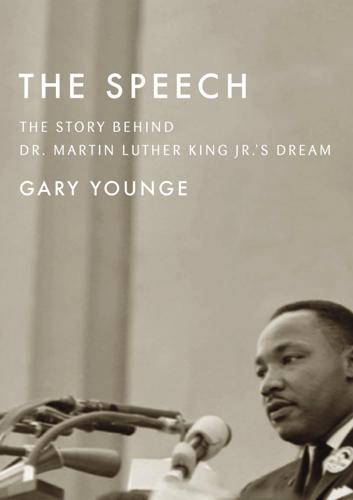
The Speech: The Story Behind Dr. Martin Luther King Jr. S Dream
by
Gary Younge
Published 11 Aug 2013
” § § § Rustin had limited the speakers that day to just five minutes each and threatened to come on with a crook and haul them from the podium when their time was up. But they all overran, and given the heat—87 degrees at noon—and the humidity, the mood began to wane. “There was . . . an air of subtle depression, of wistful apathy which existed in many,” wrote Norman Mailer. “One felt a little of the muted disappointment which attacks a crowd in the seventh inning of a very important baseball game when the score has gone 11-3. The home team is ahead, but the tension is broken: one’s concern is no longer noble.” King was the last speaker. By the time he reached the podium, many in the crowd had started to leave.
…
Joan Baez (“We Shall Overcome” and “Oh Freedom”), Peter, Paul and Mary (“Blowin’ in the Wind”), and Bob Dylan (“Only a Pawn in Their Game”) kept the crowd entertained as it grew. By most accounts there was a raucous dignity to the occasion. Baez’s most striking memory is looking out “at all the church hats.” Writing in Esquire magazine, Norman Mailer recalled: “A deep blues went out from Washington in these hours: a revolutionary force existed in the land; it could move with violence, and it could move with discipline.” William Geoghegan, the assistant deputy attorney general, viewed the day on a television in the Pentagon’s war room, writes Euchner, and recalled: “When you see that crowd and the biracial content of it . . .

Globish: How the English Language Became the World's Language
by
Robert McCrum
Published 24 May 2010
: Schama, Rough Crossings, p. 17. 136 ‘When you have succeeded in dehumanising’: see Thomas Keneally, Lincoln (London, 2003). 136 ‘If the language of Uncle Remus’: Joel Chandler Harris, ‘Plantation Music’, Critic,3/5 (December 1883). 138 ‘The word jazz’: F. Scott Fitzgerald, The Crack-Up (New York, 1931), p. 16. 138 As the story goes: Edward Jablonski, Gershwin: A Biography (New York, 1998). 140 ‘the near burned-out, throttled, hate-filled dying affair’: Norman Mailer ‘Huckleberry Finn - Alive at 100’, New York Times Book Review, 9 December 1984. 140 He lists the Hip words: Norman Mailer, Advertisements for myself (New York, 1959). 140 Let freedom ring from the mighty mountains: quoted in William Safire (ed.) 141 Lend Me Your Ears: Great Speeches in History (New York, 2004), pp. 560-66. 142 Obama himself: Barack Obama, Dreams from My Father (New York, 2004), p. 437. 143 ‘No attempt needed.
…
Cab Calloway popularized an extraordinary range of jive talk terms, from Hip, cat, chick and hype, to mellow, riff, square and groovy. In turn these terms were taken up by Louis Armstrong, the darling of young black and white American music lovers around the Second World War. One of the youthful veterans from this war, a young writer named Norman Mailer, became so obsessed with ‘the near burned-out, throttled, hate-filled dying affair between whites and blacks’, which he characterized as ‘still our great national love affair’, that in 1959 he decided to declare himself a ‘White Negro’. Rarely, in the long interaction of blacks and whites, had there been such a bizarre, or telling, formulation.
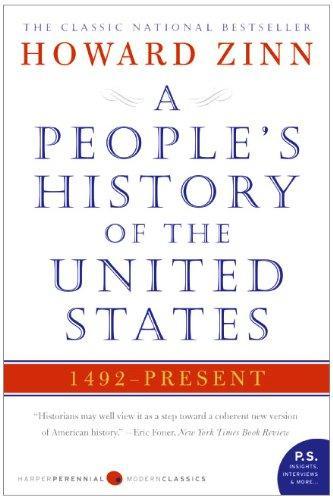
A People's History of the United States
by
Howard Zinn
Published 2 Jan 1977
To give just one instance: combat crews in the air force in the European theater, going to the base movies between bombing missions, found two lines—an officers’ line (short), and an enlisted men’s line (very long). There were two mess halls, even as they prepared to go into combat: the enlisted men’s food was different—worse—than the officers’. The literature that followed World War II, James Jones’s From Here to Eternity, Joseph Heller’s Catch-22, and Norman Mailer’s The Naked and the Dead, captured this GI anger against the army “brass.” In The Naked and the Dead, the soldiers talk in battle, and one of them says: “The only thing wrong with this Army is it never lost a war.” Toglio was shocked. “You think we ought to lose this one?” Red found himself carried away.
…
New York: Free Press, 1969. *Kolko, Gabriel. The Politics of War: The World and United States Foreign Policy, 1943–1945. New York: Random House, 1968. Lemisch, Jesse. On Active Service in War and Peace: Politics and Ideology in the American Historical Profession. Toronto: New Hogtown Press, 1975. Mailer, Norman. The Naked and the Dead. New York: Holt, Rinehart and Winston, 1948. Miller, Douglas, and Nowak, Marion. The Fifties: The Way We Really Were. New York: Doubleday, 1977. Miller, Marc. “The Irony of Victory: Lowell During World War II.” Unpublished doctoral dissertation. Boston University, 1977.
…
.): textile mills, 10, 115, 116–17, 228–29, 230, 263, 397, 418 Ludlow Massacre, 355–57 Lusitania, 362 Luther, Seth, 214, 224 Lynd, Alice, 406 Lynd, Helen, 383, 503 Lynd, Robert, 383, 503 Lynd, Staughton, 85, 99, 406, 486 MacArthur, Arthur, 316–17 MacArthur, Douglas, 391 McAlister, Elizabeth, 601 McCarthy, Joseph, 428, 431 McCone, John, 548 McCord, James, Jr., 542, 543 Macdonald, Dwight, 420 McFarlane, Robert, 587 McGovern, George, 545, 553 McKay, Claude, 444 McKinley, William, 295, 299, 303, 304, 305–06, 312–13, 314, 320 McKinnon, Cynthia, 621 McKissick, Floyd, 464 MacLeish, Archibald, 414 McLoughlin, William G., 83–84 MacMichael, David, 618 McNamara, Robert, 475–76, 484, 550 McNaughton, John, 481, 499 McPherson, James, 194 Macune, Charles, 287 McVeigh, Timothy, 646, 649 Madison, Dolly, 110 Madison, James, 33, 91, 96, 97–98, 132, 632 Mahan, A. T., 298, 300 Maier, Pauline, 67–68 Mailer, Norman, 418–19 Main, Jackson, 80, 98 Malcolm X, 457–58, 461 Manning, Robert, 560–61 Marcos, Ferdinand, 572 Markham, Edwin, 324 Marshall, George, 422, 438 Marshall, Thurgood, 574, 548–49 Marshall Plan, 438 Martin, Luther, 91 Martineau, Harriet, 113 Martinez, Elizabeth, 616 Marx, Karl, 12, 242, 243, 250, 258, 293 Maryland, Colonial era, 34, 35, 44, 46, 47, 50, 57, 68, 82, 83 Mason, John, 14–15 Massachusetts: Colonial era 13–17 passim, 21, 47–54 passim, 65–67, 69–70, 71, 72, 78, 83, 91–95 labor (19th century), 222–23, 228–33, 234, 236, 241, 243–44 reform movements, 115, 119, 120–21 see also Boston Massachusetts Bay Colony, 13, 15–16, 47–48, 108–09 Mather, Cotton, 15 Matthews, Mary Musgrove, 109 Mattick, Paul, 395 Mayaguez incident, 551–54, 588 meatpacking industry, 253, 254, 308–09, 322, 330, 349 media censorship, 671–72 Mellon, Andrew, 384 Mellon, James, 255 Mencken, H.

Strategy: A History
by
Lawrence Freedman
Published 31 Oct 2013
The events of 1968 turned out to serve the American Right more than the Left. This was in part because the upheavals on the campuses and the inner cities created a strong negative reaction that Republicans were able to exploit thereafter, and they were still trying to do so four decades later. Norman Mailer observed that year, while waiting for a civil rights leader to turn up for a press conference for which he was already forty minutes late, of how he had experienced a “very unpleasant emotion: ‘he was getting tired of Negroes and their rights.’ ”10 This led him to reflect that if he felt “even a hint this way, then what immeasurable tides of rage must be loose in America?”
…
See http://www.orwell.ru/library/essays/politics/english/e_polit/. 9. Donald R. Kinder, “Communication and Politics in the Age of Information,” in David O. Sears, Leonie Huddy, and Robert Jervis, eds., Oxford Handbook of Political Psychology (Oxford: Oxford University Press, 2003), 372, 374–375. 10. Norman Mailer, Miami and the Siege of Chicago: An Informal History of the Republican and Democratic Conventions of 1968 (New York: World Publishing Company, 1968), 51. 11. Jill Lepore, “The Lie Factory: How Politics Became a Business,” The New Yorker, September 24, 2012. 12. Joseph Napolitan, The Election Game and How to Win It (New York: Doubleday, 1972); Larry Sabato, The Rise of Political Consultants: New Ways of Winning Elections (New York: Basic Books, 1981). 13.
…
Arab rebellion (1916) and, 181–182 crowd psychology and, 182 guerrilla warfare and, 181–182, 227 legacy of, 185–186, 224, 227 Liddell Hart and, 183 military strategies of, 135 Le Bon, Gustave, 128, 131–132, 326–327, 333, 336, 467 Leadership Secrets of Attila the Hun (Roberts), 506 Leading the Revolution (Hamel), 550 League for Industrial Democracy, 367 League of the Just, 254 learning organizations, 556–558 Lebow, Richard Ned, 34 Lederer, William, 187 Lee, Robert E., 110–111, 506 Lehrer, Jonah, 601–602 Lenin, Vladimir Ilych biography of, 290 economic approaches of, 290–291 First World War and, 295 on guerilla warfare, 180 hegemony and, 329 Luxemburg on, 293 Marx and, 290, 297 on military strategy, 294, 332 party organization and, 289–293, 296–297, 331 revolution strategy of, 290–293, 296–297 Russian Revolution and, 294, 296–297 socialist movement and, 289–291 successors of, 298 Taylorism and, 465–466 Third International and, 297 on the working class, 291 Leo VI (Emperor of Byzantine), 72–73 Letter to a Hindu (Tolstoy), 347 Letters to a Frenchman on the Present Crisis (Bakunin), 275 Letters to a Young Activist (Gitlin), 413 Levison, Stanley, 358, 360 Levy, Carl, 280 Lewis, John, 381, 487–489 Liberal Party (Great Britain), 345 Liberation Management (Peters and Waterman), 547 Liberty League, 487 Liddell Hart, Basil on airpower, 647n11 attritional warfare and, 138 Beaufre and, 194 on Clausewitz, 204 First World War and, 134 Fuller and, 134–135, 137–138 on guerrilla warfare, 183 indirect approach and, 134, 137–139, 183, 211, 508, 556, 617, 704n8 Lawrence and, 183 legacy of, 507, 511, 556 limited war concept and, 134, 136–137 on maneuver warfare, 205 military strategies of, xii, 134–139, 202, 507–509 Sun Tzu and, 135–138 Liebknecht, Karl, 298, 305 Liebknecht, Wilhelm, 284 Lincoln, Abraham, 109–111, 244 Lind, William, 200, 225–227 Lippmann, Walter, 145, 337–341, 414 Lipton, Diana, 12 List, Friedrich, 96–97 Livy, 42–43 Lloyd, Henry, 74–75 Lonely Crowd, The (Reisman), 369 Long March (Mao Zedong), 184–185 Louis Philippe, 255–256 Luce, Duncan, 161–162, 514 Luce, Henry, 491 Ludendorff, Erich, 209–210 Luntz, Frank, 434–436, 688n8 Luther, Martin, 54 Luttwak, Edward, 72, 201–203, 211–212, 215, 704n8 Luxemburg, Rosa, 286–289, 293, 295, 298, 305 Lynd, Staughton, 397 Machiavelli, Niccolo Florentine society and, 50 on force and guile, 23, 50, 324, 614 on human nature, 52–53 influences on, 43 legacy of, 54, 232, 321, 330, 335, 455, 509 on loyalty, 51–52 on military strategy, 51–52 Milton’s incorporation of, 54, 57–58, 63, 617 Prince, The, 50, 52–53, 509, 614 on rulers’ self-interest, 49–50, 52–53 Machiavellians, The (Burnham), 335 Mackinder, Halford, 120–122 Madansky, Albert, 506 Maginot Line, 199–200 Mahan, Alfred Thayer, 116–118, 120–121, 126, 194 Mahan, Dennis, 109–110, 116 Mailer, Norman, 436 Mair, Andrew, 567–569 Malatesta, Errico, 276–277 Malaya, 188 Malcolm X, 391–393 Malkasian, Carter, 209 management. See business management Managerial Revolution, The (Burnham), 334, 491 Managing for Results (Drucker), 498 maneuver warfare, 199–206, 209–211, 242 Manhattan Project, 147–148 Manichaeism, 56–57 Mantel, Hilary, 607 Mao Zedong Chinese Communist Party, 183–185 guerrilla warfare and, 183–186, 191–192, 227, 400 legacy of, 186, 404 Little Red Book of, 394 Long March of, 184–185 public relations efforts of, 400 Sun Tzu and, 45, 185 March on Washington, 364 Marcuse, Herbert, 399, 415 Marighella, Carlos, 402 Marketing Warfare (Ries and Trout), 507–508 Marshall, Andrew, 215–216 Martin, Roger, 570 Marx, Karl on American Civil War, 262 anarchism and, 270 Bakunin and, 268, 270–272, 276, 474 biography of, 252 class struggle and, 253–254, 256–261, 283–284, 325, 583 Communist Manifesto and, 254, 256–257, 260–261, 270, 329 critiques of, 259–263, 284, 323, 329 Eighteenth Brumaire of Louis Napoleon and, 258–259, 283 on electoral politics, 257, 283 First International and, 269–271 French Revolution and, 259, 617 legacy of, 252–253, 300, 320 Lenin and, 290, 297 on nationalism, 260 on the Paris Commune, 271–272 on petit bourgeoisie, 260 political philosophy of, 247, 251–261, 263, 272–274, 301 Revolutions of 1848 and, 253, 255–259 socialist movement and, 284–285 Stoppard’s depiction of, 267–268 Weber and, 302, 321 mass media and communication agenda setting and, 417–418 conformism and, 416–417 limits to the power of, 436 nonviolent direct action and, 352, 363–364 political strategy and, 438–439, 450–451 mass publics.

The Stuff of Thought: Language as a Window Into Human Nature
by
Steven Pinker
Published 10 Sep 2007
And this brings me to the arguments on the pro-swearing side. To begin with, it’s a fact of life that people swear. The responsibility of writers is to give a “just and lively image of human nature,” and that includes portraying a character’s language realistically when their art calls for it. When Norman Mailer wrote his true-to-life novel about World War II, The Naked and the Dead, in 1948, he knew it would be a betrayal of his depiction of the soldiers to have them speak without swearing. His compromise with the sensibilities of the day was to have them use the pseudo-epithet fug. (When Dorothy Parker met him she said, “So you’re the man who doesn’t know how to spell fuck.”)
…
Keysar, Boaz Khrushchev, Nikita kill killing Kim Jong Il, kinship metaphors Kipling, Rudyard Kitcher, Patricia Klein, Devrah knowing: a priori and a posteriori as having mutual knowledge Korean language Korff, Baruch Krebs, John Kripke, Saul Lakoff, George Lambek, Jim Langan, Michael language: combinatorial power of components of concreteness of as digital medium expanding perfect for reasoning as window into human nature see also language learning; semantics; syntax language acquisition, see language learning Language Instinct, The (Pinker) language learnability language learning as induction problem Linguistic Determinism and language of thought languages, see American Sign Language, Arabic language, Aymara language, Berber language, Chichewa language, Chinese language, Czech language, Danish language, Djirbal language, Dutch language, English language, French language, German language, Greek language, Hebrew language, Hungarian language, Igbo language, Indonesian language, Inuit languages, Italian language, Japanese language, Korean language, Papuan language, Portuguese language, Québecois French language, Russian language, Shona language, Spanish language, Tamil language, Tlingit language, Turkish language, Tzeltal language, Tzotzil language, Yiddish language, Yupik language Laplace’s Demon Larkin, Philip law Law & Order Lederer, Richard Lee, Peggy legalese Lehrer, Tom Leibniz, Gottfried Wilhelm Levin, Beth Levinson, Stephen Leviticus Lewis, C,S, Lewis, David Lexicon Branding Li, Peggy Lieberson, Stanley liff, meaning of Lillie, Beatrice limbic system Linguistic Determinism (Whorfian hypothesis) arguments against banal versions of and count-mass distinction defined on Eskimo words for snow interesting versions of radical versions of requirements for demonstrating linguistic relativity, see Linguistic Determinism (Whorfian hypothesis) literally literary metaphors conceptual metaphors contrasted with Lloyd, John locative construction gestalt-shift theory of idiosyncratic uses of learnability paradox universals and variation locative rule Locke, John logic “Logic and Conversation” (Grice) “love is a journey” metaphor “Love Me Two Times” (Doors) McCartney, Paul McCawley, James D. McClelland, James McCorduck, Pamela McGinn, Colin MacKay, Don Madison (name) magic, sympathetic magic, word Magritte, René Mailer, Norman Maledicta: The International Journal of Verbal Aggression malefactive man Manetos, Miltos Marcus, Ruth Barcan Market Pricing Marr, David Marvin (comic) Mary, Chico Marx, Groucho mass nouns mathematics: definitions in geometry mental arithmetic topology see also number (quantity) matter: continuous versus discrete count versus mass nouns for as extended in space maxims, conversational meaning: of artifact terms broad and narrow connotation and definitions denotation Extreme Nativism’s view of of natural-kind terms of personal names Radical Pragmatics’ view of reference and sense and sounds’ relation to theories of as in the world or in the head see also metaphors; polysemy meaning postulates memory: for form versus gist in language comprehension for lexical meaning mnemonics reminding similarity in working men: boys’ names difference from women regarding sex swearing among see also sex differences; women Men Are from Mars, Women Are from Venus (Gray) Mencken, H.
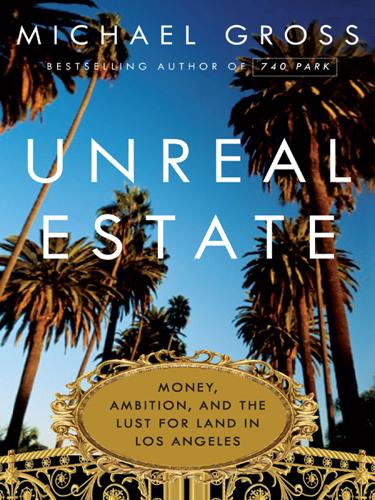
Unreal Estate: Money, Ambition, and the Lust for Land in Los Angeles
by
Michael Gross
Published 1 Nov 2011
Their bond was a strong one. Years later, she would tell the writer W. J. Weatherby about listening to Schenck’s stories: “He was full of wisdom like some great explorer,” she said. “I also liked to look at his face. It was as much the face of a town as of a man. The whole history of Hollywood was in it.” Norman Mailer took this up when he wrote his meditation on Monroe. “The likelihood is that Schenck and Monroe had, or at least also had, some sort of genuine friendship; if there was sex, it was not necessarily the first of the qualities he found in her. We are not going to know,” Mailer wrote. At age seventy-one, Joseph Schenck left Fox to manage its movie theater chains and the investments he’d made over many years in real estate, racetracks, and a Mexican casino.
…
The Estates of Beverly Hills: Holmby Hills, Bel-Air, Beverly Park. Beverly Hills, CA: Beverly Park Gatehouse, 1989. Longstreth, Richard W. City Center to Regional Mall: Architecture, the Automobile, and Retailing in Los Angeles, 1920–1950. Boston: MIT Press, 1997. Louvish, Simon. Cecil B. DeMille: A Life in Art. New York: Thomas Dunne, 2007. Mailer, Norman. Marilyn, A Biography. New York: Grosset & Dunlap, 1973. Mann, May. Jayne Mansfield: A Biography. New York: Pocket Books, 1974. Marion, Frances. Off with Their Heads! A Serio-Comic Tale of Hollywood. New York: Macmillan, 1972. McDougal, Dennis. The Last Mogul: Lew Wasserman, MCA, and the Hidden History of Hollywood.

Drink: A Cultural History of Alcohol
by
Iain Gately
Published 30 Jun 2008
Animal House also made a bow in the direction of the Western cultural roots of drinking in its toga party scenes, in which Belushi appeared as Bacchus, with a wreath of ivy round his temples. Literature also continued to set a bad example. By the 1980s the reading lists for high school curricula were dominated by drinkers, including Poe, London, Hemingway, Fitzgerald, Faulkner, Steinbeck, O’Neill, Kerouac, Capote, Gregory Corso, Tennessee Williams, Norman Mailer, and Edward Albee. 72 In 1982, President Reagan appointed a commission to investigate drunk driving. The following year he broadcast its findings to the nation in a holiday season radio address. The statistics were horrifying: “We’ve lost more than a quarter of a million of our countrymen to drunk drivers in the last ten years.
…
See also gin Kaaba Kansas karaoke Keats, John Kennedy, Ted Kentucky Kerouac, Jack KGB khamriyya Khayyam, Omar Kilmarnock, Scotland King Scorpion Kipling, Rudyard Kirin Brewing Company Kissinger, Henry Kito, Hideaki Klaebisch, Otto Kohler, Charles Koran krausening Krug, Charles lager beers Lamb, Charles Langland, William Latter-day Saints Laurel Glen Winery Lavoisier, Antoine-Laurent Leeward Winery Leffe monastery Lett, David Lewis, Dioclesian Lewis and Clark expedition Lexington Gazette Liberty Ale Liberty Bowl Lightner, Candy Lincoln, Abraham Lindisfame Little Ice Age Livesey, Joseph Lloyd’s Coffee House Locke, John London, England London, Jack London Company of Distillers London Stock Exchange Longfellow, Henry Longworth, Nicholas Los Angeles, California Los ías de Muertos Lost Generation Louis Louisiana Lowry, Malcolm Lowther, Henry (Lord Lonsdale) LSD Ludwig Lull, Raymond Luther, Martin Lynch, Kermit Macarthur, John Macbeth (Shakespeare) Macedonia Macquarie, Lachlan Madeira Archipelago Madeira wines maenads Magellan, Ferdinand Mailer, Norman Maine maize Majoribanks, Campbell malaria Malt Lecture (Livesey) Mandeville, John Manet, Edouard Manhattan Island Manifest Destiny Manning, Thomas Mao Tse-tung Marcus Aurelius Marie Antoinette marijuana Mark Antony marketing of alcoholic products Marsden, Samuel Marseilles Martial Martinique Martyr, Justin Maryland Massachusetts Massachusetts Bay Company Massachusetts Council Massasoit Mather, Cotton Mather, Increase Matisse, Henri Maupassant, Guy de Max, Tucker Mayans Maytag, Fritz McCave, Eleanor McCoy, William S.
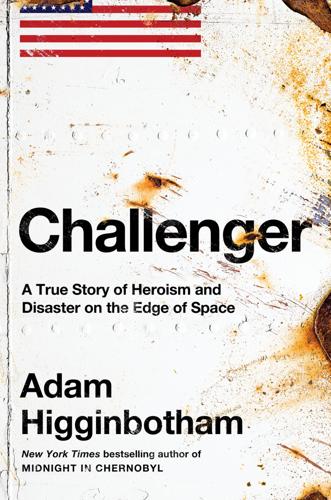
Challenger: A True Story of Heroism and Disaster on the Edge of Space
by
Adam Higginbotham
Published 14 May 2024
Former agency Administrator Robert Frosch suggested that members of the general public should be given the chance to become astronauts through buying tickets in a national lottery, while at the same time NASA could invite artists and performers to join the program in a separate category, through which traveling in space would inspire or inform “a creative act.” Writer Norman Mailer said that the selection process should address the public perception of the agency as a “private and intolerably starchy club.” Princeton physicist Freeman Dyson suggested that what the agency really needed was someone who could undermine the solemnity of space exploration by focusing on the absurdity of humanity’s place in the universe; Woody Allen, he wrote, would be ideal: “A good clown is what you need.”
…
W., 237, 260, 298, 305–6, 366, 370, 371 Butterworth, Bill, 209–11, 225–27 Butterworth, Jenny, 225 Cain, LeRoy, 448 CapCom (Capsule Communicator), 94, 116, 130, 138, 139, 151, 346, 352, 443 Cape Canaveral, 16, 53, 54, 155, 156, 189, 203, 211, 231–34, 243, 256, 257, 273, 284, 295, 299, 340, 347, 379, 390, 404, 426, 444 Astronaut Candidates at, 108 Challenger and, 143, 183–84, 227 STS-51-L mission, 238, 293, 294, 295, 304, 307, 308, 310, 323, 325, 330, 331, 340, 356, 360, 367 Columbia and, 113, 116, 118, 119, 127–30, 173 Launch Control Center at, 16, 129, 130, 183, 198, 200, 236, 289, 290, 292, 294 Challenger STS-51-L and, 299, 303, 304, 307, 308–10, 335, 337, 338, 341, 343, 344, 346–47, 350, 354, 356, 361, 363, 364 Nelson and, 276 solid rocket booster assembly at, 159, 162, 163, 166, 168–72 Vehicle Assembly Building at, 123, 159, 169, 170, 172, 247, 270, 286, 305, 306, 347, 399 weather at, 247, 303, 305, 307, 310–13 see also Kennedy Space Center Carbonated Beverage Dispenser Evaluation, 238 Carson, Johnny, 216–17, 243 Carter, Jimmy, 78, 94, 100–102, 119–21, 123, 124, 128 Iran hostage crisis and, 121, 128 Carter, Sonny, 340, 362, 427, 437, 439 CBS, 4, 28, 31–32, 317, 360 CBS Evening News, 13 Central Intelligence Agency (CIA), 44, 59 Cernan, Gene, 23, 27–28, 31–32, 66, 76, 229, 237 Cernan, Teresa Dawn, 28 Chaffee, Martha, 7, 8, 15–16, 22, 23 Chaffee, Roger, 7–8, 15–16 on Apollo 1 mission, 7–13, 15–21 death in, 7, 20–21, 22–27, 29, 30, 60, 94, 369, 377, 426 burial of, 23 Chaffee, Sheryl, 23 Chaffee, Stephen, 23 Chaikin, Andrew, 190 Challenger Center for Space Science Education, 443 Church of Latter Day Saints, 160, 247 CIA, 44, 59 Citizens in Space Task Force, 217–19 civil rights movement, 29, 30, 71, 74 Clear Lake, 63, 91, 94, 102, 111, 112, 115, 135, 145, 146, 148, 150, 215, 244, 274, 280, 370–71, 374, 379 Clear Lake High School, 145 Cleveland Call and Post, 74 clevis-and-tang joints, 163, 164, 166, 167, 170, 255, 381, 392 Clifford, Sophia, 230 Clinton, Bill, 456 CNN, 2, 343, 348, 352, 355, 360, 366, 385 Coast Guard, 400–402, 425 Cobb, Geraldyn “Jerrie,” 67–69, 71 Coca-Cola, 238 Cochran, Jacqueline, 67, 69 Cold War, 29, 32, 41, 43–44, 160, 231–32, 444 cold weather, 321 Challenger STS-51-L launch and, 337, 367, 368, 385, 386, 388, 389 booster rocket temperature, 337–38, 345 launchpad ice, 311, 325, 333–34, 337–41, 343, 345, 349 O-rings and, 253–57, 259, 262, 392, 393 Challenger STS-51-L disaster and, 349–51, 381, 384 Challenger STS-51-L launch concerns about, 297, 300–301, 303–7, 310–20, 321–32, 335–36, 430, 436 Discovery STS-51-C and, 247, 253–55, 303–4, 311, 313, 324, 329 Feynman’s ice water demonstration on, 393–94 Collins, Michael, 7, 22, 55, 90, 281–82 Collins, Pat, 281 Columbia Accident Investigation Board, 449 Concord High School, 223, 350 Concord Monitor, 221 Congress, 105, 115, 376, 380 Apollo program hearings of, 25–27 NASA budget cut by, 52, 53 Space Shuttle funding and, 57–58, 61 Congressional Committee on Science and Astronautics, 69 Constitution, US, 418 contingency abort, 155 Corlew, Johnny, 309, 310, 317, 339, 340 Corrigan, Ed and Grace, 222, 297, 299, 302, 342, 350, 354, 357, 358, 362, 375–76 Covey, Dick, 3, 103, 346 Crippen, Bob, 105, 116, 122, 123, 127, 129–39, 141, 151, 183, 236, 378, 399–402, 412, 420, 436, 444, 446 post-Challenger life of, 451 Crippen, Ginny, 225 Cronkite, Walter, 13, 219, 291 Culbertson, Frank, 286, 362 Cunningham, Stephen, 209–11 Daily Defender, 75 Dallas, 149 Dallas Morning News, 285 Dawber, Pam, 229 Defense Department, 44, 72 Discovery and, 244–45, 268 DeLorean, John, 282 Denver, John, 219 Devlin, Jim, 318–19 Devlin, John, 412–13, 418, 420 Dornberger, Walter, 40–42, 55 Dover Air Force Base, 428 Drake, Francis, 369–70 Dream Is Alive, The, 228 Dribin, Lee, 387 Dwight, Edward Joseph, 73–77 Dyna-Soar, 41–43, 60 Dyson, Freeman, 218 Easterbrook, Gregg, 122 Easter Island, 155 Ebeling, Bob, 272–73, 312–14, 347, 349, 350, 430, 432 post-Challenger life of, 451 Ebony, 83 Edwards Air Force Base, 47, 48, 50, 73, 74, 79, 80, 82, 184, 204, 376, 443 Columbia and, 138, 140, 142 Eglin Air Force Base, 401 Eisenhower, Dwight, 43 Elizabeth II, Queen, 23 Ellington Field, 93, 102, 145, 372, 375 Empire State Building, 374 Enterprise (originally Constitution), 62, 95–96 Equal Employment Opportunity Act, 65 Essence, 83 Ethiopia, 276–77 European Space Agency, 114, 232 F-1 engine, 159 Faget, Max, 11, 34–38, 42, 61, 156, 158 capsules designed by, 35–37, 43, 60 Columbia and, 130, 132, 134, 137, 138 family background and early life of, 35 Lee and, 56 in Space Shuttle design and development, 34, 37–38, 57, 60–62, 98, 130, 137, 447 Fairchild Industries, 158 Federal Aviation Administration (FAA), 248–49 Federal Bureau of Investigation (FBI), 282, 410, 434 Feynman, Richard, 391–92 cancer and death of, 391, 420, 449 engine presentation requested by, 421–22 on Rogers Commission, 382, 389, 391–94, 396, 408, 420–22, 433 Appendix F for, 433, 449–50 ice water demonstration in, 393–94 Fisher, Anna, 92, 93, 103, 117, 151, 213, 267 Fisher, Bill, 92 Fixed-Base Simulator, 109 Fixed Service Structure, 325 Fletcher, James, 32–33, 65, 95, 96, 431 Flight 981 crash, 249–50, 261 Flight Control Room, 1, 2, 137, 139, 140, 236, 345, 351, 371 Flight Dynamics Officer, 130–31, 139, 345–46, 351, 356 Flight Readiness Reviews, 175–79, 202–4, 207–8, 230, 251, 417 solid rocket boosters and, 178–79, 208, 254, 255, 257, 260 for Space Shuttle Challenger STS-51-L, 300–301, 303, 322–32, 393, 430 Florida Today, 212 Fonda, Jane, 231, 298 Ford, Gerald, 65, 78 Ford Foundation, 87 Fox, Michael J., 279 Frank, Richard, 101 Freedom of Information Act, 427 Freedom Star, 245, 319, 321 Frenchie’s, 280 Frosch, Robert, 100–101, 113, 115, 121, 123–24, 128, 218 Funk, Scott, 303 Fuqua, Don, 95, 298, 306 Gaddafi, Muammar, 374 Gagarin, Yuri, 9, 42–43, 71 Gallup poll, 55 Gardner, Dale, 151, 214, 215 Garn, Jake, 227, 298, 370 Garrison, Ed, 395 Gemini program, 8, 9, 11, 14, 15, 26, 33, 43, 46, 82, 104, 189, 281 unmanned tests in, 122 General Dynamics, 141, 282, 283 General Electric (GE), 14, 54, 168–69 Germany, 40–41, 158 Gibson, Robert “Hoot,” 148, 189, 190, 276, 284, 289 Gilruth, Robert, 37 Girl Scouts, 222, 224 Glenn, John, 9, 46, 70, 71, 76, 90, 147, 221, 243, 370 Graham, Bill, 283–84, 290, 291, 298, 301, 303, 304, 306, 360, 366–68, 370, 376, 380–82, 384–85, 387, 388, 391, 431 gravity, zero, 78, 110, 187, 275 Great Salt Lake, 160 Greene, Jay, 345–46, 351, 353, 355–56, 358 Gregory, Fred, 145, 152, 375, 415 Grissom, Betty, 436, 440 Grissom, Gus, 8 on Apollo 1 mission, 8–10, 12–21 death in, 20–21, 22–27, 29, 30, 60, 94, 369, 377, 426, 436 burial of, 23 Grissom, Mark, 10 Grumman Corporation, 52 Hall, Bruce, 317 Halley’s Comet, 277, 290, 293 Hardy, George, 159, 172, 173, 271, 315, 322, 323, 327, 330, 451 Harris, Hugh, 347, 349 Hart, Jane B., 68–69 Hartsfield, Henry “Hank,” 197–200, 416 Hauck, Rick, 108, 116, 148, 151, 212–15 Hawley, Steve, 148, 150 Heisig, Kurt, 185, 186, 191 Henize, Karl, 241–42 Hercules, Inc., 181 Hetzel Shoal, 411, 412, 415, 420 Hexagon, 59 “High Flight” (Magee), 281, 282, 366, 370 Hitler, Adolf, 40, 158 Hollings, Ernest, 434 Holz, Robert, 444 Homestead Air Force Base, 107 Houston, Cecil, 314–15, 321–22, 328, 331–32 Houston Chronicle, 112 Houston Post, 416 Howard, Jenny, 239–42, 261 Hubble Space Telescope, 290–91 Hughes Aircraft Company, 193–96, 209–11, 225–26, 275–76, 300, 337 Hughes Research Labs, 84, 88–89 Huntsville, AL, 53–54, 157, 159, 166, 171–73, 178, 179, 182, 208, 224, 272, 300, 378, 379, 381, 384, 387, 404, 417, 432 see also Marshall Space Flight Center Hurricane Alicia, 267 Husband, Rick, 446–48 Hutchinson, Neil, 130–32, 134 hydrogen, 96–98, 168, 333 hypersonic planes, 35, 42–46, 56, 81, 98 X-15, 45–46, 47–52, 101, 140 hypoxia, 236 Inconel X, 45 intercontinental ballistic missiles, 35–36, 41, 160 Titan, 41, 59, 161, 163, 164, 165, 204 International Space Station, 445, 449 Iran, 119, 121, 128 Jack and Jill of America, 146 Jarre, Jean-Michel, 278–79, 285, 452 Jarvis, Greg, 193–96, 209–11, 225–28, 275–77, 452 on Challenger mission, 277, 294, 295, 300, 302, 306, 316, 419 death in, 355, 368, 369, 373, 378, 384, 401, 437 experiments planned, 277, 285 on launch day, 337, 339, 340, 344 media junket for, 285 recovery of remains and burial, 419–20, 426–28, 435–36, 438 at Hughes, 193–96, 275–76, 300 Jarvis, Marcia, 194–96, 211, 225, 228, 294, 300, 302, 371, 420, 435, 441 post-Challenger life of, 452 Jet, 75, 83, 191 Jet Propulsion Laboratory (JPL), 392 Jetty Rats, 405, 414 John Paul II, Pope, 374 Johnson, Caldwell, 35 Johnson, Frank, 229–30 Johnson, Lyndon, 23, 24, 31, 52, 53, 68–69, 72, 141 Johnson Sea Link II, 403 Johnson Space Center (Manned Spacecraft Center), 53, 63, 101, 156, 211, 225, 226, 236, 242, 267, 268, 274, 278, 280, 284, 378 Apollo 1 fire and, 22 Columbia and, 115, 119, 128, 134, 135 Space Shuttle astronaut recruitment and, 78, 84, 91, 93, 103, 104, 111, 144–46, 148–50, 152, 154 Space Shuttle Challenger STS-51-L and, 301, 310, 331 memorial for astronauts lost in disaster, 376–77, 406 Space Shuttle development and, 34, 37, 56, 61 see also Mission Control Justice Department, 31 Kansas City Call, 73 Karman Line, 46, 132, 229 Keel, Alton, 398, 454 Kelly Air Force Base, 79 Kennedy, John F., 43, 160 assassination of, 76, 373 moon landing deadline of, 8, 9, 32, 52, 70 racial equality and, 71, 72, 74 Kennedy, Robert F., 29, 75 Kennedy Space Center, 174, 177, 209, 233, 254, 290, 394, 399, 416–17, 426 Challenger STS-51-L mission at, 295, 303, 304, 313, 321, 333, 335, 349, 361, 362, 370 Columbia missions at, 112, 113, 130, 291–93 construction of, 16–17 employee workloads at, 234 gift shop at, 299 solid rocket boosters and, 159 Kerwin, Joe, 426, 438–40 KH-11 Keyhole spy satellite, 136–37 Kilminster, Joe, 182, 320, 322, 324, 327–31, 395, 407, 432 King, Martin Luther, 29 Kingsbury, Jim, 317 Kitty Hawk, USS, 264 Kleinknecht, Kenny, 114–15, 119, 123 Knight, Pete, 48–50 Konrad, John, 209–11, 276 Kraft, Chris, 11, 64, 66, 83, 101, 115, 119, 130, 132, 137, 138, 151, 156, 212, 215, 226 Kranz, Gene, 64, 136–37 Krist, Ronald, 436, 441 Ku Klux Klan, 85, 147 Kutyna, Don, 382, 389, 394, 408, 409, 421, 433 Kuznetz, Larry, 112–15, 118, 123 Ladies’ Home Journal, 279 Lake City, SC, 84–85, 191–92 Langley Research Center, 35, 53, 154, 239 Launch Control Center, 16, 129, 130, 183, 198, 200, 236, 289, 290, 292, 294 Challenger STS-51-L and, 299, 303, 304, 307, 308–10, 335, 337, 338, 341, 343, 344, 346–47, 350, 354, 356, 361, 363, 364 Lawrence, Robert H., 77 Lee, Chester, 230 Lee, Dottie, 56, 60, 134–35, 137 LeMay, Curtis, 75 Liberty Star, 245, 318–19, 321 Life, 31, 46, 67, 291 Lincoln, Abraham, 376 Live Aid, 276 Lloyd’s of London, 214 Lockheed Corporation, 99–100, 114, 115, 233 Long, Linda, 304 Los Alamos National Laboratory, 54 Los Angeles Times, 79, 82 Love, Mike, 81 Lovelace, Randy, 66–68 Lovell, Jim, 266 Lovingood, Jud, 317, 322, 385–87 Lucas, Bill, 157–58, 176, 177, 179, 180, 291, 300, 317–18, 332, 335–36, 348, 386, 417–18, 432, 434 post-Challenger life of, 452–53 Lucid, Shannon, 93 Lucy, 411, 412, 424 Lund, Bob, 250–51, 261, 271–72, 313–15, 319, 320, 324, 326, 328–31, 394–96, 407, 408, 432, 451 Luz, 83 Magee, John Gillespie, Jr., 281–82, 366, 370 Magellan, Ferdinand, 38 Mailer, Norman, 218 Management Information Center (MIC), 246 Manned Maneuvering Unit, 110, 186, 188, 212, 213 Manned Orbiting Laboratory (MOL), 43–44, 48, 59, 77, 105, 114 Manned Spacecraft Center, see Johnson Space Center Maready, Bill, 307, 437 Maribelle’s, 111, 267 Mark, Hans, 206–7 Markey, Ed, 441–42 Mars, 29, 32, 54, 55, 157 Marshall Space Flight Center, 53, 62, 157, 202–3, 207, 240, 251, 260, 291, 417, 432 engine presentation for Feynman at, 421–22 Science and Engineering Directorate, 178-179 solid rocket booster project and O-ring concerns at, 143, 164, 166–68, 172, 173, 178–80, 182, 206, 253, 2525–56, 259, 262, 269, 271, 272, 311, 416, 423, 430 Space Shuttle Challenger STS-51-L and, 300, 301, 314–15, 317–18, 322–24, 327, 328, 330, 378, 384, 385, 387, 395, 403, 408 Space Shuttle design and, 158–59 Martin, Roy, 82, 93 Martin Marietta, 62, 117 Mason, Jerry, 319–20, 322, 327–30, 387, 390, 394–96, 398, 404, 406–8, 432 Mathematica Inc., 58 McAllister, Mike, 411–12 McAuliffe, Caroline, 223, 238, 274, 280, 282, 297, 308, 343 McAuliffe, Christa, 222–25, 280, 373 birth of, 222 on Challenger mission, 294, 295, 297, 302, 304–6, 316, 359, 449 death in, 355, 368, 369, 373–74, 378, 384, 401, 414 on launch day, 339, 340, 342–44, 348, 350 media and, 216–17, 236–38, 242–43, 274, 275, 279, 284–85, 294–96 personal items packed for, 282, 418 recovery of remains and burial, 419, 426–28, 435–36, 438 science demonstration plans, 275 Teacher in Space program, 219–22, 224–25, 228–30, 234–38, 268–69, 274–75, 279, 285, 291, 296, 298–99, 316, 344, 365, 434 training for, 274, 275, 279–80 early life of, 222 education of, 222–23 marriage of, 222, 223 parents of, 222, 297, 299, 302, 342, 350, 354, 357, 358, 362, 375–76 politics and, 279 Resnik and, 274–75, 339 Scobee and, 280 teaching career of, 217, 223–24, 237 Tonight Show appearance of, 216–17, 242–43, 279 McAuliffe, Scott, 223, 238, 280, 282, 297–98, 342 McAuliffe, Steven, 220–24, 228, 274, 280, 282, 297, 299, 302, 343, 371, 376, 418, 441 post-Challenger life of, 453 McCandless, Bruce, 187–90 McConnell, Malcolm, 232 McDonald, Allan, 179–83, 202–4, 207–9, 254, 255, 257, 259–62, 269–71, 273, 313–15, 322, 326–28, 330–31, 348, 349, 364, 378–79, 381, 383–84, 454 post-Challenger life of, 453–54 Rogers Commission testimony of, 387–90, 392, 395, 397–98, 404, 407, 430 Thiokol and, 432, 441–42 McDonald, Linda, 181 McDonnell Douglas DC-10, 248–49 Flight 981 crash and, 249–50, 261 McNair, Carl, 85–87, 192, 296, 342 McNair, Cheryl Moore, 87–89, 146, 296, 299, 306, 371, 375, 441 post-Challenger life of, 454 McNair, Eric, 342 McNair, Joy, 296, 343, 375, 376, 454 McNair, Mary, 296, 342 McNair, Reggie, 186, 296, 308, 343, 375, 454 McNair, Ron, 84–89, 111, 146, 151, 205, 209, 454 astronaut application of, 89 on Challenger STS-41-B mission, 185–88, 190–92, 276 on Challenger STS-51-L mission, 229, 268, 295, 296, 299, 306, 308, 418 death in, 355, 362, 368, 369, 373, 375, 378, 384, 401, 414 on launch day, 340, 344 media junket for, 285 recovery of remains and burial, 419, 426–28, 435–36, 438 saxophone playing plans, 278–79, 285, 286, 452 training for, 277, 279 in college, 86–87 early life of, 84–86 in high school, 85–86, 186, 191 hometown visited by, 191–92 at Hughes, 84, 88–89 as karate master, 86, 87, 186, 418 marriage of, 88 at MIT, 84, 87, 88, 191 as musician, 86, 185–87, 190–91, 278–79, 285, 286, 452 PhD research of, 88, 191 racism experienced by, 85, 87 McNamara, Robert, 43 medicine, 46 Meese, Ed, 450 Memorial Coliseum, 374 Mercury program, 9, 11, 12, 14, 15, 26, 33, 46, 67, 83, 114–15, 147, 154, 341 capsules in, 35–37, 46 Mercury Seven in, 65, 66, 102, 147, 266 unmanned tests in, 122 Merritt Island, 20, 23, 113, 184, 247, 293, 295–96, 302, 304, 306, 314, 315, 321, 340, 347, 370, 399, 429 Michener, James, 218, 267–68 Michoud Assembly Facility, 62 Mintier, Tom, 343, 352–53 missiles, 35–36, 41, 59, 62, 160, 403 Titan, 41, 59, 161, 163, 164, 165, 204 Mission Control, 53, 94, 112, 162–63, 187, 226, 239–42, 261, 350, 353, 358, 360, 419, 420 CapCom in, 94, 116, 130, 138, 139, 151, 346, 352, 443 Columbia and, 130–34, 136, 139 communications satellite and, 278 Discovery STS-51-C and, 244 Nesbitt as chief commentator for, 1–4 Mission Management Team, 303, 316, 341 Mission Specialists, 65, 66, 78–79, 89, 90, 92, 106, 229, 275, 277 Mission Watch, 298 MIT, 84, 87, 88, 191 Mobile Launcher Platform, 325, 337 Moeller, Walter H., 70 Mondale, Walter, 25 Montgomery, Mable, 191 Moody Air Force Base, 79 moon bases, 54–55, 57, 157 moon landing, 444 Apollo 11, 28–30, 38, 54, 55, 64, 112, 119, 121, 139, 156, 187, 194, 223, 243, 340 Kennedy’s deadline for, 8, 9, 32, 52, 70 risk assessment of, 168–69 Moore, Jesse, 269, 271, 276, 301, 303, 304, 341, 346, 348, 367–68, 377–78, 381, 385–87, 399, 409, 417, 431 Morgan, Barbara, 237, 274, 279, 280, 294, 298, 350, 354, 357, 449 Mork & Mindy, 229 Mormons, 160, 247 Morton Norwich Company, 161 Morton Thiokol, Inc., 161 see also Thiokol Chemical Corporation Moser, Tom, 115, 117, 119, 136, 211, 212, 214 Motion Base Simulator, 109 Mousetrap, 108 Mullane, Mike, 103, 200 Mulloy, Larry, 172, 206–9, 255, 256, 262, 269, 270, 291, 314, 317–18, 322–24, 326–28, 330–32, 335–36, 341, 348, 364, 430, 432, 434, 437 post-Challenger life of, 454–55 Rogers Commission testimony of, 387–89, 393, 394, 395, 397, 406, 407–9 Smith’s lawsuit against, 439–40 Murrow, Edward R., 71, 72, 75 Musgrave, Story, 241–42 NAACP (National Association for the Advancement of Colored People), 85, 174 NACA (National Advisory Committee for Aeronautics), 35, 37, 56 NASA (National Aeronautics and Space Administration), 119, 156–57, 290 bureaucracy in, 64, 154, 156, 167, 177, 325, 410, 446 centers of, 53 Challenger disaster investigation by, 368, 378–82 Challenger disaster statement of, 364–65, 367–68 creation of, 37, 43 criticism of, 25 funding for, 29, 32, 40, 52, 53, 156, 157, 159, 276 goals of, 43, 44, 52, 231 militarization of, 43–44, 231–32, 282–83 Rogers Commission and, 382, 383, 409, 410, 415–17, 429–31, 433, 434, 443–44 Smith’s lawsuit against, 439–40 in space race with Soviet Union, 8–9, 32, 42–43, 52, 83 National Academy of Sciences, 384 National Aeronautics and Space Act, 43 National Aeronautics and Space Council, 68, 72 National Enquirer, 376 National Geographic, 128, 218 National Institutes of Health, 89 National Oceanic and Atmospheric Administration (NOAA), 101, 232 National Reconnaissance Office (NRO), 59, 136 National Space Club, 242 National Transportation Safety Board, 401, 410, 424 Navy, US, 45, 100, 141, 400, 412, 425 Smith in, 263–67 Nazi Germany, 40–41, 158 NBC, 31–32, 360, 380 Nelson, Bill, 276–77, 284, 298, 374, 444 post-Challenger life of, 455 Nelson, George “Pinky,” 92, 130, 140, 316 Nesbitt, Steve, 1–4, 351, 354–58, 360, 371–72 post-Challenger life of, 455 Newsweek, 55, 141, 235, 279 New York Times, 51, 214, 377, 381, 385–87, 404 New York Times Magazine, 122, 279 New York Yacht Club, 219 Nichols, Nichelle, 84 9/11 attacks, 444 nitrogen, 12, 129 Nixon, Richard, 29, 31–33, 54, 55, 57–59, 62, 96, 104, 141, 298, 379, 382, 431 Noonan, Peggy, 366, 367 North American Aviation, 52 Apollo 1 and, 9–14, 17, 24, 26 X-15, 45–46, 47–52, 101, 140 North American Rockwell, 62, 440 see also Rockwell International North Carolina A&T State University, 86–87 nuclear weapons, 36, 41, 43, 160, 283 SALT and, 101–2 Nygren, Rick, 362 Oakbrook, TX, 102 Obama, Barack, 451 Office of Management and Budget, 58, 102 O’Hara, Eileen, 316 oil shocks and gasoline prices, 119, 120 Onizuka, Claude, 334–35 Onizuka, Darien, 245, 455 Onizuka, Ellison, 82–83, 145, 455–56 astronaut application of, 83, 92–93 on Challenger mission, 229, 268, 295, 296, 316, 418 death in, 355, 368, 369, 373, 378, 384, 401, 414, 439 on launch day, 334–35, 339, 344, 348 media junket for, 285 recovery of remains and burial, 419, 426–28, 435–36, 438 training for, 277 Columbia and, 116, 129–30 on Discovery STS-51-C mission, 244–45, 247, 253–55, 268, 303–4 early life of, 82–83 family background of, 82 Onizuka, Janelle, 245, 418, 455 Onizuka, Lorna, 82, 83, 92–93, 145, 244, 245, 343, 361, 371, 414, 441 post-Challenger life of, 455 Operation Paperclip, 40–41 Orbital Maneuvering System, 134, 137 Orbiter Processing Facility, 112, 114, 115, 118, 123, 233 Order of the Palmetto, 191 Oregon Trail, 376 O-rings, 164–73 “Apocalypse” letter about, 417–18, 457 cold temperatures and, 253–57, 259, 262, 392, 393 Challenger STS-51-L disaster and, 349–51, 381, 384 Challenger STS-51-L launch concerns about, 297, 300–301, 303–7, 310–20, 321–32, 335–36, 430, 436 Discovery STS-51-C and, 247, 253–55, 303–4, 311, 313, 324, 329 Feynman’s ice water demonstration on, 393–94 damage found in, 143, 166–68, 170, 171, 173, 204–9, 385–86, 416, 417, 430, 433 as acceptable risk, 208, 256, 270, 393 anomaly team investigation of, 259 Boisjoly’s concerns about, 251–62, 271–72, 311–13, 319, 323–29, 331, 408, 430 on Challenger STS-51-B, 258 on Columbia, 143, 170, 171, 173 escalation of, 323 Feynman’s study of, 392, 421 Hardy and, 271 McDonald and, 270 as self-limiting, 206, 208 manufacturing process for, 169–70 secondary, 164, 169, 172, 206–8, 252, 253, 258–60, 270, 323, 329, 350, 386 squeeze in, 164, 166, 255, 257, 323 tests of, 166–68, 171–72, 205–6, 256–57, 259 Orlando Sentinel, 305 O’Shaughnessy, Tam, 456 Outpost Tavern, 111, 267 Overmyer, Bob, 114 oxygen, 129, 168, 236, 292, 333, 338 in Apollo 1 cockpit, 12–14, 17, 19, 24 in shuttle engines, 96–98 Paige, Hilliard, 14 Paine, Thomas, 30–31, 54–55, 57, 169 Pan Am, 223 Parker Seal Company, 167, 179 Patrick Air Force Base, 302, 426 Paul VI, Pope, 23 payload specialists, 193, 209, 225–27, 276 People, 216, 279 Pepsi, 238 Personal Egress Air Packs, 438–39 Pe-Te’s Cajun BBQ House, 111 Petrone, Rocco, 340, 341 Pipeline computer program, 115, 118 Poindexter, John, 381 Point Roberts, 400 Port Canaveral, 400, 401, 403, 405, 414, 418, 420, 426 Preserver, 412–14, 418–20 Press, Frank, 101 Promontory plant, 160–62, 165, 167, 171, 180, 207, 246, 247, 250, 252, 256, 315, 319, 331, 359, 405, 432, 441 see also Wasatch plant proximity operations, 211–13 Purdue University, 239 Quiñones, John, 317 Ragland, Dayton “Rags,” 73 Rather, Dan, 4, 317, 339, 360 RCA, 90 Reader’s Digest, 42, 232 Reagan, Nancy, 142–43, 344, 376 Reagan, Ronald, 79, 128, 140–43, 204, 214, 218, 231, 247, 267–68, 279, 282, 283, 380, 410, 445 assassination attempt on, 4 Challenger disaster and, 359, 365–66, 368–70, 376, 377 Rogers Commission and, 380–83, 398, 429 State of the Union addresses of, 343–44, 365, 366, 369, 434 Teacher in Space program and, 220–21, 344, 369, 434 reconnaissance missions, 43–44, 101–2 Redstone Arsenal, 53, 157, 300 Reedy, George, 72 Regan, Donald, 380–81 Reinartz, Stan, 317–18, 322, 331–32, 335, 341, 397 Remote Manipulator System (robot arm), 110, 116, 149–51, 188, 277 Resnik, Charles, 89 Resnik, Judy, 89–90, 111, 147–52, 209, 236, 280, 286, 416 amateur astronauts as viewed by, 274–75 astronaut application and acceptance of, 89–93 astronaut training of, 102 on Challenger mission, 229, 268, 274, 295, 299–300, 316, 419 death in, 355, 368, 369, 373, 378, 384, 401, 414, 439, 441 on launch day, 339, 344, 350, 351 media junket for, 285–86 recovery of remains and burial, 419, 426–28, 435–36, 438 training for, 277 Columbia and, 116, 129 Culbertson and, 286, 362 on Discovery mission, 196–201, 207, 221 early life of, 89 education of, 89–90 “J.R.” nickname of, 149 McAuliffe and, 274–75, 339 robot arm operations of, 116, 149–51, 277 Resnik, Marvin, 299–300, 350, 371, 414, 435 post-Challenger life of, 456 Ride, Sally, 93, 107, 147, 148, 150, 151, 153, 174, 221, 231 media attention to, 153 post-Challenger life of, 456 robot arm operations of, 150, 151 on Rogers Commission, 382, 398, 408, 436 Right Stuff, The (Wolfe), 74 Riley, Dick, 191 robot arm, 110, 116, 149–51, 188, 277 Rocketdyne, 52, 62, 97, 98, 240 rocket engines, 38–39, 54, 96–98, 134, 157–58 F-1, 159 liquid-fueled, 61–62 solid, 61–62 see also Space Shuttle solid rocket boosters rocket planes, 81 X-15, 45–46, 47–52, 101, 140 rocket-powered escape systems, 60 Rocket Propulsion Test Complex, 98 rockets, 36, 53, 58, 232 Saturn, 9, 18, 39, 40, 58 V-2, 40, 41 Rockwell International, 62, 95, 108, 113, 114, 119, 129, 135, 217, 248–50, 310 Challenger launch and, 334, 337, 338, 340–42, 381, 406 Rodgers, Don, 456 Rogers, William, 382, 383, 385–90, 393–99, 404, 406, 407, 409–10, 429–31, 433–34, 436, 453 Rogers Commission, 384–90, 391–99, 404–10, 391–99, 404–10, 416–17, 420–22, 453, 454 Boisjoly’s testimony to, 395, 396, 398, 404, 408, 430 Thiokol and, 432, 441–42 creation of, 380–83 criminal prosecution and, 434 Feynman on, 382, 389, 391–94, 396, 408, 420–22, 433 Appendix F for, 433, 449–50 ice water demonstration in, 393–94 launch decision examined by, 385–89, 395–99, 404, 406–10, 420, 430 McDonald’s testimony to, 387–90, 392, 395, 397–98, 404, 407, 430 Thiokol and, 432, 441–42 Mulloy’s testimony to, 387–89, 393, 394, 395, 397, 406, 407–9 NASA and, 382, 383, 409, 410, 415–17, 429–31, 433, 434, 443–44 press and, 404, 406 Reagan and, 380–83, 398, 429 report of, 382, 429–37, 443 astronauts’ families and, 436–37 concluding statement of, 431, 433 recommendations in, 431 specialized teams on, 420–21 Thiokol and, 385, 387–90, 394–98, 404–9 Rogers Dry Lake, 81 Rotating Service Structure, 304, 305 Royal Navy, 143 Rumsfeld, Donald, 25 Russell, Brian, 319, 322–24, 359, 432 Russia, 445 Sacramento Bee, 51 Safire, William, 33 Sakata, Norman, 83, 335 Salinas, Sylvia, 149, 197, 286, 316 SALT (Strategic Arms Limitation Talks), 101–2 Salt Lake City, UT, 169 Salyut 5, 78 San Francisco Examiner, 120 Sänger, Eugen, 40, 41 satellites, 42, 161, 194–96, 209, 434 communications, 278, 290 European Space Agency, 232 lost, 187 recovery of, 211–15 Space Shuttle and, 186, 187, 211–15, 225, 226, 232, 276–78, 290, 445 Sputnik, 41 spy, 43–44, 59, 446 Tracking and Data Relay, 277–78 Saturn V, 159 Saturn rockets, 9, 18, 39, 40, 58 Schmitt, Harrison “Jack,” 28 Scientific American, 87 Scobee, Dick, 79–82, 103, 108, 145–46, 206, 209, 280–81 astronaut application and acceptance of, 82, 93 astronaut training of, 102 on Challenger STS-41-C mission, 183–84 on Challenger STS-51-L mission, 229, 268, 274, 280–81, 293, 295, 299, 306, 310, 316–17, 418 death in, 355, 362, 363, 368, 369, 373, 375, 378, 384, 401, 406, 414–15 in launch, 350–52 on launch day, 334, 336, 338–39, 344, 345, 348, 349 media junket for, 284, 286 recovery of remains and burial, 419, 426–28, 435–36, 438 training for, 277 Columbia and, 116, 129, 130 McAuliffe and, 280 Scobee, June, 79–81, 102, 103, 145–46, 280, 286, 294, 299, 302, 316, 361, 363, 371, 374–76, 406, 414–15, 435–37, 441, 443 post-Challenger life of, 456 Scobee, Kathie, 80, 102, 184, 280 Scobee, Rich, 80–81, 102, 145, 184, 299, 436 post-Challenger life of, 456 Scott, Walter, 85 Scott-Heron, Gil, 31 Second World War, 40, 67, 281, 295 Seddon, Rhea, 93, 147, 148 Columbia and, 116 training of, 105–7 Senate and House Committee on Space, 68 Sepia, 75 Shea, Joe, 10, 11, 13–14, 17, 23–24, 27 Shepard, Alan, 10, 46, 53, 68, 217, 222 Sherr, Lynn, 213 Shuttle Landing Facility, 295, 300 Shuttle Training Aircraft, 277, 306, 338 Sieck, Bob, 303, 355 Silbervogel, 40, 41 Skylab, 103, 119–20 slavery, 191 Slayton, Deke, 22, 65–66, 76, 229, 243 Smith, Alison, 263, 265–69, 308, 309, 335, 343, 350, 354, 356–57, 361–63, 370–72, 406, 435, 457 Smith, Erin, 266, 308, 350, 361, 372, 435 Smith, Jane Jarrell, 264, 265, 268, 302, 316, 343, 350, 356, 363, 371, 372, 375, 406, 414, 427, 435, 437, 439 lawsuits filed by, 439–41 post-Challenger life of, 457 Smith, Mike, 263–69, 427, 457 Abbey and, 267–68 on Challenger mission, 229, 268–69, 295, 297, 302, 305–7, 308, 315–16, 419 death in, 355, 361–63, 368, 369, 373, 375, 378, 384, 401, 414, 438–40 on launch day, 335, 339, 344, 348, 350, 352 media junket for, 286 recovery of remains and burial, 419, 426–28, 435–36, 438 training for, 277 early life of, 263–64 marriage of, 264 NASA joined by, 266 Navy career of, 263–67 Smith, Scott, 263, 264, 266, 267, 308, 343, 350, 356, 372, 435, 457 Soviet space program, 8–9, 32, 41–43, 52, 83, 290, 369 Buran, 102 female cosmonauts in, 66, 69, 70 Gagarin in, 9, 42–43, 71 Salyut 5, 78 Sputnik, 41 Vostok 1, 43 Vostok 6, 70 Soviet Union, 41, 42, 402, 444 Challenger disaster and, 374 Cold War with, 29, 32, 41, 43–44, 160, 231–32, 444 nuclear arms of, 101–2, 160 reconnaissance satellites and, 44, 59 Space Shuttle and, 60 Strategic Defense Initiative (Star Wars program) and, 232, 282 Space and Naval Medicine Congress, 67 Space Camp, 224 Space Communications Group, 193 Space Flight Participant Program, 217–20, 235, 243, 274–75, 291, 445 Teacher in Space, 219–22, 224–25, 228–30, 234–38, 260, 268–69, 274–75, 279, 285, 291, 296, 298–99, 316, 344, 365, 369, 434 space flight simulation facilities, 443 spaceplanes, 38, 40, 81, 98 Dyna-Soar, 41–43, 60 X-15, 45–46, 47–52, 101, 140 Space Shuttle “anomalies” in, 176, 177, 203, 208 cockpit of, 109 computers of, 131, 137–40, 155, 162–63, 241, 242, 292 cross-range ability of, 59–60 design and development of, 33, 37–38, 55–62, 81, 94, 96–100, 107 Faget’s work in, 34, 37–38, 57, 60–62, 98, 130, 137, 447 engines of, 96–98, 123, 134, 154–55, 240–42, 260–61, 364 Feynman and, 421–22 Enterprise (originally Constitution) test vehicle, 62, 95–96 heat-insulating tiles on, 98–100, 113–15, 117–19, 121–23, 129, 133–38, 141, 226, 227, 334, 411, 446 lack of crew escape system on, 154, 164 Main Propulsion System of, 239 mission simulators, 109–10, 117 post-flight examinations of, 233 safety concerns about, 154–55 solid rocket boosters of, see Space Shuttle solid rocket boosters spare parts for, 233 toilets on, 78, 275 Space Shuttle astronauts African American, 64–66, 71–77, 78, 79, 83–84, 92, 93, 144–46, 151–53, 174, 191 civilian, 216–19, 285, 365, 369, 370 Hughes Aircraft employees, 193–96, 209–11, 225–26, 275–76 journalists, 291, 445 politicians, 227, 275–77, 284 Space Flight Participant Program, 217–20, 235, 243, 274–75, 291, 445 Teacher in Space program, 219–22, 224–25, 228–30, 234–38, 260, 268–69, 274–75, 279, 285, 291, 296, 298–99, 316, 344, 365, 369, 434 first group of, 144–48, 236 as Astronaut Candidates, 102–11, 115–16, 150 competition and jealousy among, 152, 153 flight assignments of, 144, 148, 150–54 recruitment of, 62, 63–79, 82–84, 89–94, 154 Red and Blue teams of, 108, 116, 148 relationships among, 144–46, 148 “TFNGs” acronym for, 94 training of, 94, 102, 105–11, 115–16, 144 female, 64–71, 76, 78, 79, 83–84, 90, 92, 93, 107, 144, 150–53, 174, 200, 221, 231 Mission Specialists, 65, 66, 78–79, 89, 90, 92, 106, 229, 275, 277 payload specialists, 193, 209, 225–27, 276 Space Shuttle Atlantis, 232–33, 449 Space Shuttle Challenger, 143, 174, 210, 227, 232, 234, 256 burned rocket nozzles in, 175, 179, 182 on launchpad, diagram of, 458 space walks from, 174, 186, 188–90, 277 STS-7 mission, 151, 153 STS-8 mission, 144, 151, 153, 174–75 STS-41-B mission, 185–92, 276 STS-41-C mission, 183–84 STS-51-B mission, 258 Space Shuttle Challenger STS-51-F aborted launch of, 236, 238, 261, 269 beverage dispenser on, 238 launch of, 238–42, 261 Space Shuttle Challenger STS-51-L, 229, 284, 286, 293–301 astronauts on, see Jarvis, Greg; McAuliffe, Christa; McNair, Ron; Onizuka, Ellison; Resnik, Judy; Scobee, Dick; Smith, Mike at Kennedy Space Center, 295, 303, 304, 313, 321, 333, 335, 349, 361, 362 launch of, 1, 3 booster rocket temperature in, 337–38, 345 cold weather and O-ring concerns about, 297, 300–301, 303–7, 310–20, 321–32, 335–36, 430 cold weather during, 337, 367, 368, 385, 386, 388, 389 countdown to, 307, 308, 317, 334, 341–44, 346–49 date for, 293, 294, 296–97, 300, 301, 303–6 day of, 333–53 door latch problem and, 309–10, 316, 317 dress rehearsal for, 293 final decisions for, 329–32, 341–42, 346, 368, 399, 408, 409 launchpad ice and, 311, 325, 333–34, 337–41, 343, 345, 349 liftoff and ascent, 349–52, 354–55, 357, 360 prelaunch party, 302 readiness reviews for, 300–301, 303, 322–32, 393, 430 recovery ships and, 318–19, 321, 331–32, 341 rumors about White House pressure for, 434 signed recommendation for, 329–32, 336, 395 solid rocket boosters in, 337–38, 345, 348, 364, 429–30 spectators at, 296–98, 305–6, 308, 342 televising of, 347, 348, 351–53, 373 Thiokol debate on, 311–15, 317–20, 322–32, 335–36, 347, 348, 350, 386, 388, 389, 395–98, 404–9, 430, 432, 437 media and, 284–86, 295–96, 317, 342, 343, 348, 354 night viewing of, 302 solid rocket boosters on, 337–38, 345, 348, 364, 425 disaster investigation and, 378–81, 384, 422–23, 429–30 recovery of debris from, 402, 403 temperature readings of, 337–38, 345 Teacher in Space program for, 219–22, 224–25, 228–30, 234–38, 260, 268–69, 274–75, 279, 285, 291, 296, 298–99, 316, 344, 365, 434 Space Shuttle Challenger STS-51-L disaster, 3–4, 352–53, 354–72, 409, 444, 446, 449 families of astronauts lost in, 354, 356–57, 361–63, 365, 366, 370–72, 374–76, 378, 401, 405–6, 443 financial settlements for, 436, 437, 440–41 Rogers Commission report and, 436–37 wreckage recovery and, 414–15, 426–28 final moments in, 427, 438–40 investigation of, 365 boosters and O-rings pinpointed in, 378–81, 384 by NASA, 368, 378–82 by Rogers Commission, see Rogers Commission media coverage of, 354–55, 357, 359–61, 364–65, 367–68, 372, 374–77, 379–81, 383, 385–88, 402, 405 memorials for astronauts lost in, 376–77, 406, 443 as mystery, 377 NASA statement on, 364–65, 367–68 national bereavement and tributes following, 371–72, 373–74, 376–77 O-rings in, 349–51 Reagan’s statements on, 359, 365–66, 368–70, 376, 377 recovery of wreckage from, 378, 399–405, 423–25, 429 booster rocket, 422–23 burial of, 444 computers, 419 cost and scope of operations, 425 crew cabin, 411–15, 418–20, 437–39 Personal Egress Air Packs, 438–39 personal items, 418–19 tape recorders, 419, 437–38, 440 spectators and, 354–55, 357, 370 video footage of, 363–64, 378–79, 381, 382 Space Shuttle Columbia, 112–24, 173, 198, 232 computers of, 131, 137–40 construction of, 96, 108, 112–19, 121–24 ejection seats on, 154 engines of, 134 heat-insulating tiles on, 113–15, 117–19, 121–23, 129, 133–38, 141, 411, 446 heat shield damage on, 133–37 at Kennedy Space Center, 112, 113 lack of unmanned test flights for, 122, 124 launch of, 1, 104–5, 123–24, 127–33, 167 O-ring damage on, 143 reentry of, 136–40 rocket boosters of, 132–33, 143 satellite images of, 136–37 STS-1 mission, 128–43, 410, 446 STS-2 mission, 143, 170, 173 STS-5 mission, 173 STS-9 mission, 151 STS-61-C mission, 276–77, 289–94 STS-107 mission, 445–47 disaster, 447–48, 449 Space Shuttle Discovery, 226, 232–34, 246, 256, 268, 370, 443, 444 cold weather and, 247, 255 STS-41-D mission, 196–201, 202, 207, 221 STS-51-A mission, 211–15 STS-51-C mission, 244–45, 247, 253–55, 268, 303–4, 311, 313, 324, 329 Space Shuttle program, 119, 415, 431, 444, 449 “acceptable risk” assessments in, 175–78, 208, 256, 270, 393 Challenger disaster and, 369, 382, 384 contingency plan for handling news of accidents in, 364–65 cost effectiveness of, 58–59, 141, 232 costs of and funding for, 57–58, 61, 100–102, 113, 122, 142, 232 crossroads of, 232 delays in, 96, 113–15, 119, 121–23, 127–29, 201, 226–27, 232, 234, 417 first fatalities in, 129 flight designation system in, 183 Flight Readiness Reviews in, see Flight Readiness Reviews flight test program condensed in, 142 Hubble Space Telescope and, 290–91 launch schedules in, 153, 174, 201, 204, 226–27, 232–34, 253, 254, 256, 257, 259, 272, 290, 293, 328, 431 media and, 121–22, 128, 141, 214, 234, 236, 417 military payloads in, 244–45, 268, 290, 445 number of orbiters in, 62, 96, 102, 142, 154 operational flights begun in, 142, 153, 156, 172, 173, 204, 218 Remote Manipulator System in, 110, 116, 149–51 risk assessment of, 168, 169 Rogers Commission recommendations for, 431 satellite projects in, 186, 187, 211–15, 225, 226, 232, 276–78, 290, 445 Skylab and, 120 space walks in, 174, 186, 188–90, 214, 277 Space Shuttle solid rocket boosters, 61–62, 122, 132–33, 143, 155, 158–73, 175, 178, 182, 202–9, 230, 240, 260–61 assumptions and failures in program for, 396 Booster Systems Engineer and, 239–40 on Challenger STS-51-L, 337–38, 345, 348, 364, 425 disaster investigation and, 378–81, 384, 422–23, 429–30 recovery of debris from, 402, 403 temperature readings of, 337–38, 345 diagram of, 457 on Discovery STS-41-D, 199, 202, 207 estimates of failure in, 421, 422 Flight Readiness Reviews and, 178–79, 208, 254, 255, 257, 260 joints in, 163–73, 179, 205–7, 252–53, 255, 256, 258–62, 269, 270–72, 396 as Criticality 1 items, 207, 270 problems accepted as normal in, 208–9, 256 putty in, 164, 170, 172, 204, 205, 207, 252, 254, 257, 392, 204, 205, 207, 252, 254, 392 redesign of, 431 see also O-rings McDonald’s presentation on, 269–71 nozzles in, 175, 179, 182, 204, 258, 270 redesign of, 441–43 refurbishing of, 246 retrieval and postflight inspections of, 245–46, 252, 257–58 Challenger STS-51-L and, 318–19, 321, 331–32, 341 stacking process for, 170, 172, 204, 384 test firing of, 165–66 Thiokol’s contract for, 62, 328, 430, 441 competing bid possibility and, 181–82, 203, 204 see also Thiokol Chemical Corporation space stations, 54–55, 57, 231 International Space Station, 445, 449 Salyut 5, 78 Space Transportation System, 33, 55, 57, 62, 96, 341, 385, 449 see also Space Shuttle program space walks, 174, 186, 188–90, 214, 277 Springer, Bob, 266, 268 Sputnik, 41 spy satellites and missions, 43–44, 101–2, 136–37, 446 Stalin, Vasily, 41 Stallone, Sylvester, 279 Star Trek, 84, 95, 209 Star Wars program (Strategic Defense Initiative), 232, 282 State Department, 71 Stevenson, Charlie, 333–34, 337–38, 344, 345 Stewart, Bob, 187, 189–90 Stinger, 212–14 Strategic Defense Initiative (Star Wars program), 232, 282 Sullivan, Kathy, 93 Sununu, John, 298, 305 Super Bowl, 297, 306 Surely You’re Joking Mr.

Dreyer's English: An Utterly Correct Guide to Clarity and Style
by
Benjamin Dreyer
Published 15 Jan 2019
Perhaps these sorts of errors seem obvious to you—particularly since we’re talking about them here and staring at them—but, as I said, they can slip right past you if you’re not paying attention. For instance, please hop back up a few paragraphs and take another look at the sentence that begins “Improperly attaching itself.” Yeah. Dangler. Here’s the opening sentence of Norman Mailer’s 1991 novel Harlot’s Ghost: On a late-winter evening in 1983, while driving through fog along the Maine coast, recollections of old campfires began to drift into the March mist, and I thought of the…Algonquin tribe who dwelt near Bangor a thousand years ago. Now, unless it’s the recollections driving through the fog, this sentence has a problem.
…
I myself don’t care much for fanciful uses of “epicenter,” mostly because I think that “center” does the job just fine. FACTOID If you use the word “factoid” to refer to a bite-size nugget of authentic information of the sort you’ll find in a listicle,*5 you’ll sadden those of us who hold to the word’s original meaning: According to Norman Mailer, who should certainly know as he was the one who invented the word in the first place, factoids are “facts which have no existence before appearing in a magazine or newspaper, creations which are not so much lies as a product to manipulate emotion in the Silent Majority.” That the Great Wall of China is visible from the Moon (or even from your plain-vanilla astronaut orbit) is a factoid, as are the existence of George Washington’s wooden teeth, the nationwide panic caused by Orson Welles’s “War of the Worlds” broadcast, and the execution by burning at the stake of Salem’s condemned witches.*6 FEWER THAN/LESS THAN Perhaps you’ve turned this distinction into a fetish.

The Only Game in Town: Central Banks, Instability, and Avoiding the Next Collapse
by
Mohamed A. El-Erian
Published 26 Jan 2016
Initially surprised, most of those watching the fight judged what seemed to be Ali’s strategy to be a huge mistake. They were wrong. Rather, it was a risky move aimed at using the ropes to help dissipate the force of the blows Ali was receiving from Foreman—a tactic subsequently dubbed the rope-a-dope. Norman Mailer, the American writer and sometime boxer, described the strategy as follows: “Standing on one’s feet, it is painful to absorb a heavy body punch even when blocked with one’s arm. The torso, the legs and the spine take the shock. Leaning on the ropes, however, Ali can pass it along; the rope will receive the strain.”2 And it did, giving Ali optionality that would not have been otherwise available to him.
…
El-Erian, “Global Tug of War Is Focus for Investors,” Financial Times, February 9, 2015, http://www.ft.com/intl/cms/s/0/1e0e8662-ac80-11e4-9d32-00144feab7de.html. CHAPTER 35: IN SUM 1. John Maynard Keynes, The General Theory of Employment, Interest, and Money (N.p.: CreateSpace Independent Publishing Platform, 2014). 2. Norman Mailer, The Fight (New York: Vintage International, 1975). BY MOHAMED A. EL-ERIAN The Only Game in Town: Central Banks, Instability, and Avoiding the Next Collapse When Markets Collide: Investment Strategies for the Age of Global Economic Change ABOUT THE AUTHOR Author of the New York Times and Wall Street Journal bestseller When Markets Collide and winner of the Financial Times/Goldman Sachs Business Book of the Year, Mohamed A.
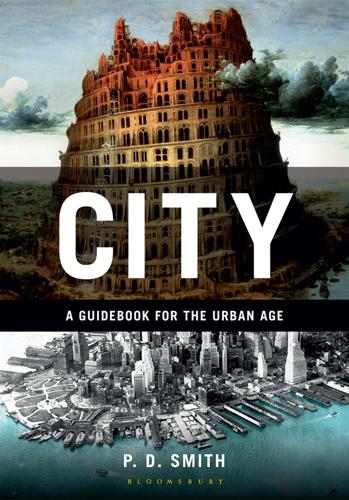
City: A Guidebook for the Urban Age
by
P. D. Smith
Published 19 Jun 2012
Although some cities provide surfaces for graffiti (‘permission graf’), generally it is illegal, a crime against property. In 1972, New York Mayor John Lindsay declared war on graf. In the following year he spent $10 million combating graffiti. But for some people, graf was more than mere vandalism. In 1974, Jon Naar and Norman Mailer’s seminal book The Faith of Graffiti was published. Mailer interviewed graf writers like Japan 1 and Cay 161 (tags included a nickname and the street number of writers).40 At this time, graf was in a transitional phase between tagging and ‘piecing’ (a tag outlined in a different colour, derived from ‘masterpiece’).
…
Their vivid primary colours – the hues of the body paint used by Brazil’s indigenous people – burn with a fierce brightness in the concrete jungle of São Paulo.45 The Faith of Graffiti In 1973, Jon Naar was commissioned to photograph New York graffiti for The Faith of Graffiti, written by Norman Mailer. Naar was surprised to find that the first graf writers he met were children of nine to twelve years old. But, as he points out, ‘they were, of course, New York children, wise beyond their years in their knowledge of the ways of the city’s streets, subways, and public places’. In two weeks he took over three thousand Kodachromes, of which just thirty-nine were used in the book.
…
Kenworthy, ‘200,000 March for Civil Rights in Orderly Washington Rally’, New York Times (29 August 1963), 1; cited in Simon Hall, ‘Marching on Washington: The Civil Rights and Anti-War Movements of the 1960s’, in Matthias Reiss, ed., The Street as Stage: Protest Marches and Public Rallies since the Nineteenth Century (Oxford: OUP, 2007), 215. 53. Norman Mailer, The Armies of the Night: History as a Novel, the Novel as History (New York: 1994), 119–20, 122–3; cited by Hall, ‘Marching on Washington’, in Reiss (2007), 225. 54. George Orwell, The Road to Wigan Pier (San Diego; n.d.), 86–7; cited in Matthias Reiss, ‘Marching on the Capital: National Protest Marches of the British Unemployed in the 1920s and 1930s’, in Reiss (2007), 168; on the Jarrow march, see ibid., 149. 55.

The Rough Guide to New York City
by
Rough Guides
Published 21 May 2018
Much to the chagrin of locals, you’ll probably see small groups of excited fans taking photos at 66 Perry St, between Bleecker and West 4th Street, used as the exterior of Carrie’s apartment in Sex and the City (“Carrie’s Stoop”), even though the show ended in 2004, while almost constant queues form outside lauded Magnolia Bakery at Bleecker and West 11th Street. The historic White Horse Tavern, over at West 11th Street and Hudson, was frequented by Norman Mailer and Hunter S. Thompson among others, and is where Dylan Thomas had his last drink – you’ll see a portrait of the poet and various memorabilia in the wood-panelled room named after him. The area has its rock connections, too; between 1971 and 1973, John Lennon and Yoko Ono lived in relative obscurity at 105 Bank St, a block from the White Horse at Greenwich Street, before moving uptown.
…
To explore, either walk around yourself or take one of the free tours, which give a good all-round picture of the building, taking in the Map Room and evocative Periodicals Room, with its stunning faux-wood ceiling and paintings of old New York. The undisputed highlight of the library, however, is the large, coffered 636-seat Reading Room on the third floor – recently restored to better show off the plaster rosettes of the ceiling, among other features. Authors Norman Mailer and E.L. Doctorow worked here, as did Leon Trotsky during his brief sojourn in New York just prior to the 1917 Russian Revolution. It was also here that Chester Carlson came up with the idea for the Xerox copier and Norbert Pearlroth searched for strange facts for his “Ripley’s Believe It or Not!”
…
Brooklyn Heights Brooklyn Heights is one of New York City’s most beautiful and historical neighbourhoods, and is the borough’s most coveted place to live. Downtown bankers and financiers began building brownstone townhouses here in the early nineteenth century, while writers flocked to the Heights after the subway opened in 1908; W.H. Auden, Carson McCullers, Truman Capote, Tennessee Williams, Norman Mailer and Paul and Jane Bowles (pre-Morocco) all lived in the neighbourhood. Although many one-family brownstones were divided into apartments during the 1960s and 1970s and the streets now feel fairly cosmopolitan – if a bit frumpier than you’d expect, given what it costs to live here – Brooklyn Heights today is in many ways not much different from how it was a hundred years ago.
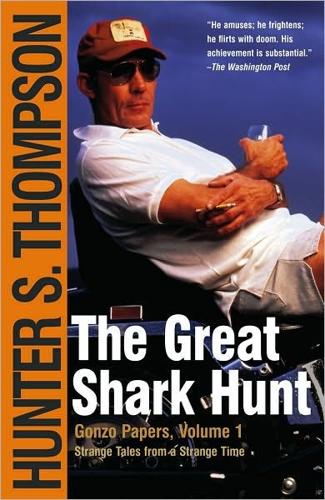
The Great Shark Hunt: Strange Tales From a Strange Time
by
Hunter S. Thompson
Published 6 Nov 2003
He is taking advantage of a money-scene that never existed before and might never work again -- at least not in his lifetime or ours, and maybe not even next year. On balance, it seems unfair to dismiss him as a witless greedhead, despite all the evidence. Somewhere behind that wistful programmed smile I suspect there is something akin to what Norman Mailer once called (speaking of James Jones) "an animal sense of who has the power." There is also a brooding contempt for the American system that has made him what he is. Killy doesn't understand this country; he doesn't even like it -- but there is no question in his mind about his own proper role in a scene that is making him rich.
…
Actually we lost by one (1) vote, but five of our absentee ballots didn't get here in time -- primarily because they were mailed (to places like Mexico and Nepal and Guatemala) five days before the election. We came very close to winning control of the town, and that was the crucial difference between our action in Aspen and, say, Norman Mailer's campaign in New York -- which was clearly doomed from the start. At the time of Edwards' campaign we were not conscious of any precedent. . . and even now, in calm retrospect, the only similar effort that comes to mind is Bob Scheer's 1966 ran for a US Congress seat in Berkeley/Oakland -- when he challenged liberal Jeffrey Cohelan and lost by something like two per cent of the vote.
…
The Final Bell One thing that Ernest Hemingway had always told me was that it was a bad idea to get to know an active fighter and become interested in his career. Sooner or later he was going to get hurt in the ring, and beaten, and it would be an almost unbearable thing to see if he were a friend. -- George Plimpton, Shadow Box Well. . . I wondered why George never showed up in Las Vegas. Muhammad Ali is a friend of Norman Mailer's, too, and also Budd Schulberg's; along with most of the other big-time boxing writers who skipped the Spinks fight. I was too strung out on the simple horror of spending two weeks in the Las Vegas Hilton to understand anything more complex than fear, hunger and daytime TV, at the time, to grasp my own lack of sensitivity.

Genius: The Life and Science of Richard Feynman
by
James Gleick
Published 1 Jan 1992
The useful lifetime of a new form or genre was never so short. Artists never before felt so much pressure to violate such young traditions. Meanwhile, before their eyes, the world has grown too vast and multifarious for the towering genius of the old kind. Artists struggle to keep their heads above the tide. Norman Mailer, publishing yet another novel doomed to fall short of ambitions formed in an earlier time, notices: “There are no large people any more. I’ve been studying Picasso lately and look at who his contemporaries were: Freud, Einstein.” He saw the change in his own lifetime without understanding it. (Few of those looking for genius understood where it had gone.)
…
E., 236, 238 lock picking, 15, 187–88, 297, 340 Lombroso, Cesare, 318 Long Island Rail Road, 20 Lorentz, Hendrik A., 72 Los Alamos, 3, 6, 8, 9, 49, 185–87, 190, 204–5, 216, 218 choice of site, 159–60 computing at, 164, 175–82, 190–91, 198, 201 postwar, 208–10, 212, 234 security, 161–62, 187, 191–92, 237 theoretical division, 165–66, 169, 172 Los Angeles Times, 437 Love in America (Cohn), 192 Lovingood, Judson A., 419 McAuliffe, Christa, 415 McCarran Immigration Act, 297 MacInnes, Duncan, 232 McLellan, William, 356 McMillin Theater (Columbia University), 252 McNair, Ronald, 415 McSherry, Rose, 263, 266 Magic City, The (Nesbit), 237 Magic Mountain, The (Mann), 134 Mailer, Norman, 326 Manhattan Project, see atomic bomb; Los Alamos Marchant calculator, see calculating machines Marshak, Robert, 256, 337–38, 411 Marshall Space Flight Center, 417, 426 Marx, Groucho, 9, 405 mass, 4–5, 99, 231, 239–40, 251, 262, 272, 283 Massachusetts Institute of Technology, 49, 51–91 curriculum, 66 cyclotron, 107 fraternities, 62–64, 69, 74, 117, 374 machine shops, 77–78 physics at, 53–56, 66–67, 79–80 Radiation Laboratory, 91, 136–38, 141, 158, 166, 209, 216, 234 senior theses, 82–83, 86 social life, 62–64 mathematics, 25, 47, 52, 83, 155, 235 in biology, 132 education, 399–401 Feynman and, 27, 32, 34–36, 102–5, 129, 182–83, 217–18 music and, 65 Nobel Prize and, 377 nonlinear, 164, 174, 178–81 partitions, 238 physics vs., 52–54, 56, 102–3, 145, 238 probability theory, 34, 166, 168–69, 197, 249 recreational, 34–36, 103–5 Maupertuis, Pierre-Louis Moreau de, 59, 61 Mautner, Leonard, 23, 34 Maxwell, James Clerk, 49, 101, 110–11, 118, 262, 368, 431 Maya, 292, 367 Mayhew, Nye, 62 Mayo Clinic, 195–96, 219 Mead, Carver, 434 Mead, Margaret, 287 medicine Feynman and, 125–27, 194–96, 402 scientific method in, 132–34, 194–96 tuberculosis, 133–35, 149–50 Melchior, Lauritz, 328 Melville, Herman, 319 Menge, Edward J. v.
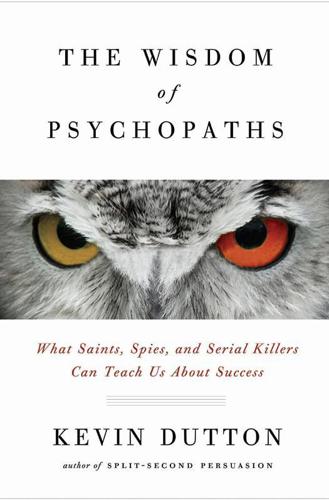
The Wisdom of Psychopaths: What Saints, Spies, and Serial Killers Can Teach Us About Success
by
Kevin Dutton
Published 15 Oct 2012
In it he seems to find nothing deeply meaningful or persistently stimulating, but only some transient and relatively petty pleasant caprices, a terribly repetitious series of minor frustrations, and ennui … Like many teenagers, saints [author’s emphasis], history-making statesmen, and other notable leaders or geniuses, he shows unrest: he wants to do something about the situation.” Harrington also quotes Norman Mailer: “[The psychopath] is an elite with the potential ruthlessness of an elite … His inner experience of the possibilities within death is his logic. So, too, for the existentialist … And the saint and the bullfighter and the lover.” The implications are intriguing. Is it possible, Harrington asks, that the saint and the psychopath somehow constitute two transcendental sides of the same existentialist coin?
…
Supersanity 1 Harrington cites some examples … See Alan Harrington, Psychopaths (New York: Simon & Schuster, 1972), 45. 2 “What he [the psychopath] believes he needs to protest against …” See Cleckley, The Mask of Sanity (St. Louis, MO: C. V. Mosby, 1941, 1976), 391, www.cassiopaea.org/cass/sanity_1.pdf. 3 “[The psychopath] is an elite with the potential ruthlessness of an elite …” See Norman Mailer, The White Negro, first published in Dissent (Fall 1957), www.learntoquestion.com/resources/database/archives/003327.html. 4 “whether we want to admit it or not …” See Harrington, Psychopaths, 233. 5 Saint Paul, as we know him now … For a detailed biography of Saint Paul and informed insights into his complex psychology, see A.
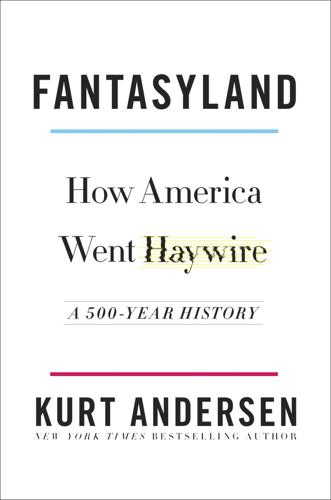
Fantasyland: How America Went Haywire: A 500-Year History
by
Kurt Andersen
Published 4 Sep 2017
Charles Reich was a former Supreme Court clerk now at Yale Law School, tenured at one of rationalism’s American headquarters. But hanging with the young people had led him to a midlife epiphany and apostasy. In 1966 he had started teaching a seminar called “The Individual in America,” for which he assigned fiction by Kesey and Norman Mailer. He was feeling it, and he decided to spend the next summer, the Summer of Love, in Berkeley. “Out here the atmosphere among the students is profoundly anti-intellectual,” he wrote from California to a friend, but “one can’t help admire some of their values….On Sundays the park is full of great sights and sounds…electric bands with such names as…Big Brother and the Holding Company, and The Grateful Dead.”
…
The anti-Establishment deliria came in both scary and blissful versions, as always—the way some Christians are premillennialists, counting on a violent and cleansing Armageddon now, while some are postmillennialists, imagining a peaceful redemption of the world. Both countercultural types were present at the March on the Pentagon to Confront the War Makers, the remarkable protests in Washington, D.C., in the fall of 1967, as the war approached its ferocious peak. In his book about those spectacles, The Armies of the Night, forty-four-year-old Norman Mailer wrote of “the generation [that] believed in LSD, in witches, in tribal knowledge, in orgy, in revolution,” how “now suddenly an entire generation of acid-heads seemed to have said goodbye to easy visions of heaven.” He described chants—“ ‘Out, demons, out—back to darkness, ye servants of Satan’ ”—and the circle of hundreds of protesters intending “to form a ring of exorcism sufficiently powerful to raise the Pentagon three hundred feet.”
…
His glamorous patrician wife was even younger, only thirty-one when she became First Lady, and one of his girlfriends was a real movie star, Marilyn Monroe, the ultimate sexual fantasy figure. But that projection of youth and extreme vitality was a fiction, a lie, a fantasy presented to the public: he was secretly very ill with osteoporosis and Addison’s disease, among others, and took painkillers, antianxiety drugs, sleeping pills, and stimulants. As JFK was about to be elected, Norman Mailer wrote that “America’s politics would now be also America’s favorite movie, America’s first soap opera, America’s best-seller.” Up until Kennedy, the wall between government and show business had been thick. His father had owned a movie studio, and not only did Jack pal around with Hollywood people, he agreed to go on stage at Madison Square Garden to receive the supersalacious “Happy Birthday, Mr.
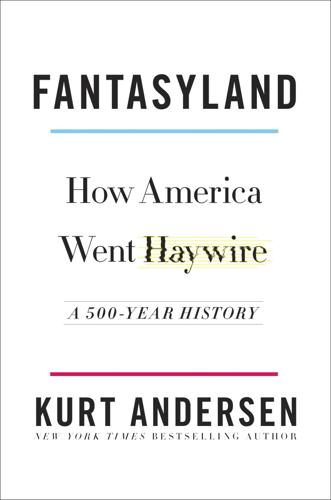
Fantasyland
by
Kurt Andersen
Published 5 Sep 2017
Charles Reich was a former Supreme Court clerk now at Yale Law School, tenured at one of rationalism’s American headquarters. But hanging with the young people had led him to a midlife epiphany and apostasy. In 1966 he had started teaching a seminar called “The Individual in America,” for which he assigned fiction by Kesey and Norman Mailer. He was feeling it, and he decided to spend the next summer, the Summer of Love, in Berkeley. “Out here the atmosphere among the students is profoundly anti-intellectual,” he wrote from California to a friend, but “one can’t help admire some of their values….On Sundays the park is full of great sights and sounds…electric bands with such names as…Big Brother and the Holding Company, and The Grateful Dead.”
…
The anti-Establishment deliria came in both scary and blissful versions, as always—the way some Christians are premillennialists, counting on a violent and cleansing Armageddon now, while some are postmillennialists, imagining a peaceful redemption of the world. Both countercultural types were present at the March on the Pentagon to Confront the War Makers, the remarkable protests in Washington, D.C., in the fall of 1967, as the war approached its ferocious peak. In his book about those spectacles, The Armies of the Night, forty-four-year-old Norman Mailer wrote of “the generation [that] believed in LSD, in witches, in tribal knowledge, in orgy, in revolution,” how “now suddenly an entire generation of acid-heads seemed to have said goodbye to easy visions of heaven.” He described chants—“ ‘Out, demons, out—back to darkness, ye servants of Satan’ ”—and the circle of hundreds of protesters intending “to form a ring of exorcism sufficiently powerful to raise the Pentagon three hundred feet.”
…
His glamorous patrician wife was even younger, only thirty-one when she became First Lady, and one of his girlfriends was a real movie star, Marilyn Monroe, the ultimate sexual fantasy figure. But that projection of youth and extreme vitality was a fiction, a lie, a fantasy presented to the public: he was secretly very ill with osteoporosis and Addison’s disease, among others, and took painkillers, antianxiety drugs, sleeping pills, and stimulants. As JFK was about to be elected, Norman Mailer wrote that “America’s politics would now be also America’s favorite movie, America’s first soap opera, America’s best-seller.” Up until Kennedy, the wall between government and show business had been thick. His father had owned a movie studio, and not only did Jack pal around with Hollywood people, he agreed to go on stage at Madison Square Garden to receive the supersalacious “Happy Birthday, Mr.
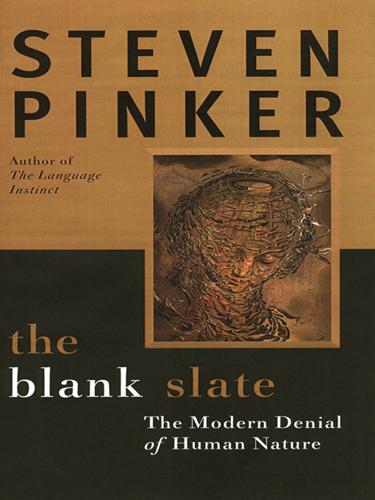
The Blank Slate: The Modern Denial of Human Nature
by
Steven Pinker
Published 1 Jan 2002
The possibility that some individuals are born with a weak conscience runs squarely against the doctrine of the Noble Savage. It calls to mind the old-fashioned notions of born criminals and bad seeds, and it was blotted out by twentieth-century intellectuals and replaced with the belief that all wrongdoers are victims of poverty or bad parenting. In the late 1970s Norman Mailer received a letter from a prisoner named Jack Henry Abbott, who had spent most of his life behind bars for crimes ranging from passing bad checks to killing a fellow prisoner. Mailer was writing a book about the murderer Gary Gilmore, and Abbott offered to help him get into the mindset of a killer by sharing his prison diaries and his radical critique of the criminal justice system.
…
Lord of the Flies (Golding) Lorenz, Konrad Los Angeles Times Lott, John “Lottery in Babylon, The” (Borges) Loury, Glenn Love Canal Low, Bobbie Lowie, Robert Lubinski, David luck, life paths and Lutz, Catherine Lyell, Charles Lykken, David McCarthy, Joseph McClelland, James McClintock, Martha McElroy, Wendy McGinnis, John McGue, Matt McGuinness, Diane Machiavelli, Niccolò Machiavellian traits MacKinnon, Catharine McVeigh, Timothy Madison, James Maeterlinck, Maurice Mahabharata Mailer, Norman Mallon,Ron Malthus, Thomas Man and Aggression (Montagu) Mansfield, Harvey Man Who Came to Dinner, The Mao Zedong Mapplethorpe, Robert March of Folly, The: From Troy to Vietnam (Tuchman) Marcos, Ferdinand Marcus, Gary Margaret Mead and Samoa (Freeman) Marr, David Martindale, Colin Marx, Karl Marx Brothers Marxism Masters, Roger materialism Mating Mind, The (Miller) Matrix, The Mayr, Ernst Mazursky, Paul Mead, Margaret Mealey, Linda media: images in stereotypes in violence and Mehler, Barry Melamid, Alexander Melzack, Ronald memory Mencken, H.

Moonshot: The Inside Story of Mankind's Greatest Adventure
by
Dan Parry
Published 22 Jun 2009
One reporter asked Armstrong whether he believed the Moon would eventually become part of the civilised world; another wanted to know if he feared losing his private life after the mission. To a question about what he would be taking to the Moon, Neil wryly replied, 'If I had a choice, I would take more fuel.' After sitting through an array of arid answers, Norman Mailer wrote that Armstrong 'surrendered words about as happily as a hound allowed meat to be pulled out of his teeth'. While the reporters vainly searched for drops of emotion as if looking for water on the Moon, a few hundred yards away Gene Kranz and his team were beginning their final training session.
…
Crouch (eds), Apollo: Ten Years Since Tranquility Base, Smithsonian Institution Press, 1979 Dr James Hansen, FirstMan, The Life of Neil Armstrong, Simon & Schuster, 2005 David Harland, The First Men on the Moon, Praxis Publishing, 2007 Edwin P. Hoyt, The Space Dealers: A Hard Look at the Role of Business in the U.S. Space Effort, The John Day Co., 1971 Chris Kraft, Flight, My Life in Mission Control, Plume, 2002 Gene Kranz, Failure Is Not an Option, Berkley, 2000 Norman Mailer, Of a Fire on the Moon, Little, Brown, 1970 Stephanie Nolen, Promised the Moon: The Untold Story of the First Women in the Space Race, Penguin Canada, Toronto, 2002 Rod Pyle, Destination Moon, Carlton Publishing Group, 2005 David West Reynolds, Apollo, The Epic Journey to the Moon, Tehabi, 2002 Robert Seamans, Project Apollo, The Tough Decisions, NASA, 2005 David Shayler, Disasters and Accidents in Manned Spaceflight, Praxis, 2000 Deke Slayton, Deke!

The Rough Guide to New York City
by
Martin Dunford
Published 2 Jan 2009
Further west, you’ll probably see small groups of excited fans taking photos at 66 Perry St, between Bleecker and West 4th Street, used as the exterior of Carrie’s apartment in Sex and the City (“Carrie’s Stoop”), while almost constant lines form outside lauded Magnolia Bakery at Bleecker and West 11th St (see p.295). The historic White Horse Tavern, over at West 11th St and Hudson, was frequented by Norman Mailer and Hunter S. Thompson among others, and is where legend claims Dylan Thomas had his last drink (see p.346); Jack Kerouac rented an apartment opposite. Between 1971 and 1973, John Lennon and Yoko Ono lived in relative obscurity at 105 Bank St, a block from the White Horse at Greenwich Street, before moving uptown (see p.193). 9 CHE L SE A Chelsea | squat grid of renovated tenements, rowhouses, and warehouses, Chelsea lies west of Broadway between 14th and 30th streets, though most consider the area between 14th and 23rd streets to be the heart of the neighborhood.
…
To explore the library, either walk around yourself or take one of the free tours (Mon– Sat 11am and 2pm, Sun 2pm), which last an hour and give a good all-round picture of the building, including the Map Room, which reopened to the public in December 2005 after a $5m renovation project. Tours start at the information desk in Astor Hall (the main lobby). The highlight of the library is the large, coffered 636-seat Reading Room on the third floor. Authors Norman Mailer and E.L. Doctorow worked here, as did Leon Trotsky during his brief sojourn in New York just prior to the 1917 Russian Revolution. It was also here that Chester Carlson came up with the idea for the Xerox copier and Norbert Pearlroth searched for strange facts for his “Ripley’s Believe It or Not!”
…
The Brooklyn Historical Society (see p.224) 223 BROOKLY N | Downtown Brooklyn and around provides a very useful walking-tour map, also available at the Brooklyn Tourism and Visitors Center (see p.33). Downtown bankers and financiers began building brownstones here in the early nineteenth century, while writers flocked to the Heights after the subway opened in 1908; W.H. Auden, Carson McCullers, Truman Capote, Tennessee Williams, Norman Mailer, and Paul and Jane Bowles (pre-Morocco) all lived in the neighborhood. Although many single-family brownstones were divided into apartments during the 1960s and 1970s and the streets now feel fairly cosmopolitan – if a bit frumpier than you’d expect given what it costs to live here – Brooklyn Heights today is in many ways not much different from how it was a hundred years ago.

Polaroids From the Dead
by
Douglas Coupland
Published 1 Jan 1996
Been there; done that. In the end it seemed she was trying too hard to put a pleasant facade onto—nothingness. Her body had become a liability. She had become post-famous. She was first; maybe JFK was second; Elvis was third. Monroe, empty child of Los Angeles, blank screen, according to Norman Mailer, “free of history.” One local guidebook lists 23 separate addresses within Los Angeles where Monroe had lived since her birth. Monroe, not an accumulator by nature, lived in a blazing white, L-shaped red-tiled Spanish-style house furnished casually with junky, funky Mexicana furniture. It contains chunky pine tables, chairs and benches; serape blankets; “Hacienda” ’50s motel-type lamps, a small hi-fi in a suitcase with a folding chair next to it stacked with 331/3 records; a tri-level glass bar; a display wall surfaced in knotty pine.

My Misspent Youth: Essays
by
Meghan Daum
Published 2 Mar 2001
She has much to overcome. She must do her homework. She must try to get through at least some of the New York Times front section before turning to the Styles section. She must subtly manipulate her Jewish man into eating an occasional Cheez Whiz treat, into buying a Christmas tree. She must avoid being stabbed by Norman Mailer. She must avoid engaging women like Susan Sontag in philosophical debate—at this, as in arguments with any Barnard graduate, the shiksa will lose. The shiksa simply must know her place at the seder table. She must help clean up afterwards. She must try to stay sober. She must send the kids to Hebrew school as long as they also twirl the baton.
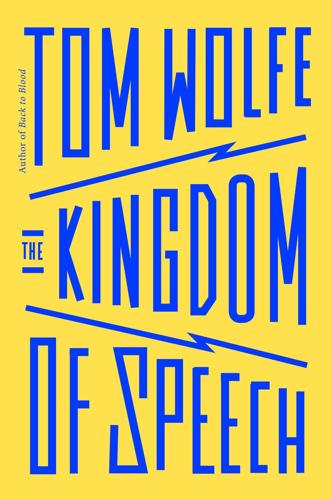
The Kingdom of Speech
by
Tom Wolfe
Published 30 Aug 2016
The pressure on figures like Chomsky, who was only thirty-eight, was intense. He did his part, left the building, and marched in the most publicized demonstration of all, the March on the Pentagon in 1967. He proved he was the real thing. He got himself arrested and wound up in the same cell with Norman Mailer,109 who was an “activist” of what was known as the Radical Chic variety. A Radical Chic protester got himself arrested in the late morning or early afternoon, in mild weather. He was booked and released in time to make it to the Electric Circus, that year’s New York nightspot of the century, and tell war stories.

Why Orwell Matters
by
Christopher Hitchens
Published 1 Jan 2002
Mary McCarthy, a great admirer of Orwell’s, once confessed, in her book The Writing on the Wall, that she had always secretly feared something. His unbending anti-Communism, she suspected, would have prevented him from joining her in opposing the American war in Vietnam. (In interviews at the time, both Noam Chomsky and Norman Mailer gave Orwell as authority for their militant anti-war positions.) I once had the honour of telling Ms McCarthy why I thought they were right and she was wrong about this; it seems obvious from the record that Orwell was for decolonization without conditions, and that he saw clearly the imperial-successor role that the United States was ambitious to play.
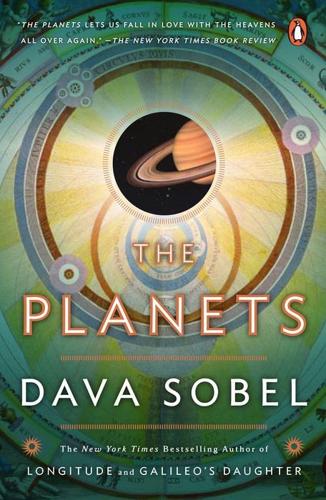
The Planets
by
Dava Sobel
Published 1 Jan 2005
Tucson: University of Arizona Press, 1991. ——. Comets: Creators and Destroyers. New York: Simon & Schuster, 1998. Lewis, C. S. Poems. New York: Harcourt Brace, 1964. Light, Michael. Full Moon. New York: Knopf, 1999. Lowell, Percival. Mars. London: Longmans, Green, 1896. (Elibron Classics Replica Edition.) Mailer, Norman. Of a fire on the moon. Boston: Little, Brown, 1969. Maor, Eli. June 8, 2004: Venus in Transit. Princeton: Princeton University Press, 2000. Miller, Anistatia R., and Jared M. Brown. The Complete Astrological Handook for the Twenty-first Century. New York: Schocken, 1999. Miner, Ellis D., and Randii R.

Last Best Hope: America in Crisis and Renewal
by
George Packer
Published 14 Jun 2021
Republicans emphasized individual enterprise, and Democrats emphasized social solidarity, eventually including Black people and abandoning the party’s commitment to Jim Crow. But the two parties were arguing over the same recognizable country. The lineup held until the late sixties—still within living memory. In another couple of decades that country will disappear, as World War II is vanishing now. In 1968, Norman Mailer described the political conventions of that apocalyptic year in his classic book Miami and the Siege of Chicago. In one scene, Richard Nixon greeted the Republican delegates in Miami Beach: “a parade of wives and children and men who owned hardware stores or were druggists, or first teller in the bank, proprietor of a haberdashery or principal of a small-town high school, local lawyer, retired doctor, widow on a tidy income, her minister and fellow-delegate, minor executives from minor corporations, men who owned their farms … out to pay homage to their own true candidate, the representative of their conservative orderly heart.”
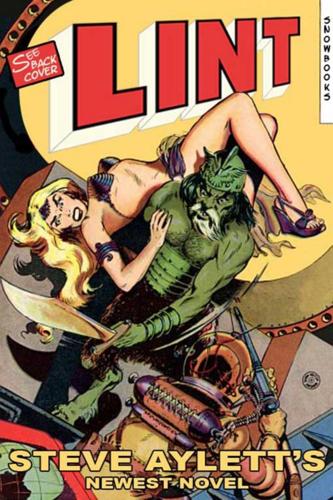
Lint
by
Steve Aylett
Published 2 May 2005
Patton 4, 93–95 Koryagina, Tatyana 60, 170 Kourbelas, Neil 105 KUBARK Counterintelligence Interrogation Manual 145 Kubrick, Stanley 95 Kutna Hora 184 Laffoley, Paul 197 “Last Beauty” 53 Lenin, Vladimir 29 “Lenny Burns His Bridges and Is Not Bailed Out” 35 “Lenny Turns Violent” 35 “Lenny Will Never Be More Than a Somewhat Gifted Barber” 35 Less, Jane 133 03.ch21-bm.lint 3/18/05 4:05 PM Page 217 LINT “Liberation Belly—an Odyssey into the Belly of the Belly” 34 Lievense, Corney 79 Limbaugh, Rush 108 Lincoln, Abraham 99 Lint: a Collection 126 Lint, Carol 6, 9, 14, 17, 19, 161–162 Lint, Grandpa 7 Lint, Howard 6–7 Lint, Jeff: and alligators 162 and ants 19, 45 and badgers 130 and bats 18 and bears 6, 19, 29, 30, 77, 81 and bees 92 and birds 17, 19, 46, 80, 143, 160 and blowflies 82 and buffalo 181, 191 and bunnies 83 and butterflies 171 and caterpillars 84 and cats 5, 39, 40, 56–61 and cattle 167 and chickens 9, 134, 160 and chimps 25, 92, fn. 3 and cows 10, 178, 181, 182 and crows 80 and crustaceans 63, 126, 143 and dinosaurs 3, 19 and dogs 7, 33, 41, 47, 57, 79, 83, 102, 125 and donkeys 78 and doves 29 and earwigs 66 and eels 11, 17, 44, 158 and elephants 4, 89–90 and fish 21, 61, 160, 181, 197 and fleas 114 and flies 58, 82, 152 and frogs 191 and giraffes 130, 160 and goats 134 and gorillas 19 and grasshoppers 18 and hedgehogs 51, 76, 188 and hens 23, 25, 35–36, 167 and hippos fn. 17 and hyenas 129 and insects 19, 51–53 and kangaroos 8 and leopards 51 and lions 160, 182 and lobsters 24, 41, 51, 175 and mice 135, 146, 138 and midges 150 and millipedes 151 and monkeys 69, 94, 139 and moths 79, 80 and newts 143, 151 and octopi 13, 161 and orangutans 41 and otters 93 and parrots 3, 52–53, 56 and penguins 6 and pigs 41, 83 and platypuses 164 and porpoises 166 and prairie dogs 50 and pythons 141 and rats 142 and sardines 18 and seals 42 and sharks 66, 83, 162, 196 217 03.ch21-bm.lint 218 3/18/05 4:05 PM Page 218 STEVE AYLETT and sheep 68 and slugs 168 and snails 23 and spiders 52, 80, 109, 140, 143, 150 and stick insects 141 and stinkbugs 160 and suction eels 158 and swans 15, 57 and swordfish 9, 181 and tigers 36, 104 and tortoises 124 and turtles 39 and whales 140 and worms 140 Lint’s magic bullet 99–102 Lint wedges 110–111, 148, 170 Lippy the Lion 59 “Lipstick and Shells” 127 Lissitsky, Ordal 28 “Look Out—Bellies” 34 “Look Out—Jellies” fn. 8 Looting of Heaven 8 Los Angeles Free Press 155 Los Angeles Times 25, 138, 167 Lowman, Robin 59 Lumumba, Patrice 102 Madero, Francisco 100 Made-Up Stories 29 Maggoty Stories 29, 30 “Magnificent Stallion Humiliation” 35 Mailer, Norman 107, fn. 13 Maine Catholic Record 25 Make a Wish Piranha 78 Malden, Karl 95 “Mannequin Heart” 58 Man Who Gave Birth to His Arse, The 5, 53, 107, 114, 180, 190, 195–198 “Man with the Stupid Arm, The” 23–24 “Marching Orders: Imposed Authority in the Catty 4” 59 Marginal Yarns 29 Marvel 161 “Mashed Drug Mutants” 126 Mask of Disapproval 45 Mauve Enforcer, The 136 Maximum Tentacles 29 McCarthy, Joe 29 McCollum, Arthur 12 McCurry, Mike 32 McGee, Thomas D’Arcy 99 McKinley, William 99 McLaren, Malcolm 144 Meandering Tales 29 Melody Maker 155 Menard, Pierre 8 Mental Stories 29 Merton, Thomas 142 “Microdestiny” 46 “Middle-distance Hate Decision” 16 Milwaukee Museum 47 “Mister Flabby Cheeks Shouts Trash” 190 Mitrione, Dan 168–169 Monstrous Poet 27, 189 Moorcock, Michael 109 Moorer, Thomas 59 Morgan, Cindy 163 Morrison, Grant 134 Mr.

All the Money in the World
by
Peter W. Bernstein
Published 17 Dec 2008
When Saul Steinberg’s twenty-five-year-old daughter38, Laura, married thirty-four-year-old Loews scion Jonathan Tisch in 1988,*17 they threw a $3 million wedding replete with searchlights shining out of the stained-glass windows of the Central Synagogue on Lexington Avenue in Manhattan; the Steinbergs’ antiques decorated the inside of the house of worship. After the service, guests assembled at the Metropolitan Museum of Art, where a reception was held at the Egyptian Temple of Dendur. Wedding guests such as Norman Mailer and Barbara Walters39 were entertained by a Brazilian band on stilts; the wedding cake soared ten feet into the air. The following year40, when Steinberg turned fifty, his third wife, Gayfryd (one of the most slavishly covered socialites of the 1980s and early 1990s), threw a million-dollar party at which models, one of them nude, posed as figures from Steinberg’s favorite old-master paintings.
…
Fortune, Apr. 3, 2000. 37. In the late nineteenth century: Vanderbilt, Fortune’s Children, p. 110. 38. When Saul Steinberg’s twenty-five-year-old daughter: Leslie Eaton, “Selling the Farm, Park Avenue Style; For a Pair of Socialites, It’s Out with the Ormolu,” New York Times, May 27, 2000. 39. Wedding guests such as Norman Mailer and Barbara Walters: Leslie Eaton, “The Steinbergs’ Fixer-Upper,” New York Observer, Apr. 1, 2002. Also Judith H. Dobrzynski, “Books: Lifestyles of the Rich and Shameless,” BusinessWeek, Nov. 13, 1989. 40. The following year: Joseph N. DiStefano, “Life Is Grand,” Philadelphia Inquirer, Dec. 16, 2001. 41.

Poking a Dead Frog: Conversations With Today's Top Comedy Writers
by
Mike Sacks
Published 23 Jun 2014
It got more macho as the evening progressed. I remember [the film director and screenwriter] James Toback trying to perform some push-ups and running out of steam. The restaurant’s owner, Elaine Kaufman, said, “Put a broad under him.” Is it true that, in the late sixties, you got into a fistfight with Norman Mailer? Yes, at a party he was holding at his town house in Brooklyn Heights. Mailer was looking for a fight. Instead of getting mad, I patted him on his head and said, “Now, now, Norman. Let’s behave.” We made our way to the street, and a crowd formed. We circled each other and we tussled a bit.
…
I wasn’t going to be somebody who’d read and was synthesizing everything ever written. I was too far behind already. But I’d find a writer I loved and read him over and over, and copy him, and then read his favorite writers and so on. I was surprised to learn that there are quite a few writers, like yourself, who also studied engineering: Thomas Pynchon, Kurt Vonnegut, and Norman Mailer, among others. It might just be that an unconventional background liberates you from knowing the proper way of doing a thing. If you train ten people in a method, and the eleventh comes along untrained, he’s going to be off step, and maybe—maybe—this will be to his benefit. So when I look at other writers my age, I am struck by how different my life was from theirs when we were in our twenties.
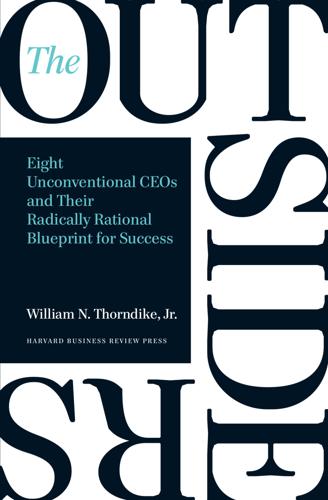
The Outsiders: Eight Unconventional CEOs and Their Radically Rational Blueprint for Success
by
William Thorndike
Published 14 Sep 2012
Cable television customers paid monthly and rarely disconnected, making the business highly quantifiable and allowing experienced executives to forecast customer growth and profitability with remarkable precision. This was a near-perfect fit with Malone’s background, which was unusually quantitative. To paraphrase Norman Mailer, it was a case of Superman coming to Supermarket. . . . Malone was born in 1941 in Milford, Connecticut. His father was a research engineer and his mother a former teacher. Malone idolized his father, who traveled five days a week visiting plants for General Electric. As a teenager, he exhibited early mechanical ability and made pocket money buying, refurbishing, and selling used radios.

War Is a Force That Gives Us Meaning
by
Chris Hedges
Published 31 Aug 2002
LeShan, Lawrence. The Psychology of War. New York: Helios, 1992. Levi, Primo. The Drowned and the Saved (I Sommersi e i Salvati). London: Abacus, 1991. ———. Survival in Auschwitz (Se questo è un uomo). New York: Collier, 1987. Loyd, Anthony. My War Gone By, I Miss It So. London: Doubleday, 1999. Mailer, Norman. The Naked and the Dead. London: Panther, 1984. Manchester, William. Goodbye Darkess: A Memoir of the Pacific War. New York: Dell, 1980. Manning, Frederic. The Middle Parts of Fortune. London: Penguin, 2000. Marshall, S. L. A. Men Against Fire. Norman: University of Oklahoma Press, 2000. Melville, Herman.

Having and Being Had
by
Eula Biss
Published 15 Jan 2020
She picked up a book from my coffee table, read some of it, and then tossed it back down, saying, Crazy bitch. It occurred to me only later, after both of us were done crying, that what my mother found crazy about Didion was her wealth. Her crimes are many, Didion. She’s thin, she’s cool, she’s rich. She doesn’t interrogate her privilege, though neither do the men of her moment—Norman Mailer, John McPhee, and Tom Wolfe in his white suit. I was primed for that argument with my mother, I was angry already, because I’d read a book review that suggested Didion neglected her child for her work. I was just back to work after having a child and the crazy bitch, I was sure, was me. There she is, Didion, on the verandah of the Royal Hawaiian Hotel in Honolulu, where she spends “an eccentric amount of time.”

On Breathing
by
Jamieson Webster
Published 20 Feb 2025
Lowen claimed that his orgasms became like power balls inside of him that shot into the stars, connecting with their energy source. The Reichian idea was to tap directly into soma and energy, to return us to our most primal sexual selves, thus bypassing any need for speaking—a far cry from say anything, say everything. For Lacan this fantasy is naïve at best, and violent at worst. Norman Mailer, a Reich devotee, put things a different way; this new world, he said, was “the land of fuck.” Reich’s orgone energy was suspected of being hidden in the body and, paradoxically, also in the air. So began the dream of the perfect orgasm, the relaxed and pliable body, breath freed from any tension, the just-wet-enough atmospheric conditions, and the obliteration of all enemies, domestic and alien.

The Vietnam War: An Intimate History
by
Geoffrey C. Ward
and
Ken Burns
Published 4 Sep 2017
“They have decided they are going to march on the amphitheater,” Jack Perkins of ABC News reported, “despite police determination to stop them short.” From the bedroom of their ranch in Stonewall, Texas, the Johnsons watch the chaos in Chicago unfold on television. Left to right: Luci Johnson Nugent, staffer Tom Johnson, unknown, Linda Johnson Robb, the president, and Lady Bird Johnson The novelist Norman Mailer was looking on from the nineteenth-floor of the hotel when “the police attacked with tear gas, with mace and with clubs. They attacked like a chain saw cutting into wood, the teeth of the saw the edge of their clubs, they attacked like a scythe through grass, lines of twenty and thirty policemen striking out in an arc, the clubs beating, demonstrators fleeing.
…
Lincoln Memorial, Washington, D.C., 8.1, 8.2, epl.1 Lindsay, John Loc Ninh, 5.1, 9.1, 10.1 Lodge, Henry Cabot, Jr., 2.1, 2.2, 2.3, 2.4, 2.5, 2.6, 2.7, 3.1, 4.1, 4.2, 4.3, 9.1 Logan, John A., 7.1 Logan Act (1799) Logevall, Fredrik Lo Khac Tam, itr.1, 3.1, 3.2, 3.3, 3.4, 10.1, epl.1 London, 1.1, 6.1 London Times Long An Province, 6.1, 7.1, 7.2 Long Binh, 6.1, 7.1, 7.2, 8.1, 8.2, 9.1 Longfellow, Henry Wadsworth, 8.1, 8.2 Long Island University Lon Nol Look Los Angeles, Calif., 5.1, 10.1, epl.1 Louisiana Louisiana State University Lowenstein, Allard, 5.1, 5.2, 5.3 Lowry, William Lozada, Carlos Luong Toan Ly Tong Ba MacArthur, Douglas, 4.1, 5.1 Macauley, Robert Mad Dogs (antiwar militants) Maddox, USS, 3.1, 3.2 Mailer, Norman Mai Ly Main Force (NLF), 2.1, 2.2, 2.3, 3.1, 3.2, 3.3, 3.4, 5.1, 6.1, 6.2, 7.1, 7.2, 7.3, 8.1, 8.2, 8.3, 8.4 casualties of in combined offensive, 5.1, 5.2 in Tet attack on Hue, 6.1, 6.2, 6.3, 6.4 in Tet attack on Saigon in Tet Offensive Ninth Division, 3.1, 4.1, 6.1 271st Regiment 272nd Regiment Malaya, 1.1, 2.1, 3.1 Malaysia, 3.1, 10.1, epl.1 Malcolm X Manchester, N.H., 5.1 Manfull, Melvin Mansfield, Mike, 1.1, 2.1, 3.1, 4.1, 6.1, 10.1 Mansfield Center Mao Zedong, 1.1, 1.2, 1.3, 1.4, 4.1, 8.1, 9.1 “March of Death,” 8.1, 8.2 March on the Pentagon, 5.1, 5.2, 5.3, 5.4, 5.5, 7.1 marijuana, 8.1, 8.2 Marine Amphibious Force Marine Corps Hymn, The Marine Reserves, U.S., 7.1, 7.2, 7.3 Marines, U.S., itr.1, itr.2, 3.1, 3.2, 3.3, 3.4, 3.5, 3.6, 3.7, 3.8, 4.1, 4.2, 4.3, 4.4, 4.5, 4.6, 4.7, 4.8, 4.9, 4.10, 4.11, 4.12, 5.1, 5.2, 5.3, 5.4, 5.5, 5.6, 5.7, 5.8, 5.9, 5.10, 5.11, 6.1, 6.2, 6.3, 6.4, 6.5, 6.6, 6.7, 6.8, 6.9, 6.10, 6.11, 6.12, 7.1, 7.2, 7.3, 7.4, 7.5, 8.1, 8.2, 8.3, 8.4, 9.1, 9.2, 10.1, 10.2, 10.3, 10.1, epl.1 casualties suffered by in Con Thien siege, 5.1, 5.2, 5.3 Danang landing of, 3.1, 3.2, 3.3, 3.4, 4.1, 10.1, 10.2, 10.3 Ninth Amphibious Brigade in Saigon evacuation, 10.1, 10.2, 10.3, 10.4, 10.5, 10.6, 10.7 Third Amphibious Force Third Regiment Twenty-sixth Regiment Vietnam buildup of see also specific divisions Marin Junior College Maritime Zone Marketplace Massacre, 5.1, 5.2, 5.3 Marlantes, Karl, itr.1, 5.1, 7.1, 7.2, 7.3, 7.4, 9.1, epl.1 Marm, Walter, Jr.
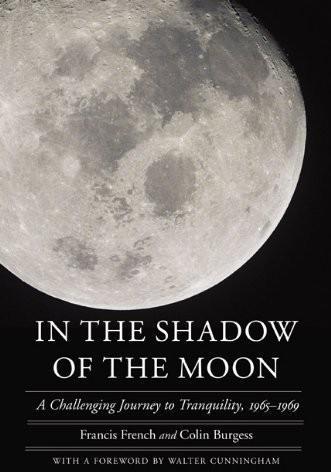
In the Shadow of the Moon: A Challenging Journey to Tranquility, 1965-1969
by
Francis French
,
Colin Burgess
and
Walter Cunningham
Published 1 Jun 2010
He’d later say that he became an astronaut through “one part shrewd logic and nine parts blind luck; . . . it’s a peculiar twist of circumstances that got me here.” Quiet and unassuming while in the astronaut corps, he’d prove to be the most talented writer of the astronauts after he left. Novelist Norman Mailer would sum him up in three words: “Collins was cool.” His coolheadedness would be an advantage for the mission ahead. For the first time, an American manned mission was not scheduled for an early morning launch. Instead, the crew would lift off just before dusk. As a result, Young and Collins found themselves under instructions from Deke Slayton to “keep partying” until at least two o’clock on their launch day.
…
Aldrin would write that “we seemed so dull that invention was sometimes necessary to attract readers and listeners.” With press interest in the first moon landing at fever pitch, reporters were hoping for a commander who could meet their preconceptions of the first person to walk on another world. Instead, they got Neil Armstrong. Pulitzer Prize–winning novelist Norman Mailer, very much an outsider to the world of the space program, decided to write a book about Apollo 11 at the time of the flight. He did his best to jump into nasa’s world, and what he saw puzzled him deeply. He attended press conferences where, despite the exciting subject matter, he observed an uneasy crew and a near-bored press.
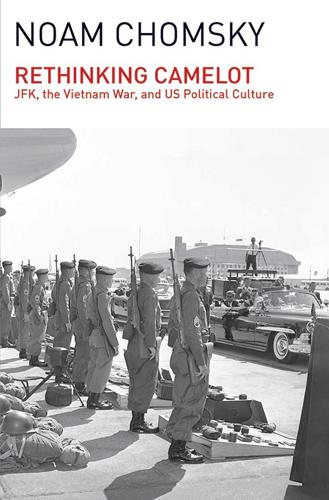
Rethinking Camelot
by
Noam Chomsky
Published 7 Apr 2015
The film, Stone informed the National Press Club, suggests that Kennedy was assassinated “because he was determined to withdraw from and never send combat troops to Vietnam” (that he was “withdrawing from Vietnam” and “had committed himself firmly...to oppose the entry of U.S. combat troops” has been “unequivocally” demonstrated, Stone added, citing Arthur Schlesinger and John Newman). At a Town Hall (New York) forum sponsored by the Nation, Norman Mailer told an enthusiastic audience that “If Kennedy was going to end the war in Vietnam, he had to be replaced. Lyndon Johnson was the man to do it.” Stone’s film presents the “overarching paradigm” for all further inquiry into the assassination, Mailer went on, though not the complete solution to the mysteries surrounding this “huge and hideous event, in which the gods warred and a god fell,” a cosmic tragedy that casts its pall over all subsequent history.
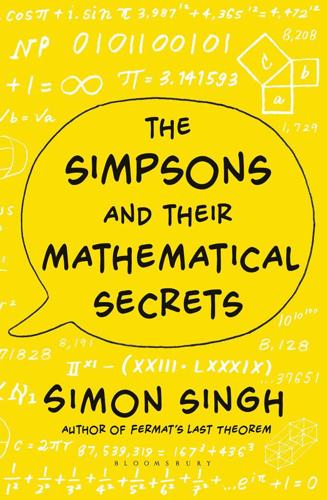
The Simpsons and Their Mathematical Secrets
by
Simon Singh
Published 29 Oct 2013
I start with the game, with the things that I see there and the things that people say there. And I ask: Is it true? Can you validate it? Can you measure it?” Year after year, James witnessed a growing readership for his Baseball Abstract, as like-minded number crunchers realized that they had discovered a guru. The novelist and journalist Norman Mailer became a fan, as did the baseball fanatic and actor David Lander, who played Squiggy on the TV show Laverne and Shirley. One of James’s youngest fans was Tim Long, who would go on to join the writing team of The Simpsons, write the script for “MoneyBART,” and feature a copy of one of James’s books alongside Lisa Simpson.
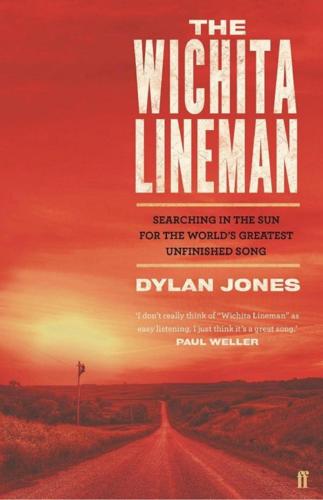
The Wichita Lineman: Searching in the Sun for the World's Greatest Unfinished Song
by
Dylan Jones
Published 29 Jul 2019
It really opened my eyes up.’ ‘One thing you must admit is that [Phoenix] has a beginning, a middle and an end,’ said Webb. ‘It tells a story with a certain clarity and pathos. And that would be my description of a songwriter’s job. And we don’t have much time to do it! We don’t have as much time as Norman Mailer had to write Ancient Evenings. It used to be two and a half minutes, then three, then after The Righteous Brothers’ “You’ve Lost That Lovin’ Feeling” they said we could have a bit more. Then of course Richard [Harris] and I came along and busted that all to hell with “MacArthur Park”.’ When Campbell was interviewed by the New York Times later in the year, he said, ‘A change has come over country music lately.
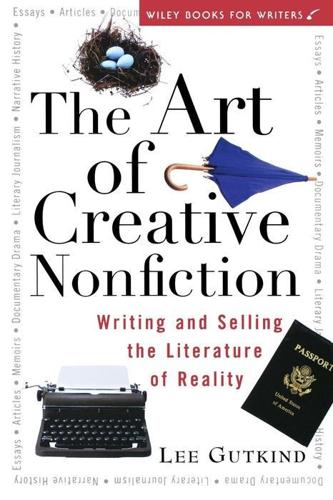
Art of Creative Nonfiction: Writing and Selling the Literature of Reality
by
Lee Gutkind
and
Purba
Published 1 Jan 1997
Bryan The Corpse Had a Familiar Face, Edna Buchanan In Cold Blood, Truman Capote The White Album, Joan Didion Pilgrim at Tinker Creek, Annie Dillard This House of Sky, Ivan Doig The Broken Cord, Michael Dorris The Studio, John Gregory Dunne The Great Plains, Ian Frasier Page 158 Appendix 4 The Last Shot, Darcy Frey Colored People, Henry Louis Gates The Shadow Man, Mary Gordon Stuck in Time, Lee Gutkind Blue Highways, William Least Heat Moon Dispatches, Michael Herr All Creatures Great and Small, James Herriot Hiroshima, John Hersey Far-Flung Hubbell, Sue Hubbell Liar's Club, Mary Karr House, Tracy Kidder Not Necessarily a Benign Procedure, Perri Klass There Are No Children Here, Alex Kotlowitz Cowboy, Jane Kramer Invasive Procedures, Mark Kramer The Balloon Lady and Other People I Know, Jeanne Marie Laskas Hunting the Whole Way Home, Sidney Lea Arctic Dreams, Barry Lopez Common Ground, J. Anthony Lukas The Executioner's Song, Norman Mailer The Journalist and the Murderer, Janet Malcolm The Snow Leopard, Peter Matthiessen Mornings on Horseback, David McCullough Fatal Vision, Joe McGinniss Page 159 Helpful Information Up in the Old Hotel, Joseph Mitchell The Lost Childhood, Yehuda Nir The Hottest Water in Chicago: Notes of a Native Daughter, Gayle Pemberton Zen and the Art of Motorcycle Maintenance, Robert M.

What Makes Narcissists Tick
by
Kathleen Krajco
Meet the Narcissist: A Wolf in Sheep's Clothing 189 Need I say it? He then tried to get into Cuba through Mexico but couldn't, because the Soviets wouldn't allow it for a long time, till just a few days before the assassination. He basically answered that it was too late now. He had never said word one against President Kennedy. In his book on Oswald, Norman Mailer writes: There is whole consensus that he saw JFK as, relatively speaking, a good President, and he liked him. What does Mailer conclude? Instead of questioning his assumptions in the light of this contradiction, Mailer twists logic to arrive at the conclusion that Oswald's motivation nonetheless was political.
…
A 15-year-old becomes a Marxist? And at 17 this Marxist joins the US Marines in 1956? Then he gets out on the excuse that he wants to go home to take care of the beloved mother he hates? But goes to the USSR instead? But comes back to the US? But tries to get into Cuba? What does Oswald have to do to show Norman Mailer that his politics are insincere? That he's a phony? That his act is just for show. All show, no substance. Yikes, some folks can be dense. And so, that's how far narcissists will go for a hit of what they're addicted to. It's a matter of © 2004 – 2007, Kathleen Krajco — all rights reserved worldwide.
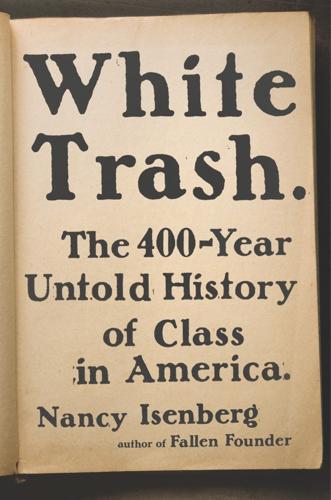
White Trash: The 400-Year Untold History of Class in America
by
Nancy Isenberg
Published 20 Jun 2016
Other political observers saw Carter as the “new roots” of a new South, because he was not a redneck; see James Wolcott, “Presidential Aesthetics: You’ve Seen the Movie (‘Nashville’), Now Meet the Candidate—Jimmy Carter,” Village Voice, January 19, 1976. 28. Roy Blount Jr., Crackers: This Whole Many Angled Thing of Jimmy, More Carters, Ominous Little Animals, Sad Singing Women, My Daddy and Me (New York: Knopf, 1980), 210, 221. Norman Mailer wrote about the campaign film shown at the Democratic convention that covered the parodies of Carter’s famous smile (such as Alfred E. Neuman on the cover of Mad Magazine); see Norman Mailer, “The Search for Carter,” New York Times Magazine, September 26, 1976, 20–21, 69–73, 88–90, esp. 69. And there was even an Associated Press news story on Carter’s dentist, see Fred Cormier, “That Famous Carter Grin Doesn’t Need Toothpaste,” Ocala Star-Banner, February 7, 1980. 29.

Frommer's Portable San Diego
by
Mark Hiss
Published 2 Nov 2007
Mon–Fri 10am–7pm; Sat 10am–6pm; Sun 11am–5pm. D.G. Wills Books This bookstore has tomes stacked to its wood rafters—if you’re looking from something scholarly, offbeat, or esoteric, this place is for you. Over the years this La Jolla treasure has Barnes & Noble 156 CHAPTER 7 . SHOPPING hosted readings by such powerhouses as Norman Mailer, Gore Vidal, Allen Ginsberg, and Maureen Dowd. 7461 Girard Ave., La Jolla. & 858/456-1800. www.dgwillsbooks.com. Mon–Sat 10am– 7pm; Sun 11am–6pm. Obelisk Bookstore This is San Diego’s main gay and lesbian bookstore. You’ll find every gay magazine there is, as well as gay-themed movies for rent on DVD and video.

The Sociopath Next Door
by
Martha Stout
Published 8 Feb 2005
Beginning with Eve and the serpent, our history books and our classic fiction are filled with tales of people who have been taken in and sometimes destroyed by the slick talk and magnetism of risk takers and evildoers—Dickie Greenleaf and the talented Mr. Ripley, Samson and Delilah, River City and Harold Hill, Trilby and Svengali, Norman Mailer and Jack Henry Abbott, Empress Alexandra and the seemingly immortal Rasputin. And from our own lives, we have memories of brushes with such people that send little cold chills up our spines. That is, if we are lucky we have had only brushes. The unfortunate must live with the indelible memories of outright personal catastrophes that occurred when they fell victim to the charm of the shameless.
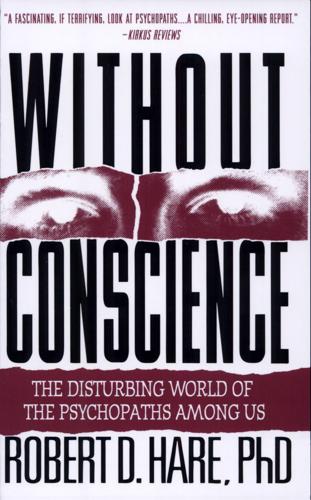
Without Conscience: The Disturbing World of the Psychopaths Among Us
by
Robert D. Hare
Published 1 Nov 1993
Psychopaths’ lack of remorse or guilt is associated with a remarkable ability to rationalize their behavior and to shrug off personal responsibility for actions that cause shock and disappointment to family, friends, associates, and others who have played by the rules. Usually they have handy excuses for their behavior, and in some cases they deny that it happened at all. JACK ABBOTT GAINED prominence in the news when writer Norman Mailer helped the inmate with the publication of his book, In the Belly of the Beast: Letters from Prison. Abbott gained not only fame from his association with the well-known novelist and political figure; he gained his freedom as well. Shortly after his parole, Abbott got into an altercation with a waiter in a New York restaurant who had asked Abbott to leave.

Dangerous Personalities: An FBI Profiler Shows You How to Identify and Protect Yourself From Harmful People
by
Joe Navarro
and
Toni Sciarra Poynter
Published 6 Oct 2014
This is one reason recidivism rates are so high; predators lie to get out of prison promising to behave, and then they go right back to committing crimes. Jack Henry Abbott, in prison for forgery and for stabbing a fellow inmate to death, became the darling of the writing glitterati when he wrote about his experiences being incarcerated (In the Belly of the Beast: Letters from Prison). He persuaded acclaimed writer Norman Mailer to argue for his early release. The parole board was convinced by Mailer’s pleadings and acquiesced. Six weeks into his parole, Abbott stabbed a man to death at a café because, as he later said, the man “stared” at him for too long. All those who had advocated for Abbott’s early release were shocked that someone so masterful with words could also kill.

Respectable: The Experience of Class
by
Lynsey Hanley
Published 20 Apr 2016
The Manics also quoted Arthur Scargill, the combative mineworkers’ leader, on the sleeve of one of their singles: ‘My father still reads the dictionary every day. He says that your life depends on your power to master words.’ They took this quote as an article of faith, echoing it in the improbable chorus to ‘Faster’, their 1994 Top 20 hit, which name-checked Norman Mailer, Sylvia Plath and Harold Pinter. If you were from a certain kind of world, to grow up in the eighties and nineties and succeed in learning how to spell represented another victory over dark forces. Any residual belief that pop music still represents a meritocratic route for talent to prevail can’t, alas, be sustained given the current landscape.

Asymmetry
by
Lisa Halliday
Published 6 Feb 2018
“Like snowflakes?” suggested Alice. “Like snowflakes,” he agreed. • • • From his stomach all the way up to his sternum ran a pink, zipperlike scar. Another scar bisected his leg from groin to ankle. Two more made a faint circumflex above his hip. And that was just the front. “Who did this to you?” “Norman Mailer.” While she was tugging up her tights, he got up to turn the Yankees game on. “Ooh, I love baseball,” said Alice. “Do you? Which team?” “The Red Sox. When I was little, my grandmother used to take me to Fenway every year.” “Is she still alive, your grandmother?” “Yep. Would you like her number?
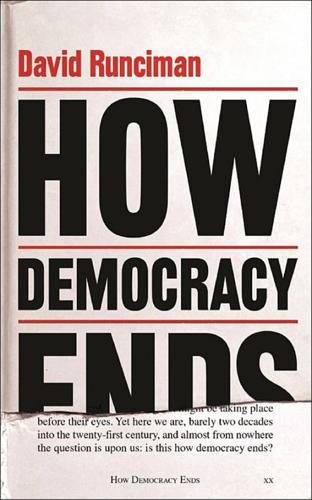
How Democracy Ends
by
David Runciman
Published 9 May 2018
Nozick makes his point with a list: Wittgenstein, Elizabeth Taylor, Bertrand Russell, Thomas Merton, Yogi Berra, Allen Ginsberg, Harry Wolfson, Thoreau, Casey Stengel, The Lubbavitcher Rebbe, Picasso, Moses, Einstein, Hugh Hefner, Socrates, Henry Ford, Lenny Bruce, Baba Ram Das, Gandhi, Sir Edmund Hillary, Raymond Lubitz, Buddha, Frank Sinatra, Columbus, Freud, Norman Mailer, Ayn Rand, Baron Rothschild, Ted Williams, Thomas Edison, H. L. Mencken, Thomas Jefferson, Ralph Ellison, Bobby Fischer, Emma Goldman, Peter Kropotkin, you and your parents: Is there really one kind of life that is right for all these people?82 Nozick thinks the mistake utopians make is to assume that their idealised society will work for everyone.
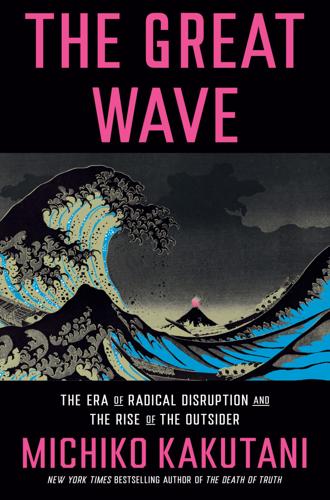
The Great Wave: The Era of Radical Disruption and the Rise of the Outsider
by
Michiko Kakutani
Published 20 Feb 2024
It was a state of affairs, he added with a touch of glee, that opened the way for the sort of narrative nonfiction that became known as “the New Journalism,” which borrowed storytelling methods from the old-fashioned novel (careful scene construction, lots of overheard dialogue, and pictorial descriptions with plenty of “status details”) and which was practiced by the likes of himself, Joan Didion, Norman Mailer, and Gay Talese. In a 1961 essay, Philip Roth wrote that there had been a “voluntary withdrawal of interest by the writer of fiction from some of the grander social and political phenomena of our times.” The reason, he explained, was that American reality had become “so fantastic, so weird and astonishing” that it could outdo the novelist’s “own meager imagination” on a nearly daily basis.
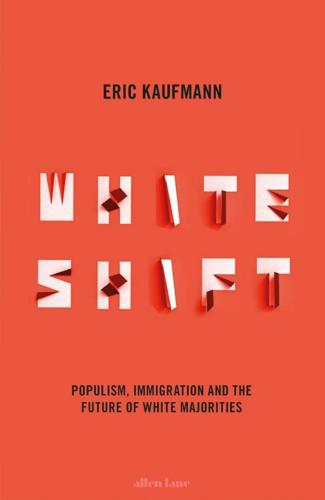
Whiteshift: Populism, Immigration and the Future of White Majorities
by
Eric Kaufmann
Published 24 Oct 2018
All associated the Anglo-Protestant majority with Prohibition, deemed WASP culture to be of no value, and accused the ethnic majority of suppressing more interesting and expressive ethnic groups. The Lost Generation’s anti-majority ethos pervaded the writing of 1950s ‘Beat Generation’ left-modernist writers like Norman Mailer and Jack Kerouac – who contrasted lively black jazz or Mexican culture with the ‘square’ puritanical whiteness of Middle America. As white ethnics assimilated, the despised majority shifted from WASPs to all whites. The multiculturalism of the 1960s fused the Liberal Progressive pluralist movement with the anti-white ethos of the Beat counterculture.
…
Beneath the surface, however, pluralism was making inroads into the national conversation. The Second World War helped bind Protestants, Catholics and Jews together in common cause. The Goodwill movement’s spirit of trans-religious accommodation in the 1920s and 1930s was reflected in wartime novels such as Norman Mailer’s The Naked and the Dead or James Jones’s From Here to Eternity, which depicted the nation’s inter-faith (though not racial) diversity. Pluralists also managed to reposition the Statue of Liberty from its original basis as an emblem of renewed Franco-American cooperation into a symbol of immigration and pluralism.

Guadalcanal Diary
by
Richard Tregaskis
Published 1 Mar 1943
Richard Tregaskis went along as a war correspondent for the first of those battles, on the island of Guadalcanal, and wrote an account—his bestselling Guadalcanal Diary—that stands today as one of the best of its genre. Downplaying his own extraordinary heroism, writing with great fairness and restraint, Tregaskis shaped America’s understanding of the war, and influenced every account that came after, fiction or nonfiction, from Norman Mailer’s The Naked and the Dead to the 1998 film version of James Jones’ The Thin Red Line. Tregaskis described for the first time the look and feel and smell of the Pacific War, the oppressive tropical heat and humidity that caused rashes and strange fungi to appear on men’s bodies, the terror of fighting in tall grass and in jungles against an often invisible enemy that burrowed deep in the earth and vowed a fight to the death, the odd transformation of paradisiacal Pacific landscapes into hell itself.
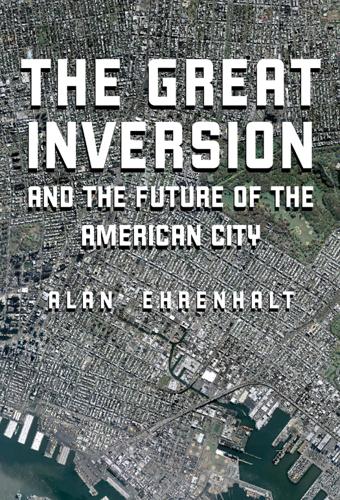
The Great Inversion and the Future of the American City
by
Alan Ehrenhalt
Published 23 Apr 2012
Most of the studios are in lofts and living rooms; most of the public galleries are open only on weekends. Very few artists make significant money selling anything, conventional or unconventional, to the outside world. It is very much a self-contained community. Some of its residents occasionally describe one another as hipsters, invoking 1950s terminology that would no doubt please Norman Mailer were he around to hear them. Who are these pioneers of Bushwick? To all appearances and personal testimony, they are not all (or even mostly) artists, but twenty-first-century products of the hippest liberal arts colleges—Wesleyan and Vassar, Bard and Sarah Lawrence. They live doubled up in small lofts and crammed into larger ones that sleep as many as eight or nine people.

How Capitalism Saved America: The Untold History of Our Country, From the Pilgrims to the Present
by
Thomas J. Dilorenzo
Published 9 Aug 2004
The journalist Jonathan Kozol, who has spent decades arguing that Americans should adopt the Cuban communists’ government-schooling model, stated that “each of my two visits to Cuba was a pilgrimage and an adventure.”27 Scholar Saul Landau declared that “Cuba is the first purposeful society that we have had in the Western Hemisphere for many years . . . where human beings are treated as human beings.”28 The American Marxist economist Paul Baran described communist Cuba as a “paradisiac garden” where “agricultural problems would melt away” with a “gigantic” economic surplus.29 Baran’s associate, fellow Marxist Paul Sweezy, was just as effusive, saying that you come away from Cuba’s communists “with your faith in the human race restored” because of their “purifying and liberating experiences.”30 The American writer Theodore Draper admitted that Cuban economic policy was “murderous, mendacious . . . brutal and arbitrary,” but it should still be admired because, after all, “it is still socialist.”31 Many other American intellectuals were of the same opinion. The anticapitalists’ blind devotion to Cuba has also meant embracing the totalitarian dictator Fidel Castro. PBS executive Frank Mankiewicz interviewed Castro for the PBS audience and also wrote a book heaping praise on the dictator.32 Norman Mailer swooned over Castro and his dictatorship, writing, “So Fidel Castro, I announce to the City of New York that you gave all of us . . . some sense that there were heroes in the world. . . . You were the first and greatest hero to appear in the world since the Second World War.”33 Many other American intellectuals described the brutal Cuban dictator as a Christ-like figure.

The Internet Is Not the Answer
by
Andrew Keen
Published 5 Jan 2015
So rather than accurately capturing the world’s moments in all their colorful complexity, Instagram—“the highest achievement in Internet voyeurism,” according to Alex Williams, and “the app built to make you covet your neighbor’s life,”14 as Prickett puts it—is actually creating what Williams, citing the title of a 1959 work by Norman Mailer, calls “Advertisements for Myself.”15 “Advertisements for Myself” have become the unavoidable medium and the message of what Sequoia Capital chairman Michael Moritz calls the personal revolution. It’s a world that, Tim Wu caustically notes, is defined by a “race” among social media users to build the most ubiquitous personal brands.16 Online narcissism is therefore, as Keith Campbell, the coauthor of the bestselling The Narcissism Epidemic, explains, a “logical outgrowth of DIY capitalism—the capitalism in which we all have our own “branding business” and we are our “own agent” and “marketing department”17 No wonder Time made “YOU” Person of the Year for 2006.
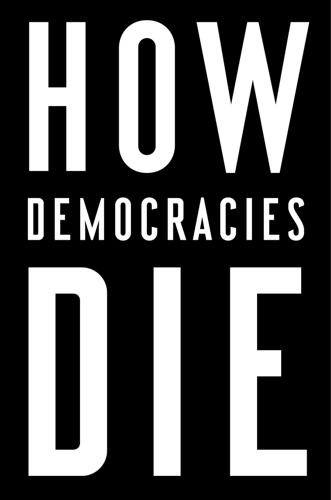
How Democracies Die
by
Steven Levitsky
and
Daniel Ziblatt
Published 16 Jan 2018
“racial purity”: Lynne Olson, Those Angry Days: Roosevelt, Lindbergh, and America’s Fight over World War II, 1931–1941 (New York: Random House, 2014), pp. 18–20, 72. His speeches drew large crowds: A. Scott Berg, Lindbergh (New York: G. P. Putnam’s Sons, 1998), p. 410. “Conventional wisdom”: Olson, Those Angry Days, p. 442. Idaho senator William Borah: Berg, Lindbergh, p. 398. “God might have withdrawn His blessing”: Quoted in Norman Mailer, Miami and the Siege of Chicago (New York: Random House, 1968), p. 7. “party leaders, union bosses, and other insiders”: Marty Cohen, David Karol, Hans Noel, and John Zaller, The Party Decides: Presidential Nominations Before and After Reform (Chicago: University of Chicago Press, 2008), p. 1.

Norman Foster: A Life in Architecture
by
Deyan Sudjic
Published 1 Sep 2010
And it was certainly Scully that set Foster off on his journey across America to see every Wright building that he could. That journey was what tilted Foster towards Wright, and distanced him a little from his previous regard for Le Corbusier. Scully is the man who once went head to head in an argument with Norman Mailer in the pages of the professional magazine Architectural Forum in defence of modernism, accusing the novelist of ‘lazy potboiling paragraphs’. Later he confessed to feeling defeated by Mailer’s depiction of the heroes of modern architecture leaving man ‘isolated in a landscape of empty psychosis’, a proposition which he felt unable to challenge.
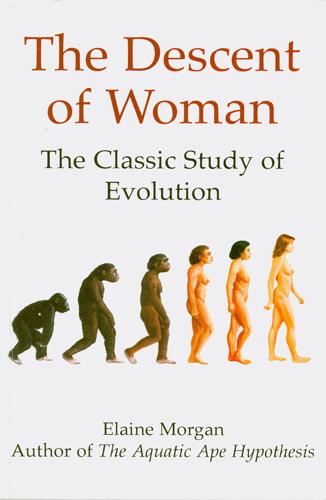
The Descent of Woman
by
Elaine Morgan
Published 1 Feb 2001
What it is saying to women seems to be something like: ‘This is what men really think of us. It’s pretty loathsome and insulting stuff. We do right to hate them.’ I doubt it. I doubt whether this kind of writing has anything to do with politics, or with anything at all in the real world. Without having met the gentleman I would hazard a bet that not even Mr. Norman Mailer actually moves around the United States committing brutal sexual attacks on casually encountered females. Surely this is dream stuff, male soap-opera, and the women in it are dolls, not people. And in their waking moments the men who write it must be aware of this truth and act on it; otherwise they would be certifiable.

Work! Consume! Die!
by
Frankie Boyle
Published 12 Oct 2011
The books were increasingly poorly researched and perfunctory, becoming obviously autobiographical tales about Stead and his wife. Dogs of the Soux Indians focused on two dogs living with nomadic Native Americans, but their living quarters closely resembled Stead’s New York apartment. The dogs were married, went to the library and argued about an affair the female dog had had with Norman Mailer. There were only infrequent mentions of Native American matters, largely factually incorrect, and ‘Sioux’ was spelt incorrectly. One of the reasons the books continued to sell was that, when placed together, the spine of the covers as a set formed a picture by Stead’s friend Andy Warhol. It became clear after Reich Snakes!
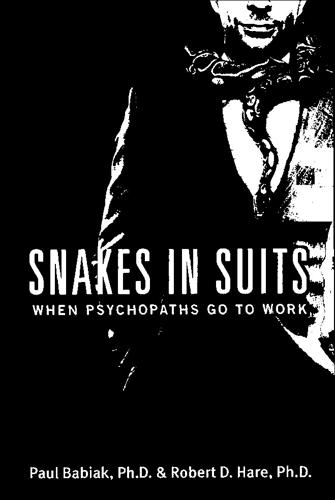
Snakes in Suits: When Psychopaths Go to Work
by
Dr. Paul Babiak
and
Dr. Robert Hare
Published 7 May 2007
Some may even take the time to learn to mimic emotions so they can better manipulate their victims. But they do so at a superficial level, and trained observers can sometimes tell the difference; the real gut-feel behind their playacting is not there. Consider these words by Jack Abbott, a psychopathic killer who was championed by Norman Mailer and released from prison, only to kill again: “There are emotions—a whole spectrum of them—that I know only through words, through reading and in my immature imagination. I can imagine I feel these emotions (know, therefore, what they are), but I do not.” Practice Makes Perfect Hare consulted with Nicole Kidman on the movie Malice.
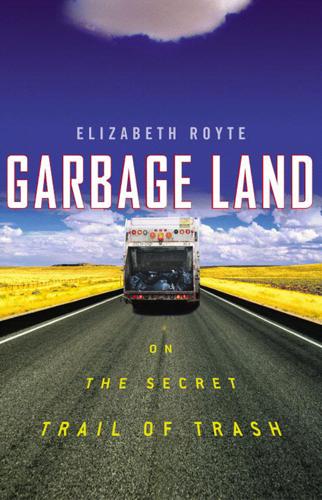
Garbage Land: On the Secret Trail of Trash
by
Elizabeth Royte
Published 1 Jan 2005
Weberman went on to found the National Institute of Garbology, or NIG, and to defend trash trolling as a tool of psychological investigation and character delineation. When he tired of Dylan’s garbage, he dove into Neil Simon’s (he found bagel scraps, lox, whitefish, and an infestation of ants), Gloria Vanderbilt’s (a Valium bottle), Tony Perkins’s (a tiny amount of marijuana), Norman Mailer’s (betting slips), and antiwar activist Bella Abzug’s (proof of investments in companies that made weapons). Looking through trash often says more about the detective than the discarder. When city officials in Portland, Oregon, decided in 2002 that it was legal to swipe trash in an investigation of a police officer, reporters from the Willamette Week decided to dive through the refuse of local officials.

Truths, Half Truths and Little White Lies
by
Nick Frost
Published 7 Oct 2015
I longed to sit in a chilly, carpetless garret eating a watery potato soup, itchy blanket slung across my shoulders, writing about lost love and how grim and pointless life was. Thank you, Comrade Solzhenitsyn. Copying Red’s example I trawled through the myriad junkshops and secondhand places in Edgware and Golders Green hoping to strike gold. What gold meant was a first edition hardback book. I think in all my time doing it I found three, one by Norman Mailer, one by Aldous Huxley; the third one, my prize possession at the time and more so now I’ve worked with Steven Spielberg, was the first edition novelisation of Close Encounters of the Third Kind. I loved that book. Still do. I love the film and I loved the soundtrack that fifteen-year-old me used to listen to at night to frighten myself.

Against Everything: Essays
by
Mark Greif
Published 5 Sep 2016
The hipster, however, was someone else already. Specifically, he was a black subcultural figure of the late forties, best anatomized by Anatole Broyard in an essay for the Partisan Review called “A Portrait of the Hipster.” A decade later, the hipster had evolved into a white subcultural figure. This hipster—and the reference here is to Norman Mailer’s essay “The White Negro” for Dissent in 1957—was explicitly defined by the desire of a white avant-garde to disaffiliate itself from whiteness, with its stain of Eisenhower, the bomb, and the corporation, and achieve the “cool” knowledge and exoticized energy, lust, and violence of black Americans.

Trick Mirror: Reflections on Self-Delusion
by
Jia Tolentino
Published 5 Aug 2019
When we get on the internet, the “#1 trending topic is still a debate about whether Rihanna is a Bad Role Model for Women,” and “the verdict for Rihanna is never favorable.” Valerie Solanas is remembered as a “bogeyman” of the “dirty, angry, fucked-up, thrown-away women of the world,” while violent Norman Mailer is remembered as a genius. (I would guess that plenty of women in my millennial demographic semi-ironically venerate Solanas, and know Mailer mainly as the misogynist who stabbed his wife.) Doyle is motivated, she writes, by “a life spent watching the most beautiful, lucky, wealthy, successful women in the world reduced to deformed idiot hags in the media, and battered back into silence and obscurity through the sheer force of public disdain.”

Cataloging the World: Paul Otlet and the Birth of the Information Age
by
Alex Wright
Published 6 Jun 2014
Other readers included Jeffrey Colvin, Liz Danzico, Janet Hadda, Laura Hoopes, Sangamithra Iyer, Michael Keane, Toni Logan, and Wayne Soini. For institutional support, I am grateful to the Mundaneum, the New York Public Library, the Royal Library of Belgium, the Library of Congress Manuscript Division, the Norman Mailer Writers Colony, and the Brooklyn Writers Space. Finally, my deepest thanks go to my family: to my wife, Maaike, for her love and forbearance; and to my sons, Colin and Elliot, who continually inspire me with their living examples of spontaneous wit and wisdom. 310 NOTES Introduction 1. 2. 3. 4. 5. 6. 7. 8.
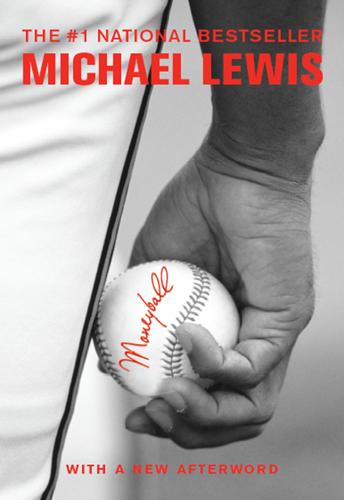
Moneyball
by
Michael Lewis
Published 1 Jan 2003
Research scientists at big companies, university professors of physics and economics and life sciences, professional statisticians, Wall Street analysts, bored lawyers, math wizards unable to hold down regular jobs—all these people were soon mailing James their ideas, criticisms, models, and questions. His readership must have been one of the strangest group of people ever assembled under one idea. Before he found a publisher, James had four readers he considered “celebrities.” They were: Norman Mailer Baseball writer Dan Okrent William Goldman, the screenwriter (Butch Cassidy and the Sundance Kid) The guy who played “Squiggy” on the TV sitcom Laverne & Shirley James’s readers were hard to classify because he was hard to classify. The sheer quantity of brain power that hurled itself voluntarily and quixotically into the search for new baseball knowledge was either exhilarating or depressing, depending on how you felt about baseball.
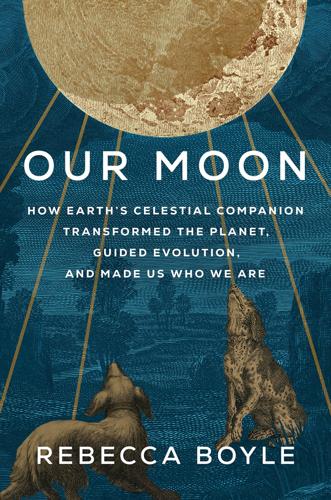
Our Moon: How Earth's Celestial Companion Transformed the Planet, Guided Evolution, and Made Us Who We Are
by
Rebecca Boyle
Published 16 Jan 2024
New York: Springer, 2015. https://doi.org/10.1007/978-1-4614-6141-8_40. MacPherson, Hector, Jr. “Kant as an Astronomical Thinker.” Popular Astronomy 21 (August 1, 1913): 424–27. https://ui.adsabs.harvard.edu/abs/1913PA..… 21..424M. Maher, Neil M. Apollo in the Age of Aquarius. Cambridge, Mass.: Harvard University Press, 2017. Mailer, Norman. Of a Fire on the Moon. Reprint ed. Random House, 2014. Makishima, Akio. Origins of the Earth, Moon, and Life : An Interdisciplinary Approach. Elsevier, 2017. Marshack, Alexander. The Roots of Civilization: The Cognitive Beginnings of Man’s First Art, Symbol and Notation. Rev. ed. Mount Kisco, N.Y.: Moyer Bell, 1991.

On the Road to Kandahar: Travels Through Conflict in the Islamic World
by
Jason Burke
Published 21 May 2025
‘Why do you think I am wearing my body armour, motherfucker? For the motherfucking fun? So shut the motherfuck up.’ And I thought: Do they really talk like this, or have they too been watching too many Vietnam War films? My reading material was, I hoped, appropriate to my surroundings. I had Norman Mailer’s The Naked and the Dead and a book by an American Second World War veteran turned English literature professor, Samuel Hynes, which examined how men seek to comprehend their own roles in war and, more specifically, in combat. In all areas of life, I read, humans, when confronted by new situations which demand new modes of behaviour, look for indications of how to behave from others, often their parents or peers, or, more collectively, from the norms embedded in a society’s culture, religious practices and arts.

Lunar Park
by
Bret Easton Ellis
Published 15 Mar 2005
I did no press because it was pointless—my voice would have been drowned out by all the indignant wailing. The book was accused of introducing serial killer chic to the nation. It was reviewed in the New York Times, three months before publication, under the headline “Don’t Buy This Book.” It was the subject of a 10,000-word essay by Norman Mailer in Vanity Fair (“the first novel in years to take on deep, dark, Dostoyevskian themes—how one wishes this writer was without talent!”). It was the object of scornful editorials, there were debates on CNN, there was a feminist boycott by the National Organization of Women and the obligatory death threats (a tour was canceled because of them).
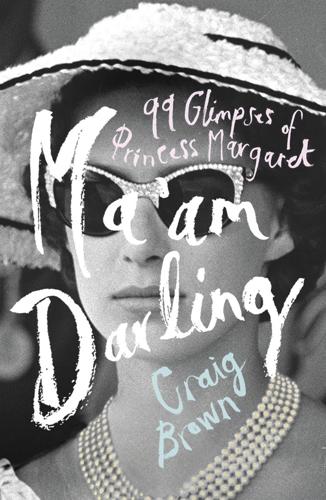
Ma’am Darling
by
Craig Brown
Published 28 Jul 2017
She had constructed it by cutting out headshots and sticking them onto an illustrated scene of debauchery in ancient Rome. Apart from Vidal himself, those depicted included Graham Greene, J.K. Galbraith, Lady Diana Cooper, Robert Kennedy and Jackie Kennedy, along with Vidal’s old rivals William F. Buckley (lying vanquished beneath Vidal’s left foot) and Norman Mailer (kneeling in obeisance). But in the most prominent position, standing on a staircase above a semi-naked Vidal, was Her Royal Highness the Princess Margaret, Countess of Snowdon. Vidal threw a fiftieth birthday party at Mark’s Club in Mayfair for fifty people (‘50 for 50,’ in the words of his partner Howard Austen).

World Cities and Nation States
by
Greg Clark
and
Tim Moonen
Published 19 Dec 2016
A return to city‐states? Alongside this economic divergence of world cities and nation states, commentators in this period also identified a resurgent political tension between leading cities and their national governments. An early example of this friction was visible in New York – mayoral candidate Norman Mailer proposed to secede in 1969, and President Gerald R. Ford later refused to bail out the City in the midst of its fiscal crisis in 1975. This was followed by the failure of President Jimmy Carter’s urban plan in 1978 (Smith, 2002). London also witnessed its fair share of political friction in the 1980s and central government eventually abolished the Greater London Council.

How to Murder Your Life: A Memoir
by
Cat Marnell
Published 30 Jan 2017
The walls were papered practically to the ceiling with fashion magazine tear sheets—“collaging” was my favorite thing to do when I was geeked up—and makeup (so, so much makeup) was everywhere. The ceramic box on my desk was full of glass stems, Q-tips, my glassine dope baggie collection; my bed was covered in Sharpies and nude Clarins lip liners and wafts of blond clip-in hair, plus books—Norman Mailer’s Marilyn Monroe biography and Ooga-Booga by Frederick Seidel—and feather coats and Tsubi jeans. I hardly ever slept there. When I did, I just pushed everything over. Tonight I thought I’d rest. I lit a candle for ambience, then I took stuff from the mattress and threw it to the floor until I found them: two pill bottles, tucked under a pillow.
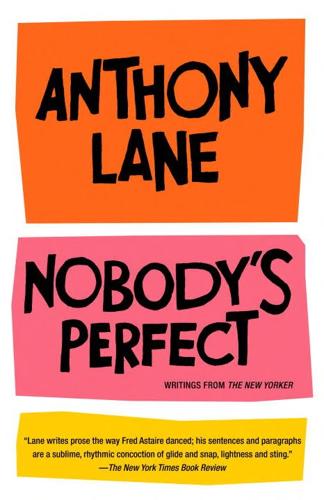
Nobody's Perfect: Writings From the New Yorker
by
Anthony Lane
Published 26 Aug 2002
The special effects started well before the movie did: as I opened the invitation, it gave out a furious roar that tailed off into an echoing, agonized moan. I listened to this for a while and seriously considered calling Random House and telling the editors to fit the same device to their new Norman Mailer anthology. Outside, in the evening sunlight, the luminaries swarmed; there were interviews with Mayor Giuliani and the Taco Bell Chihuahua. As we climbed to our seats, free popcorn was distributed in boxes that advertised Calvin Klein underwear, raising widespread fears among parents as to whether the humongous Godzilla would remain, you know, decent.
…
Legomakers everywhere have availed themselves of this opportunity. If you had to name one American, for instance, who clubbed together with a couple of friends in 1965 and spent more than three weeks building a futuristic seven-foot vertical city out of Lego, you might not immediately think of Norman Mailer. Thirty-three years later, however, the city still stands in Mailer’s living room in Brooklyn Heights, and its creator remains enthusiastic about his project. “It was very much opposed to Le Corbusier. I kept thinking of Mont-Saint-Michel,” he explains. “Each Lego brick represents an apartment.

House of God
by
Samuel Shem
Published 1 Jan 1978
Did that anti-Semite Henry Ford hold back? Did Spiro Agnew? Did Joe McCarthy or Joe DiMaggio—you know the Yankee Clipper is hocking instant coffee on TV these days—or Marilyn Monroe hold back from letting any subway grate in the world blow up her flimsy dress and whistle around her frigid genitalia? Did Norman Mailer ever, on anything? Did the CIA or the FB-fucking-I? The hell they did, Basch, the hell they did. You just gotta do it, flush it, and pick up the money you get for it." "For fraud?" "For dreaming the American Dream. In this case, the American Medical Dream." The Runt and Chuck sat down with us, and the Runt, like a TV serial that you couldn't turn off, rolled out the latest thrilling episode of Thuunnnnder Thighs: "She was her usual voracious self.
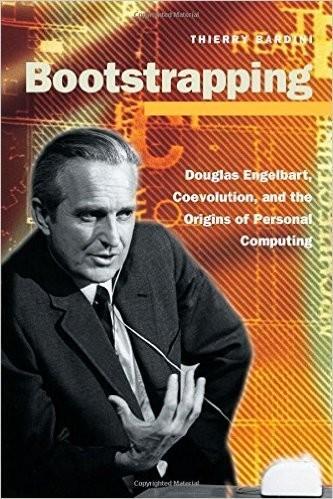
Bootstrapping: Douglas Engelbart, Coevolution, and the Origins of Personal Computing (Writing Science)
by
Thierry Bardini
Published 1 Dec 2000
In light of what eventually was to come of this crusade, however, it is the quasi-religious aspect of it that is worth emphasizing. The postwar era was as much an age of seekers and self-appointed seers as it was an age of com- placency and suburban idylls, as much the age of Jack Kerouac and Norman Mailer as the age of Ozzie and Harriet, an age of rebels in search of a cause. 9 It is in this perspective that one should read Engelbart's recollections of the way he organized his thoughts on his professional future: So then I started poking around, looking at the different kinds of crusades you could get on.
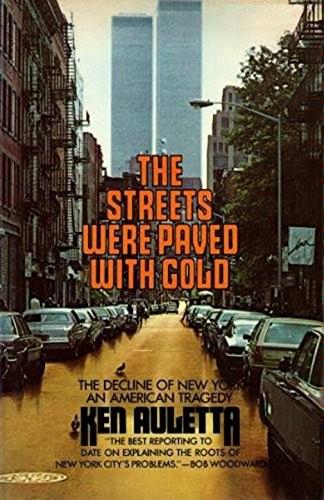
The Streets Were Paved With Gold
by
Ken Auletta
Published 14 Jul 1980
Essentially nonideological local questions—how to balance the budget, provide services, retain and attract jobs, educate kids, control crime—were transformed into moral issues. James Schuer’s 1969 mayoral candidacy began to unravel when the Voice’s Jack Newfield—a valuable muckraker but also a notorious labeler—branded Schuer a “conservative” for raising the “law and order” issue. Yet, that same year, writers Norman Mailer and Jimmy Breslin were treated kindly by the press when they proposed a frivolous but “liberal’ idea to make New York City the fifty-first state. Wagner, Lindsay, Beame and Rockefeller got away with their budget and borrowing tricks partly because they were trying to do the “right thing.” Candidates who talked about “the causes of crime” were good guys, even if they ignored the effects of crime.

Shoot for the Moon: The Space Race and the Extraordinary Voyage of Apollo 11
by
James Donovan
Published 12 Mar 2019
Boston: Houghton Mifflin, 1994. Lunney, Glynn. Highways into Space. N.p.: Privately published, 2014. ———, et al. From the Trench of Mission Control to the Craters of the Moon. Third ed. N.p.: Privately published, 2012. MacKinnon, Douglas, and Joseph Baldanza. Footprints. Washington, DC: Acropolis, 1989. Mailer, Norman. Of a Fire on the Moon. Boston: Little, Brown, 1968. McDonnell, Virginia B. Dee O’Hara: Astronauts’ Nurse. Edinburgh, Scotland: Rutledge, 1965. McDougall, Walter A. …The Heavens and the Earth: A Political History of the Space Age. New York: Basic Books, 1985. Mindell, David A. Digital Apollo: Human and Machine in Spaceflight.
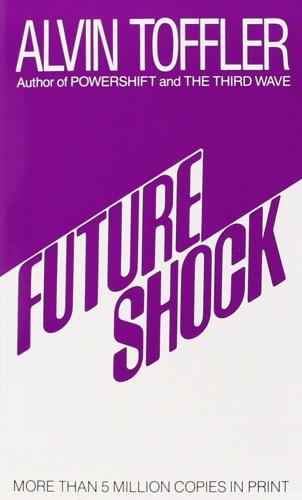
Future Shock
by
Alvin Toffler
Published 1 Jun 1984
What she meant was that Glenn's exploits had taken place too long ago to be of interest. (John H. Glenn's history-making flight occurred in February, 1962.) Today Glenn has receded from the foreground of public attention. In effect, his image has decayed. Twiggy, the Beatles, John Glenn, Billie Sol Estes, Bob Dylan, Jack Ruby, Norman Mailer, Eichmann, Jean-Paul Sartre, Georgi Malenkov, Jacqueline Kennedy—thousands of "personalities" parade across the stage of contemporary history. Real people, magnified and projected by the mass media, they are stored as images in the minds of millions of people who have never met them, never spoken to them, never seen them "in person."
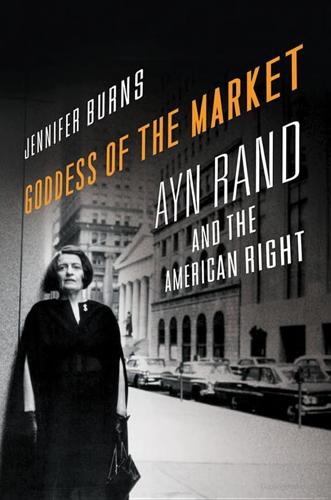
Goddess of the Market: Ayn Rand and the American Right
by
Jennifer Burns
Published 18 Oct 2009
These stories, which Rand never attempted to publish, were released by her estate in The Early Ayn Rand, ed. Leonard Peikoff (New York: Penguin, 1986). 31. Lynn Simross, “Studio Club Closes Door on Past,” Los Angeles Times, February 9, 1975, L1. 32. Journals, 38. Rand’s willingness to celebrate a criminal anticipates the work of later writers such as Norman Mailer, Truman Capote, and Cormac McCarthy, who all to some degree portray the murderer as a person of unusual strength, sensitivity, or both. A more immediate parallel for Rand would have been a book she knew well, Fyodor Dostoevsky’s Crime and Punishment, a serious novel of ideas built around the psychology of a murderer. 33.
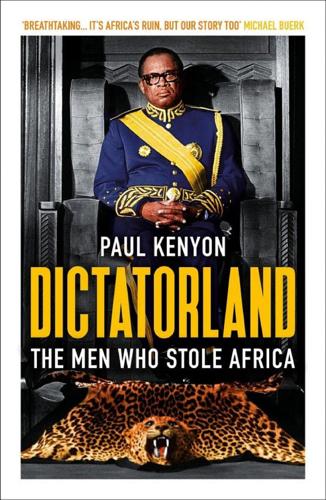
Dictatorland: The Men Who Stole Africa
by
Paul Kenyon
Published 1 Jan 2018
Pretty much anyone with an ‘official’ job – in other words a senior position in the party – could put a metal door on a room in their basement and call it a jail. Some commentators have suggested there were even cells beneath the 20th May Stadium where the Rumble in the Jungle was held and that, during the Ali–Foreman fight, hundreds were detained and tortured, their screams drowned out by the noise of the cheering crowd. The writer Norman Mailer, who covered the fight, talked of a thousand criminals held in detention pens beneath the ring, of whom a hundred were killed as a warning to the others. There has never been any proof, but the rumours reflect a broader fear about the savagery of Zaire’s informal prison system. The most dangerous places to be incarcerated, however, were those run by the security services, and that included ‘The Three Zeds’ prison where Joseph Nkoyi was being held.
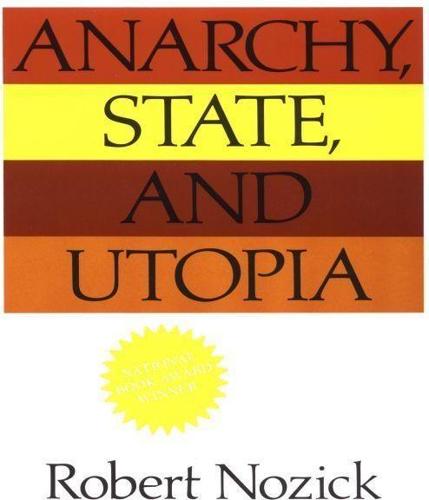
Anarchy State and Utopia
by
Robert Nozick
Published 15 Mar 1974
Wittgenstein, Elizabeth Taylor, Bertrand Russell, Thomas Merton, Yogi Berra, Allen Ginsburg, Harry Wolfson, Thoreau, Casey Stengel, The Lubavitcher Rebbe, Picasso, Moses, Einstein, Hugh Heffner, Socrates, Henry Ford, Lenny Bruce, Baba Ram Dass, Gandhi, Sir Edmund Hillary, Raymond Lubitz, Buddha, Frank Sinatra, Columbus, Freud, Norman Mailer, Ayn Rand, Baron Rothschild, Ted Williams, Thomas Edison, H. L. Mencken, Thomas Jefferson, Ralph Ellison, Bobby Fischer, Emma Goldman, Peter Kropotkin, you, and your parents. Is there really one kind of life which is best for each of these people? Imagine all of them living in any utopia you’ve ever seen described in detail.

Evil Geniuses: The Unmaking of America: A Recent History
by
Kurt Andersen
Published 14 Sep 2020
It was the same in the United States then as it is in Scandinavian countries today, the share of the nation’s wealth owned by nonwealthy Americans larger than it had been since measurements began. The system was working pretty well, and the national consensus about fairness endured. People took for granted all the progress we’d achieved. It really seemed irreversible. *1 Norman Mailer was a bit older, thirty-six as the decade began, but Tom Wolfe turned thirty in 1960, Joan Didion in 1964, and Hunter Thompson in 1967. *2 Which is why starting in the 1970s, for instance, the humorist and illustrator Bruce McCall could have a career painting panoramas of fantastical flying machines and infrastructure for the National Lampoon and then The New Yorker, grand futures as if depicted by overoptimists of the past, what he called “retro-futurism

The Sullivanians: Sex, Psychotherapy, and the Wild Life of an American Commune
by
Alexander Stille
Published 19 Jun 2023
There were superluxurious buildings like the Dakota (at Central Park West and Seventy-Second Street) and elegant brownstones, along with slumlike tenements and blocks with high levels of drugs and crime. It attracted such people as the philosopher Hannah Arendt and the novelists Isaac Bashevis Singer, Norman Mailer (before he moved to Brooklyn), and Philip Roth. The area was dense with intellectuals and psychiatrists: a common joke was that if you dropped something out of a window on the Upper West Side, you were likely to hit a shrink. One significant fact about Pearce that undoubtedly shaped her ideas regarding psychology and human development was that she suffered from debilitating bouts of postpartum depression.

The Rough Guide to Berlin
by
Rough Guides
Museum The Kennedys Auguststr. 11–13 • Tues–Fri 10am–6pm, Sat & Sun 11am–6pm • €7 • 030 20 65 35 70, thekennedys.de • Oranienburger Strasse Inspired by the US president’s 1963 visit to Berlin – then the front line of the Cold War – Museum The Kennedys is now a much broader homage to JFK. Kennedy understood, as no other politician before him, the power of photos and then television – partly thanks to his former-photojournalist wife Jackie. As Norman Mailer put it: “America’s politics … (became) … America’s favorite movie, America’s first soap opera, America’s bestseller.” Evidence of this carefully orchestrated media campaign (which included a ban on photos showing Kennedy wearing glasses) and resultant cult of personality abounds in the museum’s three hundred photos and magazine covers.

Frommer's San Diego 2011
by
Mark Hiss
Published 2 Jan 2007
. & 619/2961560. www.controversialbookstore.com. Bus: 2, 7, or 10. D.G.Wills Books This bookstore has tomes stacked to its wood rafters—if you’re looking for something scholarly, offbeat, or esoteric, this place is for you. Over the years this charmingly musty La Jolla treasure has hosted readings by such powerhouses as Norman Mailer, Gore Vidal, Allen Ginsberg, and Maureen Dowd. Open 217 12_626214-ch09.indd 21712_626214-ch09.indd 217 7/23/10 11:22 PM7/23/10 11:22 PM Monday to Saturday 10am to 7pm, Sunday 11am to 6pm. 7461 Girard Ave., La Jolla. & 858/456-1800. www.dgwillsbooks.com. Bus: 30. Obelisk Bookstore This is San Diego’s main gay and lesbian bookstore.
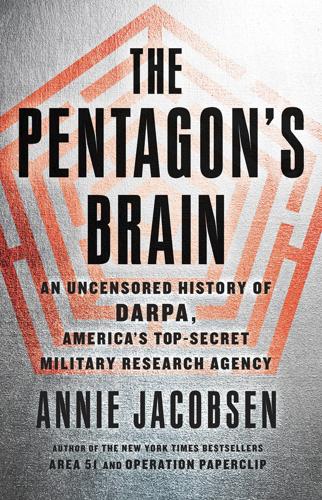
The Pentagon's Brain: An Uncensored History of DARPA, America's Top-Secret Military Research Agency
by
Annie Jacobsen
Published 14 Sep 2015
Martin Luther King Jr., made news around the world. The Mobe’s March on the Pentagon, in the fall of 1967, had turned violent when protesters clashed with U.S. marshals and heavily armed military police assigned to protect the building. Six hundred and eighty-two people were arrested, including the author Norman Mailer and two United Press International reporters. Now, after it was revealed that many university professors were discreetly working on classified weapons projects as defense scientists, the Mobe’s underground newspaper, the Student Mobilizer, began an investigation that culminated in a report called “Counterinsurgency Research on Campus, Exposed.”

And Here's the Kicker: Conversations with 21 Top Humor Writers on Their Craft
by
Mike Sacks
Published 8 Jul 2009
To go back to your question — in archery terms — you either hit the bull's-eye in a short story or it fails. I sometimes think there's an invisible fuse that runs through a good story and, at the end, it ignites. There is no margin for error. You can't take time out to admire the scenery, as you can with a novel. Norman Mailer called the short story “the jeweler's art,” which I think is apt. The short story is the stepchild of American literature. Publishers — and many writers — think of it as a step in the direction of a novel, not an end in itself. Sort of like saying the runner who excels in the l00-yard dash isn't much of an athlete.
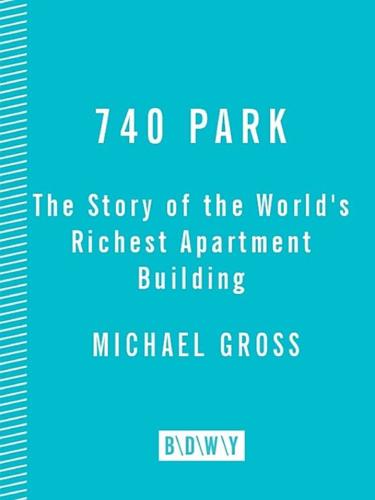
740 Park: The Story of the World's Richest Apartment Building
by
Michael Gross
Published 18 Dec 2007
Gayfryd had obsessed over every detail of the $3 million French Directoire-themed dinner for five hundred that followed in the Metropolitan Museum of Art, rented for the evening for $30,000. There were a hundred French roses for every guest and twelve thousand white tulips besides. Arnold Scaasi, Nouvelle Society’s dressmaker, whipped up the wedding gown and nine bridesmaids’ dresses, and the Kravises, the Mahoneys, Lord Weidenfeld, Norman Mailer, Barbara Walters, Donald Trump, and Vernon Jordan toasted the newlyweds with 1982 Roederer Cristal and 1973 Chateau Latour and dined on poached coho salmon with champagne aspic and a trio of veal, lamb, and chicken. Gayfryd called it “very much a family party.” There was another PEN gala in April 1989, and that August, Gayfryd gave Saul a $1 million fiftieth birthday party at his beach house in Quogue that featured tableaux vivants of his favorite old masters—one of them, a living nude in an oversized frame.

An Empire of Their Own: How the Jews Invented Hollywood
by
Neal Gabler
Published 17 Nov 2010
Jews and the Left: Genesis and Exodus. New York: Wiley, 1979. Liebman, Charles S. The Ambivalent Jew. Philadelphia: Jewish Publication Society, 1973. Magnin, Edgar F. “Leader and Personality.” Interview conducted by Malca Chall. Berkeley, CA: Regional Oral History Office, Bancroft Library, University of California, 1975. Mailer, Norman. The Deer Park. New York: G. P. Putnam’s Sons, 1955; New York: Perigee, 1981. Maland, Charles J. Frank Capra. Boston: Twayne Publishers, 1980. Marion, Frances. Off with Their Heads! New York: The Macmillan Co., 1972. Marx, Samuel. Mayer and Thalberg: The Make-Believe Saints. New York: Random House, 1975; New York: Warner Books, 1980.
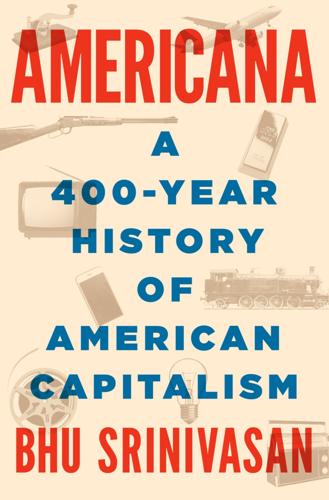
Americana: A 400-Year History of American Capitalism
by
Bhu Srinivasan
Published 25 Sep 2017
New York: Broadway Books, 2001. ———. Origins of the Crash. New York: Penguin, 2004. Lyons, Eugene. David Sarnoff: A Biography. New York: Harper & Row, 1966. Maas, Peter. The Valachi Papers. New York: Perennial, 2003. MacCambridge, Michael. America’s Game. New York: Anchor Books, 2005. Mailer, Norman. The Fight. New York: Random House, 2013. Mair, George. Inside HBO: The Billion Dollar War Between HBO, Hollywood and the Home Video Revolution. New York: Dodd, Mead, 1988. Major, Nettie Leitch. C. W. Post: The Hour and the Man. Washington DC: Press of Judd & Detweiler, 1963. Mancall, Peter C., ed.

Americana
by
Bhu Srinivasan
New York: Broadway Books, 2001. ———. Origins of the Crash. New York: Penguin, 2004. Lyons, Eugene. David Sarnoff: A Biography. New York: Harper & Row, 1966. Maas, Peter. The Valachi Papers. New York: Perennial, 2003. MacCambridge, Michael. America’s Game. New York: Anchor Books, 2005. Mailer, Norman. The Fight. New York: Random House, 2013. Mair, George. Inside HBO: The Billion Dollar War Between HBO, Hollywood and the Home Video Revolution. New York: Dodd, Mead, 1988. Major, Nettie Leitch. C. W. Post: The Hour and the Man. Washington DC: Press of Judd & Detweiler, 1963. Mancall, Peter C., ed.
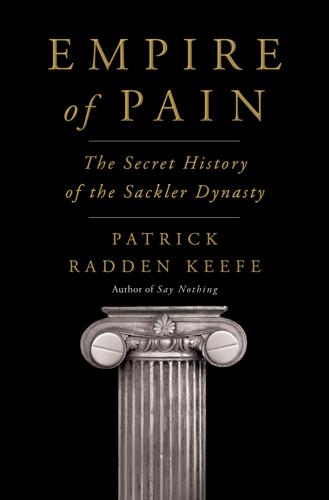
Empire of Pain: The Secret History of the Sackler Dynasty
by
Patrick Radden Keefe
Published 12 Apr 2021
It was an over-the-top production, one that fully embraced the new decadence of the 1980s. One of the dresses featured in the collection was rumored to sell for $100,000. After the show, three hundred guests were invited to stay for a dinner in the Sackler Wing. The actress Raquel Welch bantered with the novelist Norman Mailer. The dancer Mikhail Baryshnikov chatted with the seventeen-year-old model Brooke Shields. Muhammad Ali performed magic tricks as Valentino himself circulated, bronzed and grinning, in a tuxedo. The tables were adorned with white flowers and hundreds of votive candles, which cast flickering shadows on the walls of the Egyptian temple.

A Man on the Moon
by
Andrew Chaikin
Published 1 Jan 1994
.: Government Printing Office, 1982. Lewis, Richard S. Appointment on the Moon. New York: Ballantine, 1969. -. The Voyages of Apollo: The Exploration of the Moon. New York Times Book Company, 1974. MacKinnon, Douglas, and Joseph Baldanza. Footprints. Illustrated by Alan Bean. Washington, D.C.: Acropolis Books, 1989. Mailer, Norman. Of a Fire on the Moon. Boston: Little, Brown, 1970. Masursky, Harold, G. William Colton, and Farouk El-Baz, eds. Apollo Over the Moon: A View from Orbit. NASA SP-362. 1978. Murray, Charles, and Catherine Bly Cox. Apollo: The Race to the Moon. New York: Simon & Schuster, 1989. Mutch, Thomas A.
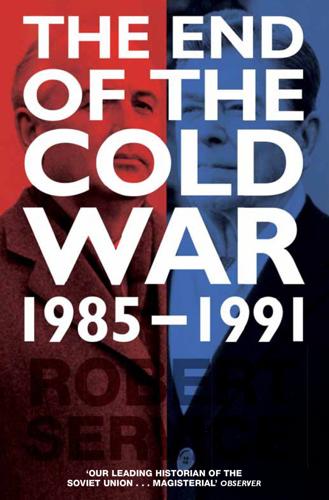
The End of the Cold War: 1985-1991
by
Robert Service
Published 7 Oct 2015
Pianist and General Secretary embraced at the end.87 Gorbachëv held his own reception at the Soviet embassy for ‘the American intelligentsia’ on another evening. Among the guests were hostile figures such as Henry Kissinger and William Fulbright. Also invited were actors, scientists, singers, artists and novelists who sympathized with his purposes: Robert De Niro, Paul Newman, Carl Sagan, John Denver, Yoko Ono, Norman Mailer and Joyce Carol Oates. Gorbachëv socialized with all of them, shaking hands and accepting hugs. Nobody needed to teach him how to work the room.88 American public figures became eager to win the trust of Soviet officials. Edward Teller, the veteran anti-Soviet scientist, made a proposal for research cooperation on ‘controlled fusion’ in nuclear physics.

Lonely Planet Morocco (Travel Guide)
by
Lonely Planet
,
Paul Clammer
and
Paula Hardy
Published 1 Jul 2014
His other works include Let It Come Down (1952), a thriller set in Tangier; The Spider’s House, set in 1950s Fez; and two excellent collections of travel tales: Their Heads Are Green (1963) and Points in Time (1982). A Distant Episode: the Selected Stories is a good compilation of Bowles’ short stories. There is a dark and nihilistic undercurrent to Bowles’ writing as fellow writer Norman Mailer describes: ‘Paul Bowles opened the world of Hip. He let in the murder, the drugs, the death of the Square…the call of the orgy, the end of civilization’. Other commentators have tried to link aspects of Bowles’ life to his writing. Bowles’ autobiography Without Stopping (1972; nicknamed ‘Without Telling’) sheds little light on these matters.

Lonely Planet Greek Islands
by
Lonely Planet
,
Alexis Averbuck
,
Michael S Clark
,
Des Hannigan
,
Victoria Kyriakopoulos
and
Korina Miller
Published 31 Mar 2012
It also has huge family rooms and can arrange airport transfers. A little further along, classically lined Hotel Porto Potha ( 22430 47321; portopotha@klm.forthnet.gr; d incl breakfast €45, apt €45; ) sits at an elevation and has comfortable rooms, gorgeous views, an inviting swimming pool and a very friendly owner who looks like Norman Mailer with a tan. At the left of the pier, Zorba’s ( 22430 48660; mains €3-8) is fiercely traditional and has great sea views. The owner fishes for the seafood himself, bringing up squid, octopus, tuna and swordfish. They also have three small but pleasant pink-walled rooms with pine furniture (doubles €30).

State of Emergency: The Way We Were
by
Dominic Sandbrook
Published 29 Sep 2010
Few people could have been surprised when Sean Connery slapped Jill St John in Diamonds are Forever (1971), yet even the most embittered chauvinist must have winced when Roger Moore, of all people, hit Maud Adams in the face not once but twice in The Man with the Golden Gun (1974).67 Perhaps mercifully, British culture had no real equivalent of Norman Mailer, the aggressively macho American novelist who transformed himself into virtually a full-time critic of women’s liberation as his literary powers waned. The nearest it came was probably the eternally disputatious Kingsley Amis, formerly a very keen lover of women (or ‘cocksman’, to use his own terminology), whose novels became increasingly acerbic in the late 1970s as his sexual potency declined and his second marriage began to crumble.

1,000 Places to See in the United States and Canada Before You Die, Updated Ed.
by
Patricia Schultz
Published 13 May 2007
The modern on-premises spa is P-town’s best, with a wide range of options from deep-tissue massage or gentle craniosacral therapy to a Reiki energy-balancing treatment. The New Provincetown Players are the resident troupe at the venerable Provincetown Theater. When the artists began arriving in the early decades of the 20th century, so did playwrights and authors, whose ranks over time included such luminaries as Eugene O’Neill, Tennessee Williams, Norman Mailer, and E. E. Cummings. A busy cultural life is still one of P-town’s biggest summer draws, with drama, dance, cabaret, concerts, and films that fill out the schedule at the theater. MacMillan Wharf is the berth for much of P-town’s fishing and whale-watching fleet. Art’s Dune Tours take visitors on excursions around Provincetown’s sandy surroundings, pointing out the battered “dune shacks” that for decades have served as retreats for the artists who came for the end-of-the-world atmosphere and special light; the shacks are now National Historic Landmarks.